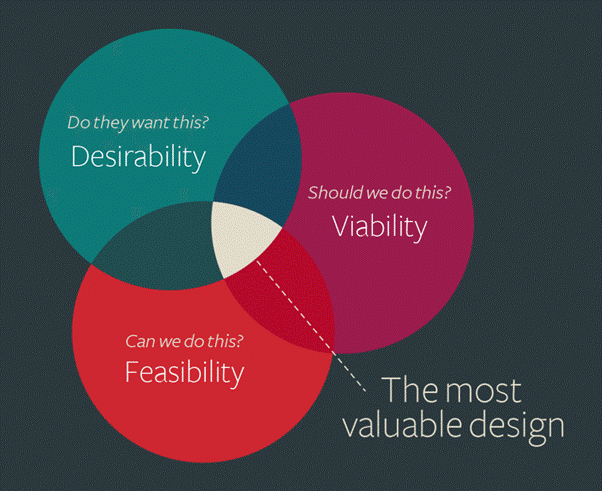Customer Success – Workshop 1 (Customer Needs)
The Appleton Greene Corporate Training Program (CTP) for Customer Success is provided by Mr. Adams Certified Learning Provider (CLP). Program Specifications: Monthly cost USD$2,500.00; Monthly Workshops 6 hours; Monthly Support 4 hours; Program Duration 12 months; Program orders subject to ongoing availability.
If you would like to view the Client Information Hub (CIH) for this program, please Click Here
Learning Provider Profile
Mr. Adams is an author, trainer, and consultant, specializing in helping technology companies deliver measurable business value through Customer Success Management best practices. Adams has over 25 years’ experience of working in the IT industry, including founding his own SaaS (software-as-a-service) business which he ran for six years before selling it in 2012.
Adams has delivered training and consultancy in over thirty countries across four continents. His courses have been attended by over 120,000 students worldwide, and his custom development work includes Cisco Systems’ Cisco Certified Customer Success Manager global certification program.
His book ‘Practical Customer Success Management: A Best Practice Framework for Rapid Generation of Customer Success ’ was published in 2019 and is available from Amazon and all other book retailers.
Adams, as Founder and CEO, provides high quality training for Customer Success Management best practice. Adams has won numerous awards for his achievements in his field, and acted as a judge for the annual Customer Success Excellence Awards in EMEA in 2022 and the Americas in 2023.
MOST Analysis
Mission Statement
Our first module introduces participants to the fundamental shifts in requirements and consumption patterns in technology acquisition and utilization by modern businesses. It explains how the need for agility to keep pace with change and the desire for reduced risk as well as improved cash flow from staged payment plans has driven the “as-a-service” consumption model. It describes the requirements of potential customers for technology suppliers to go beyond selling high quality products and services and instead to focus on selling outcomes. It provides participants with the tools to determine these impacts on their own business and invites them to consider the relevancy of these shifts to themselves and their customers and prospects.
Objectives
01. Traditional Business Consumption of Technology: departmental SWOT analysis; strategy research & development. Time Allocated: 1 Month
02. Modern Business and Technology Consumption – The Need for Agility: departmental SWOT analysis; strategy research & development. Time Allocated: 1 Month
03. Modern Business and Technology Consumption – The New Sales Cycle: departmental SWOT analysis; strategy research & development. Time Allocated: 1 Month
04. Innovation: departmental SWOT analysis; strategy research & development. Time Allocated: 1 Month
05. An Architectural Approach to Technology: departmental SWOT analysis; strategy research & development. Time Allocated: 1 Month
06. Vision and Mission: departmental SWOT analysis; strategy research & development. Time Allocated: 1 Month
07. The Business Model Canvas: departmental SWOT analysis; strategy research & development. 1 Month
08. Customer Requirement – The Challenge: departmental SWOT analysis; strategy research & development. Time Allocated: 1 Month
09. Customer Requirement – The Response: departmental SWOT analysis; strategy research & development. Time Allocated: 1 Month
10. Outcomes: departmental SWOT analysis; strategy research & development. Time Allocated: 1 Month
11. Objectives: departmental SWOT analysis; strategy research & development. Time Allocated: 1 Month
12. Managing Risk: departmental SWOT analysis; strategy research & development. Time Allocated: 1 Month
Strategies
01. Traditional Business Consumption of Technology: Each individual department head to undertake departmental SWOT analysis; strategy research & development.
02. Modern Business and Technology Consumption – The Need for Agility: Each individual department head to undertake departmental SWOT analysis; strategy research & development.
03. Modern Business and Technology Consumption – The New Sales Cycle: Each individual department head to undertake departmental SWOT analysis; strategy research & development.
04. Innovation: Each individual department head to undertake departmental SWOT analysis; strategy research & development.
05. An Architectural Approach to Technology: Each individual department head to undertake departmental SWOT analysis; strategy research & development.
06. Vision and Mission: Each individual department head to undertake departmental SWOT analysis; strategy research & development.
07. The Business Model Canvas: Each individual department head to undertake departmental SWOT analysis; strategy research & development.
08. Customer Requirement – The Challenge: Each individual department head to undertake departmental SWOT analysis; strategy research & development.
09. Customer Requirement – The Response: Each individual department head to undertake departmental SWOT analysis; strategy research & development.
10. Outcomes: Each individual department head to undertake departmental SWOT analysis; strategy research & development.
11. Objectives: Each individual department head to undertake departmental SWOT analysis; strategy research & development.
12. Managing Risk: Each individual department head to undertake departmental SWOT analysis; strategy research & development.
Tasks
01. Create a task on your calendar, to be completed within the next month, to analyze Traditional Business Consumption of Technology.
02. Create a task on your calendar, to be completed within the next month, to analyze Modern Business and Technology Consumption – The Need for Agility.
03. Create a task on your calendar, to be completed within the next month, to analyze Modern Business and Technology Consumption – The New Sales Cycle.
04. Create a task on your calendar, to be completed within the next month, to analyze Innovation.
05. Create a task on your calendar, to be completed within the next month, to analyze An Architectural Approach to Technology.
06. Create a task on your calendar, to be completed within the next month, to analyze Vision and Mission.
07. Create a task on your calendar, to be completed within the next month, to analyze The Business Model Canvas.
08. Create a task on your calendar, to be completed within the next month, to analyze Customer Requirement – The Challenge.
09. Create a task on your calendar, to be completed within the next month, to analyze Customer Requirement – The Response.
10. Create a task on your calendar, to be completed within the next month, to analyze Outcomes.
11. Create a task on your calendar, to be completed within the next month, to analyze Objectives.
12. Create a task on your calendar, to be completed within the next month, to analyze Managing Risk.
Introduction
Technology vendors and other complex service providers are increasingly aware of the critical importance of guiding customers beyond the pre-sales journey into value realization. By providing Customer Success Management services, suppliers increase the overall ROI for their clients whilst simultaneously reducing time to value (TTV). In doing so, the technology provider enhances the customer relationships, reduces churn, increases NRR (net revenue retention) and sets themselves on a path for maximum revenue growth. My program provides a clear, process-driven methodology for researching, planning, and implementing a Customer Success Management strategy, and managing that strategy through to the attainment of measurable results.
The history of customer’s needs
The history of customer needs in the technology services industry has been shaped by advancements in technology, changing market dynamics, and evolving customer expectations. Let’s explore the key milestones and shifts in customer needs over time:
Early Computing Era (1940s-1950s)
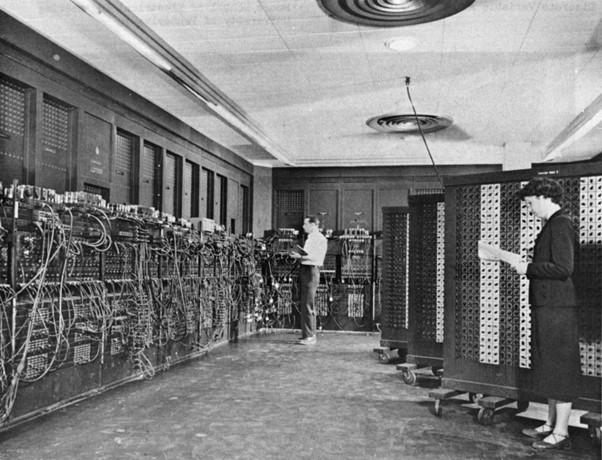
During this period, the technology services industry was in its nascent stage, primarily serving large organizations and governments. Customers had limited access to computing resources, and their needs revolved around data processing, scientific calculations, and military applications. Key customer requirements included reliable hardware, efficient processing capabilities, and technical expertise to operate and maintain these early computing systems.
Mainframe and Minicomputer Era (1960s-1970s)
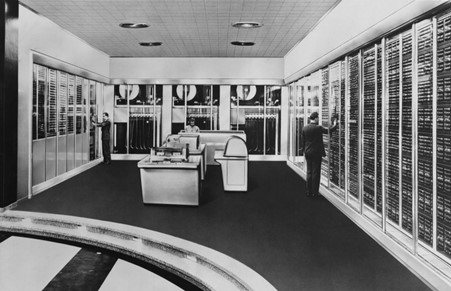
Source: Medium
With the advent of mainframe and minicomputer systems, computing services expanded to more industries. Businesses sought computing power for tasks like payroll processing, inventory management, and scientific research. Key customer needs during this era included faster processing speeds, improved storage capacities, and reliable software solutions to automate business processes. Customers also required support for custom software development and maintenance.
Personal Computer Revolution (1980s-1990s)
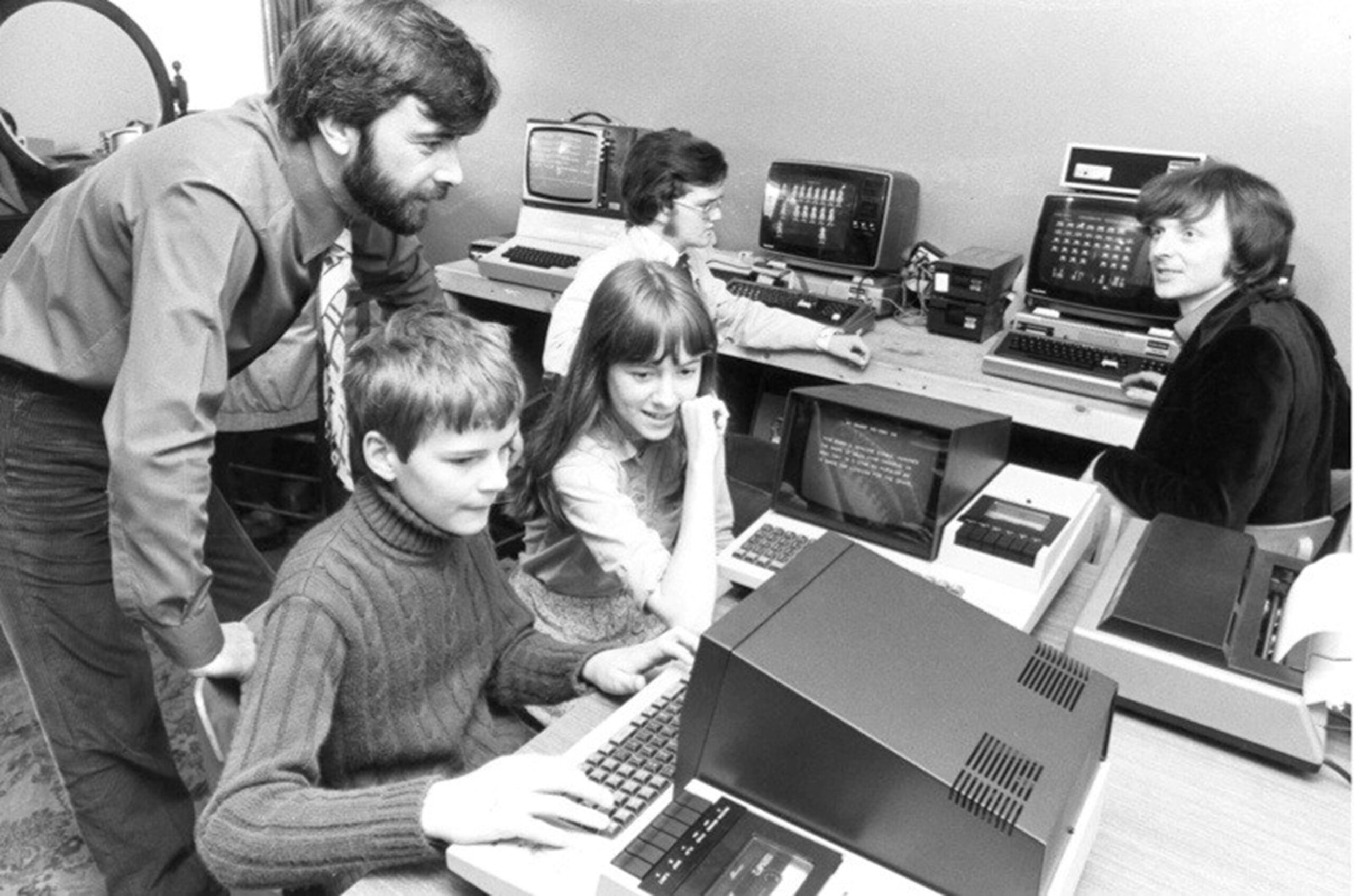
Source: History Extra
The introduction of personal computers (PCs) during this era brought computing power to individuals and small businesses. Customers sought affordable computing devices for personal productivity, educational purposes, and entertainment. Key customer needs included user-friendly interfaces, software applications for various tasks (e.g., word processing, spreadsheets), and connectivity options (e.g., modems for dial-up internet access).
Internet and Digital Age (1990s-2000s)
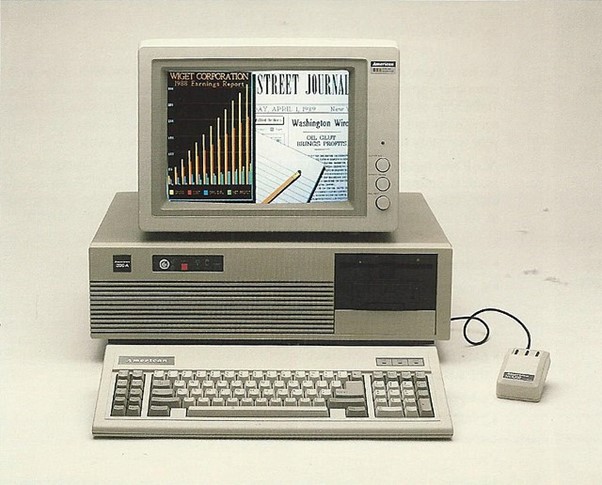
The widespread adoption of the internet transformed customer needs in the technology services industry. Customers increasingly required online connectivity, email services, and web-based applications. E-commerce emerged as a significant customer need, leading to demands for secure online transactions, reliable online shopping experiences, and efficient supply chain management systems. Additionally, customers sought faster internet speeds, broadband connectivity, and mobile computing solutions.
Mobile and Smart Devices (2000s-2010s)

Source: Architectural Digest
The proliferation of smartphones, tablets, and other smart devices reshaped customer needs in the technology services industry. Customers demanded mobile applications, responsive web design, and seamless experiences across multiple devices. The focus shifted to mobility, convenience, and personalization. Cloud computing services also gained popularity, allowing customers to store data, access applications, and collaborate across devices and locations.
Digital Transformation and Data-driven Insights (2010s-2020s)
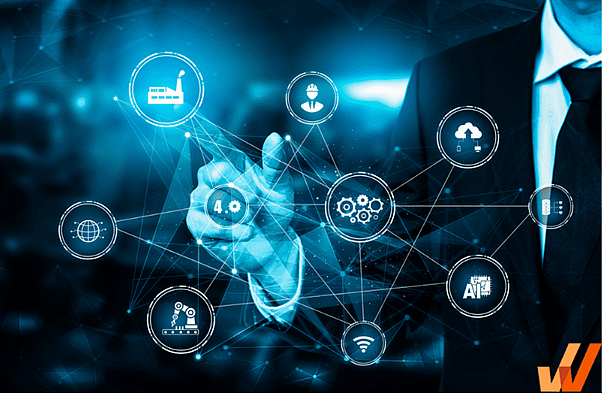
As organizations embraced digital transformation, customer needs evolved to leverage data and gain actionable insights. Customers sought technology services that could collect, store, process, and analyze large volumes of data. They required advanced analytics tools, artificial intelligence (AI) capabilities, and machine learning algorithms to extract meaningful insights, enhance decision-making, and drive business growth. Security and privacy concerns also became critical customer needs, considering the increasing frequency of data breaches and cyber threats.
Shift to Cloud Computing and SaaS (Software as a Service)
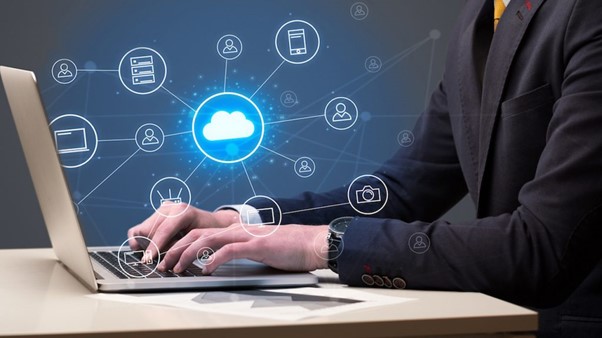
Source: Analytics Insight
In recent years, customers have increasingly shifted their focus towards cloud computing and SaaS solutions. They seek scalable and cost-effective services that can be accessed remotely without the need for extensive on-premises infrastructure. Customers value flexibility, easy deployment, and seamless integration with existing systems. Additionally, they expect continuous software updates, reliable performance, and robust data backup and recovery options.
These milestones highlight the changing landscape of customer needs in the technology services industry. As technology continues to advance, customer demands will further evolve, with a growing emphasis on areas like artificial intelligence, machine learning, internet of things (IoT), cybersecurity, and sustainable and green IT solutions. Understanding and adapting to these evolving customer needs is crucial for technology service providers to remain competitive and meet the expectations of their clients.
How Customer’s needs have changed over time
The technology services industry encompasses a wide range of services, including software development, IT consulting, cloud computing, cybersecurity, data analytics, and more. Customer needs in this industry have indeed evolved over time. Here are some key changes:
Digital Transformation
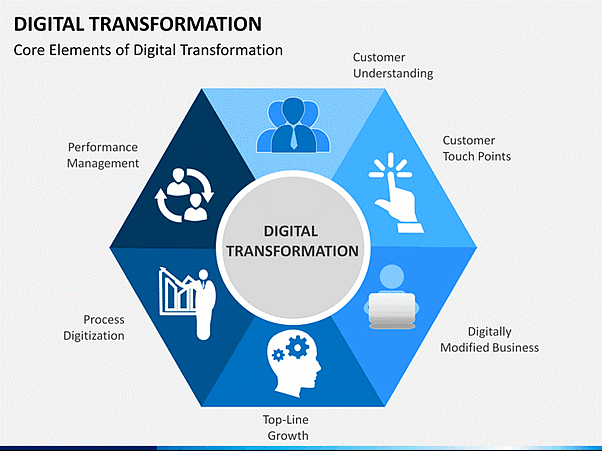
Source: eDesk
As technology has become increasingly central to businesses, customers now seek technology services that enable digital transformation. They want to leverage technology to streamline operations, enhance customer experiences, and gain a competitive edge. This has led to increased demand for services like cloud computing, data analytics, and automation.
Digital transformation refers to the integration of digital technologies into all aspects of a business, fundamentally changing how it operates and delivers value to customers. It involves leveraging technology to improve business processes, enhance customer experiences, and drive innovation. The following aspects are worth considering:
• Streamlined Operations: Technology services are sought after to streamline and automate business operations. This includes implementing enterprise resource planning (ERP) systems, customer relationship management (CRM) software, and supply chain management solutions. These technologies help optimize processes, reduce manual efforts, and improve overall efficiency.
• Enhanced Customer Experiences: Digital transformation is driven by the desire to provide exceptional customer experiences. Technology services are leveraged to build intuitive websites and mobile applications, offer personalized recommendations, and enable seamless omnichannel interactions. This involves employing technologies such as customer data platforms (CDPs), chatbots, and data analytics to gain insights into customer behavior and preferences.
• Innovation and New Business Models: Digital transformation opens up new opportunities for innovation and the creation of new business models. Technology services are utilized to develop and launch new products and services, explore emerging technologies like blockchain or virtual reality, and capitalize on trends such as the sharing economy or subscription-based models. These services often involve collaboration between businesses and technology service providers to foster innovation and bring new ideas to life.
• Data-Driven Decision Making: Digital transformation emphasizes the use of data and analytics to drive decision-making processes. Technology services provide businesses with tools and platforms to collect, analyze, and derive insights from vast amounts of data. This includes implementing data warehouses, business intelligence (BI) tools, and machine learning algorithms. Data-driven decision making helps businesses understand market trends, customer preferences, and operational efficiencies, enabling them to make informed choices and stay ahead of the competition.
• Agility and Adaptability: Digital transformation also emphasizes the need for agility and adaptability. Technology services assist businesses in embracing flexible and scalable solutions that can quickly respond to market changes and customer demands. Cloud computing services, such as Infrastructure as a Service (IaaS) and Platform as a Service (PaaS), provide the necessary scalability, flexibility, and cost-efficiency to support digital transformation initiatives.
Customization and Personalization
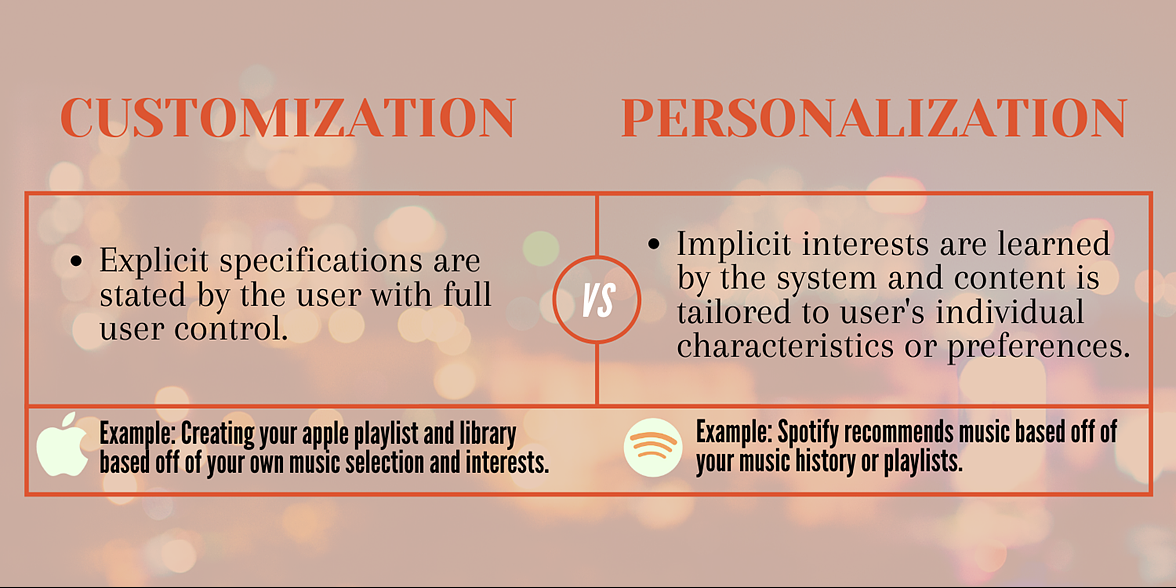
Source: www.linkedin.com
Today’s customers have diverse needs and preferences, and they expect technology services to be tailored to their specific requirements. Customization and personalization enable businesses to provide a more targeted and relevant experience. Here are some key aspects to consider:
• Tailored Solutions: Customers seek technology services that can be customized to meet their unique business needs. This involves understanding the specific requirements, workflows, and challenges of each customer and offering solutions that align with their goals. Service providers should have the flexibility to adapt their offerings, configurations, and integrations to match the customer’s existing infrastructure and processes.
• Modular and Flexible Offerings: Modular approaches to technology services allow customers to choose and combine specific functionalities based on their needs. This flexibility ensures that businesses can select and pay for only the features and services that are relevant to them. Modular offerings also facilitate scalability, allowing customers to easily add or remove functionalities as their requirements evolve.
• Personalized Recommendations: Technology service providers can leverage customer data and analytics to offer personalized recommendations. By analyzing customer behavior, usage patterns, and preferences, service providers can suggest additional features, upgrades, or new services that align with the customer’s needs. These recommendations demonstrate an understanding of the customer’s unique context and help drive customer satisfaction and loyalty.
• User Interface and Experience Customization: Customers expect technology services to provide user interfaces (UIs) that can be customized to their preferences. This includes options to modify layouts, color schemes, and menu structures to match the user’s workflow and visual preferences. Customizable UIs enhance user productivity and satisfaction by allowing them to work in a way that is most comfortable and efficient for them.
• Flexible Service Models: Technology service providers should offer flexible service models that can be tailored to the customer’s requirements. This includes options for different levels of support, service level agreements (SLAs), and pricing structures. Some customers may prefer self-service models with minimal assistance, while others may require dedicated support or managed services. Service providers should accommodate these varying needs to ensure customer satisfaction.
• Proactive Relationship Building: Building strong relationships with customers involves proactive communication and understanding their evolving needs. Regular engagement, such as business reviews, feedback sessions, and account management, allows service providers to stay updated on the customer’s changing requirements and provide continuous value. This proactive approach strengthens the partnership and helps identify opportunities for further customization and personalization.
Enhanced User Experience
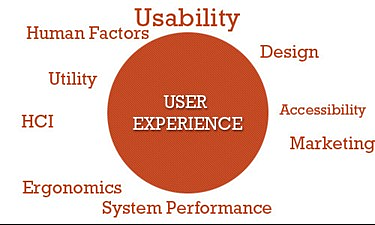
Source: Smashing Magazine
User experience (UX) has become a critical factor in technology services. Customers expect technology services to provide intuitive, user-friendly interfaces and seamless interactions. Here are some key aspects to consider when enhancing the user experience:
• Intuitive and User-Friendly Interfaces: Technology services should have interfaces that are easy to understand and navigate. Users should be able to quickly learn how to use the service without extensive training or assistance. Intuitive interfaces have clear information architecture, consistent design patterns, and well-organized menus and controls.
• Responsive Design: With the increasing use of mobile devices, technology services should have responsive design, ensuring that the user interface adapts seamlessly to different screen sizes and orientations. Responsive design allows users to access and interact with the service on various devices, providing a consistent experience across platforms.
• Seamless Integration and Cross-Platform Support: Customers expect technology services to seamlessly integrate with their existing tools and systems. This includes integrating with commonly used applications, databases, or third-party services to enable data exchange and workflow continuity. Cross-platform support ensures that the service is accessible on different operating systems (e.g., Windows, macOS, iOS, Android) and web browsers.
• Performance and Speed: Users expect technology services to be responsive and perform tasks quickly. Slow loading times, delays in processing, or laggy interfaces can frustrate users and negatively impact their experience. Service providers should optimize performance, minimize latency, and ensure a smooth user experience even under heavy usage.
• Personalization and Contextualization: Offering personalized experiences based on user preferences and context can greatly enhance the user experience. This can include remembering user settings, displaying relevant content or recommendations, and tailoring the interface to match the user’s preferences or past interactions. Contextualization involves adapting the interface or providing specific features based on the user’s current context or task.
• Accessibility and Inclusivity: Technology services should be designed to be accessible to users with different abilities. This involves adhering to accessibility standards and guidelines, providing alternative text for images, ensuring keyboard navigability, and accommodating screen readers or other assistive technologies. Inclusivity also considers diverse user needs, such as language preferences, font size options, or color contrast adjustments.
• Support and Documentation: Comprehensive support and documentation are crucial for enhancing the user experience. Service providers should offer accessible and up-to-date documentation, including user guides, FAQs, and tutorials. Additionally, responsive customer support channels, such as live chat or email, help users troubleshoot issues, answer questions, and provide guidance when needed.

Case Study: Amazon and their customer’s needs
Amazon, the global e-commerce and technology giant, is known for its customer-centric approach and ability to adapt to changing market dynamics. They have continuously evolved their business strategies and offerings to meet the evolving needs of their customers. Here are some key ways Amazon has kept up with customer needs:
1. Diversification of Products and Services: Amazon started as an online bookstore but quickly expanded its product catalog to include a wide range of items, from electronics to clothing, home goods, and beyond. They identified customers’ desire for convenience and a one-stop shopping experience. Over time, Amazon has diversified its services further, including launching Amazon Prime, which offers free two-day shipping, streaming services, and other benefits, catering to customers’ desire for fast and comprehensive shopping experiences.
2. Emphasis on Customer Reviews and Ratings: Amazon recognized the importance of customer feedback and integrated user reviews and ratings into its platform. By allowing customers to share their opinions and experiences, Amazon empowered shoppers to make informed purchasing decisions. This emphasis on customer reviews builds trust and transparency, guiding other customers in their buying journey.
3. Expansion into Digital Content: Understanding the shift in customer preferences towards digital content consumption, Amazon expanded into digital media and entertainment. They launched Amazon Prime Video, a streaming service that offers a vast library of movies, TV shows, and original content. By entering the digital content market, Amazon catered to customers’ growing demand for on-demand entertainment options, competing with other streaming platforms.
4. Focus on Convenience and Speed: Amazon continually invests in improving convenience and delivery speed. They introduced initiatives like Amazon Prime’s free two-day shipping, and later, same-day and next-day delivery options. Additionally, they launched Amazon Lockers, enabling customers to pick up their orders at secure self-service locations. These efforts aimed to satisfy customers’ expectations for quick and hassle-free delivery.
5. Voice-Activated Shopping: Amazon recognized the growing popularity of voice assistants and developed Amazon Echo devices powered by their virtual assistant, Alexa. This allowed customers to shop using voice commands, further streamlining the purchasing process and providing a hands-free experience. By leveraging voice-activated shopping, Amazon addressed customers’ desire for convenient and frictionless interactions.
6. Expansion into Grocery: In response to changing customer needs in the grocery industry, Amazon acquired Whole Foods Market, a leading organic and natural foods supermarket chain. This move enabled them to offer a wider selection of groceries, including fresh produce and perishable items. They also introduced services like Amazon Fresh and Amazon Pantry, providing customers with options for online grocery shopping and delivery.
7. Adoption of Artificial Intelligence and Machine Learning: Amazon leverages artificial intelligence (AI) and machine learning (ML) technologies to personalize customer experiences. They use algorithms to recommend products based on customers’ browsing and purchasing history. AI and ML also enable efficient inventory management, predictive analytics for demand forecasting, and fraud detection, enhancing the overall customer experience.
By continually diversifying their products and services, emphasizing customer reviews, expanding into digital content and grocery, focusing on convenience and speed, adopting voice-activated shopping, and leveraging AI and ML technologies, Amazon has successfully kept up with evolving customer needs. Their customer-centric approach has enabled them to maintain a strong market position and drive customer loyalty.
Data Security and Privacy
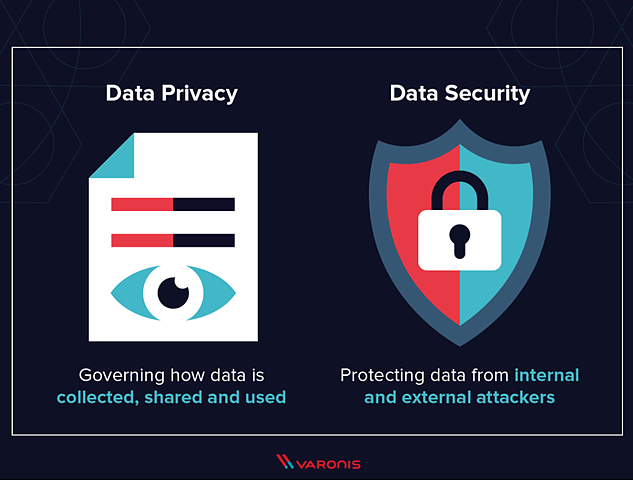
With the increasing frequency and sophistication of cyber threats and the growing concern for privacy, customers have become more vigilant about the security and privacy of their data. Here are some key aspects to consider when addressing data security and privacy:
• Robust Security Measures: Customers expect technology service providers to implement robust security measures to protect their sensitive data. This includes implementing industry-standard encryption techniques, secure access controls, and regular security audits. Service providers should adopt security frameworks and best practices, such as ISO 27001, to demonstrate their commitment to data security.
• Compliance with Regulations: Customers increasingly expect technology service providers to comply with relevant regulations and standards for data protection. For example, the General Data Protection Regulation (GDPR) in the European Union sets guidelines for handling personal data, while other regions have their own data protection laws. Service providers should demonstrate compliance with these regulations and provide transparency in their data handling practices.
• Data Breach Preparedness and Incident Response: Customers value service providers who are prepared to respond to data breaches effectively. This includes having an incident response plan in place, conducting regular security assessments, and promptly notifying customers in the event of a data breach. Service providers should also have mechanisms in place to mitigate the impact of potential breaches and minimize data loss.
• Secure Data Handling: Technology service providers should demonstrate secure data handling practices throughout the data lifecycle. This includes secure data transmission, secure storage with appropriate access controls, and secure data disposal when it is no longer needed. Service providers should also have mechanisms to ensure data integrity and protect against unauthorized modifications.
• Transparency and Consent: Customers expect transparency in how their data is collected, used, and shared. Service providers should clearly communicate their data handling practices, privacy policies, and any third-party data sharing. Obtaining explicit consent from customers for data processing activities is also crucial to ensure transparency and build trust.
• Employee Training and Awareness: Service providers should invest in ongoing employee training and awareness programs to educate their staff about data security and privacy best practices. This helps ensure that employees understand their responsibilities, follow proper protocols, and are vigilant against potential security risks or data breaches.
• Third-Party Security Assessments: Technology service providers may undergo third-party security assessments, such as penetration testing or audits, to validate the security of their systems and processes. Providing customers with the results of these assessments can help build trust and demonstrate the service provider’s commitment to data security.
Agile and Rapid Deployment
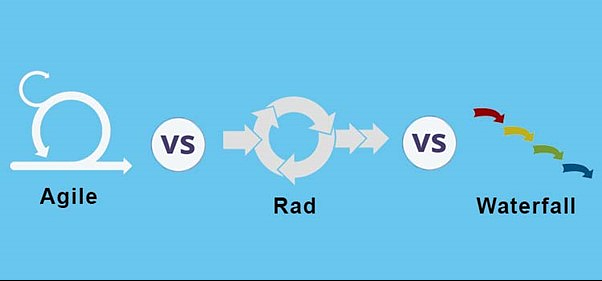
Source: Hopinfirst
In today’s fast-paced business environment, agility and speed are crucial. Customers expect technology services to be implemented quickly and efficiently, enabling them to respond rapidly to market changes and customer demands. Here are some key aspects to consider when focusing on agile and rapid deployment:
• Iterative and Incremental Delivery: Agile methodologies, such as Agile and DevOps, emphasize iterative and incremental delivery of technology services. This involves breaking down projects into smaller, manageable tasks or features and delivering them in short iterations or sprints. By doing so, businesses can quickly deliver value to customers, gather feedback, and make necessary adjustments throughout the development process.
• Continuous Integration and Continuous Deployment: Continuous Integration (CI) and Continuous Deployment (CD) practices are integral to agile and rapid deployment. CI involves frequently merging code changes into a shared repository, ensuring that all changes are integrated smoothly. CD goes a step further by automating the deployment process, allowing businesses to release software updates rapidly and frequently.
• Automation and Infrastructure as Code (IaC): Automation plays a significant role in enabling rapid deployment. By automating tasks such as code testing, build processes, and infrastructure provisioning, businesses can accelerate the deployment process. Infrastructure as Code (IaC) allows for the automated provisioning and configuration of infrastructure resources, ensuring consistency and speed in deploying and scaling services.
• Scalability and Elasticity: Agile and rapid deployment should accommodate scalability and elasticity. Technology services should be designed to handle increased workloads and user demands without sacrificing performance. This involves leveraging cloud computing services, such as Infrastructure as a Service (IaaS) and Platform as a Service (PaaS), to scale resources up or down dynamically based on demand.
• Testing and Quality Assurance: While speed is essential, it should not come at the expense of quality. Adequate testing and quality assurance processes should be in place to ensure that the technology services meet the required standards and deliver the expected functionality. This includes automated testing, continuous monitoring, and rigorous quality control throughout the development and deployment phases.
• Deployment Flexibility: Rapid deployment should provide flexibility to customers, allowing them to choose deployment options that suit their needs. This can include on-premises deployment, cloud-based deployment, or hybrid models. Service providers should offer deployment options that align with the customer’s preferences, infrastructure capabilities, and security requirements.
• Agile Project Management: Agile and rapid deployment go hand in hand with agile project management practices. This involves using frameworks such as Scrum or Kanban to manage projects, prioritize tasks, and ensure effective collaboration between development teams, stakeholders, and customers. Agile project management fosters transparency, adaptability, and continuous improvement throughout the deployment process.
Seamless Integration and Interoperability
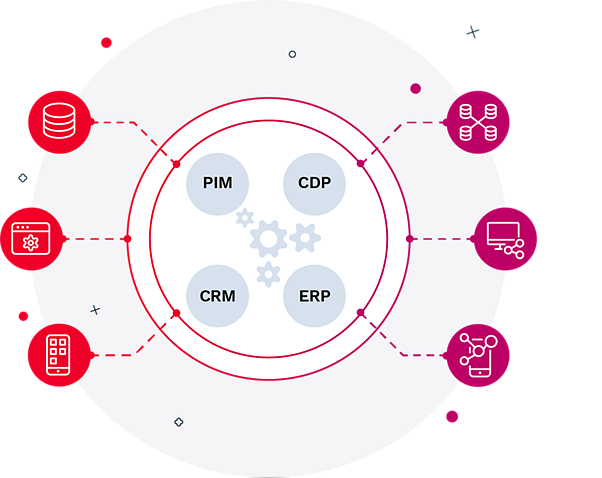
Source: Ibexa DXP
In today’s interconnected business landscape, customers expect technology services to seamlessly integrate with their existing systems, applications, and workflows. Interoperability allows different technologies to work together efficiently, facilitating data exchange, process automation, and collaboration. Here are some key aspects to consider when focusing on seamless integration and interoperability:
• Open Standards and APIs: Technology service providers should adhere to open standards and provide well-documented application programming interfaces (APIs) that enable smooth integration with other systems. Open standards ensure compatibility and interoperability, allowing customers to leverage their existing infrastructure and easily connect with the technology service.
• Pre-built Integrations: Service providers can offer pre-built integrations with commonly used business applications and platforms. These integrations should be easy to set up and configure, enabling customers to quickly connect their systems and streamline data flows. Examples of pre-built integrations include integrations with popular customer relationship management (CRM) systems, email marketing platforms, or payment gateways.
• Custom Integration Support: In addition to pre-built integrations, service providers should offer support for custom integrations. This involves providing the necessary tools, documentation, and technical assistance to help customers integrate the technology service with their unique systems, databases, or workflows. Custom integration support ensures that customers can leverage the full potential of the technology service within their specific environment.
• Data Exchange and Interoperability: Seamless integration and interoperability enable the smooth exchange of data between different systems. This can involve synchronizing customer data, sharing transactional information, or integrating analytics and reporting capabilities. Service providers should ensure that data formats, protocols, and security measures align with industry standards, facilitating the efficient and secure exchange of data.
• Ecosystem Partnerships: Collaboration with other technology providers and building an ecosystem of complementary services can enhance seamless integration and interoperability. By partnering with other software vendors or service providers, technology service providers can offer customers a broader range of integrated solutions and expand the functionality of their offerings. This ecosystem approach fosters a more comprehensive and seamless user experience.
• Workflow Automation: Seamless integration and interoperability enable workflow automation across different systems and processes. By connecting various technologies, businesses can automate data transfer, trigger actions based on specific events, and streamline end-to-end workflows. This improves efficiency, reduces manual efforts, and eliminates data silos, leading to a more seamless and productive operational environment.
• Collaborative Tools and Communication Channels: Interoperability extends beyond data exchange and encompasses collaborative tools and communication channels. Customers expect technology services to integrate with communication platforms, project management tools, and team collaboration software, allowing for seamless collaboration and information sharing. This integration enhances teamwork, accelerates decision-making, and improves overall productivity.
Emphasis on Analytics and Insights
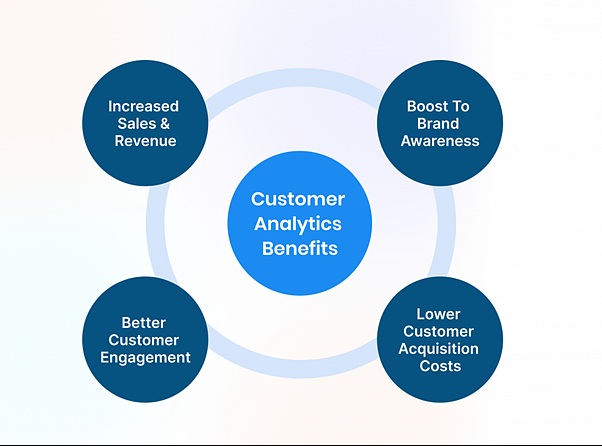
Source: REVE Chat
In the technology services industry, there is an increasing emphasis on leveraging data analytics to derive valuable insights. Customers expect technology services to provide robust analytics capabilities that enable them to make data-driven decisions and gain a deeper understanding of their business. Here are some key aspects to consider when focusing on analytics and insights:
• Data Collection and Aggregation: Technology service providers should enable the collection and aggregation of relevant data from various sources. This can include customer interactions, user behavior, system logs, or external data feeds. By capturing diverse data sets, businesses can gain a comprehensive view of their operations and customers, facilitating deeper analysis and generating meaningful insights.
• Advanced Analytics Techniques: Technology services should offer advanced analytics techniques, such as machine learning, artificial intelligence, and predictive modeling. These techniques enable businesses to uncover patterns, identify trends, and make accurate predictions based on historical and real-time data. Advanced analytics can help optimize processes, enhance decision-making, and identify new opportunities for growth.
• Interactive Reporting and Visualization: Effective analytics and insights require intuitive reporting and visualization tools. Technology service providers should offer user-friendly dashboards, interactive reports, and visual representations of data. These tools allow customers to explore and understand data easily, enabling them to uncover insights, identify patterns, and communicate findings to stakeholders effectively.
• Real-time Monitoring and Alerts: Real-time monitoring capabilities are crucial for proactive decision-making. Technology services should provide real-time data monitoring, alerts, and notifications to keep customers informed about critical events or anomalies. Real-time insights enable businesses to respond quickly to changing conditions, mitigate risks, and capitalize on emerging opportunities.
• Customizable Analytics: Customers have unique analytics requirements based on their industry, business model, and specific objectives. Technology service providers should offer customizable analytics capabilities that allow customers to define their own metrics, create custom reports, and set up personalized analytics workflows. This flexibility ensures that customers can focus on the metrics and insights that matter most to their business.
• Data Governance and Security: Analytics and insights rely on access to accurate and reliable data. Technology service providers should prioritize data governance practices, ensuring data quality, integrity, and security. This involves implementing data governance frameworks, data validation processes, and secure data storage and transmission mechanisms. Customers should have confidence in the accuracy and security of their data when utilizing analytics services.
• Data-driven Recommendations: Technology service providers can add value by offering data-driven recommendations and insights. By analyzing customer data and leveraging machine learning algorithms, service providers can suggest actions, optimizations, or strategies based on patterns and trends. These data-driven recommendations empower customers to make informed decisions and drive business outcomes.
Sustainability and Green IT
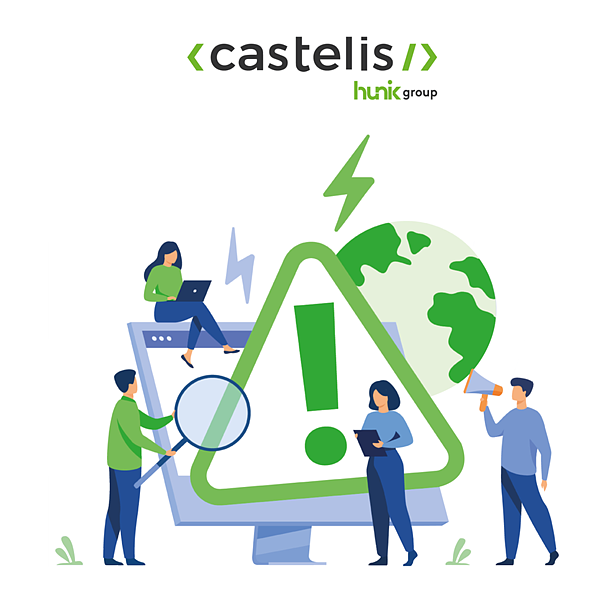
In today’s environmentally conscious world, customers are increasingly concerned about the environmental impact of technology services. They expect technology service providers to prioritize sustainability and embrace green IT practices. Here are some key aspects to consider when focusing on sustainability and green IT:
• Energy Efficiency: Technology service providers should prioritize energy-efficient infrastructure and equipment. This includes using energy-efficient servers, data centers, networking devices, and other hardware components. Optimizing power consumption helps reduce carbon footprint and operational costs while promoting a sustainable approach to technology deployment.
• Renewable Energy Sources: Embracing renewable energy sources, such as solar or wind power, is an important aspect of green IT. Technology service providers should explore opportunities to power their operations with renewable energy, either through direct generation or by partnering with renewable energy providers. This reduces reliance on fossil fuels and contributes to a cleaner and more sustainable energy mix.
• Virtualization and Cloud Computing: Virtualization and cloud computing technologies offer significant opportunities for sustainability. By consolidating physical servers into virtual machines or migrating to cloud-based infrastructures, businesses can reduce hardware requirements, energy consumption, and overall environmental impact. These technologies also enable efficient resource allocation, scalability, and improved utilization.
• Lifecycle Management and E-waste Reduction: Technology service providers should consider the entire lifecycle of their products and services, from production to disposal. This includes implementing strategies to reduce electronic waste (e-waste) by promoting recycling and responsible disposal practices. Service providers can also support initiatives such as device refurbishment, take-back programs, or partnerships with e-waste recycling facilities.
• Paperless Solutions: Promoting paperless solutions and reducing reliance on physical documents can contribute to sustainability. Technology service providers should offer digital alternatives such as electronic signatures, document management systems, and collaborative online platforms. This not only reduces paper usage but also improves efficiency, accessibility, and document security.
• Sustainable Supply Chain: Technology service providers should encourage sustainability practices throughout their supply chain. This involves collaborating with suppliers that adhere to sustainable manufacturing processes, ethical sourcing, and responsible waste management. Service providers can prioritize suppliers who have environmental certifications or initiatives in place.
• Environmental Reporting and Transparency: Demonstrating commitment to sustainability includes providing environmental reporting and being transparent about the environmental impact of technology services. Service providers can share information about their carbon footprint, energy consumption, and sustainability initiatives. This transparency helps customers make informed decisions and supports their own sustainability goals.
It’s important to note that customer needs may vary depending on the specific industry, company size, and geographic location. However, these trends highlight some general shifts in customer expectations within the technology services industry.

Case Study: Apple Inc. and their customer’s needs
Apple Inc., a renowned technology company, has demonstrated its ability to adapt to changing customer needs over time. Here are some key ways Apple has kept up with customer demands:
1. Product Innovation: Apple is known for its innovative products that cater to evolving customer needs. For example, when smartphones became increasingly popular, Apple introduced the iPhone, revolutionizing the mobile industry. They continued to innovate by introducing features like a touch interface, the App Store, and Face ID, staying ahead of customer expectations and setting trends in the market.
2. Seamless Ecosystem: Apple has developed an ecosystem of interconnected devices and services, including iPhones, Mac computers, iPads, Apple Watches, and Apple TVs. This ecosystem provides a seamless experience for customers, enabling them to easily integrate and sync their devices, transfer data, and access services like iCloud, Apple Music, and Apple Pay. This approach addresses the desire for a cohesive and integrated technological environment.
3. User-Friendly Interfaces: Apple products are known for their intuitive and user-friendly interfaces. The company focuses on simplicity and ease of use, making their devices accessible to a wide range of users. This emphasis on user experience has been a consistent aspect of Apple’s approach, appealing to customers who value simplicity and a smooth learning curve.
4. Embracing Wireless Connectivity: Apple has embraced wireless technologies and connectivity trends. For instance, they eliminated the traditional headphone jack on newer iPhone models, promoting the adoption of wireless headphones and earbuds. They also introduced wireless charging capabilities in their devices, eliminating the need for cables and addressing customer desires for a clutter-free and convenient experience.
5. Emphasis on Privacy and Security: Apple has recognized the growing concerns around data privacy and security. They have implemented features like Touch ID and Face ID for biometric authentication and have strict privacy policies in place. Apple’s commitment to protecting user data and providing secure devices has resonated with customers who prioritize privacy and security.
6. Focus on Sustainability: Apple has increasingly prioritized sustainability in its products and operations. They have made efforts to reduce their environmental impact by using renewable energy sources for their facilities, designing energy-efficient devices, and implementing recycling programs. This focus on sustainability aligns with the changing customer expectations and the growing demand for environmentally conscious products.
7. Services Expansion: In recent years, Apple has expanded its services portfolio beyond hardware. They introduced services like Apple Music, Apple Arcade, Apple TV+, and Apple Fitness+, catering to customers’ evolving entertainment and fitness needs. This diversification into services allows Apple to deepen its customer engagement and provide a more comprehensive ecosystem of offerings.
By focusing on product innovation, creating a seamless ecosystem, prioritizing user-friendly interfaces, embracing wireless connectivity, emphasizing privacy and security, focusing on sustainability, and expanding into services, Apple has demonstrated its ability to adapt to changing customer needs. These strategies have helped Apple maintain a strong customer base and position itself as a leader in the technology industry.
Executive Summary
Chapter 1: Traditional Business Consumption of Technology
In the technology services industry, understanding the traditional business consumption of technology is crucial for developing effective customer success strategies. This summary provides an overview of the traditional approach to technology adoption in businesses, highlighting its characteristics, challenges, and implications. By exploring the foundation of technology consumption, we can better appreciate the evolution and significance of customer success in today’s digital landscape.
The Traditional Business Consumption of Technology:
Before the era of modern technology solutions, businesses relied on traditional approaches to adopt and utilize technology. Some key characteristics of the traditional business consumption of technology include:
• Limited Accessibility: Technology was often expensive and complex, limiting its accessibility primarily to large organizations with substantial financial resources. Small and medium-sized enterprises (SMEs) faced barriers to entry due to high costs of hardware, software, and infrastructure.
• On-Premises Infrastructure: Organizations typically hosted their technology infrastructure on-premises, requiring significant investments in hardware, networking, and technical expertise. This approach demanded dedicated IT teams to manage and maintain the infrastructure.
• Long Implementation Cycles: Implementing technology solutions was a time-consuming process. It involved acquiring hardware, installing software, configuring systems, and training employees. These complex and resource-intensive implementations often led to extended timeframes and delayed benefits realization.
• Limited Customization: Traditional technology solutions provided limited customization options, as they were designed to cater to a broad range of industries and business models. Organizations had to adapt their processes and workflows to fit the capabilities of the technology, resulting in compromises and suboptimal efficiency.
• Reactive Support: When issues arose, businesses typically relied on reactive support models. They sought assistance from technology providers only when problems occurred, which often led to delayed resolutions, impacting productivity and customer satisfaction.
Challenges and Implications:
The traditional business consumption of technology presented several challenges and implications, including:
• Unequal Competitive Landscape: Limited accessibility and high costs favored larger organizations, creating an uneven playing field. SMEs struggled to keep up with technological advancements, hindering their growth potential and ability to compete effectively.
• Scalability and Flexibility Constraints: On-premises infrastructure made scaling a challenging task. Expanding hardware and software resources required significant investments, making it difficult for businesses to respond to evolving needs and market demands.
• Limited Data Insights: Traditional technology solutions provided limited data analytics capabilities, making it challenging for businesses to gain actionable insights. Decision-making processes relied heavily on manual data extraction and analysis, leading to slower response times and missed opportunities.
• Fragmented Customer Engagement: The focus of traditional technology solutions was primarily on internal processes, with limited emphasis on customer engagement. This resulted in fragmented customer experiences and difficulties in understanding customer needs and preferences.
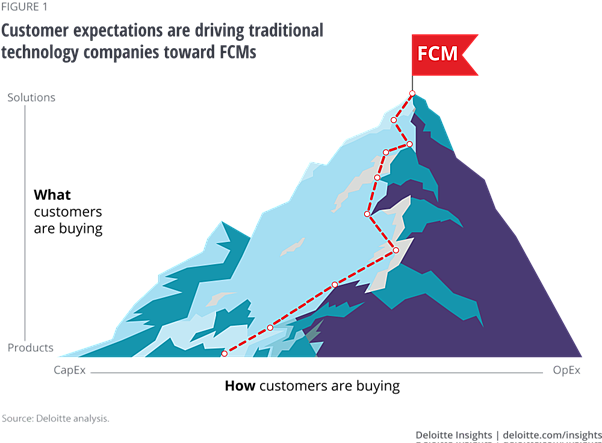
The benefits
The traditional business consumption of technology, despite its limitations and challenges, did offer some benefits to organizations. These benefits include:
1. Automation and Efficiency: Traditional technology adoption automated repetitive tasks, leading to increased efficiency and productivity within organizations.
2. Improved Accuracy and Reliability: Technology solutions brought higher levels of accuracy and reliability to business operations, reducing the likelihood of human errors.
3. Enhanced Communication and Collaboration: Despite limitations, technology facilitated improved communication and collaboration through channels like email, internal messaging systems, and intranets.
4. Streamlined Processes: Technology adoption in the traditional era helped streamline business processes, integrating various functions and improving efficiency and coordination.
5. Standardization and Consistency: Technology allowed organizations to establish standardized processes and workflows, ensuring consistency and reducing errors.
6. Increased Storage and Data Management: Traditional technology solutions provided efficient data storage and management capabilities, facilitating decision-making and compliance with regulations.
7. Long-term Cost Reduction: While initial investments were high, technology adoption resulted in long-term cost savings through reduced manual labor, paperwork, and administrative tasks.
8. Competitive Advantage: Early adopters of technology gained a competitive edge by leveraging technology to differentiate their offerings, streamline operations, and enhance customer experiences.
It’s important to note that while these benefits were significant during the traditional era, the modernization of technology consumption has brought about even more substantial advantages, such as increased accessibility, scalability, data analytics capabilities, and proactive customer support.

Chapter 2: Modern Business and Technology Consumption
In the ever-evolving landscape of the technology services industry, the modern business and technology consumption model has revolutionized the way organizations leverage technology to drive customer success. This summary explores the key characteristics, benefits, and implications of modern business and technology consumption, shedding light on the transformative power it holds in today’s digital era.
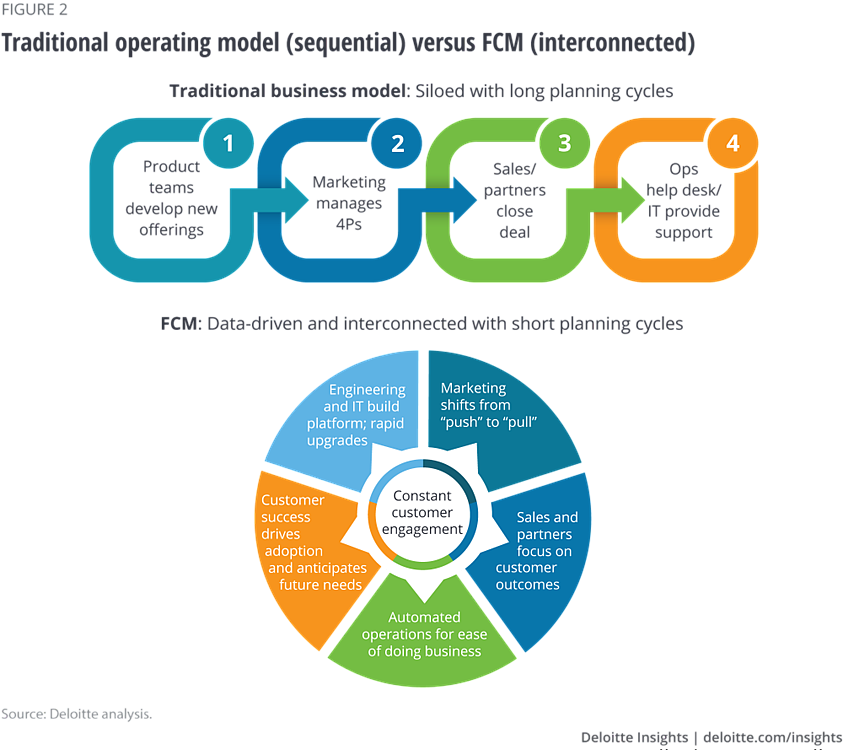
Modern business and technology consumption is characterized by several key elements that have reshaped the way organizations operate:
• Accessibility and Affordability: Cloud computing, software-as-a-service (SaaS), and other technological advancements have democratized access to technology. Businesses of all sizes can now leverage scalable solutions without significant upfront investments, leveling the playing field for small and medium-sized enterprises (SMEs).
• Scalability and Flexibility: Modern technology solutions offer scalability, allowing organizations to easily adjust resources and capacities based on business needs. Cloud-based platforms provide on-demand provisioning and resource allocation, empowering businesses to adapt quickly to changing market demands.
• Customization and Personalization: Unlike the limitations of traditional technology, modern solutions offer high degrees of customization. Organizations can tailor technology to align with their specific needs, processes, and workflows, maximizing efficiency and productivity.
• Data-Driven Insights: Advanced data analytics capabilities provide businesses with real-time, actionable insights. Harnessing big data, artificial intelligence (AI), and machine learning (ML) enables organizations to make informed decisions, identify trends, anticipate customer behavior, and unlock new opportunities.
• Seamless Integration and Collaboration: Modern technology solutions prioritize integration and collaboration, breaking down data silos and fostering cross-departmental communication. Connected systems and platforms enable streamlined workflows, efficient information sharing, and enhanced collaboration among teams.
• Proactive Customer Engagement: Customer success is at the forefront of modern business and technology consumption. Proactive support models, such as real-time monitoring, self-service portals, and predictive analytics, allow businesses to anticipate and address customer needs, resulting in higher customer satisfaction, retention, and loyalty.
Benefits and Implications:
The modern business and technology consumption model offers numerous benefits to organizations:
1. Enhanced Efficiency and Productivity: By leveraging scalable and customizable technology solutions, businesses can optimize processes, automate tasks, and streamline workflows. This leads to improved efficiency, productivity, and resource utilization.
2. Improved Decision-Making: Advanced data analytics capabilities enable organizations to gain deeper insights into their operations, customers, and market trends. Real-time data empowers informed decision-making, allowing businesses to respond swiftly to changing market dynamics and make data-driven strategic choices.
3. Agility and Adaptability: Modern technology solutions provide organizations with the agility to quickly respond to market demands, scale operations, and embrace innovation. This flexibility allows businesses to stay ahead of the competition and seize new opportunities.
4. Enhanced Customer Experiences: With a focus on proactive customer engagement, modern technology consumption enables businesses to deliver personalized experiences and meet customer expectations. Data-driven insights and seamless integration enable businesses to understand customer needs, tailor offerings, and provide exceptional support throughout the customer journey.
5. Cost Optimization: Modern technology consumption models often eliminate the need for extensive on-premises infrastructure, reducing upfront capital expenditures and maintenance costs. Pay-as-you-go and subscription-based pricing models ensure cost optimization and resource allocation aligned with business needs.

Chapter 3: Modern Business and Technology Consumption – The New Sales Cycle
The new sales cycle in the technology services industry has been significantly transformed by advancements in technology and changes in customer behavior. Here’s an overview of the key elements of the new sales cycle:
Research and Awareness
In the new sales cycle, customers are more empowered and informed than ever before. They conduct extensive research online, seeking information about technology solutions, service providers, and industry trends. This research phase is critical for customers to gain awareness and identify their specific needs and pain points.
Consultative Selling
Technology service providers have shifted from a traditional transactional approach to a consultative selling model. Instead of simply pushing products or services, sales professionals act as trusted advisors, understanding customers’ unique challenges and offering tailored solutions to address those needs.
Relationship Building
Building strong relationships with customers has become a crucial aspect of the new sales cycle. Sales professionals focus on developing long-term partnerships based on trust, collaboration, and mutual success. This relationship-centric approach helps foster customer loyalty and increases the potential for upselling or cross-selling opportunities.
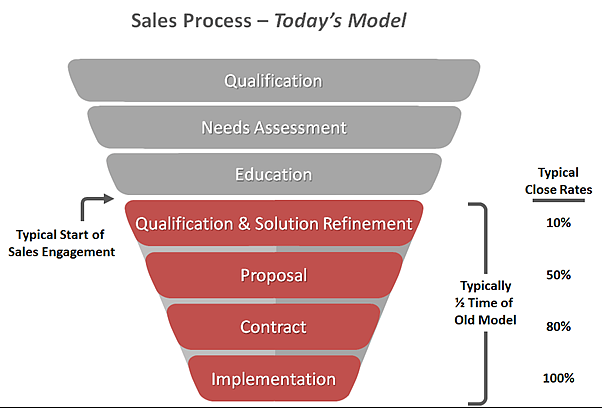
Source: B2B Marketing Blog
Solution-Oriented Approach
The new sales cycle emphasizes providing comprehensive solutions rather than standalone products or services. Technology service providers position themselves as problem solvers, offering end-to-end solutions that address customers’ business challenges and goals.
Demonstrating Value
Sales professionals need to effectively communicate the value proposition of their offerings. They showcase how their technology solutions can deliver tangible business outcomes, such as increased efficiency, cost savings, improved customer experiences, or revenue growth. Demonstrating value is essential to differentiate from competitors and justify the investment to potential customers.
Collaboration with Other Departments
Sales teams collaborate closely with other departments, such as marketing, customer success, and implementation teams. This collaboration ensures a cohesive and seamless customer experience throughout the entire sales process, from initial engagement to post-sales support.
Customer Education
The new sales cycle involves educating customers about the technology solutions, their benefits, and the implementation process. Sales professionals provide resources, case studies, and demonstrations to help customers understand how the technology can address their specific needs and integrate into their existing infrastructure.
Post-Sales Support
The sales cycle doesn’t end with the closing of a deal. Post-sales support and customer success play a crucial role in maintaining customer satisfaction and driving long-term relationships. Sales professionals collaborate with customer success teams to ensure smooth implementation, onboarding, and ongoing support, reinforcing the value of the technology solution.
Data-Driven Sales Strategies
Technology service providers leverage data analytics to inform their sales strategies. They utilize data to identify potential customers, personalize their sales approach, track customer interactions, and identify upselling or cross-selling opportunities.
Agile and Iterative Approach
The new sales cycle embraces an agile and iterative approach, where sales professionals continuously gather customer feedback, adapt their strategies, and refine their offerings. This iterative approach helps in staying responsive to changing customer needs and evolving market dynamics.
In summary, the new sales cycle in the technology services industry focuses on consultative selling, building relationships, providing comprehensive solutions, and delivering value to customers. Collaboration across departments, customer education, and post-sales support are key elements, while data-driven strategies and an agile approach drive success in today’s technology sales landscape.

Chapter 4: Innovation
Innovation plays a pivotal role in the technology service industry, driving advancements, shaping business models, and transforming customer experiences. The origins of innovation in this industry can be traced back to several key developments:
• Hardware Innovations: The early stages of the technology service industry were marked by significant hardware innovations. The invention of computers, mainframes, and networking infrastructure laid the foundation for the digital revolution. These innovations enabled the processing and storage of vast amounts of data, paving the way for the development of technology services.
• Software Innovations: As hardware capabilities grew, software innovations emerged as a critical driver of the technology service industry. The creation of operating systems, programming languages, and software development methodologies expanded the possibilities of what technology could achieve. Software innovations enabled the creation of diverse applications, ranging from business software suites to specialized industry solutions.
• Internet and Connectivity: The advent of the internet and the subsequent expansion of connectivity marked a significant turning point in the technology service industry. The internet revolutionized communication, collaboration, and information sharing, connecting people and organizations worldwide. This connectivity gave rise to numerous online services and laid the foundation for cloud computing, which revolutionized how technology services are delivered and consumed.
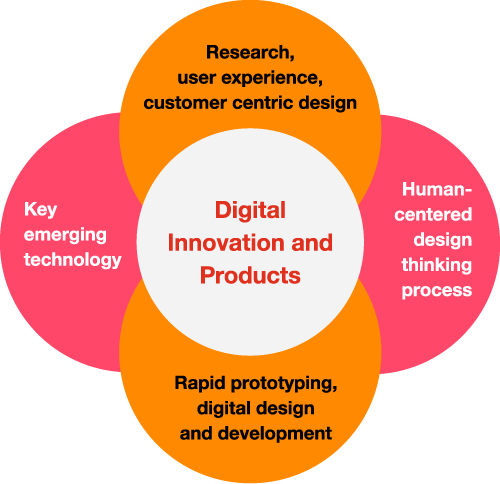
Source: PwC
• Cloud Computing and Virtualization: Cloud computing brought a paradigm shift in the technology service industry. By offering on-demand access to computing resources, storage, and software applications, cloud technology enabled scalability, flexibility, and cost efficiency. Virtualization technology further enhanced resource utilization, enabling multiple virtual machines to run on a single physical server.
• Mobile Technology and Mobility: The introduction of mobile devices, such as smartphones and tablets, opened up new possibilities for technology service innovation. Mobile technology allowed users to access services on the go, transforming the way people work, communicate, and consume information. Mobile apps and responsive web design became essential components of technology services.
• Big Data and Analytics: The exponential growth of data created new challenges and opportunities. Innovations in big data technologies and analytics provided organizations with the means to collect, store, process, and derive insights from vast amounts of structured and unstructured data. This innovation fueled the rise of data-driven decision-making, predictive analytics, and personalized customer experiences.
• Artificial Intelligence and Machine Learning: Artificial intelligence (AI) and machine learning (ML) have emerged as disruptive forces in the technology service industry. AI-powered technologies, such as natural language processing, computer vision, and predictive algorithms, have enabled automation, intelligent data analysis, and the development of intelligent virtual assistants.
• Internet of Things (IoT): The IoT has brought about a new wave of innovation by connecting physical objects and devices to the internet. IoT technology allows for the collection and exchange of data between interconnected devices, enabling smart homes, smart cities, and industrial applications. The IoT has opened up new possibilities for technology service providers to develop innovative solutions and services.
• Blockchain Technology: Blockchain technology, initially introduced for cryptocurrencies like Bitcoin, has found applications beyond finance. Its decentralized and secure nature has the potential to disrupt various sectors, including supply chain management, healthcare, and identity verification. Blockchain innovation offers opportunities for increased transparency, security, and efficiency in technology services.
In summary, innovation in the technology service industry has evolved from hardware and software advancements to encompass areas such as cloud computing, mobile technology, big data analytics, AI/ML, IoT, and blockchain. These innovations have transformed business models, enhanced customer experiences, and opened up new avenues for growth and disruption. The industry continues to evolve as technology advances, and new innovations emerge, driving progress and shaping the future of technology services.

Chapter 5: An Architectural Approach to Technology
An architectural approach to technology refers to a systematic and strategic approach to designing and implementing technology solutions within an organization. It involves creating a blueprint or framework that guides the selection, integration, and management of technology components to support business goals and processes effectively. The architectural approach to technology has evolved over time in response to the increasing complexity and interconnectivity of technology systems.
Historically, technology implementations were often ad hoc and focused on solving immediate business needs without considering long-term implications. However, as organizations recognized the importance of aligning technology with business objectives, the architectural approach emerged to address the challenges of managing and integrating diverse technology components.
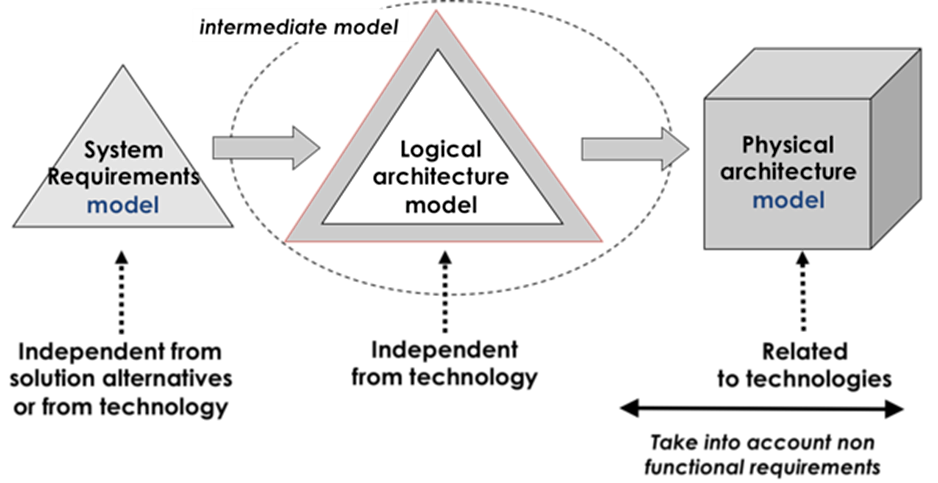
Source: SEBoK
The origins of the architectural approach to technology can be attributed to various factors:
1. Enterprise Architecture: The field of enterprise architecture emerged as a response to the need for holistic planning and governance of technology within large organizations. Enterprise architecture focuses on aligning technology with business strategies, optimizing processes, and ensuring interoperability and integration across various systems.
2. Increasing Technology Complexity: As technology systems grew more intricate, with multiple components, platforms, and applications, organizations faced challenges in managing and coordinating these elements effectively. The architectural approach provided a structured methodology to understand, design, and integrate complex technology landscapes.
3. Integration Challenges: With the rise of distributed systems and the need for data sharing among various applications, integration became a critical concern. The architectural approach emphasized designing integration frameworks and standards to ensure seamless communication and interoperability between different technology components.
4. Scalability and Flexibility Requirements: As organizations grew and their technology needs expanded, scalability and flexibility became crucial considerations. The architectural approach facilitated the design of modular and scalable technology architectures that could adapt to evolving business requirements and support future growth.
5. Technology Standardization: To achieve interoperability, reduce complexity, and improve maintenance and support, the architectural approach promoted the adoption of technology standards and best practices. Standardization helped organizations streamline their technology environments and facilitate collaboration between different systems.
6. Alignment with Business Processes: The architectural approach recognized the importance of aligning technology with business processes. By understanding the organization’s workflows, objectives, and dependencies, technology architects could design solutions that enhanced efficiency, productivity, and overall business performance.
7. Risk Management and Security: With the increasing threat landscape and the need to protect sensitive data, the architectural approach emphasized incorporating robust security measures into technology solutions. This included designing secure network architectures, implementing access controls, and addressing vulnerabilities at the architectural level.
8. Technological Advances: Advances in technology, such as cloud computing, virtualization, and service-oriented architecture (SOA), influenced the architectural approach. These innovations provided opportunities to design more agile, scalable, and cost-effective technology ecosystems.
Today, the architectural approach to technology continues to evolve, incorporating emerging trends such as microservices, containerization, and API-driven architectures. It emphasizes the importance of strategic planning, collaboration between technology and business stakeholders, and the continuous evaluation and adaptation of technology architectures to meet evolving business needs.
In summary, the architectural approach to technology evolved as organizations recognized the need for a structured and strategic approach to technology design and integration. It addresses challenges related to complexity, integration, scalability, and alignment with business objectives. By adopting this approach, organizations can optimize their technology investments, improve operational efficiency, and drive innovation in the ever-evolving technological landscape.

Chapter 6: Vision and Mission
The mission and vision statements of a company are critical elements that guide its overall direction, purpose, and strategic decision-making. They define the company’s identity, values, and aspirations, while also serving as a framework for aligning with customer needs. Here’s an overview of the importance of a company’s mission and vision and how they should align with customer needs:
• Strategic Direction: The mission and vision statements provide a clear strategic direction for the company. The mission statement articulates the organization’s core purpose, defining why it exists and what it seeks to achieve. The vision statement outlines the desired future state and sets ambitious goals. When crafted effectively, these statements serve as a compass that guides the company’s actions, initiatives, and investments.
• Customer-Centric Focus: A strong mission and vision should reflect a customer-centric approach. They should clearly articulate how the company aims to fulfill customer needs, solve their problems, and create value for them. Aligning the mission and vision with customer needs demonstrates the company’s commitment to understanding and serving its target audience effectively.
• Differentiation and Competitive Advantage: A well-crafted mission and vision can differentiate a company from its competitors. By aligning with customer needs, the company can position itself as a provider that understands and addresses customers’ unique challenges and aspirations. This alignment can create a competitive advantage by attracting and retaining customers who resonate with the company’s mission and vision.
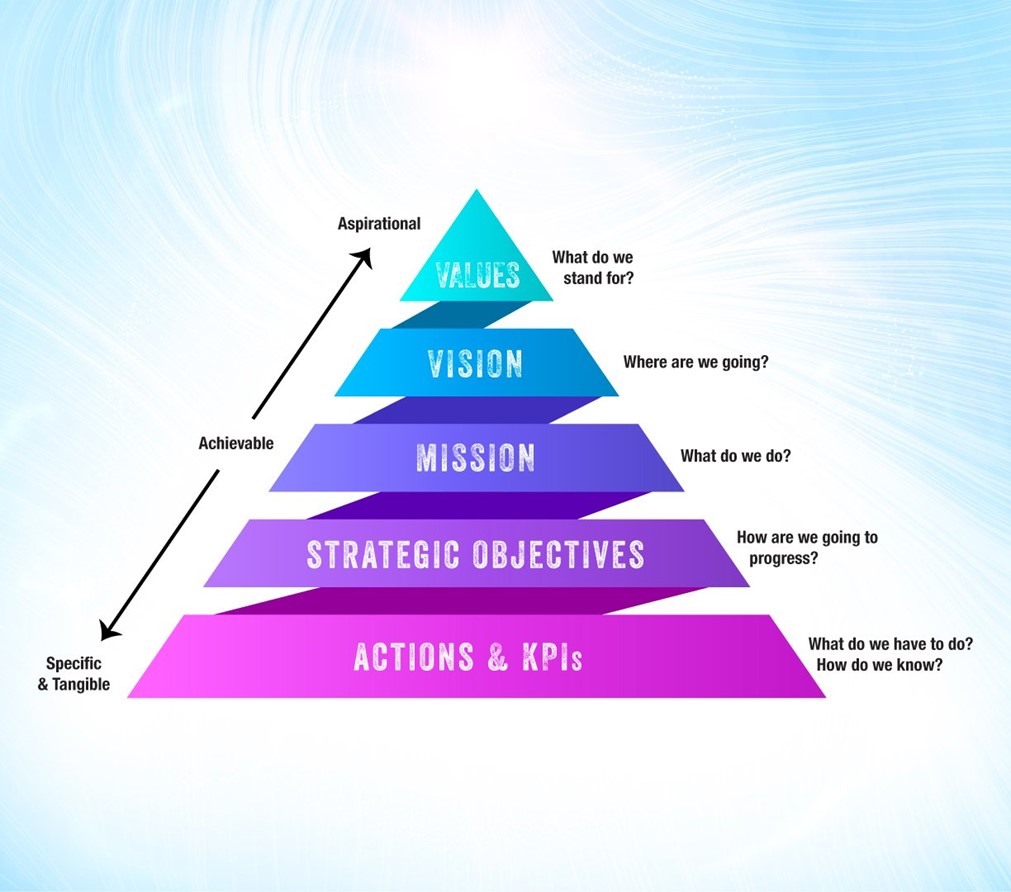
Source: StarLink
• Employee Alignment and Engagement: A clear and customer-focused mission and vision help align employees around a common purpose. When employees understand how their work contributes to fulfilling customer needs, they feel a sense of purpose and engagement. This alignment boosts employee motivation, productivity, and satisfaction, leading to better customer experiences and outcomes.
• Customer Trust and Loyalty: When a company’s mission and vision align with customer needs, it builds trust and fosters loyalty. Customers are more likely to trust and remain loyal to a company that demonstrates a genuine commitment to understanding and meeting their needs. The alignment of mission and vision with customer needs conveys that the company values its customers and is dedicated to delivering value and satisfaction.
• Innovation and Adaptation: Mission and vision statements can drive innovation by encouraging companies to continuously evolve and adapt to changing customer needs. As customer needs evolve, the company’s mission and vision should also evolve accordingly, guiding the development of new products, services, and experiences that address emerging challenges and opportunities.
• Effective Communication and Marketing: A well-defined mission and vision that align with customer needs can serve as a powerful communication and marketing tool. When communicated effectively, these statements resonate with customers and create a sense of connection. By highlighting the alignment between the company’s purpose and customer needs, it becomes easier to attract and engage customers.
• Long-Term Sustainability: Aligning the mission and vision with customer needs fosters long-term sustainability. It enables the company to build enduring relationships with customers, adapt to market changes, and remain relevant over time. By staying attuned to customer needs, the company can anticipate shifts in the market, identify emerging trends, and proactively innovate to meet evolving customer expectations.
In conclusion, a company’s mission and vision are foundational elements that guide its strategic direction and decision-making. When aligned with customer needs, these statements enhance differentiation, build customer trust and loyalty, drive innovation, and foster long-term sustainability. A customer-centric mission and vision demonstrate the company’s commitment to understanding and fulfilling customer needs, positioning it for success in a competitive marketplace.

Chapter 7: The Business Model Canvas
The Business Model Canvas (BMC) was introduced by Alexander Osterwalder and Yves Pigneur in their book “Business Model Generation,” which was published in 2010. The book provided a comprehensive guide to developing and visualizing business models using the canvas framework. Since then, the BMC has gained widespread popularity and has been widely adopted by entrepreneurs, startups, and established businesses as a tool for strategic planning, innovation, and business model analysis. It has become a valuable resource in the field of business management and has significantly influenced the way organizations think about and develop their business models.
Business Model Canvas example:
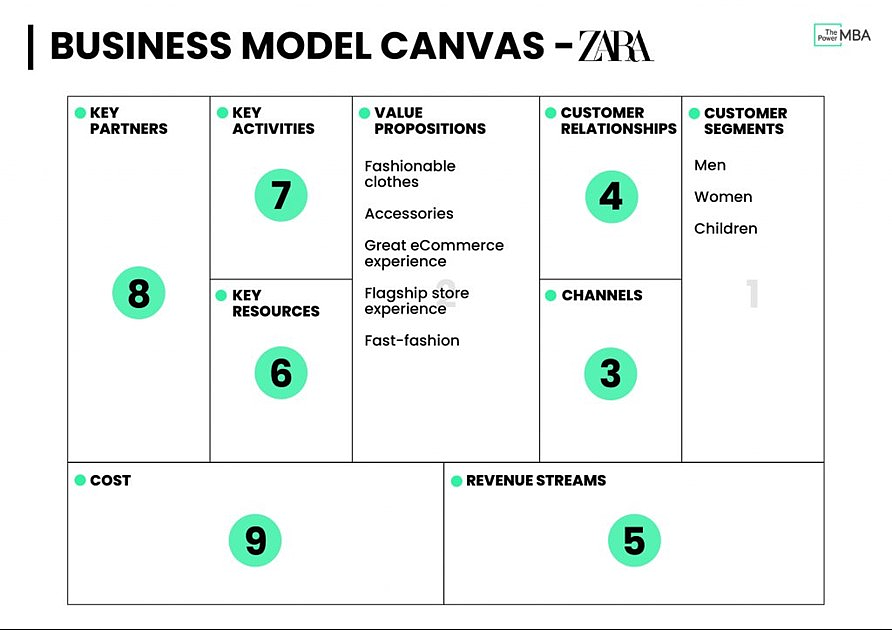
While the BMC does not explicitly focus on customer success, it provides valuable insights into understanding and addressing customers’ needs and achieving their success. Let’s explore how the various components of the BMC relate to customer success:
1. Customer Segments: This section identifies the different groups of customers or market segments that the business serves. Understanding customer segments helps a business tailor its products or services to meet the unique needs of each segment, thereby increasing the likelihood of customer success.
2. Value Proposition: The value proposition describes the unique value or benefits that the business offers to its customers. By aligning the value proposition with customer needs, desires, and pain points, businesses can create a compelling reason for customers to choose their products or services, thereby contributing to customer success.
3. Channels: Channels represent the various ways in which a business interacts with its customers to deliver its value proposition. Effective channel design ensures that customers can easily access and utilize the products or services, leading to a positive customer experience and ultimately contributing to their success.
4. Customer Relationships: This component focuses on the type of relationships a business establishes and maintains with its customers. By cultivating positive relationships and providing exceptional customer support, businesses can foster customer loyalty, satisfaction, and ultimately, customer success.
5. Revenue Streams: While revenue streams primarily pertain to the financial aspects of the business, they indirectly impact customer success. By aligning pricing strategies with the perceived value and affordability for customers, businesses can ensure customers derive value from their purchases, reinforcing their success.
6. Key Activities: Key activities encompass the core operational activities that a business undertakes to deliver its value proposition. By efficiently executing these activities, businesses can enhance the quality, reliability, and usability of their offerings, contributing to customer success.
7. Key Resources: Key resources encompass the tangible and intangible assets required to deliver the value proposition effectively. Adequate resources, such as skilled employees, technology infrastructure, and customer data, enable businesses to better understand and fulfill customer needs, thereby driving customer success.
8. Key Partnerships: Key partnerships involve collaborations with other businesses or entities that provide additional capabilities or resources. By leveraging strategic partnerships, businesses can access complementary expertise or expand their reach, leading to improved customer satisfaction and success.
9. Cost Structure: While cost structure primarily addresses the financial implications of running a business, it indirectly affects customer success. By maintaining a cost structure that allows the business to deliver quality products or services at a reasonable price, businesses can enhance customer satisfaction and success.
By considering these aspects of the BMC, businesses can better understand their customers’ needs, design customer-centric strategies, and create an environment that promotes customer success. The goal is to align the different components of the business model to deliver value to customers and cultivate long-term relationships, resulting in a higher likelihood of customer satisfaction, loyalty, and success.

Chapter 8: Customer Requirement: The Challenge
Customer requirements pose various challenges in the product development and service delivery process. Here are some of the key challenges associated with customer requirements:
• Ambiguity: Customers may not always express their needs and expectations clearly. Requirements can be vague, imprecise, or open to interpretation, making it challenging for businesses to understand and meet them accurately.
• Changing and Evolving Needs: Customer requirements can change over time due to various factors such as shifting market dynamics, technological advancements, or evolving customer preferences. Keeping up with these changes and ensuring that the product or service aligns with the updated requirements can be a significant challenge.
• Conflicting Requirements: Different customers may have conflicting requirements, making it difficult to satisfy everyone. Balancing diverse needs and finding compromises that meet the majority of customers’ expectations can be a complex task.
• Incomplete or Inconsistent Information: Customers may not always provide a comprehensive set of requirements, leading to incomplete information. Additionally, requirements gathered from different sources or stakeholders might be inconsistent, making it challenging to create a unified and coherent set of requirements.
• Unarticulated Needs: Customers may have latent needs or desires that they are not able to articulate or are not aware of themselves. Identifying these unarticulated needs requires deeper understanding, market research, and proactive engagement with customers.
• Scalability and Adaptability: Customer requirements often need to consider scalability, particularly in situations where a product or service is expected to accommodate a growing user base or changing market demands. Ensuring that the solution can adapt and scale effectively can be a challenge.
• Prioritization and Trade-offs: Customers may have numerous requirements, but limited resources and time may necessitate trade-offs and prioritization. Determining which requirements are most critical and striking the right balance to satisfy customer needs within constraints can be a difficult decision-making process.
Overcoming these challenges involves effective communication, active engagement with customers, thorough market research, requirement validation, and a flexible approach to accommodate changing needs throughout the product development or service delivery lifecycle.
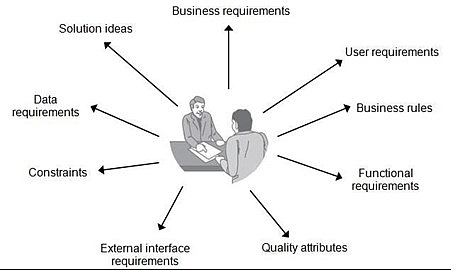
Source: Medium
Do customer requirements change over time?
Customer requirements can indeed change over time due to various factors. One key reason for changing customer requirements is shifting preferences. As new trends, styles, or designs emerge, customers’ preferences may evolve. Features or characteristics that were once considered important or desirable may no longer align with their current tastes. This changing landscape of fashion trends, evolving tastes, and cultural norms can contribute to the modification of customer requirements.
Technological advancements also play a significant role in shaping customer requirements. As new technologies emerge, customers’ expectations may increase, leading to changes in their requirements. They may desire features or functionalities that were not previously available. For example, the introduction of smartphones and mobile apps has significantly impacted customer expectations for convenience, connectivity, and seamless experiences.
The competitive market landscape is another influential factor. When competitors introduce innovative products or services with improved features or superior value propositions, customers may raise their expectations accordingly. The need to stay competitive and meet or exceed customer expectations can drive businesses to update and enhance their offerings based on changing requirements.
Customer feedback and experiences are vital drivers of changing requirements. As customers use products or services, they provide feedback based on their experiences. Positive or negative feedback can highlight areas for improvement or identify new needs. Companies that actively listen to customer feedback and incorporate it into their product development process can adapt their offerings to better meet evolving customer requirements.
External factors also impact customer requirements. Regulatory changes, industry standards, or environmental considerations can shape and modify customer needs. New regulations or industry standards may require businesses to modify their products or services to comply with legal or industry-specific requirements. Increasing awareness and concern for environmental sustainability may lead customers to prioritize eco-friendly features or practices in their requirements.
To effectively respond to changing customer requirements, businesses must stay attuned to customer feedback, conduct market research, monitor industry trends, and proactively engage with their target audience. By understanding and addressing evolving customer requirements, companies can develop products and services that align with customer expectations, maintain a competitive edge, and drive customer satisfaction and loyalty.

Chapter 9: Customer Requirements: The Response
A company’s response to customer requirements is vital for several reasons:
1. Customer Satisfaction: Meeting customer requirements is crucial for ensuring customer satisfaction. When a company understands and addresses the needs and expectations of its customers, it enhances their overall experience with the company’s products or services. Satisfied customers are more likely to remain loyal, make repeat purchases, and recommend the company to others.
2. Competitive Advantage: In today’s competitive business landscape, companies that consistently meet customer requirements gain a significant edge over their competitors. By delivering products or services that align with customer expectations, a company can differentiate itself in the market and attract a larger customer base. This can lead to increased market share and revenue growth.
3. Customer Retention: A company’s ability to respond to customer requirements impacts customer retention. When customers feel that their needs are understood and addressed by a company, they are more likely to remain loyal and continue doing business with that company. Conversely, if a company consistently fails to meet customer requirements, customers may switch to competitors who better fulfill their needs.
4. Brand Reputation: The way a company responds to customer requirements directly affects its brand reputation. Positive experiences and successful interactions with customers can build a strong brand image, portraying the company as reliable, customer-centric, and trustworthy. On the other hand, consistently disregarding or mishandling customer requirements can damage a company’s reputation, leading to negative word-of-mouth, customer dissatisfaction, and loss of business.
5. Product and Service Improvement: Customer requirements and feedback provide valuable insights for product and service improvement. By actively listening to customer needs and preferences, companies can identify areas for enhancement and innovation. Incorporating customer feedback into the development process enables companies to create products and services that better meet customer expectations, resulting in improved customer satisfaction and loyalty.
6. Long-Term Success: Ultimately, a company’s long-term success relies on its ability to adapt and evolve in response to changing customer requirements. Customer preferences, market trends, and industry dynamics constantly evolve, and companies that proactively respond to these changes can stay ahead of the curve. By continuously aligning their offerings with customer requirements, companies can position themselves for sustained growth and profitability.
A company’s response to customer requirements is vital for customer satisfaction, competitive advantage, customer retention, brand reputation, product/service improvement, and long-term success. By prioritizing and effectively addressing customer needs, companies can cultivate strong relationships with their customer base and thrive in a competitive business environment.
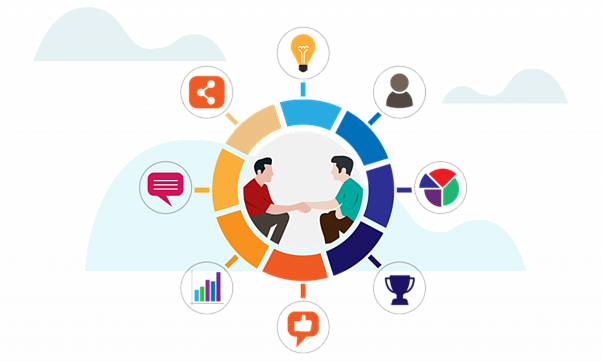
Source: Modern Requirements
What could happen if the company does not respond to customer requirements in the right way?
If a company fails to respond to customer requirements in the right way, it can have several negative consequences:
• Customer Dissatisfaction: When a company ignores or neglects customer requirements, it leads to customer dissatisfaction. Customers may feel that their needs are not being understood or addressed, resulting in frustration and disappointment. Dissatisfied customers are more likely to voice their complaints, seek alternatives, or share their negative experiences with others, which can harm the company’s reputation.
• Loss of Customers: If a company consistently fails to respond to customer requirements, it risks losing its customer base. Unhappy customers may switch to competitors who better meet their needs and expectations. Losing customers not only means a loss of immediate revenue but also potential future business and referrals.
• Negative Word-of-Mouth: Customers who are dissatisfied with a company’s response to their requirements are likely to share their negative experiences with others. This can spread through word-of-mouth, online reviews, social media, and other platforms, damaging the company’s reputation and credibility. Negative word-of-mouth can have a significant impact on prospective customers, who may be deterred from engaging with the company altogether.
• Declining Sales and Revenue: When customer requirements are not adequately addressed, it can lead to declining sales and revenue. Customers are less likely to make repeat purchases or engage in additional business with a company that fails to meet their expectations. As a result, the company’s financial performance may suffer, affecting its profitability and long-term sustainability.
• Competitive Disadvantage: Ignoring customer requirements can put a company at a competitive disadvantage. Competitors who pay attention to customer needs and provide better solutions or experiences will attract customers away from the company. This can lead to a loss of market share, reduced pricing power, and diminished competitiveness in the industry.
• Damage to Brand Reputation: A company’s reputation is closely tied to its ability to respond to customer requirements effectively. If customers perceive that the company is unresponsive, uncaring, or out of touch, it can damage the brand’s reputation. Negative feedback and reviews can erode trust, making it more challenging for the company to attract new customers and retain existing ones.
• Missed Opportunities for Innovation: Customer requirements often contain valuable insights and opportunities for innovation. By disregarding or dismissing customer feedback, a company may miss out on valuable ideas for improving its products, services, or processes. This lack of innovation can result in stagnation, making the company less competitive and relevant in the market.
If a company does not respond to customer requirements in the right way, it can lead to customer dissatisfaction, loss of customers, negative word-of-mouth, declining sales, competitive disadvantages, damage to brand reputation, and missed opportunities for innovation. It is crucial for companies to prioritize and effectively address customer requirements to maintain a strong customer base, positive brand image, and long-term success.

Chapter 10: Outcomes
Defining customer outcomes is crucial for shifting the focus of a company towards its customers. By clearly identifying and understanding the results and benefits that customers seek, the company can align its efforts to meet those needs and expectations. This customer-centric approach enables the development of solutions that directly address customer pain points, resulting in higher levels of customer satisfaction and loyalty.
Moreover, defining customer outcomes allows a company to create value for its customers. By understanding the specific results, improvements, or experiences that customers desire, the company can tailor its products or services to deliver those outcomes effectively. This value creation is essential for customer retention, gaining a competitive advantage, and fostering sustainable business growth.
In addition to creating value, defining customer outcomes helps a company differentiate itself from competitors. By gaining a deep understanding of the unique goals and desired outcomes of its target customers, the company can develop offerings that better meet those specific needs compared to its competitors. This differentiation allows the company to stand out in the market, attract more customers, and ultimately increase its market share.
Defining customer outcomes also serves as a catalyst for innovation. By gaining insights into the outcomes customers desire, a company can explore new approaches, technologies, or features that enable the effective delivery of those outcomes. This focus on innovation allows the company to stay ahead of the competition by continuously improving and evolving its offerings to better meet customer needs.
Furthermore, customer outcomes provide a foundation for customer success. When a company understands the outcomes its customers are striving for, it can proactively work towards helping customers achieve those outcomes. This customer success mindset builds strong and mutually beneficial relationships, fostering long-term customer loyalty and advocacy.
Lastly, defining customer outcomes allows for measurement and improvement. By clearly articulating the desired outcomes, a company can track its performance in delivering those outcomes. This enables the company to assess its effectiveness, make data-driven decisions, and continuously improve its offerings and processes to better meet customer needs over time.
In summary, defining customer outcomes is essential as it enables a customer-focused approach, drives value creation, supports differentiation, inspires innovation, fosters customer success, and facilitates measurement and improvement. By understanding and delivering the outcomes customers seek, a company can better meet their needs, enhance customer satisfaction, and achieve sustainable business success.
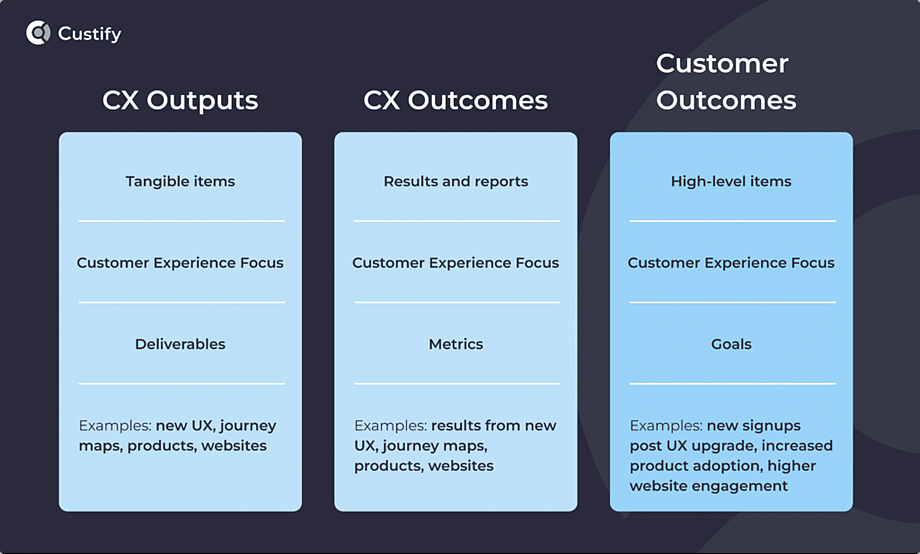
The importance of targeting the right customers
Targeting the right customers is crucial for achieving favorable outcomes for several reasons:
1. Relevance and Alignment: When a company targets the right customers, its offerings are more likely to be relevant to their needs and preferences. By understanding the specific characteristics and requirements of the target audience, the company can tailor its products, services, and marketing messages to align with their expectations. This relevance and alignment increase the likelihood of attracting and retaining customers who are genuinely interested in what the company has to offer.
2. Efficient Resource Allocation: Targeting the right customers allows a company to allocate its resources more efficiently. By focusing its marketing efforts, resources, and investments on the specific segment(s) of the market that are most likely to be interested in its offerings, the company can maximize the impact and return on investment. This targeted approach ensures that the company’s resources are utilized effectively, minimizing wastage and optimizing the use of time, money, and manpower.
3. Customer Satisfaction and Retention: Targeting the right customers enhances customer satisfaction and increases the likelihood of customer retention. When a company caters to the needs and preferences of its target customers, it can deliver a superior customer experience. Satisfied customers are more likely to remain loyal, make repeat purchases, and become advocates for the company. By focusing on the right customers, a company can build strong and long-lasting relationships, fostering customer loyalty and reducing customer churn.
4. Competitive Advantage: Targeting the right customers can provide a competitive advantage in the market. By understanding the unique characteristics and requirements of the target audience, a company can differentiate itself from competitors and position itself as the preferred choice for those customers. This targeted approach allows the company to tailor its offerings and marketing strategies to effectively meet the needs of the identified customer segment(s), creating a distinct value proposition that sets it apart from competitors.
5. Profitability and Revenue Growth: Targeting the right customers is essential for driving profitability and revenue growth. When a company focuses on customers who have a genuine interest in its offerings and are willing to pay for them, it increases the likelihood of generating sales and revenue. By catering to the needs of the right customers, a company can command appropriate pricing, increase customer lifetime value, and capture a larger share of the market, leading to improved financial performance.
6. Product Development and Innovation: Targeting the right customers provides valuable insights for product development and innovation. By understanding the unique challenges, preferences, and aspirations of the target audience, a company can identify opportunities for developing new products or enhancing existing ones. This customer-centric approach fosters innovation and allows the company to deliver solutions that specifically address the needs of the target customers, driving customer satisfaction and market success.
In summary, targeting the right customers is important to achieve favorable outcomes because it ensures relevance and alignment, enables efficient resource allocation, enhances customer satisfaction and retention, provides a competitive advantage, drives profitability and revenue growth, and fuels product development and innovation. By identifying and focusing on the customers who are most likely to benefit from and appreciate its offerings, a company can optimize its performance and success in the market.

Chapter 11: Objectives
Breaking down customer outcomes into objectives is important for several reasons:
Clarity and Focus
Breaking down customer outcomes into objectives provides clarity and focus on the specific results or achievements that customers desire. Objectives make the outcomes more tangible and measurable, allowing both the company and the customer to clearly understand what needs to be accomplished. This clarity enables the company to align its efforts and resources towards achieving those objectives, ensuring a focused approach.
Actionability and Accountability
Objectives derived from customer outcomes are actionable and serve as actionable targets for the company. They provide a roadmap for the actions and initiatives needed to deliver the desired outcomes. By breaking down outcomes into objectives, the company can assign responsibilities, set deadlines, and establish accountability for achieving those objectives. This promotes a sense of ownership and ensures that the necessary actions are taken to drive customer success.
Measurement and Evaluation
Objectives derived from customer outcomes facilitate measurement and evaluation of the company’s performance. By breaking down outcomes into specific objectives, it becomes easier to track progress, assess the effectiveness of strategies and initiatives, and measure the degree to which the objectives have been achieved. This enables the company to monitor its performance, make data-driven decisions, and continuously improve its offerings and processes.
Alignment with Resources and Capabilities
Breaking down customer outcomes into objectives allows the company to align its resources and capabilities effectively. By understanding the specific objectives associated with customer outcomes, the company can assess whether it has the necessary resources, skills, and capabilities to deliver on those objectives. This alignment ensures that the company can allocate resources appropriately and develop the necessary competencies to achieve the desired outcomes.
Iterative Improvement
Breaking down customer outcomes into objectives supports iterative improvement. As the company works towards achieving the objectives, it can gather feedback, analyze results, and make adjustments based on the insights gained. This iterative process allows the company to refine its strategies and initiatives, continuously improving its ability to deliver the desired outcomes and exceed customer expectations.
Communication and Alignment with Stakeholders
Objectives derived from customer outcomes provide a clear and communicable framework for engaging and aligning stakeholders. By breaking down outcomes into objectives, the company can effectively communicate its intentions, progress, and successes to stakeholders such as employees, partners, investors, and customers. This alignment helps in fostering collaboration, support, and shared understanding among stakeholders, further enhancing the likelihood of achieving the desired outcomes.
Breaking down customer outcomes into objectives is important because it brings clarity and focus, enables actionable targets, facilitates measurement and evaluation, aligns resources and capabilities, supports iterative improvement, and enhances communication and alignment with stakeholders. By defining clear objectives that are derived from customer outcomes, a company can effectively plan, execute, and monitor its efforts to meet customer needs and deliver superior value.
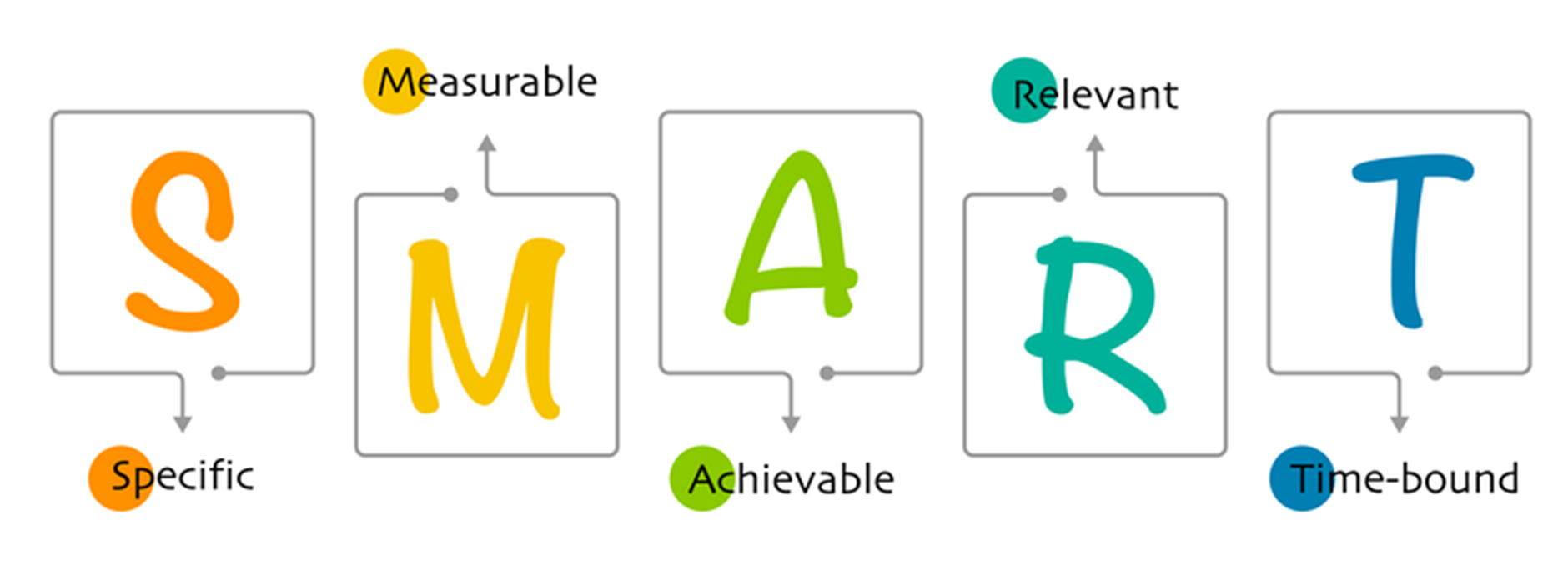
Source: Snack Nation
What are some commonly used tools for doing this?
There are several commonly used tools and frameworks for breaking down customer outcomes into objectives. Here are a few examples:
1. SMART Objectives: SMART is an acronym that stands for Specific, Measurable, Achievable, Relevant, and Time-bound. This framework helps in setting clear and well-defined objectives. SMART objectives are specific and clearly articulated, measurable with specific criteria for success, achievable within realistic constraints, relevant to the desired outcomes, and time-bound with a specific timeline for completion. The SMART framework ensures that objectives are well-structured, actionable, and aligned with customer outcomes.
2. OKRs (Objectives and Key Results): OKRs are a goal-setting framework popularized by companies like Google. They involve setting ambitious, qualitative objectives and defining key results that are measurable and time-bound. Objectives describe the desired outcomes, while key results are specific, quantifiable metrics that indicate progress towards those outcomes. OKRs promote focus, alignment, and transparency, allowing companies to break down customer outcomes into measurable objectives and track progress effectively.
3. Balanced Scorecard: The Balanced Scorecard is a strategic management tool that translates the company’s vision and strategy into a set of objectives across multiple perspectives. These perspectives typically include financial, customer, internal processes, and learning and growth. By considering the customer perspective, the Balanced Scorecard helps in identifying customer outcomes and breaking them down into objectives that are aligned with other areas of the business. This framework provides a comprehensive view of how the company is performing in meeting customer needs.
4. Customer Journey Mapping: Customer journey mapping is a visual representation of the customer’s experience across various touchpoints with the company. It helps in understanding the customer’s goals, needs, pain points, and desired outcomes at different stages of the journey. By analyzing the customer journey, companies can identify specific objectives for each touchpoint or stage to improve the overall customer experience and meet customer outcomes effectively.
5. Voice of the Customer (VoC) Analysis: Voice of the Customer analysis involves systematically gathering and analyzing customer feedback, opinions, and preferences. This includes methods such as surveys, interviews, focus groups, and social media monitoring. By extracting insights from the voice of the customer, companies can identify patterns, preferences, and desired outcomes. These insights can then be translated into specific objectives that align with customer needs and expectations.
6. Customer Satisfaction (CSAT) and Net Promoter Score (NPS): CSAT and NPS are metrics used to measure customer satisfaction and loyalty, respectively. By collecting feedback through surveys or other feedback mechanisms, companies can assess how well they are meeting customer outcomes and set objectives to improve CSAT and NPS scores. These metrics provide a quantitative measure of customer sentiment and can guide the establishment of specific objectives for enhancing customer satisfaction and loyalty.
These are just a few examples of tools and frameworks commonly used to break down customer outcomes into objectives. The choice of tool depends on the specific needs and context of the company. Ultimately, the goal is to select a tool that helps in defining clear, measurable, and actionable objectives aligned with customer outcomes. In this course manual, we will specifically talk about setting SMART Objectives.

Chapter 12: Managing Risk
Managing risk in terms of customer needs is of utmost importance for several reasons:
• Customer Satisfaction and Retention: Effective risk management ensures that customer needs are met consistently and reliably. By identifying and mitigating potential risks that could impact the delivery of products, services, or customer experiences, companies can enhance customer satisfaction and increase the likelihood of customer retention. When customers feel that their needs are understood and protected, they are more likely to remain loyal and continue doing business with the company.
• Reputation and Trust: Managing risk demonstrates a commitment to customer well-being and fosters trust in the company. When customers perceive that a company is proactive in identifying and addressing potential risks that could affect their needs, it enhances the company’s reputation as a trustworthy and reliable partner. Trust is a critical factor in customer relationships, and effective risk management contributes to building and maintaining that trust over time.
• Minimized Disruptions and Downtime: By managing risk effectively, companies can minimize disruptions and downtime that could negatively impact customer needs. This includes anticipating and mitigating risks related to supply chain disruptions, service interruptions, data breaches, or any other factors that could hinder the company’s ability to meet customer expectations. Minimizing disruptions and downtime ensures continuity in delivering products, services, or support, thereby meeting customer needs consistently.
• Enhanced Problem Solving and Responsiveness: Risk management enables companies to identify potential issues or challenges that may arise in meeting customer needs and be prepared to address them promptly. By proactively identifying and planning for risks, companies can develop contingency plans and alternative strategies to minimize the impact on customers. This enhances the company’s problem-solving capabilities and responsiveness, allowing them to address customer needs effectively even in challenging circumstances.
• Compliance and Regulatory Requirements: Managing risk in relation to customer needs also involves ensuring compliance with relevant laws, regulations, and industry standards. By adhering to legal and regulatory requirements, companies can mitigate the risk of non-compliance penalties and reputational damage. Compliance measures often include protecting customer data, ensuring privacy, and maintaining data security, all of which are crucial aspects of meeting customer needs in today’s digital age.
• Competitive Advantage: Effective risk management can provide a competitive advantage by differentiating a company from its competitors. When a company demonstrates its ability to manage risks effectively and deliver on customer needs consistently, it creates a perception of reliability, stability, and trustworthiness in the market. This competitive advantage can attract new customers and retain existing ones, as customers often prefer companies that prioritize risk management and demonstrate a commitment to meeting their needs reliably.
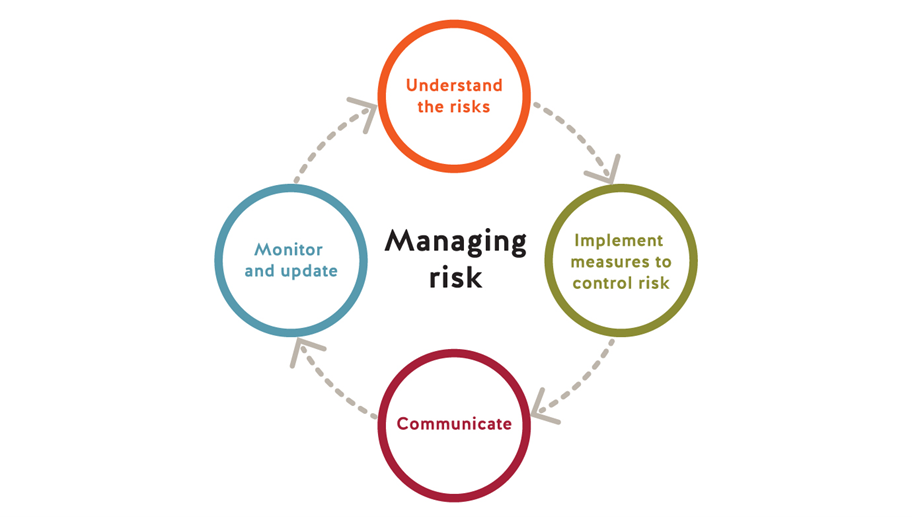
Source: WorkSafeBC
Risk assessment Tools
There are several well-known and well-used tools and frameworks that can assist in managing risk in relation to customer needs. Here are a few examples:
1. Risk Assessment Matrix: A risk assessment matrix, also known as a risk matrix or risk heat map, is a visual tool used to assess and prioritize risks based on their likelihood and impact. This matrix categorizes risks into different levels or zones, helping companies identify high-priority risks that have the potential to impact customer needs significantly. By using a risk assessment matrix, companies can allocate resources and develop mitigation strategies accordingly.
2. Failure Mode and Effects Analysis (FMEA): FMEA is a systematic approach for identifying and mitigating potential failures or risks in a process, product, or service. It involves analyzing the potential failure modes, their causes, and the effects on customer needs. FMEA helps companies prioritize and address risks by assigning a risk priority number (RPN) based on factors such as severity, occurrence, and detectability. It enables companies to proactively identify and take measures to mitigate risks that could impact customer needs.
3. Customer Journey Mapping: Customer journey mapping helps identify potential risks and pain points that customers may encounter throughout their interactions with a company. By mapping out the customer’s experience, companies can identify areas where customer needs may not be adequately met or where there may be potential risks or gaps in the process. This helps in proactively managing risks and improving the overall customer experience.
4. SWOT Analysis: SWOT (Strengths, Weaknesses, Opportunities, and Threats) analysis is a framework used to assess the internal strengths and weaknesses of a company, as well as external opportunities and threats. By conducting a SWOT analysis, companies can identify potential risks or challenges that could impact customer needs. This analysis helps in developing strategies to leverage strengths, address weaknesses, seize opportunities, and mitigate threats, ultimately enhancing the company’s ability to meet customer needs effectively.
5. Compliance Management Systems: Compliance management systems help companies ensure adherence to legal and regulatory requirements related to customer needs. These systems provide frameworks and tools for identifying and managing compliance risks, documenting policies and procedures, conducting audits, and implementing corrective actions. Compliance management systems help companies minimize the risk of non-compliance penalties, maintain customer trust, and protect customer data.
6. Business Continuity Planning: Business continuity planning involves identifying and preparing for potential risks and disruptions that could impact the company’s ability to meet customer needs. This includes developing contingency plans, establishing backup systems, and creating processes to ensure uninterrupted service delivery. By having robust business continuity plans in place, companies can mitigate risks and maintain seamless operations, minimizing any negative impact on customer needs.
These are just a few examples of tools and frameworks commonly used to manage risks in relation to customer needs. The choice of tool depends on the specific needs, industry, and context of the company. Implementing these tools can support proactive risk management and enhance a company’s ability to meet customer needs reliably and effectively. In this course manual, we will specifically focus on the Risk Matrix.
Curriculum
Customer Success – Workshop 1 – Customer Needs
- Traditional Business Consumption of Technology
- Modern Business and Technology Consumption – The Need for Agility
- Modern Business and Technology Consumption – The New Sales Cycle
- Innovation
- An Architectural Approach to Technology
- Vision and Mission
- The Business Model Canvas
- Customer Requirement – The Challenge
- Customer Requirement – The Response
- Outcomes
- Objectives
- Managing Risk
Distance Learning
Introduction
Welcome to Appleton Greene and thank you for enrolling on the Customer Success corporate training program. You will be learning through our unique facilitation via distance-learning method, which will enable you to practically implement everything that you learn academically. The methods and materials used in your program have been designed and developed to ensure that you derive the maximum benefits and enjoyment possible. We hope that you find the program challenging and fun to do. However, if you have never been a distance-learner before, you may be experiencing some trepidation at the task before you. So we will get you started by giving you some basic information and guidance on how you can make the best use of the modules, how you should manage the materials and what you should be doing as you work through them. This guide is designed to point you in the right direction and help you to become an effective distance-learner. Take a few hours or so to study this guide and your guide to tutorial support for students, while making notes, before you start to study in earnest.
Study environment
You will need to locate a quiet and private place to study, preferably a room where you can easily be isolated from external disturbances or distractions. Make sure the room is well-lit and incorporates a relaxed, pleasant feel. If you can spoil yourself within your study environment, you will have much more of a chance to ensure that you are always in the right frame of mind when you do devote time to study. For example, a nice fire, the ability to play soft soothing background music, soft but effective lighting, perhaps a nice view if possible and a good size desk with a comfortable chair. Make sure that your family know when you are studying and understand your study rules. Your study environment is very important. The ideal situation, if at all possible, is to have a separate study, which can be devoted to you. If this is not possible then you will need to pay a lot more attention to developing and managing your study schedule, because it will affect other people as well as yourself. The better your study environment, the more productive you will be.
Study tools & rules
Try and make sure that your study tools are sufficient and in good working order. You will need to have access to a computer, scanner and printer, with access to the internet. You will need a very comfortable chair, which supports your lower back, and you will need a good filing system. It can be very frustrating if you are spending valuable study time trying to fix study tools that are unreliable, or unsuitable for the task. Make sure that your study tools are up to date. You will also need to consider some study rules. Some of these rules will apply to you and will be intended to help you to be more disciplined about when and how you study. This distance-learning guide will help you and after you have read it you can put some thought into what your study rules should be. You will also need to negotiate some study rules for your family, friends or anyone who lives with you. They too will need to be disciplined in order to ensure that they can support you while you study. It is important to ensure that your family and friends are an integral part of your study team. Having their support and encouragement can prove to be a crucial contribution to your successful completion of the program. Involve them in as much as you can.
Successful distance-learning
Distance-learners are freed from the necessity of attending regular classes or workshops, since they can study in their own way, at their own pace and for their own purposes. But unlike traditional internal training courses, it is the student’s responsibility, with a distance-learning program, to ensure that they manage their own study contribution. This requires strong self-discipline and self-motivation skills and there must be a clear will to succeed. Those students who are used to managing themselves, are good at managing others and who enjoy working in isolation, are more likely to be good distance-learners. It is also important to be aware of the main reasons why you are studying and of the main objectives that you are hoping to achieve as a result. You will need to remind yourself of these objectives at times when you need to motivate yourself. Never lose sight of your long-term goals and your short-term objectives. There is nobody available here to pamper you, or to look after you, or to spoon-feed you with information, so you will need to find ways to encourage and appreciate yourself while you are studying. Make sure that you chart your study progress, so that you can be sure of your achievements and re-evaluate your goals and objectives regularly.
Self-assessment
Appleton Greene training programs are in all cases post-graduate programs. Consequently, you should already have obtained a business-related degree and be an experienced learner. You should therefore already be aware of your study strengths and weaknesses. For example, which time of the day are you at your most productive? Are you a lark or an owl? What study methods do you respond to the most? Are you a consistent learner? How do you discipline yourself? How do you ensure that you enjoy yourself while studying? It is important to understand yourself as a learner and so some self-assessment early on will be necessary if you are to apply yourself correctly. Perform a SWOT analysis on yourself as a student. List your internal strengths and weaknesses as a student and your external opportunities and threats. This will help you later on when you are creating a study plan. You can then incorporate features within your study plan that can ensure that you are playing to your strengths, while compensating for your weaknesses. You can also ensure that you make the most of your opportunities, while avoiding the potential threats to your success.
Accepting responsibility as a student
Training programs invariably require a significant investment, both in terms of what they cost and in the time that you need to contribute to study and the responsibility for successful completion of training programs rests entirely with the student. This is never more apparent than when a student is learning via distance-learning. Accepting responsibility as a student is an important step towards ensuring that you can successfully complete your training program. It is easy to instantly blame other people or factors when things go wrong. But the fact of the matter is that if a failure is your failure, then you have the power to do something about it, it is entirely in your own hands. If it is always someone else’s failure, then you are powerless to do anything about it. All students study in entirely different ways, this is because we are all individuals and what is right for one student, is not necessarily right for another. In order to succeed, you will have to accept personal responsibility for finding a way to plan, implement and manage a personal study plan that works for you. If you do not succeed, you only have yourself to blame.
Planning
By far the most critical contribution to stress, is the feeling of not being in control. In the absence of planning we tend to be reactive and can stumble from pillar to post in the hope that things will turn out fine in the end. Invariably they don’t! In order to be in control, we need to have firm ideas about how and when we want to do things. We also need to consider as many possible eventualities as we can, so that we are prepared for them when they happen. Prescriptive Change, is far easier to manage and control, than Emergent Change. The same is true with distance-learning. It is much easier and much more enjoyable, if you feel that you are in control and that things are going to plan. Even when things do go wrong, you are prepared for them and can act accordingly without any unnecessary stress. It is important therefore that you do take time to plan your studies properly.
Management
Once you have developed a clear study plan, it is of equal importance to ensure that you manage the implementation of it. Most of us usually enjoy planning, but it is usually during implementation when things go wrong. Targets are not met and we do not understand why. Sometimes we do not even know if targets are being met. It is not enough for us to conclude that the study plan just failed. If it is failing, you will need to understand what you can do about it. Similarly if your study plan is succeeding, it is still important to understand why, so that you can improve upon your success. You therefore need to have guidelines for self-assessment so that you can be consistent with performance improvement throughout the program. If you manage things correctly, then your performance should constantly improve throughout the program.
Study objectives & tasks
The first place to start is developing your program objectives. These should feature your reasons for undertaking the training program in order of priority. Keep them succinct and to the point in order to avoid confusion. Do not just write the first things that come into your head because they are likely to be too similar to each other. Make a list of possible departmental headings, such as: Customer Service; E-business; Finance; Globalization; Human Resources; Technology; Legal; Management; Marketing and Production. Then brainstorm for ideas by listing as many things that you want to achieve under each heading and later re-arrange these things in order of priority. Finally, select the top item from each department heading and choose these as your program objectives. Try and restrict yourself to five because it will enable you to focus clearly. It is likely that the other things that you listed will be achieved if each of the top objectives are achieved. If this does not prove to be the case, then simply work through the process again.
Study forecast
As a guide, the Appleton Greene Customer Success corporate training program should take 12-18 months to complete, depending upon your availability and current commitments. The reason why there is such a variance in time estimates is because every student is an individual, with differing productivity levels and different commitments. These differentiations are then exaggerated by the fact that this is a distance-learning program, which incorporates the practical integration of academic theory as an as a part of the training program. Consequently all of the project studies are real, which means that important decisions and compromises need to be made. You will want to get things right and will need to be patient with your expectations in order to ensure that they are. We would always recommend that you are prudent with your own task and time forecasts, but you still need to develop them and have a clear indication of what are realistic expectations in your case. With reference to your time planning: consider the time that you can realistically dedicate towards study with the program every week; calculate how long it should take you to complete the program, using the guidelines featured here; then break the program down into logical modules and allocate a suitable proportion of time to each of them, these will be your milestones; you can create a time plan by using a spreadsheet on your computer, or a personal organizer such as MS Outlook, you could also use a financial forecasting software; break your time forecasts down into manageable chunks of time, the more specific you can be, the more productive and accurate your time management will be; finally, use formulas where possible to do your time calculations for you, because this will help later on when your forecasts need to change in line with actual performance. With reference to your task planning: refer to your list of tasks that need to be undertaken in order to achieve your program objectives; with reference to your time plan, calculate when each task should be implemented; remember that you are not estimating when your objectives will be achieved, but when you will need to focus upon implementing the corresponding tasks; you also need to ensure that each task is implemented in conjunction with the associated training modules which are relevant; then break each single task down into a list of specific to do’s, say approximately ten to do’s for each task and enter these into your study plan; once again you could use MS Outlook to incorporate both your time and task planning and this could constitute your study plan; you could also use a project management software like MS Project. You should now have a clear and realistic forecast detailing when you can expect to be able to do something about undertaking the tasks to achieve your program objectives.
Performance management
It is one thing to develop your study forecast, it is quite another to monitor your progress. Ultimately it is less important whether you achieve your original study forecast and more important that you update it so that it constantly remains realistic in line with your performance. As you begin to work through the program, you will begin to have more of an idea about your own personal performance and productivity levels as a distance-learner. Once you have completed your first study module, you should re-evaluate your study forecast for both time and tasks, so that they reflect your actual performance level achieved. In order to achieve this you must first time yourself while training by using an alarm clock. Set the alarm for hourly intervals and make a note of how far you have come within that time. You can then make a note of your actual performance on your study plan and then compare your performance against your forecast. Then consider the reasons that have contributed towards your performance level, whether they are positive or negative and make a considered adjustment to your future forecasts as a result. Given time, you should start achieving your forecasts regularly.
With reference to time management: time yourself while you are studying and make a note of the actual time taken in your study plan; consider your successes with time-efficiency and the reasons for the success in each case and take this into consideration when reviewing future time planning; consider your failures with time-efficiency and the reasons for the failures in each case and take this into consideration when reviewing future time planning; re-evaluate your study forecast in relation to time planning for the remainder of your training program to ensure that you continue to be realistic about your time expectations. You need to be consistent with your time management, otherwise you will never complete your studies. This will either be because you are not contributing enough time to your studies, or you will become less efficient with the time that you do allocate to your studies. Remember, if you are not in control of your studies, they can just become yet another cause of stress for you.
With reference to your task management: time yourself while you are studying and make a note of the actual tasks that you have undertaken in your study plan; consider your successes with task-efficiency and the reasons for the success in each case; take this into consideration when reviewing future task planning; consider your failures with task-efficiency and the reasons for the failures in each case and take this into consideration when reviewing future task planning; re-evaluate your study forecast in relation to task planning for the remainder of your training program to ensure that you continue to be realistic about your task expectations. You need to be consistent with your task management, otherwise you will never know whether you are achieving your program objectives or not.
Keeping in touch
You will have access to qualified and experienced professors and tutors who are responsible for providing tutorial support for your particular training program. So don’t be shy about letting them know how you are getting on. We keep electronic records of all tutorial support emails so that professors and tutors can review previous correspondence before considering an individual response. It also means that there is a record of all communications between you and your professors and tutors and this helps to avoid any unnecessary duplication, misunderstanding, or misinterpretation. If you have a problem relating to the program, share it with them via email. It is likely that they have come across the same problem before and are usually able to make helpful suggestions and steer you in the right direction. To learn more about when and how to use tutorial support, please refer to the Tutorial Support section of this student information guide. This will help you to ensure that you are making the most of tutorial support that is available to you and will ultimately contribute towards your success and enjoyment with your training program.
Work colleagues and family
You should certainly discuss your program study progress with your colleagues, friends and your family. Appleton Greene training programs are very practical. They require you to seek information from other people, to plan, develop and implement processes with other people and to achieve feedback from other people in relation to viability and productivity. You will therefore have plenty of opportunities to test your ideas and enlist the views of others. People tend to be sympathetic towards distance-learners, so don’t bottle it all up in yourself. Get out there and share it! It is also likely that your family and colleagues are going to benefit from your labors with the program, so they are likely to be much more interested in being involved than you might think. Be bold about delegating work to those who might benefit themselves. This is a great way to achieve understanding and commitment from people who you may later rely upon for process implementation. Share your experiences with your friends and family.
Making it relevant
The key to successful learning is to make it relevant to your own individual circumstances. At all times you should be trying to make bridges between the content of the program and your own situation. Whether you achieve this through quiet reflection or through interactive discussion with your colleagues, client partners or your family, remember that it is the most important and rewarding aspect of translating your studies into real self-improvement. You should be clear about how you want the program to benefit you. This involves setting clear study objectives in relation to the content of the course in terms of understanding, concepts, completing research or reviewing activities and relating the content of the modules to your own situation. Your objectives may understandably change as you work through the program, in which case you should enter the revised objectives on your study plan so that you have a permanent reminder of what you are trying to achieve, when and why.
Distance-learning check-list
Prepare your study environment, your study tools and rules.
Undertake detailed self-assessment in terms of your ability as a learner.
Create a format for your study plan.
Consider your study objectives and tasks.
Create a study forecast.
Assess your study performance.
Re-evaluate your study forecast.
Be consistent when managing your study plan.
Use your Appleton Greene Certified Learning Provider (CLP) for tutorial support.
Make sure you keep in touch with those around you.

Tutorial Support
Programs
Appleton Greene uses standard and bespoke corporate training programs as vessels to transfer business process improvement knowledge into the heart of our clients’ organizations. Each individual program focuses upon the implementation of a specific business process, which enables clients to easily quantify their return on investment. There are hundreds of established Appleton Greene corporate training products now available to clients within customer services, e-business, finance, globalization, human resources, information technology, legal, management, marketing and production. It does not matter whether a client’s employees are located within one office, or an unlimited number of international offices, we can still bring them together to learn and implement specific business processes collectively. Our approach to global localization enables us to provide clients with a truly international service with that all important personal touch. Appleton Greene corporate training programs can be provided virtually or locally and they are all unique in that they individually focus upon a specific business function. They are implemented over a sustainable period of time and professional support is consistently provided by qualified learning providers and specialist consultants.
Support available
You will have a designated Certified Learning Provider (CLP) and an Accredited Consultant and we encourage you to communicate with them as much as possible. In all cases tutorial support is provided online because we can then keep a record of all communications to ensure that tutorial support remains consistent. You would also be forwarding your work to the tutorial support unit for evaluation and assessment. You will receive individual feedback on all of the work that you undertake on a one-to-one basis, together with specific recommendations for anything that may need to be changed in order to achieve a pass with merit or a pass with distinction and you then have as many opportunities as you may need to re-submit project studies until they meet with the required standard. Consequently the only reason that you should really fail (CLP) is if you do not do the work. It makes no difference to us whether a student takes 12 months or 18 months to complete the program, what matters is that in all cases the same quality standard will have been achieved.
Support Process
Please forward all of your future emails to the designated (CLP) Tutorial Support Unit email address that has been provided and please do not duplicate or copy your emails to other AGC email accounts as this will just cause unnecessary administration. Please note that emails are always answered as quickly as possible but you will need to allow a period of up to 20 business days for responses to general tutorial support emails during busy periods, because emails are answered strictly within the order in which they are received. You will also need to allow a period of up to 30 business days for the evaluation and assessment of project studies. This does not include weekends or public holidays. Please therefore kindly allow for this within your time planning. All communications are managed online via email because it enables tutorial service support managers to review other communications which have been received before responding and it ensures that there is a copy of all communications retained on file for future reference. All communications will be stored within your personal (CLP) study file here at Appleton Greene throughout your designated study period. If you need any assistance or clarification at any time, please do not hesitate to contact us by forwarding an email and remember that we are here to help. If you have any questions, please list and number your questions succinctly and you can then be sure of receiving specific answers to each and every query.
Time Management
It takes approximately 1 Year to complete the Customer Success corporate training program, incorporating 12 x 6-hour monthly workshops. Each student will also need to contribute approximately 4 hours per week over 1 Year of their personal time. Students can study from home or work at their own pace and are responsible for managing their own study plan. There are no formal examinations and students are evaluated and assessed based upon their project study submissions, together with the quality of their internal analysis and supporting documents. They can contribute more time towards study when they have the time to do so and can contribute less time when they are busy. All students tend to be in full time employment while studying and the Customer Success program is purposely designed to accommodate this, so there is plenty of flexibility in terms of time management. It makes no difference to us at Appleton Greene, whether individuals take 12-18 months to complete this program. What matters is that in all cases the same standard of quality will have been achieved with the standard and bespoke programs that have been developed.
Distance Learning Guide
The distance learning guide should be your first port of call when starting your training program. It will help you when you are planning how and when to study, how to create the right environment and how to establish the right frame of mind. If you can lay the foundations properly during the planning stage, then it will contribute to your enjoyment and productivity while training later. The guide helps to change your lifestyle in order to accommodate time for study and to cultivate good study habits. It helps you to chart your progress so that you can measure your performance and achieve your goals. It explains the tools that you will need for study and how to make them work. It also explains how to translate academic theory into practical reality. Spend some time now working through your distance learning guide and make sure that you have firm foundations in place so that you can make the most of your distance learning program. There is no requirement for you to attend training workshops or classes at Appleton Greene offices. The entire program is undertaken online, program course manuals and project studies are administered via the Appleton Greene web site and via email, so you are able to study at your own pace and in the comfort of your own home or office as long as you have a computer and access to the internet.
How To Study
The how to study guide provides students with a clear understanding of the Appleton Greene facilitation via distance learning training methods and enables students to obtain a clear overview of the training program content. It enables students to understand the step-by-step training methods used by Appleton Greene and how course manuals are integrated with project studies. It explains the research and development that is required and the need to provide evidence and references to support your statements. It also enables students to understand precisely what will be required of them in order to achieve a pass with merit and a pass with distinction for individual project studies and provides useful guidance on how to be innovative and creative when developing your Unique Program Proposition (UPP).
Tutorial Support
Tutorial support for the Appleton Greene Customer Success corporate training program is provided online either through the Appleton Greene Client Support Portal (CSP), or via email. All tutorial support requests are facilitated by a designated Program Administration Manager (PAM). They are responsible for deciding which professor or tutor is the most appropriate option relating to the support required and then the tutorial support request is forwarded onto them. Once the professor or tutor has completed the tutorial support request and answered any questions that have been asked, this communication is then returned to the student via email by the designated Program Administration Manager (PAM). This enables all tutorial support, between students, professors and tutors, to be facilitated by the designated Program Administration Manager (PAM) efficiently and securely through the email account. You will therefore need to allow a period of up to 20 business days for responses to general support queries and up to 30 business days for the evaluation and assessment of project studies, because all tutorial support requests are answered strictly within the order in which they are received. This does not include weekends or public holidays. Consequently you need to put some thought into the management of your tutorial support procedure in order to ensure that your study plan is feasible and to obtain the maximum possible benefit from tutorial support during your period of study. Please retain copies of your tutorial support emails for future reference. Please ensure that ALL of your tutorial support emails are set out using the format as suggested within your guide to tutorial support. Your tutorial support emails need to be referenced clearly to the specific part of the course manual or project study which you are working on at any given time. You also need to list and number any questions that you would like to ask, up to a maximum of five questions within each tutorial support email. Remember the more specific you can be with your questions the more specific your answers will be too and this will help you to avoid any unnecessary misunderstanding, misinterpretation, or duplication. The guide to tutorial support is intended to help you to understand how and when to use support in order to ensure that you get the most out of your training program. Appleton Greene training programs are designed to enable you to do things for yourself. They provide you with a structure or a framework and we use tutorial support to facilitate students while they practically implement what they learn. In other words, we are enabling students to do things for themselves. The benefits of distance learning via facilitation are considerable and are much more sustainable in the long-term than traditional short-term knowledge sharing programs. Consequently you should learn how and when to use tutorial support so that you can maximize the benefits from your learning experience with Appleton Greene. This guide describes the purpose of each training function and how to use them and how to use tutorial support in relation to each aspect of the training program. It also provides useful tips and guidance with regard to best practice.
Tutorial Support Tips
Students are often unsure about how and when to use tutorial support with Appleton Greene. This Tip List will help you to understand more about how to achieve the most from using tutorial support. Refer to it regularly to ensure that you are continuing to use the service properly. Tutorial support is critical to the success of your training experience, but it is important to understand when and how to use it in order to maximize the benefit that you receive. It is no coincidence that those students who succeed are those that learn how to be positive, proactive and productive when using tutorial support.
Be positive and friendly with your tutorial support emails
Remember that if you forward an email to the tutorial support unit, you are dealing with real people. “Do unto others as you would expect others to do unto you”. If you are positive, complimentary and generally friendly in your emails, you will generate a similar response in return. This will be more enjoyable, productive and rewarding for you in the long-term.
Think about the impression that you want to create
Every time that you communicate, you create an impression, which can be either positive or negative, so put some thought into the impression that you want to create. Remember that copies of all tutorial support emails are stored electronically and tutors will always refer to prior correspondence before responding to any current emails. Over a period of time, a general opinion will be arrived at in relation to your character, attitude and ability. Try to manage your own frustrations, mood swings and temperament professionally, without involving the tutorial support team. Demonstrating frustration or a lack of patience is a weakness and will be interpreted as such. The good thing about communicating in writing, is that you will have the time to consider your content carefully, you can review it and proof-read it before sending your email to Appleton Greene and this should help you to communicate more professionally, consistently and to avoid any unnecessary knee-jerk reactions to individual situations as and when they may arise. Please also remember that the CLP Tutorial Support Unit will not just be responsible for evaluating and assessing the quality of your work, they will also be responsible for providing recommendations to other learning providers and to client contacts within the Appleton Greene global client network, so do be in control of your own emotions and try to create a good impression.
Remember that quality is preferred to quantity
Please remember that when you send an email to the tutorial support team, you are not using Twitter or Text Messaging. Try not to forward an email every time that you have a thought. This will not prove to be productive either for you or for the tutorial support team. Take time to prepare your communications properly, as if you were writing a professional letter to a business colleague and make a list of queries that you are likely to have and then incorporate them within one email, say once every month, so that the tutorial support team can understand more about context, application and your methodology for study. Get yourself into a consistent routine with your tutorial support requests and use the tutorial support template provided with ALL of your emails. The (CLP) Tutorial Support Unit will not spoon-feed you with information. They need to be able to evaluate and assess your tutorial support requests carefully and professionally.
Be specific about your questions in order to receive specific answers
Try not to write essays by thinking as you are writing tutorial support emails. The tutorial support unit can be unclear about what in fact you are asking, or what you are looking to achieve. Be specific about asking questions that you want answers to. Number your questions. You will then receive specific answers to each and every question. This is the main purpose of tutorial support via email.
Keep a record of your tutorial support emails
It is important that you keep a record of all tutorial support emails that are forwarded to you. You can then refer to them when necessary and it avoids any unnecessary duplication, misunderstanding, or misinterpretation.
Individual training workshops or telephone support
Please be advised that Appleton Greene does not provide separate or individual tutorial support meetings, workshops, or provide telephone support for individual students. Appleton Greene is an equal opportunities learning and service provider and we are therefore understandably bound to treat all students equally. We cannot therefore broker special financial or study arrangements with individual students regardless of the circumstances. All tutorial support is provided online and this enables Appleton Greene to keep a record of all communications between students, professors and tutors on file for future reference, in accordance with our quality management procedure and your terms and conditions of enrolment. All tutorial support is provided online via email because it enables us to have time to consider support content carefully, it ensures that you receive a considered and detailed response to your queries. You can number questions that you would like to ask, which relate to things that you do not understand or where clarification may be required. You can then be sure of receiving specific answers to each individual query. You will also then have a record of these communications and of all tutorial support, which has been provided to you. This makes tutorial support administration more productive by avoiding any unnecessary duplication, misunderstanding, or misinterpretation.
Tutorial Support Email Format
You should use this tutorial support format if you need to request clarification or assistance while studying with your training program. Please note that ALL of your tutorial support request emails should use the same format. You should therefore set up a standard email template, which you can then use as and when you need to. Emails that are forwarded to Appleton Greene, which do not use the following format, may be rejected and returned to you by the (CLP) Program Administration Manager. A detailed response will then be forwarded to you via email usually within 20 business days of receipt for general support queries and 30 business days for the evaluation and assessment of project studies. This does not include weekends or public holidays. Your tutorial support request, together with the corresponding TSU reply, will then be saved and stored within your electronic TSU file at Appleton Greene for future reference.
Subject line of your email
Please insert: Appleton Greene (CLP) Tutorial Support Request: (Your Full Name) (Date), within the subject line of your email.
Main body of your email
Please insert:
1. Appleton Greene Certified Learning Provider (CLP) Tutorial Support Request
2. Your Full Name
3. Date of TS request
4. Preferred email address
5. Backup email address
6. Course manual page name or number (reference)
7. Project study page name or number (reference)
Subject of enquiry
Please insert a maximum of 50 words (please be succinct)
Briefly outline the subject matter of your inquiry, or what your questions relate to.
Question 1
Maximum of 50 words (please be succinct)
Maximum of 50 words (please be succinct)
Question 3
Maximum of 50 words (please be succinct)
Question 4
Maximum of 50 words (please be succinct)
Question 5
Maximum of 50 words (please be succinct)
Please note that a maximum of 5 questions is permitted with each individual tutorial support request email.
Procedure
* List the questions that you want to ask first, then re-arrange them in order of priority. Make sure that you reference them, where necessary, to the course manuals or project studies.
* Make sure that you are specific about your questions and number them. Try to plan the content within your emails to make sure that it is relevant.
* Make sure that your tutorial support emails are set out correctly, using the Tutorial Support Email Format provided here.
* Save a copy of your email and incorporate the date sent after the subject title. Keep your tutorial support emails within the same file and in date order for easy reference.
* Allow up to 20 business days for a response to general tutorial support emails and up to 30 business days for the evaluation and assessment of project studies, because detailed individual responses will be made in all cases and tutorial support emails are answered strictly within the order in which they are received.
* Emails can and do get lost. So if you have not received a reply within the appropriate time, forward another copy or a reminder to the tutorial support unit to be sure that it has been received but do not forward reminders unless the appropriate time has elapsed.
* When you receive a reply, save it immediately featuring the date of receipt after the subject heading for easy reference. In most cases the tutorial support unit replies to your questions individually, so you will have a record of the questions that you asked as well as the answers offered. With project studies however, separate emails are usually forwarded by the tutorial support unit, so do keep a record of your own original emails as well.
* Remember to be positive and friendly in your emails. You are dealing with real people who will respond to the same things that you respond to.
* Try not to repeat questions that have already been asked in previous emails. If this happens the tutorial support unit will probably just refer you to the appropriate answers that have already been provided within previous emails.
* If you lose your tutorial support email records you can write to Appleton Greene to receive a copy of your tutorial support file, but a separate administration charge may be levied for this service.

How To Study
Your Certified Learning Provider (CLP) and Accredited Consultant can help you to plan a task list for getting started so that you can be clear about your direction and your priorities in relation to your training program. It is also a good way to introduce yourself to the tutorial support team.
Planning your study environment
Your study conditions are of great importance and will have a direct effect on how much you enjoy your training program. Consider how much space you will have, whether it is comfortable and private and whether you are likely to be disturbed. The study tools and facilities at your disposal are also important to the success of your distance-learning experience. Your tutorial support unit can help with useful tips and guidance, regardless of your starting position. It is important to get this right before you start working on your training program.
Planning your program objectives
It is important that you have a clear list of study objectives, in order of priority, before you start working on your training program. Your tutorial support unit can offer assistance here to ensure that your study objectives have been afforded due consideration and priority.
Planning how and when to study
Distance-learners are freed from the necessity of attending regular classes, since they can study in their own way, at their own pace and for their own purposes. This approach is designed to let you study efficiently away from the traditional classroom environment. It is important however, that you plan how and when to study, so that you are making the most of your natural attributes, strengths and opportunities. Your tutorial support unit can offer assistance and useful tips to ensure that you are playing to your strengths.
Planning your study tasks
You should have a clear understanding of the study tasks that you should be undertaking and the priority associated with each task. These tasks should also be integrated with your program objectives. The distance learning guide and the guide to tutorial support for students should help you here, but if you need any clarification or assistance, please contact your tutorial support unit.
Planning your time
You will need to allocate specific times during your calendar when you intend to study if you are to have a realistic chance of completing your program on time. You are responsible for planning and managing your own study time, so it is important that you are successful with this. Your tutorial support unit can help you with this if your time plan is not working.
Keeping in touch
Consistency is the key here. If you communicate too frequently in short bursts, or too infrequently with no pattern, then your management ability with your studies will be questioned, both by you and by your tutorial support unit. It is obvious when a student is in control and when one is not and this will depend how able you are at sticking with your study plan. Inconsistency invariably leads to in-completion.
Charting your progress
Your tutorial support team can help you to chart your own study progress. Refer to your distance learning guide for further details.
Making it work
To succeed, all that you will need to do is apply yourself to undertaking your training program and interpreting it correctly. Success or failure lies in your hands and your hands alone, so be sure that you have a strategy for making it work. Your Certified Learning Provider (CLP) and Accredited Consultant can guide you through the process of program planning, development and implementation.
Reading methods
Interpretation is often unique to the individual but it can be improved and even quantified by implementing consistent interpretation methods. Interpretation can be affected by outside interference such as family members, TV, or the Internet, or simply by other thoughts which are demanding priority in our minds. One thing that can improve our productivity is using recognized reading methods. This helps us to focus and to be more structured when reading information for reasons of importance, rather than relaxation.
Speed reading
When reading through course manuals for the first time, subconsciously set your reading speed to be just fast enough that you cannot dwell on individual words or tables. With practice, you should be able to read an A4 sheet of paper in one minute. You will not achieve much in the way of a detailed understanding, but your brain will retain a useful overview. This overview will be important later on and will enable you to keep individual issues in perspective with a more generic picture because speed reading appeals to the memory part of the brain. Do not worry about what you do or do not remember at this stage.
Content reading
Once you have speed read everything, you can then start work in earnest. You now need to read a particular section of your course manual thoroughly, by making detailed notes while you read. This process is called Content Reading and it will help to consolidate your understanding and interpretation of the information that has been provided.
Making structured notes on the course manuals
When you are content reading, you should be making detailed notes, which are both structured and informative. Make these notes in a MS Word document on your computer, because you can then amend and update these as and when you deem it to be necessary. List your notes under three headings: 1. Interpretation – 2. Questions – 3. Tasks. The purpose of the 1st section is to clarify your interpretation by writing it down. The purpose of the 2nd section is to list any questions that the issue raises for you. The purpose of the 3rd section is to list any tasks that you should undertake as a result. Anyone who has graduated with a business-related degree should already be familiar with this process.
Organizing structured notes separately
You should then transfer your notes to a separate study notebook, preferably one that enables easy referencing, such as a MS Word Document, a MS Excel Spreadsheet, a MS Access Database, or a personal organizer on your cell phone. Transferring your notes allows you to have the opportunity of cross-checking and verifying them, which assists considerably with understanding and interpretation. You will also find that the better you are at doing this, the more chance you will have of ensuring that you achieve your study objectives.
Question your understanding
Do challenge your understanding. Explain things to yourself in your own words by writing things down.
Clarifying your understanding
If you are at all unsure, forward an email to your tutorial support unit and they will help to clarify your understanding.
Question your interpretation
Do challenge your interpretation. Qualify your interpretation by writing it down.
Clarifying your interpretation
If you are at all unsure, forward an email to your tutorial support unit and they will help to clarify your interpretation.
Qualification Requirements
The student will need to successfully complete the project study and all of the exercises relating to the Customer Success corporate training program, achieving a pass with merit or distinction in each case, in order to qualify as an Accredited Customer Success Specialist (ACSS). All monthly workshops need to be tried and tested within your company. These project studies can be completed in your own time and at your own pace and in the comfort of your own home or office. There are no formal examinations, assessment is based upon the successful completion of the project studies. They are called project studies because, unlike case studies, these projects are not theoretical, they incorporate real program processes that need to be properly researched and developed. The project studies assist us in measuring your understanding and interpretation of the training program and enable us to assess qualification merits. All of the project studies are based entirely upon the content within the training program and they enable you to integrate what you have learnt into your corporate training practice.
Customer Success – Grading Contribution
Project Study – Grading Contribution
Customer Service – 10%
E-business – 05%
Finance – 10%
Globalization – 10%
Human Resources – 10%
Information Technology – 10%
Legal – 05%
Management – 10%
Marketing – 10%
Production – 10%
Education – 05%
Logistics – 05%
TOTAL GRADING – 100%
Qualification grades
A mark of 90% = Pass with Distinction.
A mark of 75% = Pass with Merit.
A mark of less than 75% = Fail.
If you fail to achieve a mark of 75% with a project study, you will receive detailed feedback from the Certified Learning Provider (CLP) and/or Accredited Consultant, together with a list of tasks which you will need to complete, in order to ensure that your project study meets with the minimum quality standard that is required by Appleton Greene. You can then re-submit your project study for further evaluation and assessment. Indeed you can re-submit as many drafts of your project studies as you need to, until such a time as they eventually meet with the required standard by Appleton Greene, so you need not worry about this, it is all part of the learning process.
When marking project studies, Appleton Greene is looking for sufficient evidence of the following:
Pass with merit
A satisfactory level of program understanding
A satisfactory level of program interpretation
A satisfactory level of project study content presentation
A satisfactory level of Unique Program Proposition (UPP) quality
A satisfactory level of the practical integration of academic theory
Pass with distinction
An exceptional level of program understanding
An exceptional level of program interpretation
An exceptional level of project study content presentation
An exceptional level of Unique Program Proposition (UPP) quality
An exceptional level of the practical integration of academic theory
Preliminary Analysis
Online Article
“The Transition from Traditional Sales 1.0 to Modern Sales 2.0 in B2B
By Jayant Ghosh,
January 16th, 2022.
In every organization, sales and business development are important functions. Although we have a love/hate relationship with this department, it is important to point out that without it, revenue wouldn’t grow and without revenue, no enterprise can grow.
The Good Old Sales Approach
Back in the old days, we used to practice a standard approach to selling. We can call it Sales 1.0 or better known as the traditional method for selling. This method was adopted by every organization, regardless of what they sold. The approach was more seller-centric with push-based sales methodologies.
Sales proficiency was the key to information gathering. There was little bias in the information that you distributed to a prospective customer, so we could say that it was fair. This objective was about showing how you are better than your competitors by highlighting the features and benefits of the product or service. There was a missed opportunity to show prospects that your product or service can solve their problems. This version of Sales 1.0 focused on selling rather than solving a problem and no attempt was made to define why.
A major area of expenditure in the business-to-business territory was technology. On the customer side, technology sales were completed through a single point of contact. The Chief Technology Officer or Chief Information Officer, or Head of IT was the person who made the major decisions, held the budget, acted as an influencer, and was the champion. As a result, they contributed greatly to securing the right technology to ensure the growth of the company.
Technology was either sold as a hardware product or a software product that was licensed as a perpetual license. In some cases, as a combined solution that included hardware and software. The solution-based business was then a new concept, and many companies began to offer this service.
The Transition Phases
With the web, mobile, and social media evolving, all dynamics changed. The flow of information was suddenly unhindered. All business leaders started discussing in their closed groups and we’re collaborating because of mobile and social technology being adopted at such a quick rate. Even though they were competitors, CXOs can speak to their counterparts. Business-to-business and the way business is conducted have changed as well. A key differentiator was a focus on the end customer of the enterprise and the customized experience.
Technology buying completely shifted toward solutions on the other hand. The evolution of Cloud-based technologies was now the new bee.
As enterprises have changed how they conduct business, the role of CIOs and CTOs has also changed. These executives became the enablers. The business team’s problems were now the major area to address and how to ensure every business team can add value to the business.
In comparison to a single person choosing what tech to use, this group exploded overnight. Now, the group consists of no less than 8-15 people who play a key role in finding solutions to problems as well as defining them. Besides managing the entire technology stack of the company, CIO and CTO also had to manage all stakeholders internally to ensure that every individual on their buying team had all internal questions resolved and were answered.
With such volatile expectations from the customer’s side, ensuring you are close to your customer all the time gained importance for every seller company.
The sales framework like SPANCO from Xerox or BANT from IBM or SCOTSMAN from Dermot Bradley or CHAMP from Zorian Rotenberg or MEDDIC from Jack Napoli of PTC or for that matter MEDDPICC from David Weiss plays a significant role even now, the only difference is now it has a greater meaning and magnitude.
So many paradigm shifts, which happen simultaneously or in parallel, forced every organization to change how you want to sell to your enterprise customers.
And thus, a new sales process was born. Modern selling or Sales 2.0.
The Invent of Modern Sales 2.0 and Why.
B2B buyers are smart, intelligent, objective-driven, and more of a self-help mindset. Sales processes are changing faster than ever, regardless of whether you’re selling products or services.
In Sales 2.0, salespeople utilize Web 2.0 tools, technology, and social media to connect, engage, interact, share, and collaborate more efficiently. Change the mindset of salespeople by adopting enhanced sales behaviours, approaches, and tools.
Your customers have a new way to purchase in a digital world today, both from a B2B and B2C perspective. There are plenty of search engine resources, as well as an abundance of internet content, including videos, white papers, case studies, and reference materials. Increasingly, your prospects do their homework ahead of time, giving them a feeling of control.
The sales process moves more quickly when buyers pre-qualify your business before contacting you. These buyers are called the Modern Buyers. According to research, customers are roughly 60 to 70 per cent of the way through the sales process before engaging with the selling company.
Using Web 2.0 technology and social networking, individuals be it buyers or sellers can post comments, create blogs, articulate, readily share and exchange their opinions, as well as upload audio and video.
There are more decision-makers involved with today’s buyer’s journey.
Information consumers need to make informed purchasing decisions has become largely agnostic regarding how they obtain it. In sales interactions, buyers will only interact with sales teams in order to obtain the knowledge they require to carry out certain tasks. This places pressure on sales teams to generate relevant and meaningful sales discussions.
Even though they interact less with sellers, they do so significantly later in the sales cycle. They are primarily not interested in being sold to. As a result, modern buyers are interested in learning about solutions to their problems, as well as things they may have overlooked in defining their requirements.
In modern selling or Sale, 2.0, new tools and strategies like Social Selling and Virtual Selling are the techniques to achieve the same goal as conventional sales: boosting sales dialogues and winning more deals.
How do jump in this wagon of Sales 2.0?
Keep the purchasing process simple and straightforward.
For the most part, customers want to be able to interact with, use, and understand your products and services without hassle. Make it easy and simple for customers to buy. Put your clients in control by providing them with all the assistance they need so that they can reduce friction and find the best solutions for their needs.
Make the customer’s purchase as valuable as possible.
Customers play an increasingly vital role in creating value within their organizations, which requires education, but also coordination of the various stakeholders and roles in their business to uncover and realize the need. The result is that sellers are discovering new ways to create value propositions, such as allowing customers to bundle and unbundle items themselves or involving partners in the process.
Sales without selling
People do not like to be sold to, so it isn’t about you; instead, it is about them. To get the information you require, you have to overcome their initial sales resistance. Here is where thought-provoking, consequential questions are helpful. You must gain the trust of your potential consumers, and to do so, you must abandon the typical sales pitch, as each buyer has an individual perspective.
Keep the conversation focused on the potential client when talking with them. It will help you gain a better understanding of the client’s perspective and what they hope to achieve. Your potential clients deserve your attention more than you do when you’re talking with them.
A true dialogue between buyers and sellers is no longer controlled by sellers.
A ‘Sales 2.0’ process is a way of thinking about how sales processes should operate in the modern world, regardless of the enterprise’s size. Businesses must collect customer data to connect and build relationships as customers go through the buying process.
Let’s wrap up
To be successful in sales, salespeople need to determine where their customers are in the decision-making process, identify their needs and expectations, and respond with content that builds trust that can result in a successful sale and last for years.
Sharing content, establishing relationships, and nurturing prospects are all possible with a modern selling strategy.
The behaviour and belief systems of people need to change in order to achieve Sales 2.0. Creating relationships with your customers well before they need you will influence them.
To gain the trust of your prospects, you have to show them that you understand them. Having this understanding will set you apart from the competition. Being willing to embrace change will surprise you.”
If you would like to view the original article, please visit: www.linkedin.com

Online Article
“The shift to flexible consumption
How to make an “as a service” business model work.
Deloitte,
2018.
Many incumbent tech companies are adopting flexible consumption models (FCMs) to provide offerings “as a service.” But doing FCM “right” often requires transforming the operating model as well as the business model.
The move toward flexible consumption models
OVER the last several years, the technology industry has seen a significant shift toward the adoption of flexible consumption business models. Flexible consumption models (FCMs), also known as “as-a-Service” or XaaS models, offer customers product delivery and payment options that allow them to purchase access to products as a service. FCMs provide compelling benefits to companies that effectively deliver them to the market: They enable predictable, renewable revenue streams, deliver greater value to the end customer by allowing them to pay for only what they consume, enable deeper insights into customer consumption patterns to help inform add-on sales, and lower operational costs by enabling a company to serve customers at scale through a common platform. According to the International Data Corporation (IDC), the market for FCM offerings will reach US$160 billion in 2018.1
In a move to capture these benefits, a number of traditional technology companies have attempted to implement FCMs for part or all of their business. Many, however, have met with limited success, with consequences including failed product launches, slower growth, higher costs, and greater operating complexity. Meanwhile, new entrants using FCMs have been gaining market share and are now challenging these traditional companies’ marketplace dominance.
Many attempts to transition to FCMs falter because of the scope and complexity of the necessary changes. First of all, FCMs are customer-centric models, whereas traditional business models are more product-centric; this difference places different demands on a company’s operating model. To effectively implement an FCM at a company that has always operated on a traditional, product-centric model, the company must radically transform its operating capabilities to support FCMs’ unique characteristics (such as recurring billing, revenue recognition, and so on). Equally important, depending on how a company sells and delivers its products, it may wish to support multiple FCM-based business models to preserve each offering’s value proposition. This becomes more complex if a company needs to support traditional business models in parallel with its FCM model(s).
Transforming operations to support FCMs, in fact, requires a systemic operational recalibration. Force-fitting legacy processes and practices to support an FCM model will only yield suboptimal outcomes. Thus, the key question facing traditional product companies is how to enable an operating model that can address these challenges.
One way to make the transformation to support FCMs’ unique characteristics is to adopt a “services operating model”—an approach that entails treating not only the company’s marketplace offerings, but also its enabling internal operations, as “services” (a self-contained, sub-organizational unit) that are delivered to internal or external stakeholders.
Changing customer expectations are forcing many traditional technology companies to reevaluate their business models
Technology customers today are increasingly favoring FCMs over traditional product purchases, as FCM offerings usually require less upfront cost, transfer risk of ownership away from the customer, and align payment to consumption, providing demonstrable and measurable business value. Responding to this market shift, many technology product companies have undertaken to adopt an FCM (figure 1). Broadly speaking, we have seen companies taking one of three different approaches, depending upon their market context, business objectives, and risk profile:
• Protect and grow. These companies aim to include complementary FCM products in their portfolio to protect and propel their legacy offerings forward. Companies can choose to either develop these products organically or obtain them through acquisitions to drive incremental revenue. SAP is one example.
• Straddle. These companies see value in giving customers a choice between FCM and non-FCM offerings, and want to transition to FCM with caution. They seek to maintain both FCM and legacy versions of the same product without attempting to influence customers’ migration to FCM offerings.
• Burn the boats. These companies have decided to focus exclusively on FCM offerings and have undertaken an enterprisewide transformation to enable the FCM business. They have converted their portfolio’s key strategic offerings to FCMs, and plan to develop all new products only using FCMs. Adobe is one example.

The difference between traditional business models and FCMs
FCMs differ fundamentally from most traditional technology business models in that FCMs organize their activities around customer needs and opportunities rather than around the product life cycle. Most traditional, product-centric companies tend to operate in a sequential fashion, moving the customer between phases in the value chain with handoffs between independently operating teams (figure 2). In contrast, FCMs’ value chains are not sequential, but interconnected: The company may engage with customers at any stage at any time, which requires an operating model that can support multiple concurrent customer interactions. For example, for a FCM business to deliver an evaluation program to a potential customer, the sales organization needs to identify the initial opportunity, the supply chain needs to extend the offer, the customer support arm must monitor service levels, and the customer success team needs to review the entire effort to determine the likelihood of conversion and what actions to take once the trial period expires. All of these activities must occur in tandem, and they require careful coordination among the different teams involved. Hence, the operating model must provide a mechanism for teams to work together to deliver an end-to-end outcome to the customer.
If you would like to continue reading this article, please visit: www2.deloitte.com

Online Article
“Why Is Understanding Customer Needs Important?
By Kevin R Smith,
BOOM & Partners.
Why Is Understanding Customer Needs Important?
When your business was founded you would have done a lot of market research into all the areas necessary in order to validate your idea and to write a full and comprehensive business plan. The research is important as it ensures that your ideas for a business are more than just good ideas, but they can have real traction and that your initial ideas and that traction can be turned into a viable business.
Typically, the areas that need to be researched would include:
• Your product / service and what differentiates it and you as a company – what are you doing differently and what factors will ensure that your company succeeds?
• Your potential market place and how much of the market you realistically hope to reach – is this just the UK or do you plan to export? How will you develop this and over what time period?
• Your competition and barriers to entry – will you compete with large players and how easy will it be for you to break into the market, or indeed for others to break into your market?
• Your management team and what previous experience they have – a previous track record always adds comfort so if you do not have all the experience necessary how will you cover the gaps?
• Your financials – both actuals to date and future forecasts (with detailed assumptions based on research). These must be realistic and demonstrably achievable. If they are too optimistic then they will undermine the whole business plan in the eyes of others and also set you wrong targets.
• Your manufacturing / distribution / supply chain / route to market – set this out in order to show the complete process and to help the reader put the financials and everything else into perspective.
• Your marketing and sales strategy – explain how you will market and sell your product or service and how you plan to grow sales over time. Again, this will help add credibility to the assumptions used in your financial projections.
The whole business plan is really about your customers and the market place and ultimately all of that is woven around the most important factor of all – your customers. This is of course covered specifically in the second point above, but it is potentially the most important of all, as without customers you do not have a business.
Once your business has been established it is crucial that you keep revalidating your business plan and adapting your business model in light of any changed circumstances, and that also means a constant need to continually understand your customers.
How Do I Go About Gathering Data?
The answer to this will depend on your company and your interaction with your customers. Initially the clearer your understanding of the demographics of your core customer base the easier it will be for you to refine and target your products or services and indeed any sales and marketing initiatives.
Ideally you want to be able to segment your customers into at least age groups and sex, but the greater detail you can understand the more useful it can be. Concerns over privacy and political correctness can make this complicated at times, but knowing that the majority of your clients are, for example, expectant mothers or young professionals will greatly influence decisions over new products as well as marketing strategies and spend.
If you can collect this information electronically at the point or time of sale then this makes both data collection and interpretation much easier. But if your business does not lend itself to that then it is possible to ask your customers to volunteer that information by way of customer surveys and the like, or even contacting or speaking with them directly.
Examples of data collection and how better to understand who your customers are, together with their shopping habits, are seen from the largest retailers and online stores such as Tesco and Amazon all the way down to local coffee shops.
• Tesco’s was one of the first to use its Clubcard as a ‘reward’ card but through it they know not just who each of their customers are but also every product they have ever bought and from what store and when. Amazon have taken this much further so that they know every product that you have ever looked at even if you did not buy it. Both use this big data to influence targeting its customers separately but also its decision on what products to stock.
• Local coffee shops can still collect customer ‘data’ even if it is just by seeing who comes into the coffee shop and when, and getting to know regulars and their requirements. This can influence opening times or special times for special groups.
As well as gathering information electronically or at point of sale there are of course many other tried and tested methods used by many of the biggest and most successful companies worldwide. These include focus groups in order to talk about existing or new products or services and indeed what the focus group would like to see in the future. Another option would be to phone or email your largest or most frequent customers directly in order to ask some standard questions such as what they like about your business and what they think that you could do better. Simple techniques such as emailing your client base a short, anonymous, customer satisfaction survey using something like Survey Monkey can also be extremely useful, but do keep it short if you expect many clients to respond.”
If you would like to continue reading this article, please visit: www.boomandpartners.co.uk
Course Manuals 1-12
Course Manual 1: Traditional Business Consumption of Technology
Technology services have been sold for many decades, and the exact origins can be traced back to the early days of computing and information technology. The sale of technology services began to gain momentum in the mid-20th century as computers and related technologies became more prevalent in businesses and organizations.
One of the earliest examples of technology services being sold can be seen in the mainframe era, which emerged in the 1950s and 1960s. During this time, companies such as IBM offered mainframe computers along with associated services like installation, maintenance, training, and consulting. These services were crucial as organizations required assistance in adopting and utilizing these complex computing systems effectively.
As technology advanced, the sale of technology services expanded into various areas, including software development, system integration, networking, cybersecurity, cloud computing, managed services, and more. Each new technological innovation opened up opportunities for service providers to offer their expertise and support to businesses in utilizing and managing these technologies.
The growth of the internet and the rise of the digital age in the 1990s further accelerated the market for technology services. With the widespread adoption of the internet, businesses sought assistance with website development, e-commerce solutions, online marketing, and other digital services.
Today, technology services encompass a broad range of offerings, including software-as-a-service (SaaS), infrastructure-as-a-service (IaaS), platform-as-a-service (PaaS), consulting, managed IT services, data analytics, artificial intelligence, and many more. The evolution of technology continues to drive the demand for specialized services tailored to the needs of organizations across various industries.
It’s important to note that while technology services have a long history, the specific nature and scope of these services have evolved significantly over time to align with the advancements in technology and the changing needs of businesses.
The need for technology
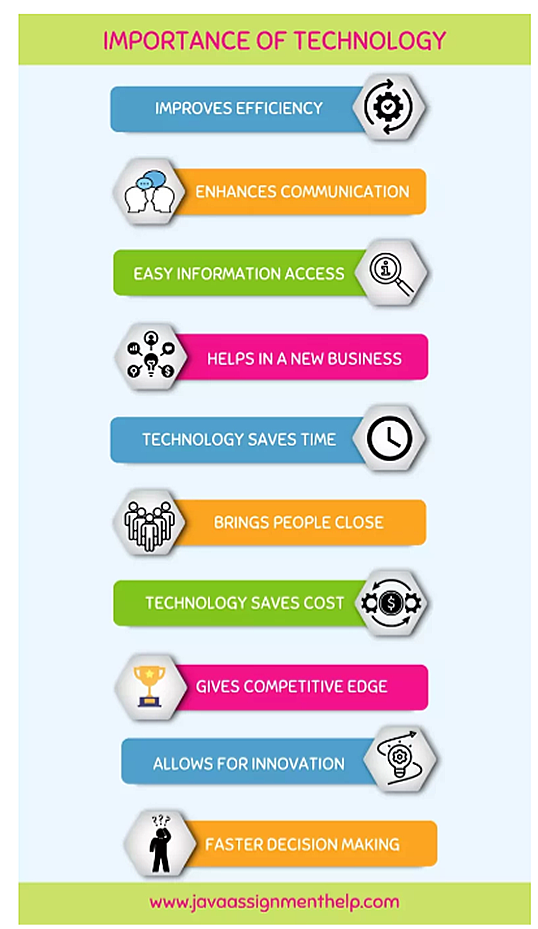
The need for technology in traditional businesses arises from several factors. Here are some key reasons:
Efficiency and Productivity
Technology can significantly enhance efficiency and productivity in traditional businesses. Automation of repetitive tasks, streamlining processes, and utilizing specialized software can save time and resources, enabling businesses to accomplish more in less time.
Competitive Advantage
In today’s fast-paced business landscape, technology often provides a competitive edge. Adopting advanced technologies can help businesses stay ahead of their competitors, improve customer service, and deliver products or services more effectively.
Cost Reduction
Technology can help traditional businesses reduce costs in various ways. For instance, cloud computing allows for the storage and processing of data without the need for extensive on-site infrastructure. Online communication tools can minimize travel expenses, and inventory management systems can prevent overstocking or stockouts.
Decision Making and Analytics
With the abundance of data available, technology enables businesses to collect, analyze, and interpret information more efficiently. Advanced analytics tools can provide valuable insights into customer behavior, market trends, and internal operations, aiding in informed decision-making.
Enhanced Communication and Collaboration
Technology facilitates communication and collaboration among employees, departments, and even geographically dispersed teams. Email, instant messaging, video conferencing, and project management tools enable seamless information exchange, fostering teamwork and improving overall productivity.
Customer Engagement and Satisfaction
Technology allows businesses to better understand and engage with their customers. Customer relationship management (CRM) systems, social media platforms, and personalized marketing tools enable targeted and tailored interactions, leading to improved customer satisfaction and loyalty.
Innovation and Adaptation
Traditional businesses need to adapt to changing market dynamics and consumer demands. Technology enables innovation by providing platforms for experimentation, prototyping, and rapid development. Adopting new technologies can open up new business models, revenue streams, and opportunities for growth.
It’s important to note that the specific technology needs of traditional businesses may vary depending on their industry, size, and individual goals. However, overall, integrating technology into traditional business operations can offer numerous advantages and help them thrive in today’s digital age.
The traditional technology sales cycle
“In this digital age, buyers are generally 60% of the way through the sales process before even approaching a supplier. Forrester Research states that the first seller to create a vision to value wins the business 74% of the time. So, how have sales presentations adjusted in the new age to allow reps to win more first buyer meetings?”
The image below will give you an idea of how the sales cycle has changed over the years.
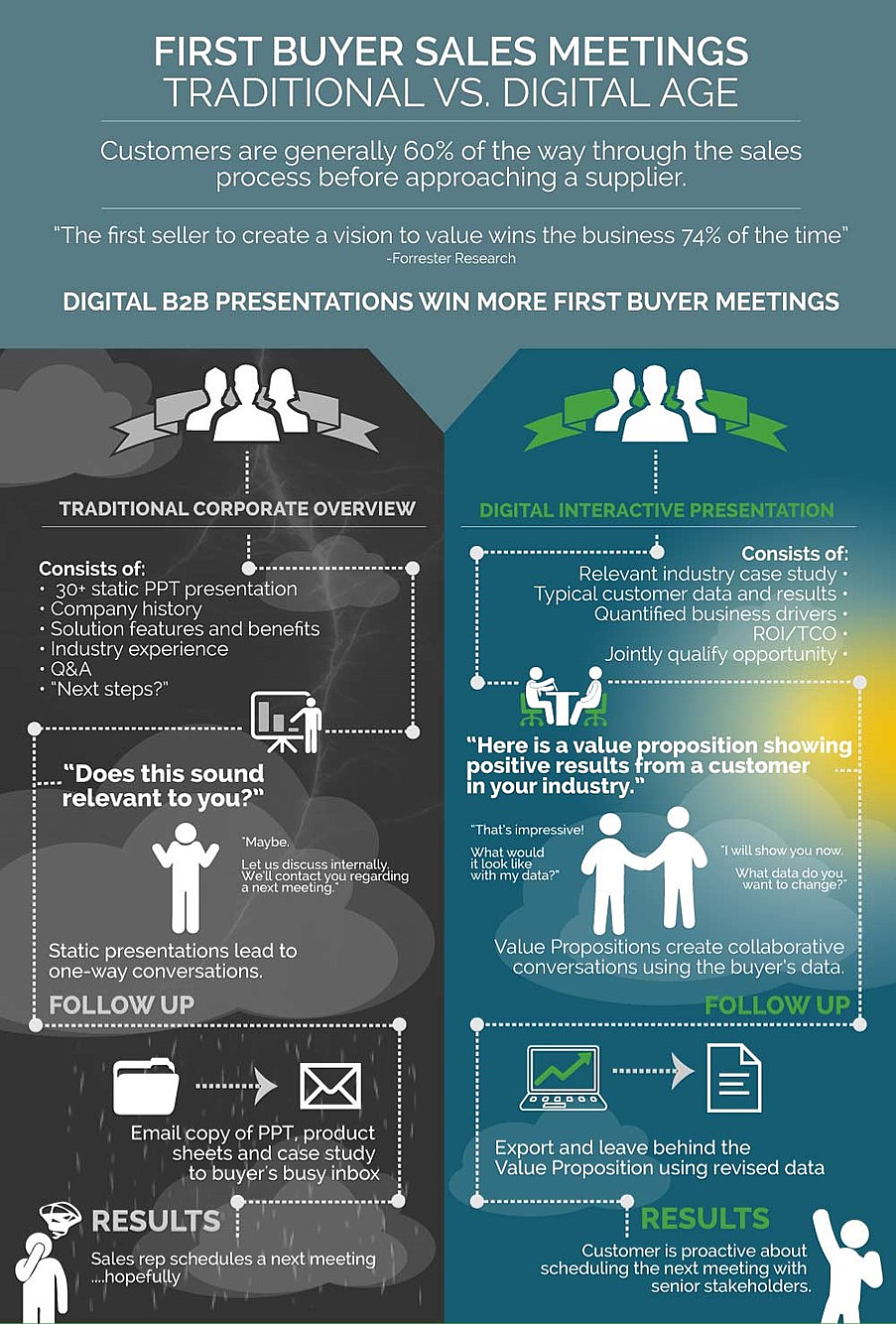
Source: Leverage Point
The traditional technology sales cycle refers to the historical approach followed in the sales process of technology products or services before the advent of modern sales practices and advancements in digital technologies. Here are the key aspects of the traditional technology sales approach:
1. Product-Centric Approach: The traditional sales cycle was primarily focused on the technology product itself. Sales representatives would emphasize the features, specifications, and technical capabilities of the product to attract customers.
2. Limited Customer Information: Customers had limited access to information about technology products. They relied heavily on sales representatives to provide them with details about the product, its benefits, and how it could address their specific needs.
3. Direct Sales Interactions: The sales process involved direct and personal interactions between sales representatives and customers. This typically involved face-to-face meetings, phone calls, or physical product demonstrations.
4. Printed Sales Collateral: Sales teams would provide printed sales collateral, such as product brochures, technical documentation, and specification sheets, to support the sales process. These materials helped educate customers and answer their questions about the product.
5. Long Sales Cycles: Sales cycles for technology products were often lengthy due to the complexity of the products and the need for extensive customer education and evaluation. Multiple meetings and negotiations were required to move customers through the sales pipeline.
6. Limited Sales Analytics: Tracking and reporting of sales activities were primarily done manually. Sales teams often relied on spreadsheets or basic Customer Relationship Management (CRM) systems to manage customer interactions and monitor the sales pipeline.
7. Post-Sales Customer Support: Customer support and service were typically seen as post-sales activities in the traditional sales cycle. Once the sale was completed, the customer would engage with support teams for any product-related issues or assistance.
8. Transactional Focus: The traditional sales cycle had a transactional focus, with the primary goal of closing individual deals. Long-term customer relationships and customer success were not always prioritized in the same way as they are in the modern sales cycle.
It’s important to note that the traditional technology sales cycle has evolved with the advancement of technology, changing customer expectations, and the introduction of modern sales practices. The shift towards a more customer-centric, consultative approach in the modern sales cycle reflects a response to the limitations of the traditional model and a recognition of the importance of building long-term relationships and driving customer success.
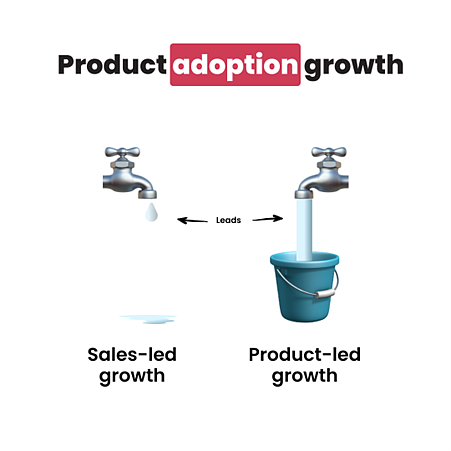
Source: Calixa
The traditional technology sales cycle refers to the process that companies followed to sell their technology products or services before the advent of modern-day technology and digital transformation. The duration of the traditional sales cycle can vary depending on the industry and specific circumstances, but it generally involved several distinct stages and could last for weeks to months.
Here are the typical stages of the traditional technology sales cycle:
1. Prospecting and Lead Generation: Companies would identify potential customers through various methods, such as market research, trade shows, cold calling, referrals, or direct mail campaigns. The goal was to generate leads and create a list of potential buyers.
2. Initial Contact and Qualification: Once leads were generated, sales representatives would initiate contact with prospects to gather more information and qualify them based on their needs, budget, decision-making authority, and potential fit for the product or service being offered.
3. Needs Assessment and Solution Design: In this stage, the sales team would work closely with the prospect to understand their specific requirements, pain points, and business objectives. They would then design a solution that aligns with the prospect’s needs and demonstrate its value proposition.
4. Proposal and Presentation: The sales team would create a formal proposal outlining the recommended solution, pricing details, implementation timeline, and any additional terms or conditions. This proposal would be presented to the prospect in a face-to-face meeting or through other means of communication.
5. Negotiation and Objection Handling: Prospects often had concerns or objections regarding the proposed solution or its cost. Sales representatives would engage in negotiation, address objections, provide additional information or demonstrations, and work towards finding a mutually acceptable agreement.
6. Closing the Sale: Once the negotiations were successful, the sales representative would obtain the prospect’s commitment to purchase the product or service. This might involve signing a contract, obtaining approvals from higher management, or following other internal processes.
7. Implementation and Delivery: After the sale was closed, the responsibility would shift to the implementation team to deliver the product or service as agreed upon. This stage might involve installation, customization, training, and any necessary technical support.
8. Post-Sales Support and Account Management: The sales cycle did not end with the delivery of the product or service. Companies would provide ongoing support to ensure customer satisfaction, address any issues or concerns, and foster long-term relationships. This stage aimed at upselling, cross-selling, and obtaining customer referrals.
The duration of the traditional sales cycle could be quite lengthy due to the reliance on in-person meetings, physical paperwork, and manual processes. It was commonly used for several decades, but the specific timeline for its widespread usage and subsequent transformation varies across industries and companies.
The modern-day technology sales cycle has been significantly influenced by digitalization, automation, and the rise of online platforms. These changes have streamlined the process, reduced the time required for each stage, and opened up new avenues for lead generation, engagement, and customer relationship management.
The pros and cons of the traditional technology sales cycle
The traditional technology sales cycle had its advantages and disadvantages. Here are some pros and cons associated with the traditional sales cycle:
Pros:
1. Product Emphasis: The traditional sales cycle allowed for a deep focus on the features, specifications, and technical capabilities of the technology product. This emphasis could be valuable when selling to customers who prioritize technical details and seek specific functionalities.
2. Direct Sales Interactions: The personal and direct interactions between sales representatives and customers allowed for a more personalized and tailored sales approach. It provided an opportunity to address customer questions, objections, and concerns in real-time and build rapport.
3. Printed Sales Collateral: Printed sales collateral, such as brochures and technical documentation, could serve as tangible resources that customers could review at their convenience. These materials could provide in-depth information about the product and support the sales process.
Cons:
1. Limited Customer Information: The traditional sales cycle relied on sales representatives to provide customers with information about the technology product. This limited access to independent research and information could lead to a lack of transparency and dependency on the salesperson’s knowledge.
2. Lengthy Sales Cycles: The complexity of technology products and the need for extensive customer education and evaluation often resulted in lengthy sales cycles. This could lead to delays, increased costs, and prolonged decision-making processes for customers.
3. Manual Sales Tracking and Reporting: Traditional sales cycles often relied on manual tracking and reporting, using spreadsheets or basic CRM systems. This manual process could be time-consuming, prone to errors, and limit the ability to generate meaningful sales insights and analytics.
4. Transactional Focus: The traditional sales cycle was primarily transaction-oriented, with a greater emphasis on closing individual deals rather than building long-term customer relationships. This approach may not align with the growing importance of customer success and customer-centric strategies in today’s business landscape.
5. Limited Post-Sales Engagement: Post-sales customer support and engagement were often seen as separate functions, potentially leading to a disconnect between the sales team and support teams. This could result in gaps in customer satisfaction and hinder long-term customer success.
It’s important to note that while the traditional technology sales cycle had its merits, the evolution towards a more customer-centric, consultative approach in the modern sales cycle addresses many of the limitations of the traditional model. The modern sales cycle aims to build stronger customer relationships, prioritize customer success, leverage technology for analytics and automation, and adapt to the changing dynamics of the technology market.

Case Study: IBM (International Business Machines Corporation)
IBM, founded in 1911, has a long history of selling technology products and services. In its early years, IBM predominantly operated within the realm of large mainframe computers and associated services. During that time, the sales cycle for IBM’s mainframe solutions followed a traditional approach that involved several stages and relied heavily on in-person interactions.
Traditional Sales Cycle at IBM:
1. Prospecting and Lead Generation: IBM employed a range of methods, including trade shows, industry events, and targeted marketing campaigns, to identify potential customers interested in mainframe technology.
2. Personal Sales Engagements: Sales representatives from IBM engaged in face-to-face meetings with potential customers. These meetings allowed for detailed discussions to understand customer requirements and pain points.
3. Customization and Solution Design: IBM’s sales team worked closely with customers to design custom mainframe solutions tailored to their specific needs. This involved extensive consultation, analysis, and collaboration to ensure the solution aligned with the customer’s business objectives.
4. Proposal and Negotiation: IBM prepared formal proposals that included pricing, detailed specifications, and contractual terms. The sales team presented these proposals to customers and engaged in negotiations to address any concerns or objections.
5. Implementation and Delivery: After finalizing the sale, IBM’s implementation team would install and configure the mainframe solution on the customer’s premises. This involved physical deployment, customization, and training.
6. Ongoing Support and Maintenance: IBM provided ongoing support and maintenance services to customers, ensuring the smooth functioning of the mainframe systems. Regular maintenance, updates, and troubleshooting were part of the service agreement.
Advancements in technology, specifically the shift towards smaller, more affordable computing devices and the rise of cloud computing, have significantly transformed the sales cycle for IBM and the technology industry as a whole.
In recent years, IBM has diversified its offerings to include a wide range of cloud-based services, artificial intelligence, data analytics, and hybrid cloud solutions. The company has embraced a modern technology sales cycle that leverages digital marketing, online self-service platforms, virtual sales engagements, and automated processes.
This transition has allowed IBM to adapt to changing customer expectations and market demands, providing faster deployment, scalability, and cost-effective solutions. While IBM continues to provide traditional enterprise solutions, the company has evolved its sales cycle to align with the advancements in technology and the digital transformation occurring in the industry.

Exercise 1.1: Traditional Technology Sales Cycle
1. Divide the participants into small groups of 3-5 members.
2. Provide each group with a flipchart or a whiteboard along with markers or a pen and paper for each participant.
3. Explain to the participants that they will be participating in a group exercise to recall and write down the main aspects of the traditional technology sales cycle.
4. Set a time limit of 10 minutes for the exercise.
5. Instruct the participants to work together as a group to brainstorm and write down the key stages or aspects of the traditional technology sales cycle. They should aim to create a comprehensive list that covers the major steps involved in the process.
6. Encourage active discussion and collaboration within the group. Participants should draw from their collective knowledge and experience to recall the different stages and aspects of the traditional sales cycle.
7. Remind the participants to focus on the traditional sales cycle, emphasizing the stages that were commonly followed before the advent of modern technology and digital transformation.
8. Once the time limit is up, ask each group to present their lists to the rest of the participants. Encourage discussion and clarification if there are any variations or differences between the groups’ lists.
9. Facilitate a group discussion to compare the lists and compile a master list on a shared flipchart or whiteboard, incorporating the main aspects of the traditional technology sales cycle as identified by the groups.
10. Summarize the discussion and highlight any significant aspects or stages that were commonly identified across the groups.

Course Manual 2: Modern Business and Technology Consumption: The Need for Agility
“Modern Business and Technology Consumption: The Need for Agility” refers to the recognition that in today’s rapidly changing business and technological landscape, organizations must be able to adapt quickly and efficiently to remain competitive. It highlights the importance of agility in both business strategies and technology implementation.
In the context of business, agility refers to the ability of an organization to respond and adapt swiftly to market trends, customer demands, and competitive pressures. It involves being flexible, proactive, and open to change, enabling companies to seize new opportunities and address challenges promptly. Agile businesses prioritize innovation, collaboration, and continuous improvement to stay ahead in dynamic environments.
Regarding technology consumption, it emphasizes the need for organizations to embrace and leverage technology in an agile manner. This includes adopting emerging technologies, such as cloud computing, artificial intelligence, and automation, to enhance operational efficiency, customer experience, and overall business performance. By being agile in technology consumption, businesses can quickly integrate new solutions, adapt to evolving digital trends, and capitalize on technological advancements.
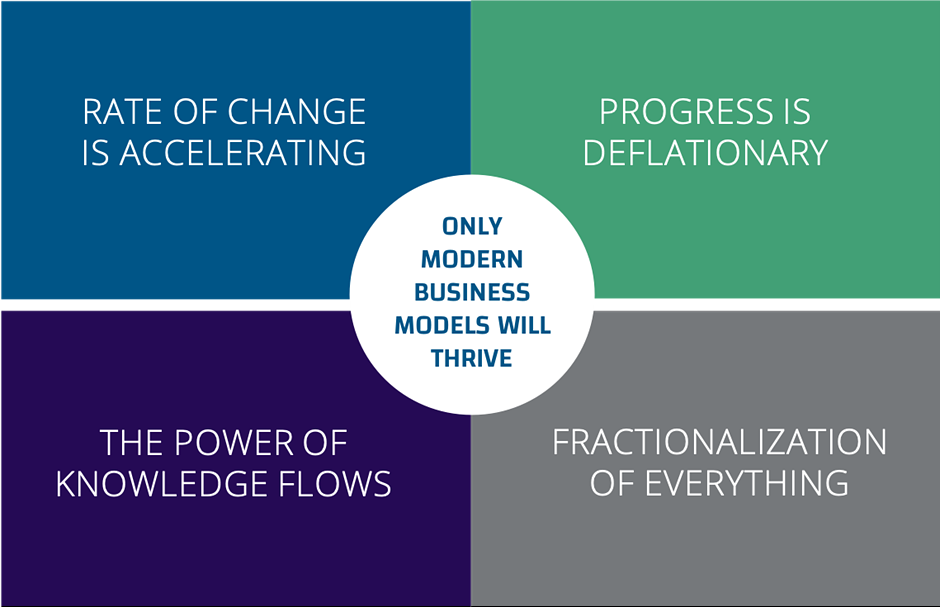
Source: MBO Partners
Rates of change in modern business
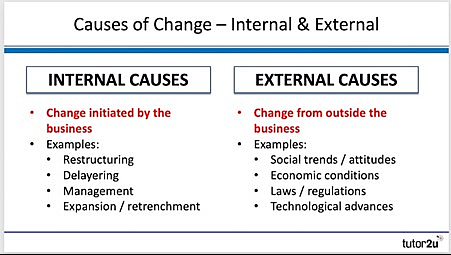
1. Technology Adoption: The rate at which businesses adopt new technologies is accelerating. Organizations must continually assess and integrate emerging technologies to stay competitive and meet evolving customer demands.
2. Customer Behavior: Customer preferences and behaviors are changing rapidly, driven by factors such as technology advancements, social media influence, and shifting societal trends. Businesses must stay agile to understand and adapt to these changing behaviors to deliver relevant products and services.
3. Globalization: Globalization has increased the interconnectedness of markets and intensified competition. Businesses need to navigate global markets, adapt to diverse cultural norms, and respond to fluctuating economic conditions to expand and remain competitive.
4. Regulatory Compliance: Regulatory frameworks are evolving, and compliance requirements are changing more frequently. Businesses must stay up to date with the latest regulations, adjust their processes and practices accordingly, and ensure compliance to avoid legal and financial risks.
5. Data-driven Decision Making: The volume and variety of data available to businesses are growing exponentially. Organizations need to leverage data analytics and insights to make informed decisions quickly and gain a competitive advantage.
Rates of Change in the Modern Technology Services Industry
1. Technology Advancements: The technology services industry itself is characterized by rapid and constant change. New technologies, frameworks, and methodologies emerge regularly, requiring technology service providers to stay updated and adaptable to meet client needs effectively.
2. Digital Transformation: Organizations across industries are undergoing digital transformations to leverage technology for improved efficiency, innovation, and customer experience. Technology service providers must assist clients in this transformation and provide solutions that align with the evolving digital landscape.
3. Cloud Computing: The adoption of cloud computing is rapidly growing, enabling organizations to scale their operations, access flexible infrastructure, and leverage advanced services. Technology service providers must keep pace with cloud technologies and support clients in their cloud adoption journey.
4. Security and Privacy: With the increasing reliance on technology, cybersecurity threats and privacy concerns are on the rise. Technology service providers must constantly update their security practices, employ robust measures, and provide secure solutions to protect client data and systems.
5. Artificial Intelligence and Automation: Artificial intelligence (AI) and automation technologies are reshaping industries. Service providers need to develop AI capabilities, implement automation tools, and assist clients in leveraging these technologies to streamline operations and gain a competitive edge.
6. Agile Development and DevOps: Agile methodologies and DevOps practices are gaining prominence for efficient software development and delivery. Technology service providers must adopt these methodologies to deliver software solutions quickly and ensure seamless collaboration between development and operations teams.
These rates of change in the modern technology services industry highlight the need for continuous learning, upskilling, and a proactive approach to stay ahead of the curve and meet evolving client demands.
The need for agility and flexibility
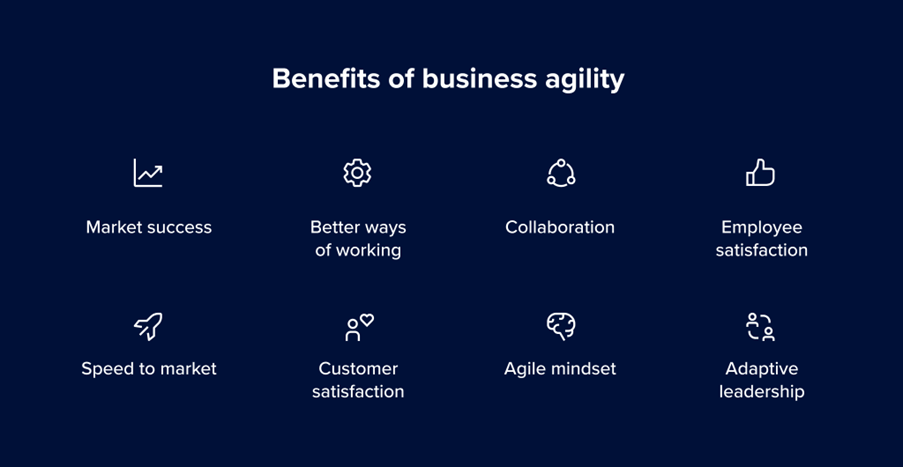
Source: Ring Central
In the context of modern business and the technology services industry, the need for agility and flexibility arises from the rapidly changing landscape and the following factors:
Adaptation to Change: Agility and flexibility enable organizations to adapt quickly to the changing business environment. They allow businesses to respond promptly to market shifts, customer demands, technological advancements, and regulatory changes. Being agile and flexible ensures that organizations can adjust their strategies, operations, and services to remain relevant and competitive.
Competitive Advantage: Agility and flexibility provide a competitive edge. Organizations that can respond swiftly to market opportunities, customer needs, and industry disruptions are better positioned to capture new business prospects, outmaneuver competitors, and innovate effectively. Agility allows businesses to seize opportunities proactively, while flexibility enables them to pivot and adjust course when necessary.
Customer-Centric Approach: Customer expectations and preferences are evolving rapidly. Agility and flexibility help organizations tailor their products, services, and experiences to meet changing customer demands. By adapting quickly to customer needs and delivering personalized solutions, businesses can enhance customer satisfaction, loyalty, and retention.
Innovation and Experimentation: Agility and flexibility foster a culture of innovation and experimentation. Organizations that embrace agility are more open to exploring new ideas, testing hypotheses, and iterating on their offerings. This enables them to bring new products and services to market faster, iterate based on customer feedback, and stay ahead in dynamic industries.
Risk Mitigation: Agility and flexibility help mitigate risks associated with unforeseen events, market volatility, and disruptions. By being agile, organizations can quickly adjust their operations, diversify their offerings, and explore new markets or partnerships to mitigate the impact of risks. Flexibility allows for adaptive strategies and contingency plans to address unexpected challenges effectively.
Talent Retention and Recruitment: Agile and flexible organizations tend to attract and retain top talent. A culture that embraces agility and flexibility demonstrates a willingness to adapt, innovate, and support professional growth. This appeals to individuals who seek dynamic and rewarding work environments, resulting in a competitive advantage in attracting skilled employees.
Technology Integration: In the technology services industry, agility and flexibility are crucial for adapting to new technologies and integrating them effectively. Technology landscapes are evolving rapidly, and service providers need to quickly adopt emerging technologies, update their skill sets, and offer flexible solutions to meet client needs.
Overall, the need for agility and flexibility in modern business and the technology services industry stems from the dynamic nature of markets, technology advancements, customer expectations, and competitive landscapes. By embracing agility and flexibility, organizations can navigate uncertainties, capitalize on opportunities, drive innovation, and stay resilient in an ever-changing environment.

Case Study: Blockbuster and the Rise of Online Streaming
Blockbuster, a well-known video rental chain, serves as a classic example of a company that failed to keep up with technology and subsequently lost its competitive edge. Blockbuster dominated the video rental market in the late 1990s and early 2000s, with thousands of stores across the United States and a vast selection of movies for rent.
However, Blockbuster struggled to adapt to changing consumer preferences and emerging technologies. The company relied on a traditional brick-and-mortar business model, where customers would visit physical stores to rent DVDs and VHS tapes. This approach became increasingly outdated with the advent of online streaming and digital media.
Blockbuster faced several challenges:
1. Failure to Embrace Online Rental and Streaming: Blockbuster had the opportunity to venture into online rental and streaming services, but it was slow to recognize the potential of this emerging technology. It initially underestimated the impact of platforms like Netflix, which began offering DVD rentals by mail and later transitioned to online streaming.
2. Inflexibility in Business Model: Blockbuster’s reliance on physical stores and late fees for rentals hindered customer convenience. In contrast, online rental and streaming platforms provided greater flexibility, convenience, and a more personalized viewing experience. Blockbuster’s rigid business model limited its ability to adapt to changing customer preferences and disrupted the industry.
3. Lack of Investment in Technological Infrastructure: Blockbuster failed to invest adequately in technology infrastructure and digital platforms. This limited their ability to compete with companies that were leveraging advanced algorithms, personalized recommendations, and user-friendly interfaces to enhance the customer experience.
The consequences of Blockbuster’s inability to keep up with technology were significant:
1. Declining Revenues and Loss of Market Share: As online streaming gained popularity, Blockbuster experienced a decline in revenues and market share. Consumers embraced the convenience of online platforms, which allowed them to access a vast library of movies and TV shows from the comfort of their homes.
2. Bankruptcy and Closure of Stores: Blockbuster filed for bankruptcy in 2010 and subsequently closed the majority of its remaining stores. The company’s failure to adapt to the digital age resulted in substantial financial losses and a rapid decline in its physical presence.
3. Shifting Consumer Behavior: The rise of online streaming not only impacted Blockbuster but also transformed consumer behavior and expectations. The convenience, affordability, and extensive content libraries offered by online streaming services set new industry standards, making it increasingly challenging for traditional video rental stores to compete.
This case illustrates the importance of embracing technological advancements and staying attuned to evolving consumer preferences. Blockbuster’s failure to recognize and adapt to the rise of online streaming ultimately led to its downfall, while companies that embraced digital disruption and innovation flourished in the evolving media landscape.
Pressures of Cash Flow
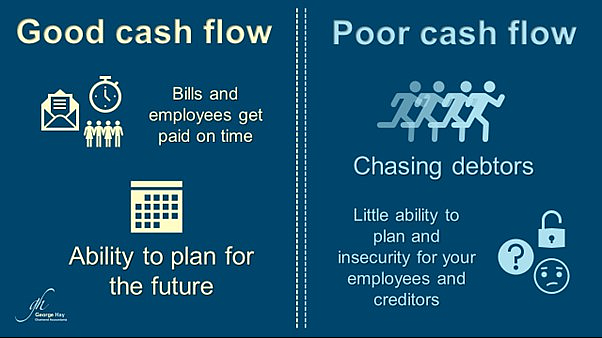
Cash flow refers to the movement of money into and out of a business over a specific period. Cash flow pressures can arise from various factors, including:
1. Capital Intensity: Certain industries or businesses require substantial upfront investments in assets or infrastructure. These capital-intensive businesses may face significant cash outflows during the initial stages, affecting liquidity and cash flow.
2. Seasonal Fluctuations: Businesses that experience seasonal demand variations may face uneven cash flows. They may generate significant revenues during peak seasons but struggle with cash shortages during off-peak periods, making it challenging to manage expenses and meet financial obligations.
3. Delayed Payments: If customers delay payments or if there are long payment terms with suppliers, it can impact the inflow and outflow of cash. Businesses must manage their receivables and payables effectively to maintain healthy cash flow.
4. Operating Expenses: High operating expenses, such as payroll, rent, utilities, and inventory costs, can put pressure on cash flow. These recurring expenses must be carefully managed to ensure sufficient funds are available for day-to-day operations.
Process for Capital Purchase Decision Making
The process for making capital purchase decisions involves several steps to evaluate the feasibility, benefits, and financial impact of acquiring new assets. Here’s a general outline of the process:
1. Identify Needs: Determine the specific needs and objectives that drive the purchase decision. Consider factors such as business growth, efficiency improvements, cost savings, or technology upgrades.
2. Conduct a Cost-Benefit Analysis: Assess the costs associated with the purchase, including the initial investment, ongoing maintenance, training, and potential operational disruptions. Evaluate the potential benefits, such as increased productivity, competitive advantage, revenue growth, or cost reductions.
3. Evaluate Alternatives: Explore different options and alternatives to address the identified needs. Consider whether a capital purchase is the most suitable solution or if alternative options like leasing, renting, or outsourcing would be more cost-effective or practical.
4. Financial Analysis: Analyze the financial impact of the capital purchase. Calculate the return on investment (ROI), payback period, net present value (NPV), and internal rate of return (IRR). Assess the impact on cash flow, profitability, and financial ratios.
5. Risk Assessment: Identify and evaluate the risks associated with the capital purchase decision. Consider factors such as technology obsolescence, market volatility, regulatory changes, competitive landscape, and potential disruptions to operations.
6. Decision Making: Based on the analysis and assessment, make an informed decision whether to proceed with the capital purchase or explore alternative options. Consider the financial feasibility, strategic alignment, and overall impact on the business.
7. Implementation and Monitoring: If the decision is made to proceed, implement the purchase and closely monitor its impact. Track key performance indicators (KPIs), assess the actual ROI, and make adjustments as necessary to optimize the utilization of the purchased assets.
It’s important to note that the capital purchase decision-making process may vary depending on the organization, the specific assets being considered, and the complexity of the purchase. In some cases, additional steps such as vendor evaluations, negotiation, and legal considerations may be involved.
What are the pros and cons of owning or hiring technology services?
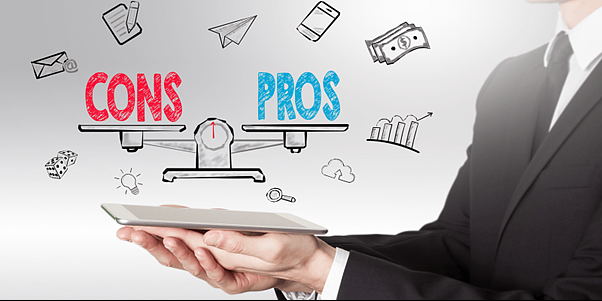
Source: Flex Jobs
Owning or hiring technology services both have their pros and cons. Here’s a breakdown of the advantages and disadvantages of each approach:
Owning Technology Services:
Pros:
1. Control: When you own technology services in-house, you have complete control over the infrastructure, systems, and processes. You can customize them to fit your specific requirements and business needs.
2. Immediate Access: Owning technology services means having immediate access to the resources and expertise within your organization. This can facilitate quick decision-making, problem-solving, and execution.
3. Cost Efficiency (in some cases): Depending on the scale and nature of your technology needs, owning the services might be cost-effective in the long term. You can avoid recurring service fees and have more control over the expenses associated with maintaining and upgrading the technology infrastructure.
Cons:
1. High Initial Investment: Building and maintaining technology services in-house requires a significant upfront investment. Costs include hardware, software licenses, infrastructure setup, hiring and training skilled personnel, and ongoing maintenance and upgrades.
2. Expertise and Skill Gaps: It can be challenging to attract, hire, and retain skilled professionals with expertise in diverse technology domains. Keeping up with the rapid pace of technological advancements and ensuring your team has the necessary skills can be demanding and costly.
3. Scalability and Flexibility: In-house technology services may lack scalability and flexibility. As your business grows or requires changes in technology, you might face limitations and delays in scaling up or adopting new solutions.
Hiring Technology Services:
Pros:
1. Access to Expertise: Hiring technology services allows you to tap into the expertise of specialized professionals who stay updated with the latest industry trends and possess a deep understanding of specific technologies. You gain access to a broader skill set without the need for extensive training or hiring efforts.
2. Scalability and Flexibility: Technology service providers often offer scalable solutions that can be adjusted based on your business needs. You can easily scale up or down, adopt new technologies, and access additional resources as required.
3. Cost Flexibility: Hiring technology services often offers cost flexibility. Instead of large upfront investments, you can pay for services based on usage or opt for subscription-based models. This can make it easier to manage costs, especially for smaller businesses or those with fluctuating technology needs.
Cons:
1. Dependency on External Providers: Relying on external technology service providers means you are dependent on their availability, responsiveness, and service quality. If issues arise or if there are delays in service, it can impact your operations and productivity.
2. Potential Lack of Control: Hiring external technology services means relinquishing some control over the infrastructure, systems, and processes. Customization and customization options may be limited, and you may have to adapt your operations to fit the service provider’s offerings.
3. Data Security and Privacy Concerns: Entrusting your technology services to external providers raises data security and privacy considerations. You need to ensure that the service provider has robust security measures in place to protect your sensitive information.
Ultimately, the decision to own or hire technology services depends on various factors such as your business size, budget, specific technology requirements, in-house expertise, and long-term strategic goals. Some businesses may choose a hybrid approach, combining in-house technology services with external partnerships, to leverage the benefits of both options.
Practical Example
Let’s consider a practical example in the context of a growing e-commerce business:
Owning Technology Services:
Pros: The e-commerce business decides to build and own its technology services in-house.
1. Control: By owning the technology services, the business has complete control over the infrastructure, website development, and maintenance processes. They can customize the platform to align with their unique requirements, branding, and user experience goals.
2. Immediate Access: With in-house technology services, the business has immediate access to its internal team of developers, designers, and IT professionals. This enables quick decision-making, prompt bug fixes, and faster feature implementation, leading to a more agile development process.
3. Cost Efficiency (in some cases): If the business has a large-scale operation and predicts long-term technology needs, owning the services may be cost-effective. The upfront investment in building the infrastructure and hiring skilled professionals may be justified by the long-term savings in recurring service fees.
Cons:
1. High Initial Investment: Building and maintaining the technology services in-house require substantial upfront investments. Costs include hiring skilled professionals, setting up infrastructure, purchasing software licenses, and ongoing maintenance expenses.
2. Expertise and Skill Gaps: The business may face challenges in finding and retaining highly skilled professionals with expertise in areas such as web development, cybersecurity, and infrastructure management. Keeping up with the rapidly evolving technological landscape can also require significant investments in training and professional development.
Hiring Technology Services:
Pros: The e-commerce business decides to hire external technology services for their website development and hosting.
1. Access to Expertise: By hiring a technology service provider specializing in e-commerce solutions, the business gains access to a team of professionals experienced in building and managing online platforms. They bring specialized knowledge and expertise, reducing the need for extensive training or hiring efforts.
2. Scalability and Flexibility: Hiring technology services allows the business to scale up or down as per their growth trajectory and seasonal demands. The service provider can handle the infrastructure, server capacity, and technical support, ensuring the website remains responsive and available even during peak periods.
3. Cost Flexibility: Rather than making a significant upfront investment, the business can pay for the technology services on a monthly or usage-based model. This provides cost flexibility, particularly for smaller businesses that may not have the financial resources for in-house technology infrastructure.
Cons:
1. Dependency on External Providers: Relying on external technology services introduces a level of dependency on the service provider. The business needs to ensure the provider is reliable, responsive to issues or changes, and able to meet agreed-upon service level agreements (SLAs).
2. Potential Lack of Control: The business may have limited control over certain aspects of the technology services. Customization options may be limited to the offerings of the service provider, and implementing specific features or changes may require coordination and negotiation with the provider.
3. Data Security and Privacy Concerns: Entrusting customer data and sensitive information to an external service provider raises security and privacy considerations. The business needs to ensure the service provider has robust security measures, complies with data protection regulations, and follows best practices for data handling and storage.
In this example, the decision to own or hire technology services depends on factors such as the business’s size, financial resources, availability of skilled professionals, and long-term growth plans. Owning the technology services offers more control and customization but requires significant upfront investment and expertise, while hiring external services provides access to specialized expertise, scalability, and cost flexibility but may entail dependency on the service provider.
Consumption Models
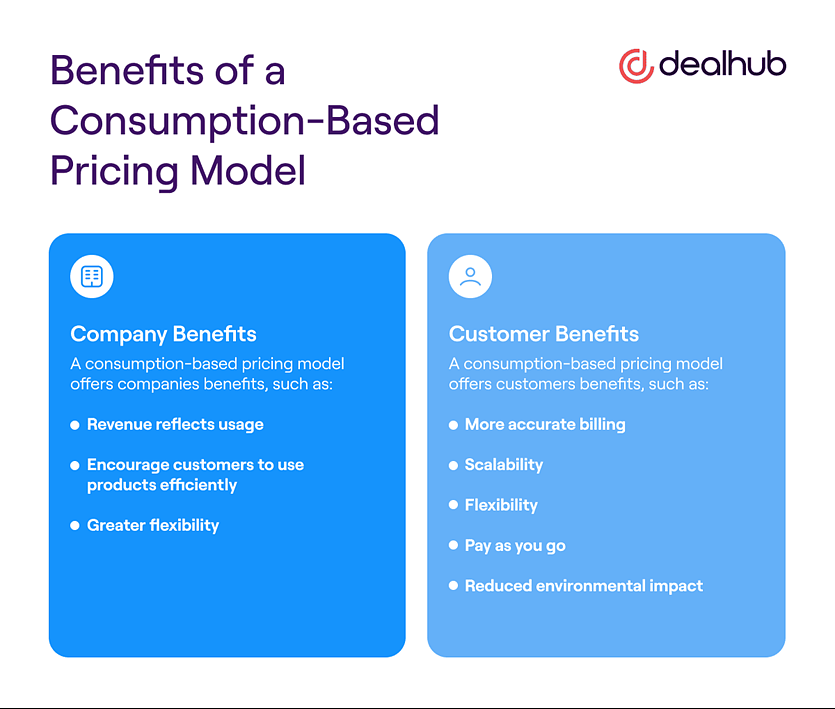
An “as-a-service” consumption model and a capital purchase consumption model are two different approaches to acquiring and utilizing goods or services. Here’s a breakdown of each:
1. As-a-Service Consumption Model: In an as-a-service consumption model, goods or services are delivered to the consumer on a subscription or pay-per-use basis, typically over the internet. The consumer pays for the use or access to the service rather than owning the underlying assets. This model is commonly associated with cloud computing and technology services. Here are a few examples:
• Software as a Service (SaaS): Users access software applications hosted on remote servers over the internet, paying a recurring subscription fee. Examples include online productivity tools, customer relationship management (CRM) systems, and collaboration platforms.
• Platform as a Service (PaaS): Developers access a complete development environment hosted on a cloud platform, enabling them to build, deploy, and manage applications. Users pay for the platform and infrastructure resources used.
• Infrastructure as a Service (IaaS): Users access virtualized computing resources, such as virtual machines, storage, and networks, provided by a cloud service provider. They pay for the resources consumed, allowing for scalability and flexibility.
The key aspect of the as-a-service model is that consumers benefit from the convenience, scalability, and cost flexibility offered by the service provider, without having to invest in the infrastructure or assets themselves.
2. Capital Purchase Consumption Model: In a capital purchase consumption model, the consumer acquires and owns the assets upfront through a capital expenditure. This model involves purchasing goods or services as one-time investments, typically for long-term use. Here are a few examples:
• Buying Physical Assets: This includes purchasing tangible goods like machinery, equipment, vehicles, or office space. The consumer assumes full ownership and responsibility for the asset’s maintenance, upgrades, and eventual replacement.
• Traditional Software Licensing: Under this model, businesses purchase software licenses upfront, typically with a perpetual usage right. The software is installed locally on the consumer’s infrastructure, and they are responsible for managing and maintaining it.
In the capital purchase model, consumers have full control and ownership of the assets, but they also bear the associated costs, including maintenance, upgrades, and eventual disposal.
The choice between the as-a-service consumption model and the capital purchase consumption model depends on various factors such as the nature of the goods or services, budget considerations, scalability needs, and desired level of control. As-a-service models offer flexibility, cost efficiency, and scalability, while capital purchase models provide ownership and greater control but involve higher upfront costs and ongoing maintenance responsibilities.

Exercise 1.2: Pro’s and Cons
1. Cost Flexibility: As-a-service models often involve pay-per-use or subscription-based pricing, allowing consumers to scale their usage and costs based on their needs. This can be cost-effective, especially for businesses with fluctuating demand or budget constraints.
2. Scalability and Agility: As-a-service offerings are designed to be flexible and scalable, enabling businesses to quickly adjust their usage and access additional resources as needed. This allows for rapid growth, expansion into new markets, or handling sudden spikes in demand.
3. Reduced Maintenance and Upgrades: Service providers handle the maintenance, upgrades, and infrastructure management, relieving consumers of these responsibilities. This frees up resources and allows businesses to focus on their core competencies.
4. Access to Expertise: As-a-service providers often possess specialized knowledge and expertise in their respective domains. Consumers can leverage this expertise without having to build in-house capabilities or invest in extensive training.
1. Dependency on Service Provider: The as-a-service model relies on the service provider’s availability, reliability, and quality of service. If there are issues or disruptions on the provider’s end, it can impact the consumer’s operations.
2. Potential Lack of Customization: As-a-service offerings may have limitations in terms of customization or tailoring to specific requirements. Consumers may need to adapt their processes or workflows to fit the standardized services offered.
3. Data Security and Privacy Concerns: Entrusting sensitive data to a service provider raises security and privacy considerations. Consumers must ensure that the provider has robust security measures and complies with relevant regulations to protect their data.
1. Ownership and Control: With a capital purchase, consumers have complete ownership and control over the assets. They can customize, modify, and use the assets according to their specific needs and preferences.
2. Long-term Cost Savings: For assets with long lifespans, a capital purchase can result in cost savings over time compared to ongoing subscription fees or pay-per-use charges. This can be advantageous for assets with predictable usage and lower maintenance costs.
3. Tailored Solutions: With ownership, consumers have the freedom to tailor the assets to their unique requirements. They can customize software configurations, hardware setups, or infrastructure designs to align with their specific business needs.
1. Upfront Capital Investment: The capital purchase model requires a significant upfront investment, which can strain budgets, particularly for small businesses or startups. This may limit access to advanced technologies or comprehensive solutions.
2. Maintenance and Upgrades: Consumers are responsible for the maintenance, upgrades, and lifecycle management of the assets. This includes costs associated with repairs, software updates, hardware replacements, and disposal when the assets become obsolete.
3. Lack of Scalability: Capital purchases may not offer the same level of scalability as as-a-service models. Upgrading or expanding infrastructure can involve additional costs, lead time, and potential disruptions to business operations.
4. Technology Obsolescence: With rapidly evolving technology, assets purchased upfront may become outdated over time, requiring further investment to stay up to date with the latest advancements.

Course Manual 3: Modern Business and Technology Consumption: The New Sales Cycle
The gap between the value that technology products have the potential to deliver and what customers can actually achieve is a phenomenon often referred to as the “value realization gap” or the “value gap.” This concept highlights the increasing disparity between the capabilities and possibilities offered by technology and the actual benefits and outcomes that customers are able to derive from using these products.
There are several factors contributing to the widening of this gap:
Complexity
Technology products are becoming increasingly complex and feature-rich, offering a wide range of functionalities. However, customers may struggle to fully understand and utilize these features, leading to underutilization of the product’s potential.
Skill and Knowledge Gap
As technology advances, customers may lack the necessary skills, knowledge, or training to effectively leverage the full capabilities of the product. This can result in limited usage or suboptimal utilization of the technology.
Changing Customer Expectations
Rapid advancements in technology have raised customer expectations regarding what products can deliver. However, customers may find it challenging to keep pace with these advancements, leading to a perception of underachievement or unfulfilled potential.
Implementation and Integration Challenges
Deploying and integrating technology products within existing systems or workflows can be complex and time-consuming. Customers may face difficulties in effectively implementing and integrating the technology, which can hinder their ability to realize its full potential.
Addressing the value realization gap requires a multi-faceted approach. Companies should focus on improving user experience design, providing comprehensive training and support, simplifying product interfaces, and offering tailored solutions that align with the specific needs and capabilities of their customers. Additionally, ongoing customer engagement and feedback can help bridge the gap by identifying areas of improvement and refining product offerings to better meet customer expectations.
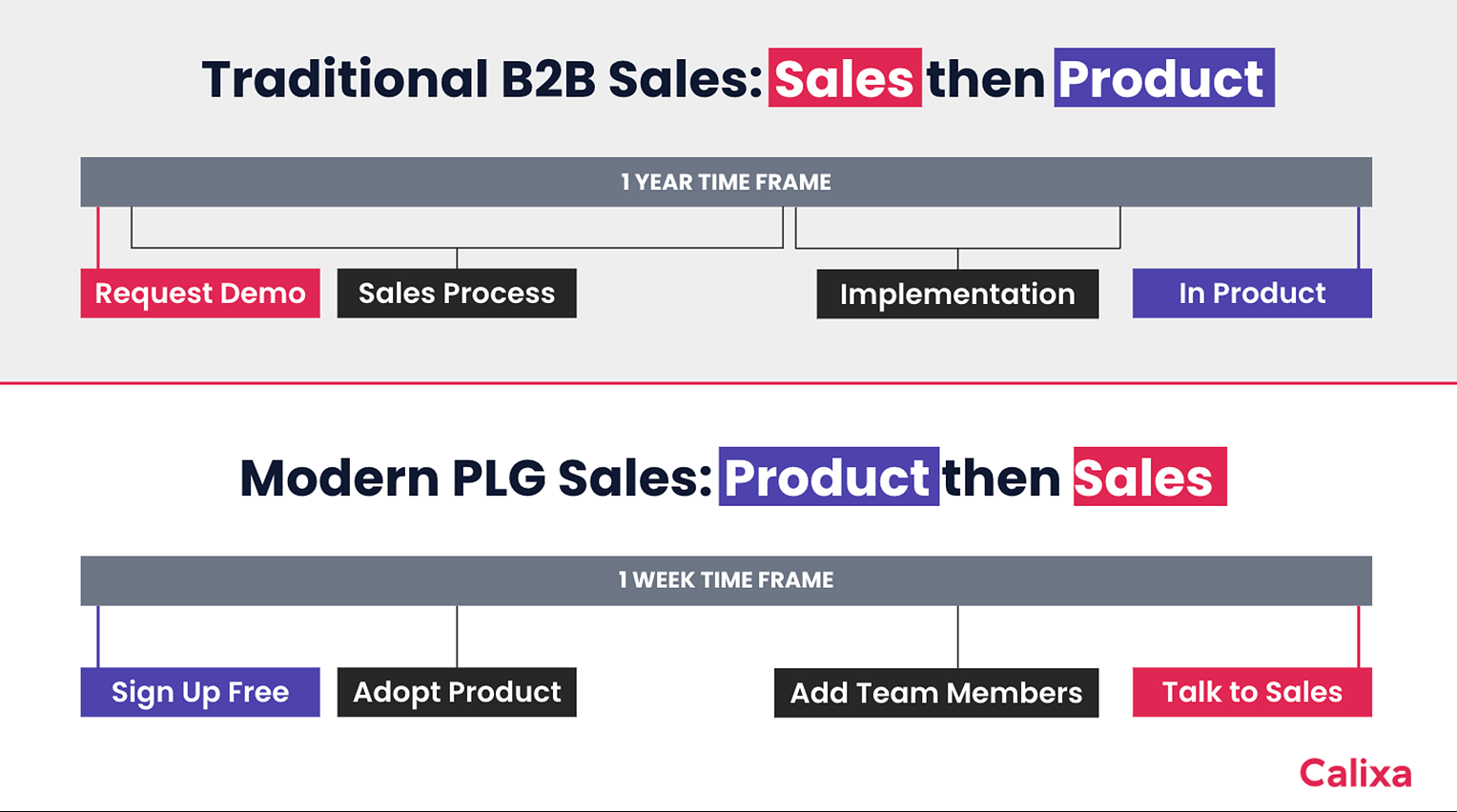
The modern technology sales cycle
The modern technology sales cycle refers to the process by which technology products or services are marketed, sold, and implemented in today’s business environment. It encompasses the various stages and activities involved in acquiring customers and closing deals in the technology industry. While the specific sales cycle can vary depending on the product, industry, and company, here is a general overview of the modern technology sales cycle:
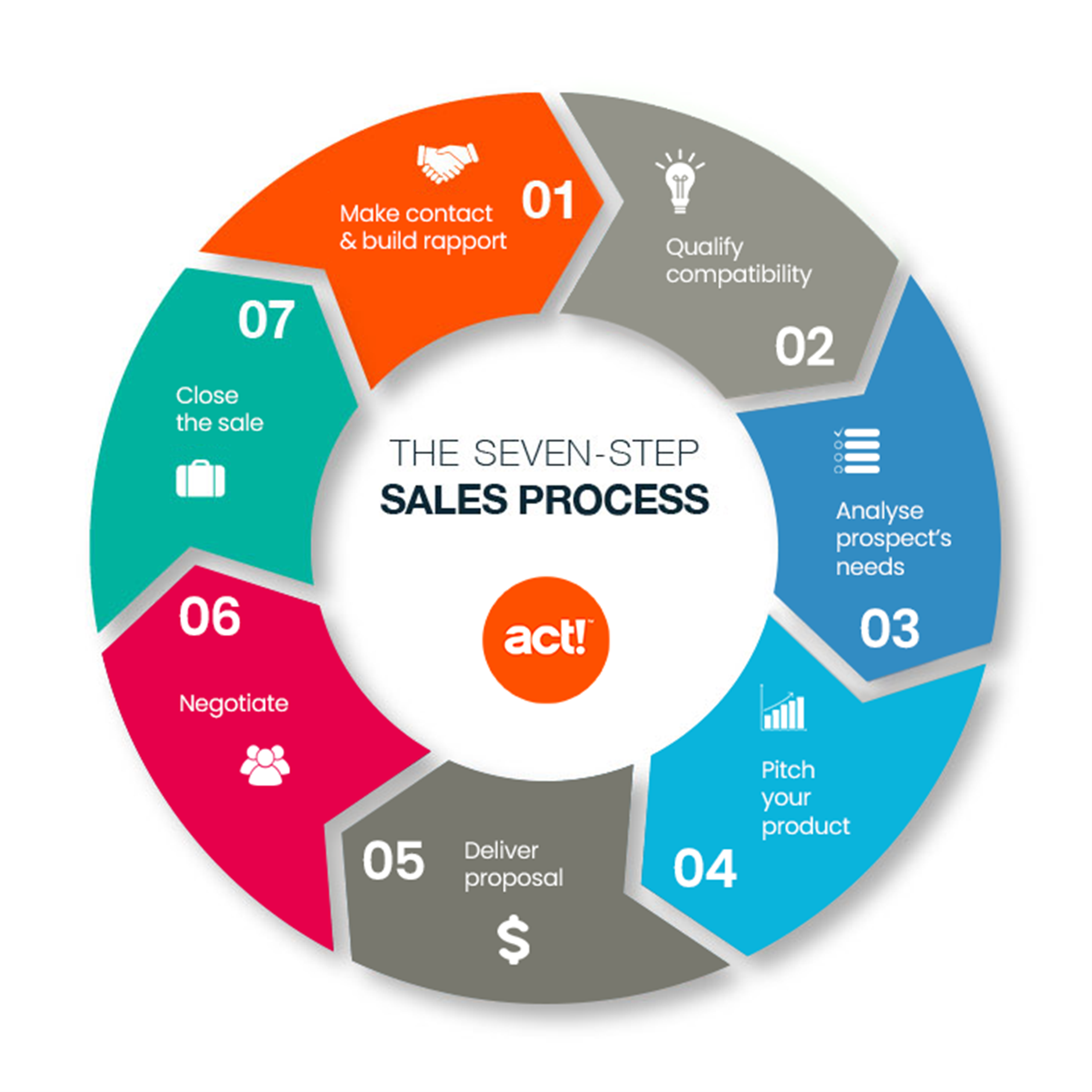
Stage 1: Prospecting
This stage involves identifying and targeting potential customers who may have a need for the technology product or service being offered. Prospecting can include activities such as market research, lead generation, and identifying key decision-makers within target organizations.
Here are the different stages within the prospecting stage:
1. Market Research: Market research is the initial step in prospecting. It involves gathering information about the target market, industry trends, customer needs, and competitors. This research helps in understanding the market landscape, identifying potential customers, and tailoring the sales approach accordingly.
2. Lead Generation: Lead generation is the process of finding and collecting potential customer leads. It can be done through various methods such as:
• Cold Calling: Proactively reaching out to potential customers via phone to introduce the technology solution and gauge their interest.
• Networking: Attending industry events, conferences, or trade shows to connect with potential customers and generate leads.
• Online Marketing: Using digital marketing techniques like search engine optimization (SEO), content marketing, social media, or email campaigns to attract leads.
• Referrals: Asking existing customers, colleagues, or business partners for referrals to potential customers who might be interested in the technology solution.
• Lead Databases: Utilizing databases or lead generation services that provide contact information of potential customers based on specific criteria.
3. Lead Qualification: Once leads are generated, they need to be qualified to determine if they meet certain criteria and are worth pursuing. Qualification typically involves assessing factors such as:
• Need: Determining if the lead has a genuine need for the technology solution being offered.
• Budget: Evaluating if the lead has the financial resources to make the purchase.
• Decision-making Authority: Identifying if the lead has the authority to make purchasing decisions or if they need to involve other stakeholders.
• Fit: Assessing if the lead’s requirements align with the capabilities and scope of the technology solution.
4. Lead Nurturing: Lead nurturing involves building relationships with potential customers and maintaining regular communication to keep them engaged and interested. This may include activities like sending targeted emails, providing relevant content, sharing industry insights, or inviting them to webinars or events. The goal is to build trust, establish credibility, and keep the technology solution top-of-mind for the potential customer.
5. Sales and Marketing Alignment: During prospecting, it is crucial to ensure alignment between the sales and marketing teams. Both teams need to work together to generate and qualify leads effectively. This involves clear communication, sharing of information and insights, and collaborating on lead generation strategies. Aligning sales and marketing efforts maximizes the chances of identifying and engaging with the right potential customers.

Stage 2: Qualification
Once prospects are identified, they need to be assessed to determine their suitability and likelihood of becoming customers. Qualification involves evaluating factors such as the prospect’s needs, budget, authority to make purchasing decisions, and alignment with the product or service being offered.
Here are the different stages within the qualification stage:
1. Initial Evaluation: During the initial evaluation, the sales team assesses the basic information gathered about the potential prospect. This includes reviewing contact details, company information, and any initial interactions or conversations. The goal is to ensure that the lead meets certain preliminary criteria and has the potential to become a qualified prospect.
2. Need Assessment: Once a lead passes the initial evaluation, the sales team engages in a more detailed needs assessment. This stage involves actively listening to the prospect and asking relevant questions to understand their specific challenges, pain points, and business objectives. The sales team aims to gain a comprehensive understanding of the prospect’s needs to determine if the technology solution can effectively address them.
3. Budget Evaluation: In this stage, the sales team evaluates the prospect’s budgetary capacity to make the purchase. They discuss pricing, cost structures, and financial considerations to determine if the prospect has the necessary resources to invest in the technology solution. This helps qualify leads who have the financial capability to proceed with the purchase.
4. Decision-making Authority: Determining the decision-making authority is crucial to avoid investing time and effort in leads who do not have the authority to make purchasing decisions. The sales team seeks to identify key stakeholders and decision-makers within the prospect’s organization. They may ask questions about the decision-making process, hierarchy, and involvement of other stakeholders. This helps ensure that the sales efforts are focused on engaging with individuals who have the authority to move forward.
5. Fit Evaluation: During the fit evaluation, the sales team assesses the alignment between the prospect’s requirements and the capabilities of the technology solution. They consider factors such as the prospect’s industry, business model, scale, and specific needs. This evaluation helps determine if the technology solution is a suitable fit for the prospect’s requirements and if it can effectively address their challenges.
6. Competition Analysis: As part of the qualification process, the sales team may conduct a competitive analysis. This involves identifying and understanding the prospect’s existing or potential alternatives to the technology solution being offered. By evaluating competitors’ offerings, strengths, weaknesses, and market position, the sales team can position their solution effectively and demonstrate its superiority.
7. Sales and Marketing Alignment: During the qualification stage, it is crucial to ensure alignment between the sales and marketing teams. Both teams need to collaborate and share insights to assess the qualification criteria effectively. Sales can provide feedback to marketing about the quality of leads generated and identify any additional criteria that could help in the qualification process. This collaboration improves the efficiency of the qualification stage.

Stage 3: Needs Assessment
Once a potential customer is qualified, the needs assessment stage begins. The sales team engages in conversations with the customer to understand their specific requirements, pain points, and business objectives. Through active listening and thorough questioning, they gain a comprehensive understanding of the customer’s needs. This stage is crucial for tailoring the technology solution to meet the customer’s unique requirements and address their challenges effectively.
Here are the different stages within the needs assessment stage:
1. Discovery: During the discovery phase, the sales team engages in conversations with the potential customer to gather information about their current processes, challenges, and objectives. The sales representative asks open-ended questions to encourage the customer to share their experiences and pain points. This stage is critical for establishing rapport, building trust, and gaining a deeper understanding of the customer’s needs.
2. Active Listening: Active listening is a key component of the needs assessment stage. The sales representative attentively listens to the customer’s responses, paying attention to both verbal and non-verbal cues. By actively listening, the sales representative can better understand the customer’s specific requirements, concerns, and goals. This helps in tailoring the solution to address the customer’s unique needs effectively.
3. Questioning: In the questioning stage, the sales representative asks probing and clarifying questions to gather more detailed information. These questions are designed to uncover specific pain points, desired outcomes, and any constraints or limitations the customer may have. Open-ended questions encourage the customer to provide detailed responses, enabling the sales representative to gain a comprehensive understanding of the customer’s needs.
4. Requirement Gathering: During the requirement gathering stage, the sales representative systematically collects and documents the customer’s requirements. This involves capturing the customer’s functional and technical needs, desired features and capabilities, integration requirements, scalability considerations, and any specific customization requirements. The goal is to create a clear and comprehensive picture of the customer’s needs.
5. Prioritization and Validation: Once the requirements are gathered, the sales representative works with the customer to prioritize and validate them. This stage involves discussing and confirming the critical needs and objectives of the customer. It helps ensure that the proposed solution will effectively address the most important pain points and provide value to the customer.
6. Solution Mapping: In the solution mapping stage, the sales representative aligns the customer’s needs and requirements with the capabilities of the technology solution being offered. This involves identifying how the solution can address each specific requirement and deliver the desired outcomes. The sales representative may highlight relevant features, functionalities, or case studies that demonstrate how the solution can meet the customer’s needs effectively.
7. Demonstrations or Prototypes: Depending on the complexity of the technology solution, the sales representative may provide demonstrations or prototypes to showcase how the solution works and addresses the customer’s needs. These demonstrations help the customer visualize how the solution can be applied to their specific business processes and confirm that it meets their requirements.
8. Documentation: Throughout the needs assessment stage, the sales representative documents all the gathered information, including the customer’s pain points, objectives, and requirements. This documentation serves as a reference point for both the sales team and the customer, ensuring that the proposed solution accurately reflects the customer’s needs and can be used as a basis for further discussions and solution development.

Stage 4: Proposal and Presentation
Based on the information gathered during the needs analysis stage, a sales proposal is prepared and presented to the prospect. The proposal typically outlines the benefits, features, and pricing of the technology product or service, along with any customization options or additional services offered.
Here’s an overview of what this stage entails:
1. Needs Assessment: Before creating the proposal, the sales team conducts a thorough needs assessment by gathering information about the prospect’s business requirements, pain points, and desired outcomes. This helps in tailoring the proposal to address the prospect’s specific needs.
2. Solution Customization: Based on the needs assessment, the sales team customizes the proposed solution to align with the prospect’s requirements. This may involve selecting appropriate product configurations, integrations, and additional services to create a comprehensive solution package.
3. Proposal Creation: The sales team prepares a detailed proposal that outlines the proposed solution, its features and benefits, implementation timelines, pricing details, and contractual terms. The proposal aims to address the prospect’s pain points and demonstrate how the solution will meet their business objectives effectively.
4. Value Proposition and ROI: The proposal emphasizes the value proposition of the technology solution, highlighting the unique advantages it offers compared to competitors. It may include ROI calculations, cost savings projections, or other metrics to showcase the return on investment the prospect can expect.
5. Presentation Delivery: The sales team presents the proposal to the prospect, either in person or through virtual means such as video conferencing. The presentation is structured and focuses on addressing the prospect’s specific needs, explaining the proposed solution’s features, and demonstrating its alignment with their business goals.
6. Addressing Questions and Concerns: During the presentation, the sales team encourages active engagement from the prospect, addressing any questions, concerns, or objections they may have. This stage aims to provide clarity, build trust, and ensure the prospect has a thorough understanding of the proposed solution.
7. Proposal Follow-Up: After the presentation, the sales team follows up with the prospect to answer any additional questions or provide further information if required. They may also make adjustments to the proposal based on the feedback received during the presentation.

Stage 5: Handling Objections
Prospects may raise concerns or objections during the sales process, which need to be addressed by the sales representative. Common objections include budget constraints, technical limitations, or skepticism about the product’s effectiveness. The salesperson must address these objections and provide reassurance or additional information to alleviate the prospect’s concerns.
Here’s an overview of what the Handling Objections stage consists of:
1. Active Listening: The salesperson carefully listens to the prospect’s objections without interrupting or dismissing them. Active listening allows the salesperson to understand the prospect’s concerns fully and respond appropriately.
2. Empathy and Understanding: The salesperson acknowledges the prospect’s objections and demonstrates empathy. They strive to understand the underlying reasons behind the objections and the impact they may have on the prospect’s decision-making process.
3. Clarification and Questioning: The salesperson seeks to clarify the objections further by asking open-ended questions. This helps in gaining a deeper understanding of the prospect’s perspective and enables the salesperson to address the objections more effectively.
4. Providing Information and Solutions: The salesperson responds to objections by providing relevant information, addressing specific concerns, and presenting solutions that overcome the objections. This may involve sharing product features, case studies, testimonials, or any other supporting material that validates the proposed solution’s effectiveness.
5. Highlighting Benefits and Value: The salesperson emphasizes the benefits and value the prospect stands to gain by adopting the technology solution. They illustrate how the solution addresses the prospect’s pain points, streamlines processes, improves efficiency, increases productivity, or delivers a competitive advantage.
6. Demonstrating Expertise and Knowledge: The salesperson showcases their expertise and knowledge in the industry and the technology solution being offered. They provide insights, explain industry trends, and offer relevant examples to establish credibility and trust with the prospect.
7. Addressing Risk and Mitigating Concerns: If objections are related to risk, implementation challenges, or other potential drawbacks, the salesperson addresses them directly. They present strategies, case studies, or success stories that illustrate how the company has successfully managed similar challenges in the past.
8. Test Closing: After responding to objections, the salesperson may attempt a test closing to gauge the prospect’s level of agreement or comfort. This helps in identifying any remaining objections or concerns that need to be addressed before proceeding further.
9. Continued Relationship Building: Throughout the objection handling process, the salesperson focuses on maintaining a positive and collaborative relationship with the prospect. They ensure that objections are addressed respectfully and seek to build trust and rapport throughout the conversation.

Stage 6: Negotiation
If the prospect is interested in moving forward with the purchase, negotiation of terms and pricing may occur. This stage involves reaching mutually agreeable terms, such as pricing, contract duration, payment terms, and any customization or additional services required.
Here’s an overview of what the Negotiation stage consists of:
1. Understanding the Prospect’s Requirements: The salesperson ensures a clear understanding of the prospect’s specific needs, priorities, and budget constraints. This understanding serves as a foundation for effective negotiation.
2. Presenting Value: The salesperson emphasizes the value and benefits of the proposed technology solution, reinforcing why it is worth the investment. By highlighting the return on investment, cost savings, increased efficiency, or other relevant advantages, the salesperson strengthens their position during negotiations.
3. Pricing and Terms Discussion: The salesperson and the prospect engage in discussions about pricing, including the overall cost of the solution, payment terms, and any discounts or incentives that may be available. They also discuss contractual terms, such as contract duration, renewal options, service-level agreements, and any customization requirements.
4. Customization and Flexibility: If the prospect requires specific customization or additional services, the negotiation stage is an opportunity to determine the feasibility, cost, and timeline for accommodating those requirements. Both parties work together to find the right balance between customization and cost-effectiveness.
5. Win-Win Solutions: The salesperson aims to find win-win solutions that address the prospect’s needs while protecting the interests of the seller. This may involve exploring creative options, alternative configurations, or bundling complementary products or services to add value to the deal.
6. Managing Objections and Concerns: Objections or concerns that arise during the negotiation stage are addressed collaboratively. The salesperson actively listens, acknowledges the prospect’s concerns, and provides solutions or alternative approaches to alleviate any objections.
7. Building Rapport and Trust: Throughout the negotiation process, the salesperson focuses on building rapport and trust with the prospect. They demonstrate transparency, honesty, and a willingness to find common ground, fostering a positive negotiating environment.
8. Seeking Win-Win Concessions: Negotiation often involves making concessions to reach a mutually beneficial agreement. The salesperson identifies areas where they can make reasonable concessions without compromising the overall value of the deal. They also seek concessions from the prospect to ensure a fair and balanced agreement.
9. Formalizing the Agreement: Once both parties have reached an agreement, the salesperson works with the prospect to formalize the deal. This includes drafting the final contract, ensuring all terms and conditions are accurately reflected, and obtaining necessary approvals.

Stage 7: Closing
The closing stage involves finalizing the sale. This typically includes obtaining formal agreement from the prospect, signing contracts, and processing any necessary paperwork. The sales representative may also provide guidance and support to facilitate a smooth transition to implementation or deployment.
Here’s an overview of what the Closing stage consists of:
1. Confirmation of Agreement: The salesperson begins the Closing stage by summarizing the key points of the agreement reached during the negotiation stage. They reiterate the prospect’s requirements, the proposed solution, pricing, terms, and any additional services agreed upon to ensure both parties are aligned.
2. Addressing Any Remaining Concerns: The salesperson asks the prospect if there are any remaining questions, concerns, or objections that need to be addressed before proceeding. This step ensures that any last-minute hesitations are resolved and the prospect feels confident in their decision.
3. Reaffirming Value and Benefits: The salesperson reinforces the value and benefits of the technology solution, reminding the prospect of the positive impact it will have on their business. They emphasize how the solution aligns with the prospect’s goals and objectives, and how it addresses their pain points.
4. Confirmation of Decision-Making Process: The salesperson seeks confirmation from the prospect regarding their decision-making process. They may ask questions such as, “Are you ready to move forward with this solution?” or “Do you have any final steps or approvals required before proceeding?”
5. Finalizing Contract and Documentation: If the prospect is ready to proceed, the salesperson moves forward with finalizing the necessary paperwork, such as the sales agreement, purchase order, or contract. They ensure all the terms, pricing, and specifications are accurately reflected in the documentation.
6. Addressing Implementation and Next Steps: The salesperson discusses the next steps following the agreement. This includes outlining the implementation process, providing a timeline, and assigning responsibilities. The salesperson ensures the prospect understands what to expect and how the solution will be implemented.
7. Securing Commitment and Closing the Sale: The salesperson seeks a firm commitment from the prospect, confirming their intent to move forward with the purchase. This may involve obtaining a signed contract, verbal confirmation, or any other mutually agreed-upon indication of commitment.
8. Expressing Appreciation and Gratitude: The salesperson expresses gratitude for the prospect’s decision to choose the solution and thanks them for their trust and partnership. This helps in reinforcing the positive relationship and leaving a lasting impression.
9. Handover to Implementation Team: Once the sale is closed, the salesperson facilitates a smooth handover to the implementation team or relevant stakeholders responsible for delivering the solution. They ensure all necessary information and documentation are passed on to ensure a seamless transition.

Stage 8: Follow-up and Relationship Management
After the sale is closed, ongoing customer relationship management becomes important. This involves post-sales support, addressing any issues or concerns that arise, and fostering a positive long-term relationship with the customer. Repeat business and referrals may be pursued through effective relationship management.
Here’s an overview of what the Follow-up and Relationship Management stage consists of:
1. Post-Sale Communication: The salesperson initiates post-sale communication to thank the customer for their purchase and reaffirm their commitment to providing ongoing support. This communication can be in the form of a personalized email, phone call, or even a handwritten note, expressing appreciation for their business.
2. Onboarding and Implementation Support: The salesperson coordinates with the implementation team to ensure a smooth transition and successful onboarding of the customer. They may provide guidance, resources, or documentation to help the customer navigate the implementation process and address any initial challenges.
3. Regular Check-Ins: The salesperson maintains regular contact with the customer to check on their progress, address any concerns, and gather feedback. These check-ins can be scheduled at specific intervals or initiated based on milestones or triggers within the customer’s journey.
4. Customer Support and Issue Resolution: The salesperson serves as a liaison between the customer and the support team, ensuring prompt and effective resolution of any issues or challenges that may arise. They actively engage with the customer, listen to their concerns, and advocate for their needs within the organization.
5. Upselling and Cross-selling Opportunities: As the salesperson builds a strong relationship with the customer, they identify opportunities for upselling or cross-selling additional products, services, or upgrades that can further enhance the customer’s experience or address evolving needs. These opportunities are presented in a consultative and value-focused manner.
6. Customer Success Management: The salesperson collaborates with customer success managers or account managers to ensure the customer achieves their desired outcomes and realizes the full value of the technology solution. They proactively identify opportunities for optimization, expansion, or renewal and work towards fostering a long-term, mutually beneficial relationship.
7. Customer Feedback and Testimonials: The salesperson actively seeks feedback from the customer regarding their experience with the technology solution and the overall sales process. Positive feedback and testimonials can be collected and leveraged for marketing purposes to build credibility and attract new customers.
8. Relationship Building and Networking: The salesperson continues to build rapport and strengthen the relationship with the customer. They engage in networking opportunities, attend industry events, and explore avenues for collaboration or partnership that can benefit the customer and foster loyalty.
9. Renewal and Contract Management: As the contract renewal period approaches, the salesperson proactively engages with the customer to discuss renewal options, contract terms, and any necessary adjustments. They ensure a seamless transition from the current contract to the renewed agreement.
It’s important to note that the traditional technology sales cycle may be evolving with the changing dynamics of the digital age, as companies adopt new sales methodologies and leverage technology to enhance the process. However, these fundamental stages still provide a framework for understanding the traditional approach to selling technology products or services.
What customers really want from their technology partners during the sales cycle
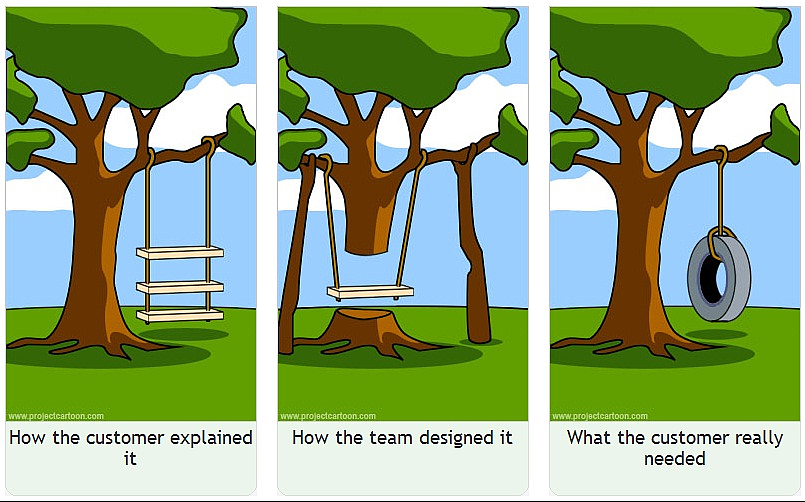
Customers have specific expectations and desires from their technology partners during the sales cycle. Understanding and meeting these expectations can significantly impact the success of the sales process. Here are some key things that customers generally want from their technology partners:
Understanding of their Business Needs
Customers expect technology partners to have a deep understanding of their industry, business objectives, and pain points. They want the salesperson to comprehend their unique challenges and provide tailored solutions that align with their specific needs.
Expertise and Knowledge
Customers seek technology partners who demonstrate expertise and knowledge in their respective field. They expect salespeople to be well-informed about the latest industry trends, emerging technologies, and best practices. This expertise helps customers gain confidence in the partner’s ability to deliver valuable solutions.
Customized Solutions
Customers desire technology partners who can provide customized solutions to address their specific requirements. They appreciate salespeople who take the time to understand their unique circumstances and offer personalized recommendations rather than a one-size-fits-all approach.
Value and Return on Investment
Customers want to see the value and return on investment in the proposed technology solution. They expect salespeople to clearly articulate the benefits, cost savings, efficiency improvements, or competitive advantages that the solution can deliver to their organization.
Trust and Credibility
Building trust is crucial in the sales cycle. Customers want technology partners who are honest, transparent, and reliable. They look for evidence of success, customer testimonials, case studies, and references to establish the partner’s credibility and trustworthiness.
Excellent Communication and Responsiveness
Timely and effective communication is highly valued by customers. They expect salespeople to be responsive, promptly addressing their queries, concerns, or requests for information. Clear and open communication helps build a strong foundation of trust and collaboration.
Support and Assistance
Customers appreciate technology partners who provide comprehensive support throughout the sales cycle. This includes being available for product demonstrations, assisting with evaluations or proofs of concept, and offering guidance during the decision-making process.
Post-Sale Support and Services
Customers expect ongoing support and services beyond the sale. This includes implementation assistance, training, troubleshooting, and access to a knowledgeable support team. They value partners who prioritize long-term customer success and provide proactive support to ensure the solution delivers the expected results.
Competitive Pricing and Flexibility
Customers are conscious of pricing and expect technology partners to offer competitive and fair pricing models. They appreciate partners who are willing to work with them on pricing negotiations and offer flexibility to accommodate their budget constraints or specific financial requirements.
Collaboration and Partnership
Customers prefer technology partners who foster a collaborative and partnership-oriented approach. They want to work with salespeople who act as trusted advisors, actively involve them in the decision-making process, and demonstrate a genuine interest in their success.
Understanding these customer expectations and striving to meet them during the sales cycle can help technology partners establish strong relationships, enhance customer satisfaction, and increase the likelihood of successful sales outcomes.

Case Study: Salesforce and Their Customer-Centric Approach
Salesforce, a leading cloud-based customer relationship management (CRM) platform, is known for its customer-centric approach throughout the sales cycle. They prioritize understanding and meeting their customers’ needs, resulting in successful outcomes. Here’s an example:
Customer Need: A large retail company wants to implement a CRM system to improve their customer engagement, streamline sales processes, and gain actionable insights from their data.
Salesforce’s Response:
1. Understanding Business Objectives: Salesforce takes the time to thoroughly understand the retail company’s business objectives, pain points, and desired outcomes. They conduct in-depth discussions and workshops with various stakeholders to identify specific requirements and challenges.
2. Tailored Solution: Based on the customer’s needs, Salesforce provides a tailored CRM solution that addresses their unique business requirements. They customize the platform, configure modules, and integrate with existing systems to ensure a seamless fit into the customer’s operations.
3. Demonstrating Value: Salesforce focuses on showcasing the value their CRM solution can bring to the customer. They provide comprehensive product demonstrations, highlighting key features, functionalities, and benefits relevant to the retail industry. The emphasis is on demonstrating how the solution can improve customer engagement, drive sales growth, and deliver actionable insights.
4. Collaborative Approach: Salesforce adopts a collaborative approach throughout the sales cycle. They actively involve the customer’s team in decision-making, seeking feedback and incorporating it into the solution design. They encourage open communication, addressing any concerns or questions promptly.
5. Proactive Support: Salesforce offers continuous support and guidance throughout the implementation process. They assign a dedicated team of experts who provide assistance, training, and best practices to ensure a smooth transition. Regular check-ins and proactive communication help in addressing any issues or challenges that arise.
6. Scalability and Flexibility: Salesforce emphasizes the scalability and flexibility of their CRM platform. They highlight the ability to adapt and grow with the customer’s evolving needs. This reassures the customer that their investment is future-proof, and they can easily scale their operations as their business expands.
7. Ongoing Relationship: Salesforce nurtures a long-term relationship with the customer beyond the initial sale. They provide ongoing support, regular product updates, and access to a vast community of users and resources. They actively seek feedback, listen to customer suggestions, and continuously improve their offerings.
Result: The retail company successfully implements Salesforce’s CRM solution, achieving their goals of improved customer engagement, streamlined sales processes, and data-driven decision-making. Salesforce’s customer-centric approach ensures a positive experience throughout the sales cycle, leading to a strong and ongoing partnership.
This real-life example showcases how Salesforce, as a technology service provider, listened to their customer, tailored their solution to meet specific needs, provided proactive support, and fostered a long-term relationship. By prioritizing customer success, they were able to deliver the desired outcomes and create a win-win situation for both parties.

Exercise 1.3: Exploring the Benefits of an as-a-Service Consumption Model
1. Divide the participants into small groups of 2-3 people.
2. Provide each group with a flipchart or a whiteboard and markers.
3. Assign a group facilitator who will guide the exercise and keep track of time.
4. Ask each group to discuss and brainstorm the potential reasons why clients might prefer an as-a-service consumption model instead of a capital purchase model. Encourage them to think from the perspective of clients and consider both financial and non-financial factors.
5. Give the groups 10-15 minutes for the discussion and brainstorming session.
6. Once the time is up, ask each group to present their findings to the rest of the participants. The facilitator can write down the key points on the flipchart or whiteboard.
7. Encourage a group discussion after each presentation to share additional insights, ask questions, or provide counterarguments.
8. Summarize the key benefits identified by the groups and facilitate a collective discussion to prioritize the most compelling reasons.
9. Conclude the exercise by highlighting the significance of understanding client preferences and aligning business strategies to meet their needs.

Course Manual 4: Innovation
Innovation refers to the process of creating and implementing new ideas, products, services, or processes that bring about significant improvement or change. It involves introducing something novel or different that adds value and addresses existing problems or needs. Innovation can occur in various fields, including technology, business, science, art, and social sectors.
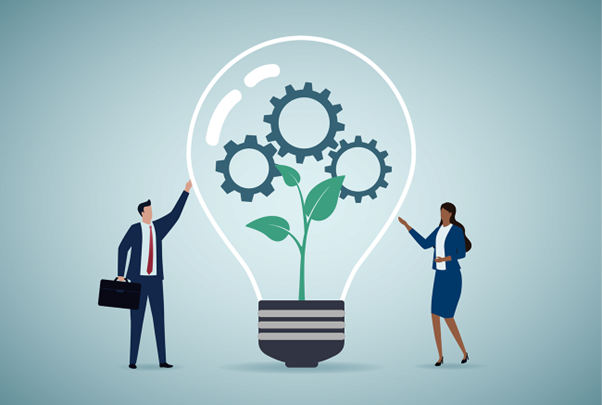
Source: Knowledge at Wharton
Key characteristics of innovation include:
Novelty
Innovation involves introducing something new, whether it’s a product, idea, or method. It goes beyond incremental improvements and aims to bring about substantial change.
Creativity
Innovation requires creative thinking and the ability to generate unique ideas. It often involves connecting seemingly unrelated concepts or recombining existing elements in new and useful ways.
Problem-solving
Innovation seeks to address challenges and solve problems by offering improved solutions or alternatives. It aims to overcome existing limitations or inefficiencies.
Value creation
Innovation aims to create value for individuals, organizations, or society as a whole. It can generate economic value by improving productivity, creating new markets, or enhancing customer experiences.
Implementation
Innovation involves more than just ideas. It requires translating those ideas into action and implementing them effectively. This may involve prototyping, testing, refining, and scaling up the innovative concept.
Continuous improvement
Innovation is an ongoing process rather than a one-time event. It involves constantly seeking new opportunities for improvement, learning from failures, and adapting to changing circumstances.
Innovation can have a profound impact on various aspects of life, driving economic growth, societal progress, and individual well-being. It often stems from a combination of technological advancements, market insights, user needs, and a supportive environment that encourages experimentation and risk-taking.
To technology service providers, innovation encompasses the development and implementation of new ideas, technologies, solutions, or approaches that bring about meaningful improvements in their service offerings, processes, or business models. It involves leveraging advancements in technology to create value for their customers and stay ahead in the market.
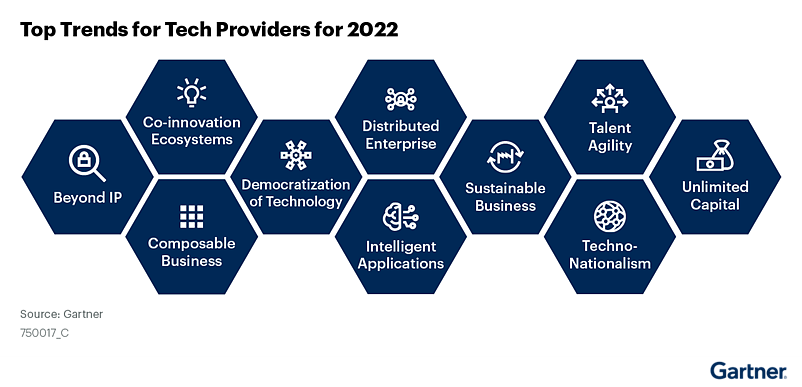
For technology service providers, innovation can manifest in various forms:
1. Product Innovation: This involves the creation of new or enhanced technology products or services. It could be the introduction of groundbreaking software, hardware, platforms, or applications that offer novel functionalities, improved performance, or better user experiences.
2. Service Innovation: Technology service providers can innovate by redefining or expanding their service offerings. This could involve introducing new service packages, customization options, support mechanisms, or value-added services to meet changing customer needs and preferences.
3. Process Innovation: Innovation in processes focuses on streamlining and optimizing internal operations and workflows. Technology service providers can leverage automation, artificial intelligence, data analytics, or other technologies to improve efficiency, reduce costs, and enhance service delivery.
4. Business Model Innovation: This refers to the development of innovative ways to create, capture, and deliver value. It may involve introducing new pricing models, subscription plans, partnerships, or revenue streams that differentiate the provider and enable sustainable growth.
5. Collaborative Innovation: Technology service providers can foster innovation through collaboration with customers, partners, and other stakeholders. By engaging in co-creation, open innovation, or strategic partnerships, they can combine expertise, resources, and perspectives to develop innovative solutions that address complex challenges.
6. Market Innovation: This involves identifying and seizing new market opportunities. Technology service providers can explore untapped segments, emerging industries, or niche markets where their expertise and solutions can create a significant impact.
7. User Experience Innovation: Enhancing the user experience is a key aspect of innovation for technology service providers. They can innovate by improving the ease of use, accessibility, personalization, and overall satisfaction of their products or services.
Technology service providers understand that innovation is essential for their growth, competitiveness, and long-term success. By continuously seeking new ways to provide value and staying at the forefront of technological advancements, they can meet the evolving needs of their customers, drive market differentiation, and foster sustainable business growth.
Why should you innovate?
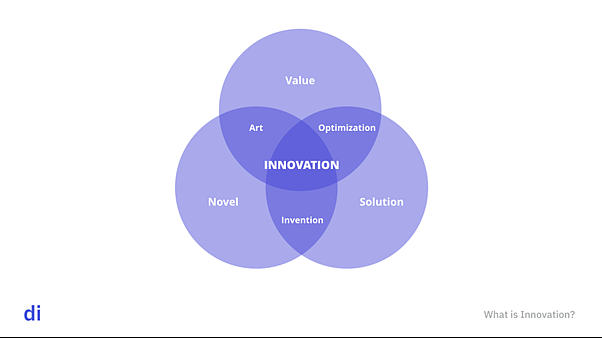
Technology service providers should innovate for several compelling reasons:
1. Competitive Advantage: In today’s fast-paced and highly competitive market, innovation is crucial for technology service providers to stay ahead of their competitors. By introducing new and improved products, services, or processes, they can differentiate themselves and attract more customers. Innovation allows them to offer unique value propositions and capture a larger market share.
2. Customer Satisfaction: Innovation enables technology service providers to better meet the evolving needs and expectations of their customers. By continuously improving their offerings, they can deliver enhanced experiences, increased efficiency, and better outcomes for their clients. This leads to higher customer satisfaction, loyalty, and positive word-of-mouth referrals.
3. Market Relevance: Technology is constantly evolving, and customer demands change accordingly. By embracing innovation, service providers can ensure their offerings remain relevant in the market. Failure to innovate may result in becoming outdated or obsolete, losing market share, and being overtaken by more innovative competitors.
4. Revenue Growth: Innovation can open up new revenue streams for technology service providers. By developing and introducing innovative products or services, they can tap into untapped markets or create demand where none previously existed. This expansion of offerings can lead to increased sales and revenue growth.
5. Operational Efficiency: Innovation is not limited to customer-facing aspects; it can also improve internal operations and processes. Technology service providers can innovate in areas such as project management, automation, data analytics, and infrastructure to enhance efficiency, reduce costs, and optimize resource allocation.
6. Future Preparedness: By embracing innovation, technology service providers can proactively adapt to emerging trends and disruptions. They can anticipate and capitalize on new technologies, market shifts, and changing customer behaviors. This helps them stay agile and resilient in a rapidly changing business landscape.
7. Industry Leadership: Innovation allows technology service providers to establish themselves as thought leaders and industry influencers. By pioneering new ideas, concepts, or technologies, they can shape the direction of their industry and become trusted advisors to their customers and partners.
Overall, innovation is essential for technology service providers to thrive in a dynamic and competitive landscape. It empowers them to deliver value, drive growth, and maintain their relevance in an ever-changing market.

Case Study: Kodak’s failure to innovate
Kodak was once a dominant force in the photography industry, known for its film-based cameras and film processing services. However, the company struggled to adapt to the digital revolution in photography, ultimately leading to its decline.
In the 1970s and 1980s, Kodak was at the forefront of innovation in photography and even developed one of the first digital cameras. However, the company failed to recognize the disruptive potential of digital photography and the shift away from traditional film.
Kodak was heavily invested in its film-based business model, which accounted for a significant portion of its revenue and profit. The company had the opportunity to embrace digital photography and invest in the development of digital cameras and related technologies. However, Kodak was hesitant to cannibalize its lucrative film business and underestimated the pace at which digital photography would gain mainstream adoption.
As a result, Kodak fell behind competitors who fully embraced digital innovation, such as Canon, Nikon, and Sony. These companies rapidly improved digital camera technology, offered greater convenience, and expanded the range of features available to consumers. Meanwhile, Kodak’s market share eroded, and its profitability declined.
In 2012, Kodak filed for bankruptcy protection, unable to compete effectively in the digital photography market it helped create. While the company eventually emerged from bankruptcy as a much smaller entity, the failure to innovate and adapt to digital disruption had a significant impact on its overall trajectory.
The Kodak example underscores the importance of anticipating and responding to technological shifts and evolving customer preferences. Companies that are too entrenched in their existing business models or fail to recognize the transformative power of innovation run the risk of being left behind by more agile and forward-thinking competitors.
Incremental innovation Vs Disruptive innovation
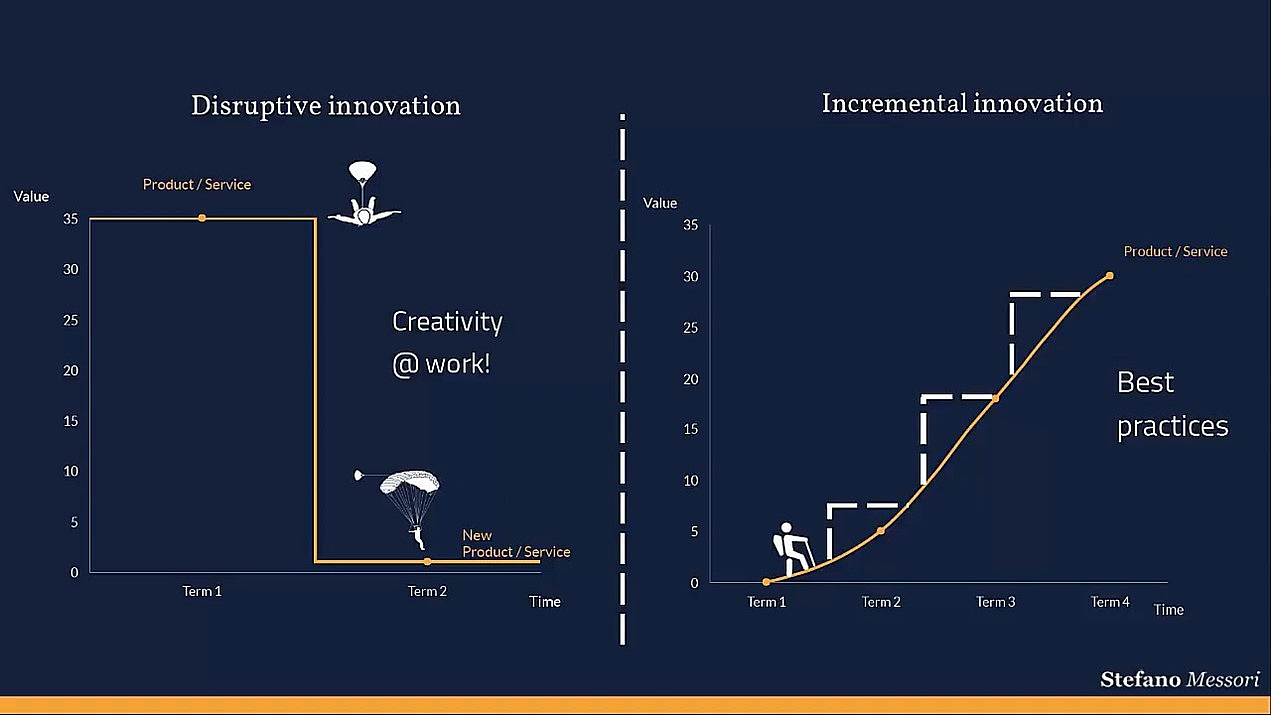
Incremental Innovation
Incremental innovation refers to the process of making gradual improvements or advancements to existing products, services, or processes. It involves building upon existing technologies, features, or functionalities to enhance performance, efficiency, or user experience. Incremental innovation typically focuses on refining and optimizing existing solutions rather than introducing radical or transformative changes. It is often driven by feedback from customers, market demands, or internal process improvements. Examples of incremental innovation include software updates, product feature enhancements, or incremental process optimizations.
Disruptive Innovation
Disruptive innovation, on the other hand, refers to the introduction of entirely new and often game-changing products, services, or business models that disrupt existing markets or industries. It involves the creation of innovative solutions that fundamentally alter the way things are done, challenging traditional approaches and incumbents. Disruptive innovation often starts in niche markets or serves underserved segments but eventually grows to disrupt established markets. It typically offers unique value propositions, lower costs, improved accessibility, or addresses unmet customer needs in innovative ways. Examples of disruptive innovations include the advent of personal computers, digital photography, streaming services, or ride-sharing platforms.
Key Differences:
1. Scope of Change: Incremental innovation involves making small-scale improvements or modifications to existing products, services, or processes. Disruptive innovation, on the other hand, introduces significant and transformative changes that can reshape entire industries or markets.
2. Impact: Incremental innovation aims to enhance existing solutions, improve efficiency, or refine user experiences. Disruptive innovation has the potential to create new markets, displace incumbents, or fundamentally change the way people interact with products or services.
3. Market Response: Incremental innovations are generally well-received by customers, as they build upon familiar solutions and address specific pain points. Disruptive innovations, however, may initially face resistance or skepticism, as they introduce entirely new concepts or challenge established norms.
4. Adoption Rate: Incremental innovations typically have a relatively faster adoption rate, as they offer immediate benefits and require minimal changes in user behavior. Disruptive innovations may take longer to gain widespread acceptance, as they often require significant shifts in user habits, industry practices, or infrastructure.
5. Risk and Uncertainty: Incremental innovation carries lower risks and uncertainties compared to disruptive innovation. Disruptive innovation entails higher risks due to the potential for market disruption, regulatory challenges, or technological uncertainties.
It’s important to note that incremental and disruptive innovation are not mutually exclusive, and companies may engage in both approaches to drive continuous improvement while exploring new frontiers.
Innovation Culture
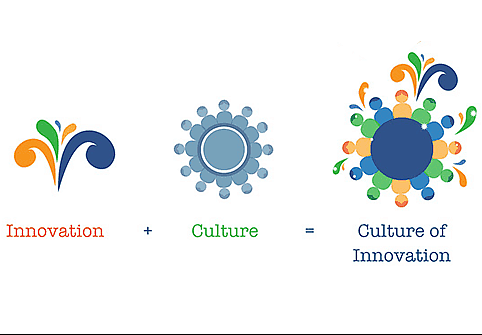
Source: The Human Capital Hub
Creating an innovation culture within an organization involves fostering an environment that encourages and supports the generation, exploration, and implementation of new ideas. It is an organizational mindset that values creativity, experimentation, collaboration, and continuous improvement. Here are some key steps and considerations for creating an innovation culture:
1. Leadership Support: Establishing an innovation culture requires visible support and commitment from leadership. Leaders should communicate the importance of innovation, set clear goals, allocate resources, and actively participate in the innovation process.
2. Encourage Risk-Taking: Encourage employees to take calculated risks and embrace failure as a learning opportunity. Create a safe space where individuals feel comfortable sharing ideas, experimenting, and challenging the status quo without fear of negative repercussions.
3. Foster a Collaborative Environment: Collaboration and cross-functional teamwork are essential for innovation. Encourage employees from different departments or disciplines to collaborate, share perspectives, and work together on innovative projects. Break down silos and promote knowledge-sharing.
4. Provide Resources and Support: Allocate resources, both financial and non-financial, to support innovation initiatives. This can include dedicated budgets, time for experimentation, access to relevant technologies or tools, and training programs to enhance employees’ innovative thinking and problem-solving skills.
5. Recognition and Rewards: Recognize and celebrate innovative achievements. Acknowledge and reward employees for their contributions to innovation, whether it’s through financial incentives, promotions, public recognition, or opportunities for career growth.
6. Foster a Learning Culture: Encourage a continuous learning mindset within the organization. Provide opportunities for employees to expand their knowledge, stay updated on industry trends, attend conferences or workshops, and engage in ongoing professional development.
7. Encourage Diversity and Inclusion: Embrace diversity and inclusion in all aspects of the organization. Research shows that diverse teams with a variety of backgrounds, perspectives, and experiences are more likely to generate innovative ideas and solve complex problems.
8. Support Idea Generation and Feedback: Establish channels for idea generation and feedback. Implement mechanisms such as suggestion boxes, innovation challenges, brainstorming sessions, or innovation labs to encourage employees to share their ideas, provide feedback, and collaborate on refining and implementing innovative concepts.
Creating an innovation culture is important for several reasons:
1. Competitive Advantage: An innovation culture allows organizations to stay ahead of the competition by continuously generating new ideas, improving products or services, and identifying new market opportunities.
2. Adaptability to Change: An innovation culture promotes adaptability and agility, enabling organizations to respond effectively to changing market dynamics, technological advancements, and customer preferences.
3. Employee Engagement and Retention: An organization that fosters an innovation culture tends to attract and retain top talent. Employees are more engaged, motivated, and satisfied when they have the opportunity to contribute their ideas, be creative, and see their innovations implemented.
4. Business Growth and Profitability: Innovation often leads to the development of new revenue streams, expansion into new markets, increased customer loyalty, and improved profitability.
5. Problem-Solving and Efficiency: An innovation culture encourages employees to think critically and creatively when solving problems, leading to more efficient and effective processes, cost savings, and improved outcomes.
6. Brand Reputation: Organizations known for their innovation culture tend to have a positive brand reputation, attracting customers, partners, and investors who associate them with cutting-edge solutions and forward-thinking approaches.
In summary, creating an innovation culture is crucial for organizations seeking to thrive in a rapidly changing and competitive business landscape. It drives creativity, problem-solving, growth, and fosters an environment of continuous improvement.

Case Study: Google’s Culture of Innovation
One company renowned for its innovation culture is Google (now Alphabet Inc.). Google has fostered a culture of innovation from its inception, and it continues to be recognized as a global leader in technological advancements and forward-thinking approaches. Here are some key aspects that contribute to Google’s reputation for a strong innovation culture:
1. Foundational Principles: Google’s founders, Larry Page and Sergey Brin, established a culture that values innovation, curiosity, and risk-taking. They encouraged employees to explore new ideas and pursue ambitious projects, even if they seemed unconventional or risky.
2. 20% Time Policy: Google famously implemented a policy known as “20% time,” which allowed employees to spend a portion of their workweek (20% of their time) on personal projects or innovative ideas that may not be directly related to their primary roles. This policy has led to the creation of significant products and features such as Gmail and Google News.
3. Innovation Labs and Moonshot Projects: Google invests in research and development through various innovation labs and moonshot projects.
4. Examples include Google X, the division responsible for developing ambitious projects like self-driving cars (Waymo) and Project Loon, an initiative to provide internet access to remote areas using high-altitude balloons.
5. Collaborative Environment: Google emphasizes collaboration and provides a supportive environment for cross-functional teams to work together on innovative projects. Employees are encouraged to share ideas, provide feedback, and collaborate across departments.
6. Continuous Learning and Development: Google promotes a culture of continuous learning and development through various programs and initiatives. This includes internal knowledge-sharing sessions, tech talks, and learning resources to keep employees updated on the latest technologies and industry trends.
7. Employee Empowerment: Google empowers its employees to make decisions, take ownership of their projects, and have a significant impact on the company’s direction. This empowerment fosters a sense of ownership and encourages individuals to take risks and bring forth innovative ideas.
8. Acquisition of Innovative Startups: Google actively acquires innovative startups and companies to incorporate their talent, technologies, and ideas into their own ecosystem. This strategy allows Google to infuse external innovation into its existing operations and expand its product portfolio.
The combination of these factors has contributed to Google’s reputation for innovation and its ability to introduce groundbreaking products and services. From its search engine to products like Google Maps, Google Photos, and Google Assistant, the company has consistently pushed boundaries and reshaped industries through innovative thinking.
It’s worth noting that while Google is often cited as an exemplar of an innovation culture, it’s important to acknowledge that every organization has its unique strengths and approaches to fostering innovation. What works for Google may not necessarily be applicable to every company, but studying successful innovation cultures like Google’s can provide valuable insights and inspiration for organizations looking to enhance their own innovative practices.

Exercise 1.4: Customer Innovation Needs Assessment
1. Divide the team into 2 groups.
2. Provide each group with the following materials:
• Flipchart or whiteboard
• Sticky notes or markers
• Pens or markers for writing
3. Explain to the teams that the exercise focuses on evaluating your business’s support for customers’ innovation needs. Emphasize that the exercise encourages open and constructive discussion to generate insights and actionable suggestions.
4. Instruct each group to brainstorm and discuss the following questions, noting their responses on the flipchart or whiteboard:
a. How well does our business understand our customers’ innovation needs?
b. What mechanisms or channels do we have in place to gather customer feedback and ideas for innovation?
c. How effectively do we communicate and collaborate with customers to support their innovative initiatives?
d. What resources, tools, or support do we offer to help customers drive innovation in their organizations?
e. How do we measure and track the success of our efforts in supporting customer innovation?
5. Encourage the teams to generate specific examples, insights, and suggestions for each question. They can use sticky notes or markers to write down their ideas.
6. After a set amount of time (e.g., 20-30 minutes), gather the groups together and ask each group to share their findings. One representative from each group can present the flipchart or whiteboard notes.
7. Facilitate a group discussion by asking follow-up questions such as:
• What common themes or patterns emerged from the group discussions?
• Did any groups identify unique insights or perspectives?
• Are there any areas where the teams identified consistent strengths or weaknesses in supporting customer innovation needs?
• What are the most actionable and impactful suggestions to enhance our support for customer innovation?
8. Summarize the key findings and actionable suggestions from the exercise. Discuss potential next steps, assign responsibility for implementing improvements, and set a timeline for follow-up actions.

Course Manual 5: An Architectural Approach to Technology
“An architectural approach to technology” refers to a method or perspective that emphasizes the design, structure, and organization of technology systems and solutions. It involves considering technology not just as a collection of individual components or tools, but as a coherent and integrated whole.
In the context of technology, architecture refers to the conceptual framework that defines how different components, modules, or layers of a system interact and work together to achieve specific goals. An architectural approach takes into account the overall structure, patterns, and relationships among these components to ensure that the technology solution is scalable, robust, and aligned with the desired objectives.
By adopting an architectural approach, organizations can design and implement technology solutions that are flexible, adaptable, and able to meet evolving requirements. It involves making deliberate choices about technology platforms, system design principles, data flows, integration patterns, and other architectural elements to ensure the effective utilization of resources, optimal performance, and the ability to accommodate future changes and growth.
Furthermore, an architectural approach to technology involves considering various factors such as security, reliability, usability, and maintainability during the design and development process. It also takes into account the broader context in which the technology will operate, including organizational goals, user needs, regulatory requirements, and technological trends.
Overall, an architectural approach to technology provides a structured and strategic way to design, implement, and manage technology systems, enabling organizations to create robust and scalable solutions that effectively support their objectives and adapt to changing needs.
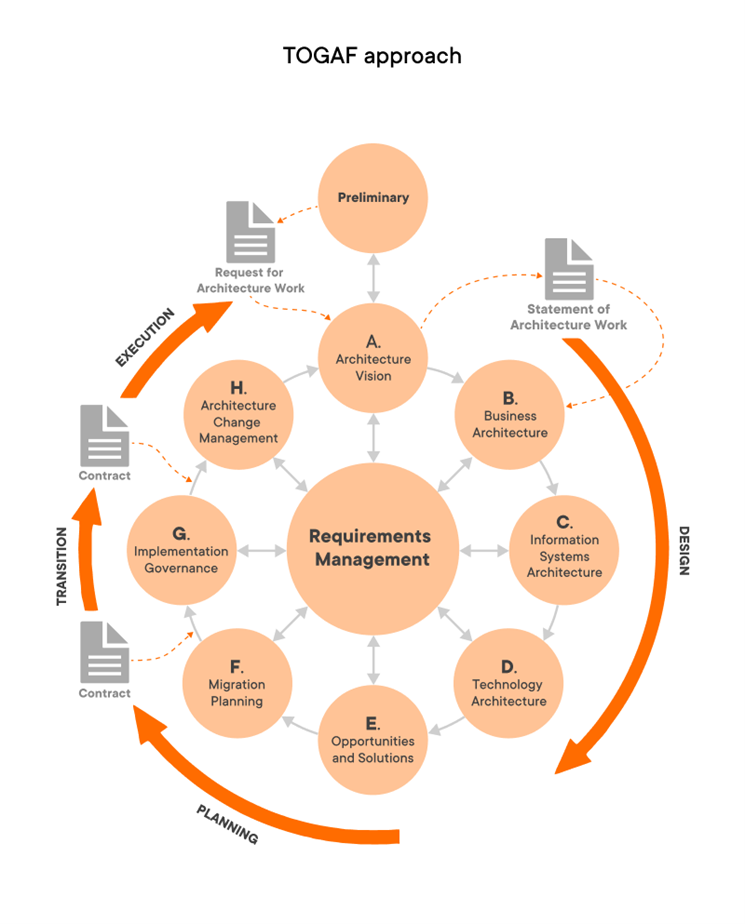
Source: Yalantis
Here’s a breakdown of what this approach entails:
1. Systems Thinking: It emphasizes understanding technology as a complex system composed of various interconnected components, including hardware, software, networks, and infrastructure. By adopting a systems thinking mindset, you consider the interactions and dependencies between these elements and how they contribute to the overall functionality and performance of the technology solution.
2. Design Principles: Just as an architect follows design principles to create functional and aesthetically pleasing buildings, an architectural approach to technology involves applying design principles to technology solutions. This includes factors such as scalability, reliability, security, usability, and maintainability. By considering these principles, you ensure that the technology solution meets the needs of the customers in a comprehensive and efficient manner.
3. Planning and Strategy: An architectural approach involves planning and strategizing technology initiatives in a structured manner. It includes identifying customer needs, setting clear goals and objectives, conducting feasibility studies, and aligning technology solutions with business strategies. This approach ensures that the technology solutions not only address customer needs but also contribute to the overall success of the organization.
4. Integration and Interoperability: In the technology service sector, various systems and technologies often need to work together seamlessly. An architectural approach focuses on designing technology solutions with integration and interoperability in mind. It involves considering standards, protocols, and APIs (Application Programming Interfaces) to facilitate smooth data exchange and collaboration between different systems, both within the organization and with external partners.
5. Adaptability and Future-proofing: Technology is constantly evolving, and customer needs change over time. An architectural approach to technology emphasizes building solutions that are adaptable and future-proof. This involves considering factors like scalability, flexibility, and the ability to accommodate emerging technologies and evolving requirements. By designing technology solutions with adaptability in mind, you ensure that they can continue to meet customer needs and remain relevant in the face of changing circumstances.
Overall, “An Architectural Approach to Technology” in the context of your workshop signifies a comprehensive and strategic methodology for understanding, designing, and implementing technology solutions that align with customer needs in the technology service sector. It combines systems thinking, design principles, planning, integration, and adaptability to create effective and sustainable technology solutions.
The increased complexity of technology
The increased complexity of technology refers to the growing intricacy, sophistication, and interconnectivity of modern technological systems. Over the years, technology has become more advanced and integrated into various aspects of our lives, resulting in a higher degree of complexity in its design, implementation, and management.
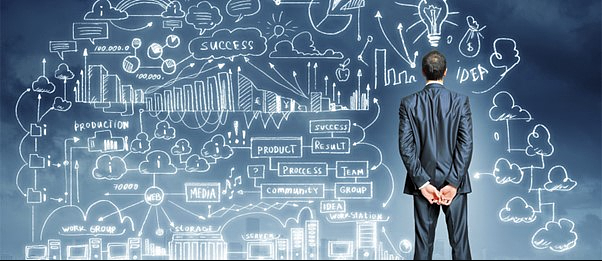
Source: David Friedman, LinkedIn
Several factors contribute to the increased complexity of technology:
Technological Advancements
Rapid advancements in various fields, such as artificial intelligence, big data, cloud computing, Internet of Things (IoT), and machine learning, have led to the development of more complex and powerful technologies. These advancements introduce new layers of complexity in terms of algorithms, data processing, infrastructure requirements, and integration challenges.
Interconnectedness
Modern technology systems are highly interconnected and rely on numerous components, devices, and software applications. The proliferation of interconnected systems, both within organizations and across global networks, creates complex ecosystems where data and information flow across multiple platforms, protocols, and interfaces.
Scalability and Flexibility
Technology systems are expected to be scalable and flexible to accommodate changing needs and growing user demands. This requirement introduces complexity in terms of designing architectures, platforms, and software that can handle increasing loads, adapt to varying conditions, and seamlessly integrate with other systems.
Integration Challenges
As technology solutions become more diverse and specialized, integrating different components and systems can become a complex task. Organizations often need to integrate multiple software applications, databases, APIs, and third-party services, requiring careful planning, compatibility assessments, and robust integration frameworks.
Security and Compliance
The complexity of technology also extends to security and compliance considerations. With the increasing frequency and sophistication of cyber threats, technology systems need to incorporate robust security measures, encryption protocols, access controls, and compliance frameworks. Ensuring the security of interconnected systems and protecting sensitive data adds complexity to technology implementation.
Legacy Systems and Technical Debt
Many organizations have existing legacy systems that were developed using outdated technologies and architectures. Integrating or migrating these systems with modern technologies can be complex, requiring careful planning, compatibility assessments, and often necessitating the management of technical debt.
Addressing the increased complexity of technology requires adopting architectural approaches, employing standardized design principles, leveraging automation and orchestration tools, and implementing effective governance and management strategies. It also necessitates collaboration among multidisciplinary teams, including architects, developers, engineers, and domain experts, to manage and navigate the complexity effectively.
The concept of an “Enterprise Architecture” (EA)
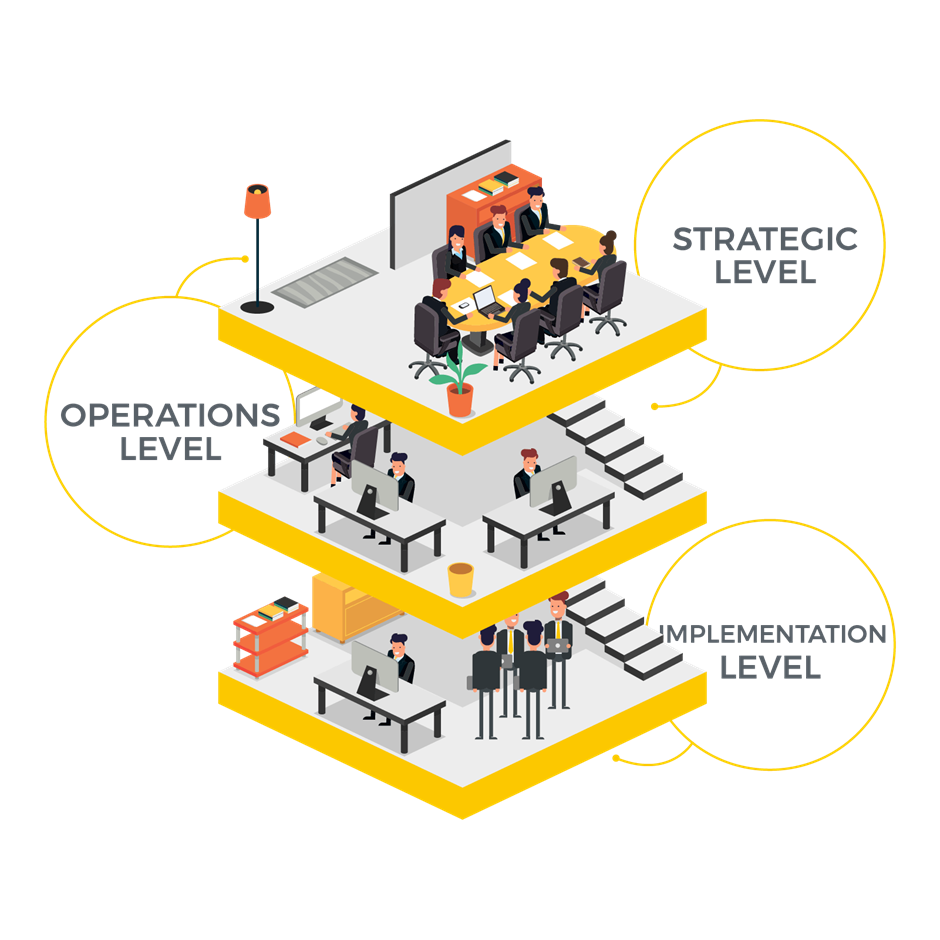
Source: Hoba Tech
Enterprise Architecture (EA) is a conceptual framework and methodology that organizations use to align their business strategies, goals, processes, and technology infrastructure. It provides a holistic view of the entire organization, its various components, and their interrelationships, enabling effective planning, design, and management of the enterprise’s structure and operations.
The key aspects of Enterprise Architecture include:
1. Business Architecture: This focuses on understanding and documenting the organization’s business strategies, goals, processes, functions, and organizational structure. It identifies the key capabilities required to achieve business objectives and defines how different business units and processes interact to deliver value.
2. Information Architecture: Information Architecture deals with the management and governance of an organization’s information assets. It includes the identification, organization, storage, integration, and delivery of data and information across the enterprise. This aspect ensures that information is available, reliable, secure, and aligned with business needs.
3. Application Architecture: Application Architecture involves the design and management of the organization’s software applications and systems. It includes the selection of appropriate technologies, the integration of applications, and the definition of standards and guidelines for application development and maintenance.
4. Technology Architecture: Technology Architecture focuses on the infrastructure and technical components that support the organization’s operations. It includes hardware, networks, databases, servers, cloud platforms, and other technology resources. Technology Architecture ensures that the technology infrastructure is robust, scalable, secure, and aligned with business and information needs.
The primary goals of Enterprise Architecture are to enhance business agility, improve decision-making, optimize resource utilization, foster innovation, and drive organizational transformation. By adopting EA, organizations can gain a comprehensive understanding of their current state, identify areas for improvement, and develop a target state that aligns business strategies, processes, and technology.
Enterprise Architecture frameworks, such as TOGAF (The Open Group Architecture Framework) and Zachman Framework, provide methodologies, best practices, and guidelines for developing and implementing EA within an organization. These frameworks offer a structured approach to capturing and documenting architecture artifacts, conducting analysis, and facilitating the alignment of business and technology.
EA is typically led by Enterprise Architects who collaborate with stakeholders across the organization, including business executives, IT professionals, and subject matter experts. They work together to create a shared vision of the enterprise, define architecture principles and standards, assess and manage risks, and guide the organization through change initiatives.
In summary, Enterprise Architecture is a strategic approach that enables organizations to align their business objectives, processes, and technology infrastructure. It provides a blueprint for organizational transformation, promotes efficient resource utilization, and facilitates the realization of business goals in a rapidly evolving digital landscape.
EA roadmaps and building blocks
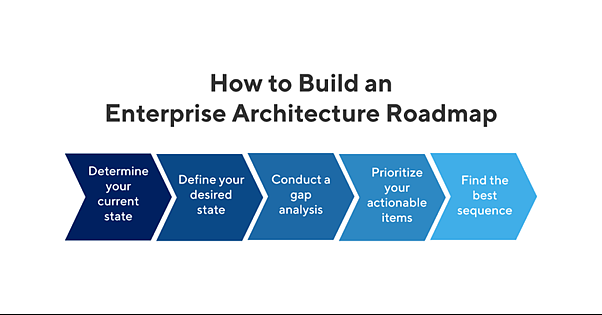
Source: Product Plan
EA roadmaps and building blocks are essential components of the Enterprise Architecture (EA) discipline. They provide guidance and structure for planning, prioritizing, and implementing architectural changes within an organization.
1. EA Roadmap: An EA roadmap outlines the strategic direction and timeline for implementing architectural changes and initiatives. It serves as a high-level plan that aligns the organization’s business objectives, technology initiatives, and architectural improvements. The roadmap typically spans multiple years and consists of a series of milestones, initiatives, and deliverables. It helps stakeholders visualize the sequence of activities required to transition from the current state to the desired future state architecture.
The EA roadmap provides clarity on the prioritization of architectural changes and allows stakeholders to allocate resources effectively. It takes into account factors such as business priorities, technology dependencies, resource availability, and risk considerations. The roadmap should be regularly reviewed, updated, and adjusted to reflect changing business needs, emerging technologies, and evolving organizational priorities.
2. Building Blocks: Building blocks are modular components of an organization’s architecture that can be reused across various projects and initiatives. They represent standardized, well-defined elements that can be assembled and integrated to create technology solutions. Building blocks capture best practices, proven patterns, and architectural principles specific to the organization. Examples of building blocks include software components, platforms, frameworks, standards, and reference architectures.
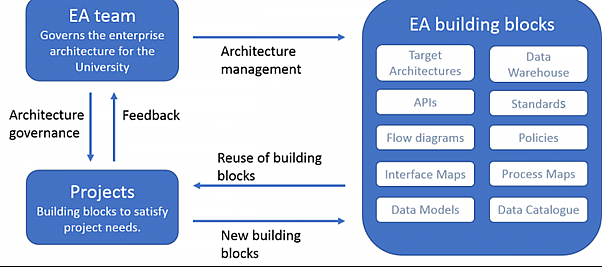
Source: University of Edinburgh
Building blocks facilitate consistency, efficiency, and agility in technology development and deployment. They promote reuse, reduce duplication of effort, and provide a foundation for consistent implementation of architectural standards and guidelines. By leveraging building blocks, organizations can accelerate the delivery of technology solutions, improve interoperability, and enhance overall system quality.
EA building blocks should be managed as a repository or catalog, documenting their characteristics, relationships, dependencies, and guidelines for usage. This catalog helps architects, developers, and project teams identify appropriate building blocks for their projects, ensuring compliance with architectural standards and fostering consistency and coherence across the enterprise.
Building blocks are typically categorized based on different architectural domains, such as data, application, infrastructure, and security. Each category may have its own set of building blocks specific to that domain, reflecting the organization’s unique requirements and technologies.
In summary, EA roadmaps and building blocks are critical tools in the practice of Enterprise Architecture. Roadmaps provide a strategic plan for implementing architectural changes over time, while building blocks offer reusable components and guidelines for consistent and efficient technology development. Together, they support effective decision-making, resource allocation, and the successful realization of an organization’s architectural vision.

Case Study: Amazon Web Services (AWS)
One example of a company that adopts an architectural approach to technology is Amazon Web Services (AWS), the cloud computing division of Amazon.com. AWS provides a comprehensive suite of cloud-based services and solutions to individuals, businesses, and governments, and their approach to technology is deeply rooted in architectural principles.
AWS employs a set of architectural best practices that guide customers in designing and implementing their technology solutions. These practices include:
1. Well-Architected Framework: AWS has developed the Well-Architected Framework, a set of guiding principles and best practices for building reliable, scalable, secure, and efficient cloud-based architectures. The framework encompasses five pillars: operational excellence, security, reliability, performance efficiency, and cost optimization. It helps organizations evaluate their architectures, identify areas of improvement, and make informed decisions to achieve desired outcomes.
2. Modular and Scalable Services: AWS offers a wide range of modular and scalable services, allowing customers to build and deploy their technology solutions using a building-block approach. These services, such as Amazon EC2 for computing power, Amazon S3 for storage, and Amazon RDS for managed databases, can be integrated and orchestrated to create flexible and scalable architectures tailored to specific needs.
3. API-Driven Infrastructure: AWS provides extensive APIs (Application Programming Interfaces) that allow customers to programmatically interact with their services and infrastructure. This API-driven approach enables organizations to automate provisioning, management, and deployment tasks, enhancing agility and scalability while reducing manual effort and potential errors.
4. Architectural Patterns: AWS offers a collection of architectural patterns, reference architectures, and design patterns that serve as blueprints for building technology solutions. These patterns address common architectural challenges, such as high availability, fault tolerance, data analytics, and microservices, providing guidance and best practices to ensure effective system design and implementation.
5. Partner Ecosystem: AWS has built a vast ecosystem of technology partners, including consulting firms, system integrators, and independent software vendors (ISVs). These partners have expertise in architecting, implementing, and managing solutions on AWS and provide additional support, specialized services, and pre-built architectures to assist customers in leveraging the architectural approach effectively.
By adopting an architectural approach, AWS enables customers to design, build, and operate technology solutions that are scalable, secure, and reliable. The emphasis on architectural best practices, modular services, automation, and a rich partner ecosystem contributes to the success of AWS in providing robust cloud-based infrastructure and services to a diverse range of organizations worldwide.

Exercise 1.5: Technology Alignment through Enterprise Architecture
1. Divide the participants into small groups of 3-5 members.
2. Show each group with the hypothetical scenario below these instructions.
3. Instruct each group to brainstorm and discuss the following points within their scenario:
a. Identify the key business objectives and goals of the organization.
b. Determine the current technology landscape, including existing systems, infrastructure, and applications.
c. Discuss the challenges and pain points that the organization is facing in achieving its objectives.
d. Explore how an EA approach could help the organization in evaluating and selecting appropriate technologies.
e. Identify the potential benefits and value of adopting an EA approach for technology decision-making.
f. Discuss specific EA practices, methodologies, or frameworks that can be applied to address the organization’s challenges.
4. Allocate a specific time frame (e.g., 20-30 minutes) for group discussions and brainstorming.
5. After the allocated time, reconvene the groups and ask each group to present their findings to the larger team.
6. Facilitate a group discussion where participants can share insights, exchange ideas, and reflect on the potential advantages of an EA approach in technology decision-making.
7. Summarize the key takeaways from the exercise, emphasizing the role of EA in aligning technology with business objectives, optimizing technology investments, and mitigating risks.
1. Promotes Collaboration: The exercise encourages participants to collaborate and work together in analyzing and addressing technology implementation challenges.
2. Encourages Critical Thinking: Participants are prompted to think critically about the value of EA in guiding technology decisions, considering business objectives, and evaluating the technology landscape.
3. Generates Insights: The exercise facilitates the generation of insights and perspectives on how an EA approach can provide clarity and direction in technology selection.
4. Enhances Understanding: Through group discussions and presentations, participants gain a better understanding of the benefits and practical application of EA in technology decision-making.
5. Knowledge Sharing: Participants can share their experiences, best practices, and insights, fostering a collaborative learning environment within the team.
1. Legacy Systems: ABC Manufacturing Company has a complex IT landscape with a mix of outdated, disparate systems that lack integration and hinder efficient operations.
2. Process Inefficiencies: Manual processes and paper-based workflows are prevalent, leading to inefficiencies, errors, and delays in production, inventory management, and order fulfillment.
3. Lack of Real-time Insights: The organization lacks access to real-time data and analytics, making it difficult to make informed decisions, identify bottlenecks, and optimize operations.
4. Scalability and Integration: As the company expands its operations and introduces new products, there is a need for scalable and integrated technology solutions that can support growth and enable seamless collaboration across departments and locations.
5. Security and Compliance: ABC Manufacturing Company must adhere to strict data security and compliance requirements, including protecting intellectual property, ensuring product quality, and complying with industry regulations.

Course Manual 6: Vision and Mission
Business Vision
A business vision refers to a concise and inspiring statement that outlines the long-term aspirations and goals of a company. It provides a clear picture of what the organization aims to achieve in the future and serves as a guiding principle for decision-making and strategy development.
A business vision typically encompasses several key elements:
1. Purpose: It defines the fundamental reason for the company’s existence beyond just making profits. It articulates the value the organization seeks to create for its customers, employees, and other stakeholders.
2. Ambition: A vision statement reflects the company’s aspirations and its desired position in the marketplace. It outlines the level of success the organization aims to achieve, often expressed in terms of growth, market share, or industry leadership.
3. Values: Core values are the guiding principles that shape the company’s culture, behavior, and relationships. A vision statement may incorporate these values to highlight the organization’s commitment to ethical conduct, innovation, customer satisfaction, or any other important principles.
4. Differentiation: The vision statement may also convey how the company aims to distinguish itself from competitors. It can highlight unique features, capabilities, or approaches that set the organization apart and contribute to its success.
5. Inspiration: A well-crafted vision statement should inspire and motivate employees, customers, and other stakeholders. It should create a sense of purpose and provide a clear direction for everyone involved with the company.
Ultimately, a business vision acts as a guiding star for the organization, driving strategic planning, decision-making, and the overall direction of the company. It helps align efforts across the organization and serves as a source of inspiration for individuals connected to the business.
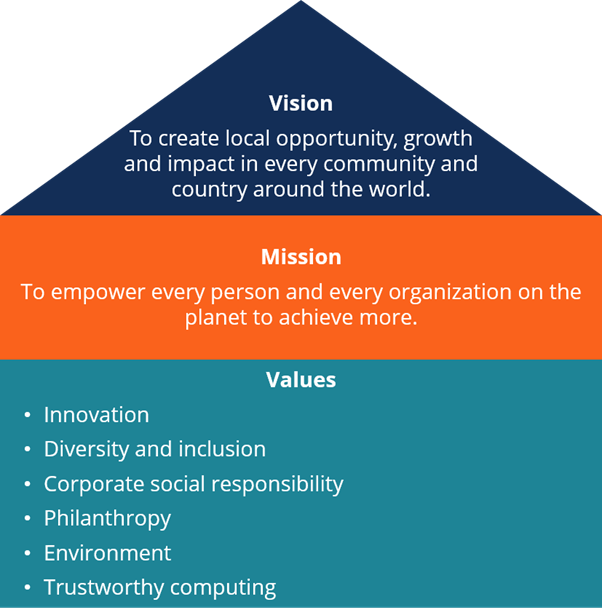
Source: Corporate Finance Institute
Business Mission
A business mission is a concise statement that defines the purpose and primary objectives of an organization. It communicates the fundamental reason for the company’s existence and clarifies what it seeks to achieve in the present. The mission statement typically focuses on the “why” and “how” of the company’s activities.
On the other hand, a business vision is a concise and inspiring statement that outlines the long-term aspirations and goals of a company. It provides a clear picture of what the organization aims to achieve in the future and serves as a guiding principle for decision-making and strategy development. The vision statement typically focuses on the “what” and “where” of the company’s direction.
Here are the key differences between a business mission and a business vision:
1. Timeframe: A business mission is focused on the present and defines the purpose and objectives of the organization in the current context. It describes what the company aims to achieve now. In contrast, a business vision looks to the future and outlines the long-term goals and aspirations of the company. It describes what the organization aspires to become or achieve in the future.
2. Scope: A business mission statement has a narrower scope and is more focused on the current operations and purpose of the organization. It typically includes elements such as the target audience, key offerings, and core values. The mission statement provides a concise statement of the company’s present objectives and identity. In contrast, a business vision has a broader scope and encompasses the overall direction and desired position of the organization in the future. It often includes elements such as market leadership, growth targets, differentiation, and core values. The vision statement provides a holistic view of the company’s long-term goals and aspirations.
3. Inspiration vs. Execution: A business mission statement is more focused on execution and the day-to-day operations of the company. It helps align efforts, establish clarity on the company’s purpose, and guide decision-making in the present. The mission statement acts as a reference point for employees to understand their roles and responsibilities. In contrast, a business vision is intended to inspire and motivate employees, customers, and stakeholders. It serves as a guiding star, painting a compelling picture of the future and creating a sense of purpose and direction. The vision statement influences strategic decision-making, goal setting, and organizational culture.
In summary, a business mission statement defines the purpose and objectives of the organization in the present, while a business vision statement outlines the long-term goals and aspirations of the company. The mission is focused on the current operations, while the vision provides a future-oriented direction. Both statements play important roles in guiding the organization, but they differ in terms of timeframe, scope, and their impact on strategy and execution.
Google’s Vision and Mission Statement
Mission Statement: “To organize the world’s information and make it universally accessible and useful.”
Google’s mission statement highlights their purpose of organizing information and making it accessible and useful to people globally. It emphasizes their focus on information management and their commitment to providing valuable services.
Vision Statement: “To provide access to the world’s information in one click.”
Google’s vision statement is concise and captures their goal of providing easy access to information. It reflects their desire to simplify the process of finding information and making it readily available to users.
Tesla’s Vision and Mission Statement
Mission Statement: “To accelerate the world’s transition to sustainable energy.”
Tesla’s mission statement emphasizes their commitment to promoting sustainable energy solutions. It underscores their goal of driving the shift towards clean energy sources and reducing dependence on fossil fuels.
Vision Statement: “To create the most compelling car company of the 21st century by driving the world’s transition to electric vehicles.”
Tesla’s vision statement outlines their ambition of becoming a leading car company by driving the global adoption of electric vehicles. It reflects their focus on innovation, technology, and their role in transforming the automotive industry.
These examples demonstrate how mission and vision statements articulate the purpose, goals, and aspirations of companies. They provide a clear direction and a sense of purpose for employees, customers, and stakeholders, guiding the company’s actions and strategic decisions.
Outcomes Vs Vision
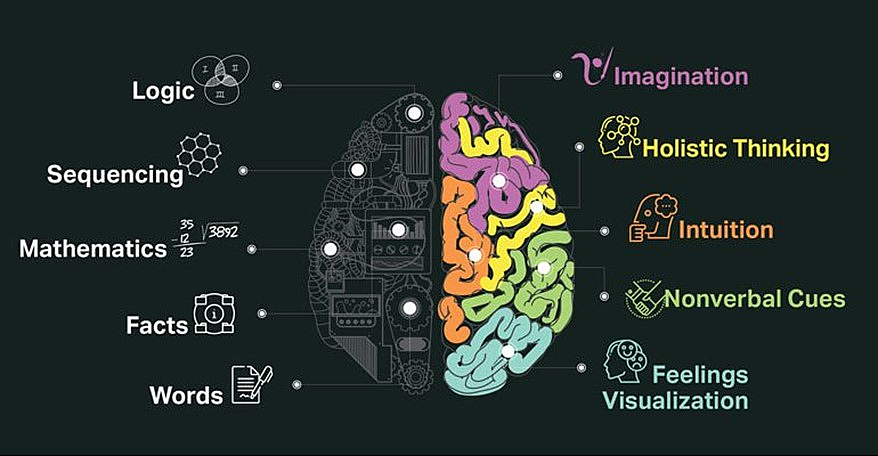
Source: Integreon
Outcomes vs. Vision (Left and Right Brain)” refers to a concept that highlights the different cognitive functions associated with the left and right hemispheres of the brain and how they relate to outcomes and vision in the context of decision-making and goal-setting.
The left hemisphere of the brain is commonly associated with logical thinking, analysis, and focusing on concrete details. It tends to be more analytical and rational in nature. The left brain is often associated with outcomes, as it focuses on measurable results and practical considerations.
The right hemisphere of the brain, on the other hand, is associated with creativity, imagination, and holistic thinking. It tends to see the bigger picture and is more intuitive and subjective in nature. The right brain is often associated with vision, as it looks beyond the immediate outcomes and focuses on long-term aspirations, possibilities, and broader perspectives.
When it comes to decision-making and goal-setting, both outcomes and vision play essential roles:
1. Outcomes: The left brain’s analytical and logical thinking is crucial for considering practical factors and assessing the potential outcomes of different choices. It focuses on specific goals, measurable targets, and tangible results. Considering outcomes helps in evaluating the feasibility, efficiency, and effectiveness of different options.
2. Vision: The right brain’s creative and holistic thinking helps to envision a desired future state. It involves thinking beyond immediate outcomes and considering long-term aspirations, innovation, and broader perspectives. Vision inspires and motivates, providing a sense of purpose and direction. It helps in setting ambitious goals, driving innovation, and creating a compelling narrative for stakeholders.
To make well-rounded decisions and set meaningful goals, it is important to strike a balance between outcomes and vision, leveraging both the analytical and creative aspects of thinking. This integration allows for considering practical considerations while also embracing the broader possibilities and long-term aspirations of an organization or individual.
Why should you Combine Vision and Outcomes for Maximum Power?
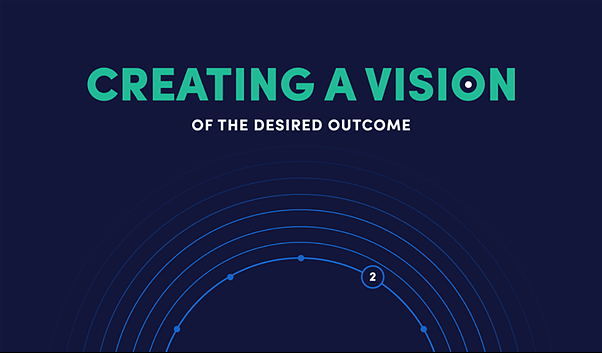
Source: Drawbackwards
Combining vision and outcomes is crucial for maximizing the power and effectiveness of decision-making and goal-setting. Here are several reasons why their combination is valuable:
1. Alignment and Clarity: A clear vision provides a sense of purpose and direction, while outcomes establish specific goals and measurable targets. By combining vision and outcomes, individuals and organizations can align their actions and efforts towards a common purpose. This alignment enhances clarity, ensuring that every action contributes to the broader vision.
2. Motivation and Inspiration: Vision serves as a source of motivation and inspiration. It paints a compelling picture of the future and helps individuals and teams understand the significance of their work. Outcomes, on the other hand, provide tangible milestones and markers of progress. By connecting outcomes to the broader vision, they become more meaningful and fuel motivation, as individuals can see the impact they are making towards the desired future state.
3. Long-term Thinking and Innovation: Vision encourages long-term thinking and fosters innovation. It pushes individuals and organizations to look beyond immediate results and consider possibilities, emerging trends, and disruptive ideas. Combining this visionary thinking with outcomes ensures that innovation is grounded in practical considerations and tangible goals, balancing the aspiration for change with the need for concrete results.
4. Adaptability and Flexibility: Combining vision and outcomes enables adaptability and flexibility in decision-making. While vision provides a guiding star, outcomes act as checkpoints that allow for adjustments and course corrections. Regularly assessing outcomes against the vision helps identify areas of improvement, reassess priorities, and adapt strategies as needed, ensuring that the organization remains on the right track towards its desired future.
5. Stakeholder Engagement: A well-defined vision combined with specific outcomes creates a compelling narrative that engages stakeholders. A clear vision captures their attention, while tangible outcomes provide evidence of progress and success. Engaged stakeholders are more likely to support and contribute to the organization’s efforts, fostering collaboration, and driving collective achievement.
In summary, combining vision and outcomes amplifies decision-making and goal-setting. It aligns actions, motivates individuals, fosters innovation, allows for adaptability, and engages stakeholders. By leveraging the power of both, organizations and individuals can maximize their potential and work towards creating a meaningful and impactful future.

Case Study: Why Uber failed to align their vision, mission and outcomes
One example of a company that faced challenges in aligning their vision and outcomes, as well as their vision and mission, is the global ride-hailing company Uber.
In its early years, Uber’s vision was to disrupt the traditional taxi industry and revolutionize transportation by providing a convenient and reliable ride-sharing service. The company’s vision emphasized the use of technology to connect riders with drivers and create a seamless experience. However, as Uber expanded rapidly and faced various operational and cultural issues, the alignment between their vision and outcomes became strained.
One area where the misalignment became apparent was in the company’s treatment of its drivers. While the vision highlighted the importance of driver-partners in delivering a positive customer experience, the outcomes and practices didn’t always reflect this. Complaints emerged regarding low wages, lack of benefits, and limited support for drivers. This created tensions and conflicts, as the outcomes didn’t fully align with the vision of creating a mutually beneficial platform for drivers and riders.
Moreover, Uber faced regulatory challenges in multiple markets due to its disruptive business model. The vision of revolutionizing transportation clashed with local regulations and industry norms, leading to legal battles and controversies. This misalignment between the vision and the regulatory outcomes created reputational risks and strained relationships with local communities and authorities.
Additionally, Uber faced internal cultural challenges and allegations of a toxic work environment. The vision of creating a customer-centric, technology-driven company clashed with reports of inappropriate behavior, workplace discrimination, and a lack of diversity and inclusion. This misalignment between the vision and the company’s internal culture impacted employee morale and public perception.
Over time, Uber has recognized these misalignments and has taken steps to address them. The company has made efforts to improve driver benefits and support, enhance regulatory compliance, and address workplace culture issues. They have refined their vision, mission, and core values to reflect a more inclusive and responsible approach to transportation.
The example of Uber illustrates the importance of consistently aligning vision, mission, and outcomes. When there is a disconnect between the stated vision and the actual outcomes, it can lead to operational challenges, reputational risks, and conflicts with stakeholders. It highlights the significance of actively monitoring and adjusting strategies and practices to ensure they align with the intended vision and mission of the company.

Exercise 1.6: Exercise: Defining Vision and Mission for Customer Success
1. Form small groups: Divide the participants into small groups of 3 to 5 people.
2. Identify the customer: Select one of your company’s key customers as the focus of the exercise. If you don’t have a specific customer in mind, create a fictional customer persona based on your target audience.
3. Understand the customer: Each group should spend some time discussing and understanding the customer’s industry, challenges, goals, and values. Consider factors such as their core offerings, target market, competitive landscape, and unique value proposition.
4. Vision development (15 minutes): In their groups, participants should brainstorm and develop a vision statement that reflects the customer’s future aspirations and the impact they aim to make in their industry or market. Encourage creativity and big-picture thinking while ensuring alignment with the customer’s values and long-term objectives.
5. Mission development (15 minutes): Participants should then work on creating a mission statement for the customer that succinctly articulates their purpose, primary objectives, and key strategies. The mission statement should capture how the customer aims to fulfill their vision and the value they bring to their stakeholders.
6. Group presentations (10 minutes per group): Each group presents their vision and mission statements to the larger group. Allow time for questions and feedback.
7. Consolidate and refine: After all groups have presented, encourage a group discussion to identify common themes, strengths, and areas for improvement in the generated vision and mission statements. Collaboratively refine and enhance the statements based on the feedback received.
8. Finalize and share: Once the vision and mission statements are refined, summarize and share them with the larger team or stakeholders. Emphasize the importance of aligning company efforts and strategies to support the success of the customer.

Course Manual 7: The Business Model Canvas
The importance of understanding the bigger picture
Understanding the bigger picture is crucial in the technology services industry, as it enables businesses to make informed decisions, develop effective strategies, and adapt to the ever-evolving landscape. Here are several reasons why understanding the bigger picture is important:

Source: Exhibition News
Strategic planning
Having a comprehensive understanding of the broader industry trends, market dynamics, and emerging technologies allows businesses to develop strategic plans that align with the overall direction of the industry. It helps identify opportunities for growth, anticipate potential challenges, and make informed decisions about resource allocation and investment.
Competitive advantage
A holistic view of the bigger picture enables businesses to differentiate themselves from competitors. By understanding market trends, customer needs, and emerging technologies, companies can position themselves as leaders in specific niches or provide innovative solutions that address evolving customer demands.
Identifying opportunities and risks
The technology services industry is highly dynamic and constantly evolving. Understanding the bigger picture helps businesses identify emerging opportunities that can be leveraged to gain a competitive edge. Similarly, it allows them to anticipate potential risks and challenges, such as disruptive technologies, regulatory changes, or shifts in customer preferences.
Collaboration and partnerships
In the technology services industry, collaboration and partnerships are essential for success. Understanding the bigger picture helps businesses identify potential collaborators, strategic partners, or acquisition targets that can complement their strengths and help them achieve their goals. It facilitates effective communication and alignment of objectives with partners, leading to mutually beneficial outcomes.
Innovation and adaptation
Technology is rapidly evolving, and businesses need to stay ahead of the curve to remain relevant. By understanding the bigger picture, companies can identify emerging technologies, industry trends, and customer needs, enabling them to innovate and adapt their offerings accordingly. This helps them stay competitive and meet the changing demands of the market.
Customer-centric approach
Understanding the bigger picture involves gaining insights into customer preferences, pain points, and evolving needs. This knowledge allows businesses to deliver solutions that align with customer expectations and provide enhanced value. It helps in developing customer-centric strategies, improving customer experience, and fostering long-term relationships.
In summary, understanding the bigger picture in the technology services industry is vital for strategic planning, gaining a competitive advantage, identifying opportunities and risks, fostering collaboration, driving innovation, and delivering customer-centric solutions. It enables businesses to navigate the complex landscape, make informed decisions, and position themselves for long-term success.

Case Study: How Nokia failed to see the bigger picture
An example of a company that failed to see the bigger picture is Nokia, once a global leader in the mobile phone industry.
In the early 2000s, Nokia was the dominant player in the mobile phone market, renowned for its innovative designs and user-friendly devices. However, the company failed to anticipate the rapid shift towards smartphones and the transformative impact they would have on the industry.
Nokia was focused on maintaining its stronghold in the feature phone market and underestimated the potential of smartphones, initially dismissing them as a niche market. They continued to prioritize their Symbian operating system, which powered their feature phones, while competitors like Apple and Google were investing heavily in developing smartphone platforms.
When Apple introduced the iPhone in 2007, followed by the rise of Android smartphones, Nokia’s market position began to decline. They were slow to adapt to the touch-screen, app-driven smartphone revolution, clinging to their traditional approach and underestimating the importance of the software ecosystem that accompanied smartphones.
Nokia’s leadership failed to recognize the shift in consumer preferences towards touch-screen devices and the importance of a seamless user experience offered by smartphones. They continued to produce devices with physical keypads and resisted the adoption of touch-screen technology, which put them at a significant disadvantage in the evolving market.
Moreover, Nokia’s collaboration with Microsoft to adopt the Windows Phone operating system as a replacement for Symbian did not yield the desired results. The partnership faced challenges in gaining traction and competing with the established dominance of iOS and Android.
By the time Nokia fully embraced smartphones and shifted to the Windows Phone platform, they had already lost significant market share to competitors. Their inability to foresee the bigger picture of the smartphone revolution and adapt their strategy accordingly led to a decline in sales, profitability, and ultimately resulted in the sale of Nokia’s mobile phone business to Microsoft in 2014.
This example highlights how Nokia’s failure to understand the bigger picture of the smartphone revolution and adapt their strategy to the changing market dynamics led to a loss of market leadership and a decline in their position within the mobile phone industry. It emphasizes the importance of continuously assessing industry trends, understanding customer preferences, and being agile in adapting to technological advancements to stay competitive.
The Business Model Canvas
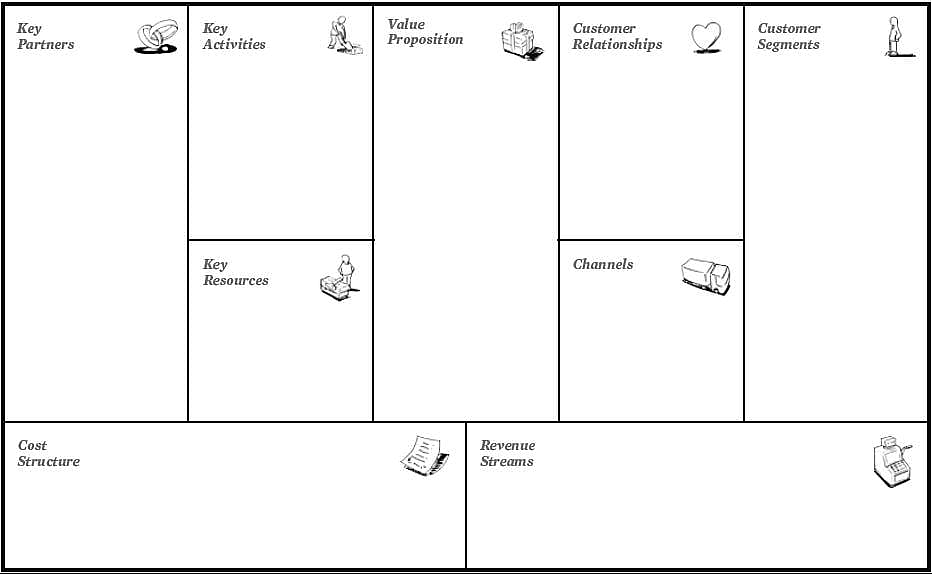
Source: Business Models Inc
The Business Model Canvas is a strategic management and entrepreneurial tool that provides a visual framework for describing, analyzing, and designing business models. It was developed by Alexander Osterwalder and Yves Pigneur and has gained widespread popularity among entrepreneurs, startups, and established businesses.
The canvas consists of nine key building blocks that capture the fundamental aspects of a business model. These building blocks are:
1. Customer Segments: This block defines the specific groups of customers or market segments that a business aims to serve. It helps identify the target audience and understand their needs, preferences, and behaviors.
2. Value Proposition: The value proposition describes the unique value that a business offers to its customers. It highlights the products, services, or solutions that address customer needs, solve their problems, or fulfill their desires.
3. Channels: This block focuses on how a business reaches and interacts with its customers. It includes the distribution channels, communication channels, and touchpoints used to deliver the value proposition to customers.
4. Customer Relationships: This block describes the types of relationships a business establishes and maintains with its customers. It covers aspects such as customer acquisition, customer retention, and customer support strategies.
5. Revenue Streams: This building block outlines the ways in which a business generates revenue from its customers. It includes pricing models, revenue sources, and revenue streams associated with different customer segments or value propositions.
6. Key Activities: This block represents the critical activities that a business must perform to deliver its value proposition and operate effectively. It includes activities such as production, marketing, sales, distribution, and customer support.
7. Key Resources: Key resources are the assets, infrastructure, and capabilities that a business requires to deliver its value proposition and operate efficiently. These resources can be physical, intellectual, financial, or human.
8. Key Partnerships: This block identifies the strategic alliances, partnerships, or collaborations that a business forms to leverage external resources, expertise, or distribution channels. It includes suppliers, outsourcing relationships, co-creation partnerships, and other cooperative arrangements.
9. Cost Structure: The cost structure outlines all the costs and expenses associated with operating a business model. It covers both fixed and variable costs, economies of scale, cost drivers, and cost allocation across different business activities.
The Business Model Canvas provides a holistic view of a business model and encourages a systematic analysis of its components. It allows entrepreneurs and businesses to identify strengths, weaknesses, and potential areas for improvement. It also facilitates communication, collaboration, and innovation by providing a shared language and framework for discussing and designing business models.
The Business Model Canvas in the Technology Services Industry
Example:
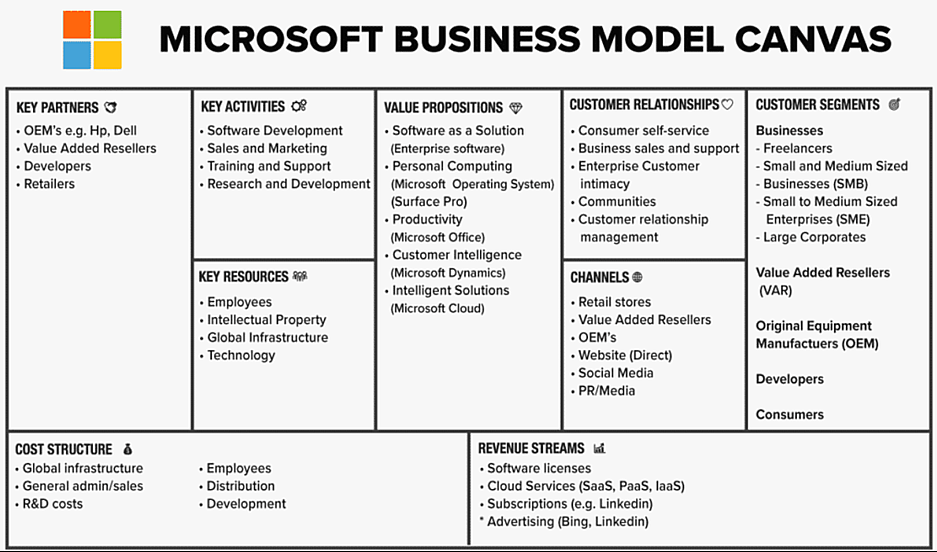
Source: Gary Fox
The Business Model Canvas can be highly relevant and beneficial for the technology services industry. Here’s how it relates to this industry:
1. Customer Segments: Technology services companies need to clearly identify and understand their target customer segments. This could include businesses in specific industries, government organizations, or individual consumers. The canvas helps in defining the unique needs, pain points, and preferences of these segments, enabling companies to tailor their services accordingly.
2. Value Proposition: Technology services companies must articulate their value proposition clearly to differentiate themselves from competitors. This could involve offering specialized expertise, innovative solutions, cost savings, efficiency improvements, or superior customer support. The canvas helps companies define and refine their value proposition to meet the specific needs of their target customers.
3. Channels: Technology services are often delivered through various channels, such as online platforms, mobile applications, direct sales, partnerships, or integrations with other systems. The canvas helps companies identify and optimize the most effective channels to reach and engage their customers, ensuring seamless delivery of services.
4. Customer Relationships: Building strong customer relationships is crucial in the technology services industry. The canvas encourages companies to define their customer relationship strategies, whether it’s through personalized support, self-service options, ongoing account management, or community engagement. It helps businesses design approaches that enhance customer satisfaction and loyalty.
5. Revenue Streams: Technology services companies generate revenue through various models, such as subscription fees, licensing, project-based pricing, or advertising. The canvas helps in analyzing and designing revenue streams that align with the value delivered and the preferences of target customers. It also facilitates exploring additional revenue streams or monetization opportunities.
6. Key Activities: Technology services require specific key activities, such as software development, infrastructure management, consulting, training, or maintenance and support. The canvas helps identify and prioritize these activities, ensuring that the necessary resources and capabilities are allocated appropriately to deliver the promised services.
7. Key Resources: In the technology services industry, key resources may include skilled personnel, technology infrastructure, software platforms, intellectual property, partnerships with technology providers, or access to data. The canvas aids in identifying and leveraging these resources effectively to support the delivery of services and create a competitive advantage.
8. Key Partnerships: Collaboration and partnerships are prevalent in the technology services industry. This may involve strategic alliances with technology vendors, resellers, platform providers, or co-creation partnerships with other service providers. The canvas helps companies identify and foster partnerships that enhance their offerings, extend their reach, or access complementary resources.
9. Cost Structure: Understanding the cost structure is essential for technology services companies to ensure profitability and sustainability. The canvas helps identify the cost drivers, such as personnel, infrastructure, marketing, or research and development, and enables efficient cost allocation across different activities. It assists in optimizing costs while delivering high-quality services.
By applying the Business Model Canvas to the technology services industry, companies can gain a holistic view of their business model, align their strategies with customer needs, optimize their operations, identify new opportunities, and ensure a strong value proposition. It facilitates the development of innovative and customer-centric business models that thrive in the dynamic and competitive technology services landscape.
Desirability, Viability, and Feasibility
Source: Crowd Favorite
Desirability, viability, and feasibility are three key considerations when evaluating the potential success of a product, service, or business idea. They represent different aspects that need to be addressed to ensure a well-rounded and sustainable solution. Here’s a breakdown of each concept:
Desirability
Desirability refers to the extent to which a product or service meets the needs, desires, and preferences of the target customers or users. It focuses on understanding and addressing customer pain points, delivering value, and creating a positive user experience. Desirability involves conducting market research, user testing, and gathering feedback to ensure that the offering resonates with the intended audience. It considers factors such as usability, aesthetics, emotional appeal, and the overall fit with customer expectations.
Viability
Viability assesses the potential economic and business viability of a product, service, or business idea. It involves analyzing the financial aspects, such as revenue generation, cost structure, pricing strategies, and market demand. Viability also considers the competitive landscape, market size, growth potential, and the ability to create a sustainable business model. The goal is to ensure that the offering has a realistic path to profitability, scalability, and long-term success.
Feasibility
Feasibility focuses on the technical and operational feasibility of implementing and delivering the product or service. It examines whether the required technology, resources, capabilities, and infrastructure are available or can be developed within a reasonable time frame. Feasibility considers factors such as technical complexity, resource requirements, time constraints, regulatory compliance, and potential risks or challenges. Assessing feasibility helps determine if the idea can be executed effectively and if the necessary resources can be allocated appropriately.
In summary, desirability emphasizes the customer’s perspective and ensuring a compelling user experience. Viability focuses on the financial and business aspects, ensuring a sustainable and profitable venture. Feasibility examines the technical and operational feasibility of implementing the idea effectively. Considering all three factors – desirability, viability, and feasibility – is essential for developing successful products, services, or business ventures that meet customer needs, are financially viable, and can be implemented effectively.
Practical Example
Let’s consider the example of a startup that aims to develop a mobile app for personalized fitness training.
1. Desirability: The startup conducts market research and user surveys to understand the needs and preferences of its target audience, which could be fitness enthusiasts looking for personalized workout routines. They discover that many users find it challenging to find customized fitness programs that suit their goals, fitness levels, and time constraints. The startup designs an app that offers tailored workout plans, tracks progress, provides exercise demonstrations, and offers nutrition tips. By addressing these pain points and providing a user-friendly interface, the startup ensures the app’s desirability.
2. Viability: The startup assesses the viability of the app by analyzing the potential market size, revenue sources, and competitive landscape. They identify a growing market of fitness enthusiasts and the increasing demand for personalized fitness solutions. The startup plans to generate revenue through a freemium model, offering a basic version of the app for free and charging a subscription fee for premium features and personalized training programs. They estimate the potential user base, subscription rates, and associated costs to ensure the financial viability of the business model.
3. Feasibility: The startup evaluates the feasibility of developing and delivering the mobile app. They assess the required technical infrastructure, such as app development expertise, backend systems for data storage and analysis, and integration with fitness tracking devices. The team also considers operational aspects like user support, content creation for workout programs, and scalability as the user base grows. They ensure that the necessary resources and capabilities are available or can be acquired to successfully develop, launch, and maintain the app.
By considering desirability, viability, and feasibility in this example, the startup ensures that their mobile app for personalized fitness training meets the needs of fitness enthusiasts (desirability), has a viable business model to generate revenue (viability), and can be technically and operationally implemented effectively (feasibility). This comprehensive evaluation increases the chances of success in the competitive market of fitness technology services.
Target, Offering, Activity, Financial
Let’s delve into the concepts of Target, Offering, Activity, and Financial in the context of business strategy:
Target

Source: Company Bug
The target refers to the specific audience or market segment that a business aims to serve or reach. It involves identifying the ideal customer profile, understanding their needs, preferences, and behaviors, and tailoring products, services, and marketing strategies accordingly. Defining a clear target audience helps businesses focus their resources and efforts on the most relevant customer segments, increasing the effectiveness of their marketing and sales activities.
Offering
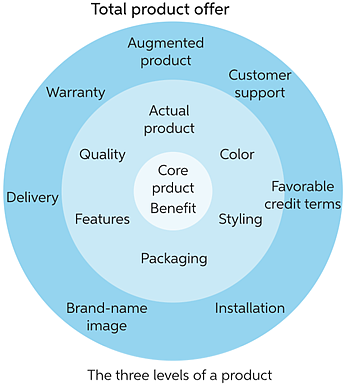
Source: Chegg
The offering represents the products, services, or solutions that a business provides to its customers. It encompasses the value proposition, features, benefits, and unique selling points that differentiate the business from competitors. The offering should align with the needs and preferences of the target audience, addressing their pain points and fulfilling their desires. A compelling and differentiated offering is essential for attracting and retaining customers, and it forms the core of a business’s value proposition.
Activity
Activities refer to the specific actions, tasks, and processes that a business undertakes to deliver its products or services and create value for customers. These activities can include manufacturing, development, marketing, sales, distribution, customer support, or any other operational or strategic tasks necessary to run the business. Identifying key activities and ensuring their efficient execution is crucial for optimizing operational processes, enhancing customer experience, and achieving business objectives.
Financial
The financial aspect of a business pertains to the financial metrics, resources, and strategies that impact its financial performance and sustainability. It involves managing revenue, costs, profitability, cash flow, investments, and financial risks. Financial considerations include pricing strategies, revenue streams, cost structures, budgeting, financial forecasting, and financial decision-making. A sound financial strategy is essential for ensuring the business’s profitability, growth, and long-term viability.
By addressing the concepts of Target, Offering, Activity, and Financial, businesses can develop a comprehensive understanding of their market, differentiate their offerings, optimize their operational processes, and ensure a sustainable financial performance. These elements play a critical role in developing and executing a successful business strategy.

Exercise 1.7: Create a Business Model Canvas
1. Divide the participants into groups. Each group should consist of 3-5 participants.
2. Instruct each group to choose one of their company’s existing customers as the focus for the exercise. If possible, encourage them to select customers from different industries or with varying business models to promote diversity and learning.
3. Provide the necessary information about the chosen customer to each group. This can include details about the customer’s industry, their business goals, their products or services, their target audience, and any other relevant information that helps the groups understand the customer’s business.
4. Explain the concept of the Business Model Canvas and provide a brief overview of its nine building blocks: Customer Segments, Value Proposition, Channels, Customer Relationships, Revenue Streams, Key Activities, Key Resources, Key Partnerships, and Cost Structure.
5. Instruct each group to work together and create a Business Model Canvas for the chosen customer. They should analyze and discuss each building block, considering the customer’s unique characteristics, value proposition, revenue streams, key activities, and more.
6. Allocate a specific amount of time (around 30 minutes) for the groups to work on their canvases. Encourage them to collaborate, brainstorm ideas, and consider different perspectives within the group.
7. Once the allotted time is over, ask each group to present their customer’s Business Model Canvas to the rest of the participants. They should explain the key elements, strategic choices, and any insights they gained during the exercise.
8. Facilitate a discussion after each presentation, allowing participants to ask questions, provide feedback, and share their observations about the customer’s business model.
9. Conclude the exercise by summarizing the main findings and insights from the different customer Business Model Canvases. Encourage participants to reflect on the exercise and discuss how this understanding can help in developing better products or services for their customers.

Course Manual 8: Customer Requirement: The Challenge
“Customer Requirements: The Challenge” refers to the difficulties and complexities involved in identifying, understanding, and meeting the needs and expectations of customers or clients. It emphasizes the fact that customer requirements can be diverse, evolving, and sometimes contradictory, making it a challenging task for businesses to effectively address them.
In the technology services industry, customer requirements play a crucial role in shaping the development and delivery of products and services. Here’s how it relates to the industry:
Customization and Personalization
Technology services often involve providing customized solutions tailored to the unique requirements of each customer. This could range from developing custom software applications to implementing specific features or functionalities. The challenge lies in accurately capturing and interpreting the customer’s vision and translating it into a practical solution.
Rapid Technological Advancements
Technology is rapidly evolving, introducing new possibilities and changing customer expectations. Staying up-to-date with emerging technologies and understanding how they can meet customer needs can be a challenge for technology service providers. Adapting to these changing requirements requires continuous learning and innovation.
Balancing Cost and Complexity
Customers often have limited budgets and specific cost constraints. Technology service providers need to strike a balance between meeting customer requirements and managing the complexity and associated costs. This challenge involves finding cost-effective solutions that align with customer expectations while ensuring profitability for the service provider.
Communication and Collaboration
Understanding customer requirements necessitates effective communication and collaboration between technology service providers and their clients. Bridging the gap in technical expertise and domain knowledge can be challenging, as customers may not possess the same level of understanding of technology as the service providers. Clear and concise communication is crucial to ensure both parties are on the same page.
Changing and Evolving Requirements
Customer requirements can evolve throughout the project lifecycle. Technology service providers must be adaptable and responsive to these changes, while still maintaining project timelines and budget constraints. Managing changing requirements and scope creep can be a significant challenge, requiring strong project management and flexibility.
To address the challenges of customer requirements, technology service providers often employ techniques like requirements gathering, user research, prototyping, and agile development methodologies. These practices help in actively involving customers in the development process, iterating on solutions, and ensuring the final product meets their needs.
Overall, the technology services industry faces the ongoing challenge of accurately identifying and addressing customer requirements in a rapidly changing technological landscape. Success in this area can lead to customer satisfaction, loyalty, and a competitive advantage in the market.
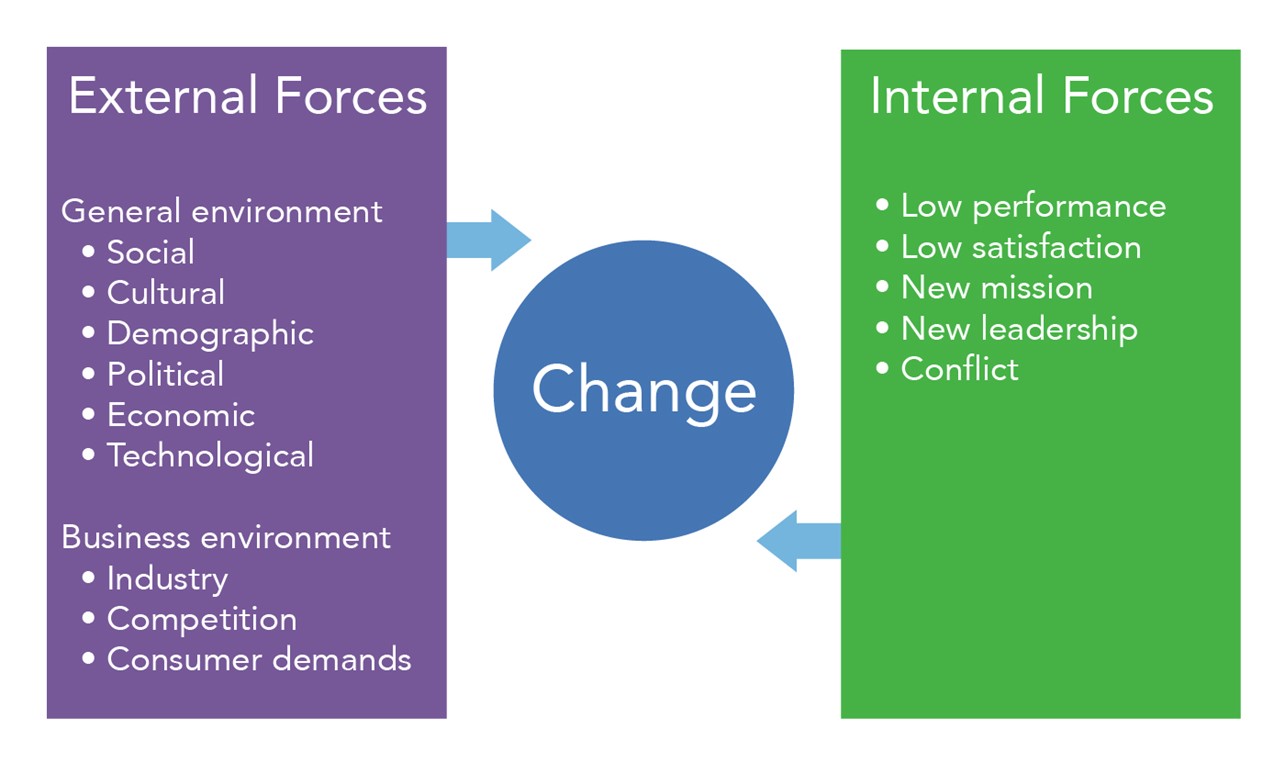
Source: Lumen Learning
What causes change to occur?
In the technology service industry, as well as the professional services industry as a whole, several factors contribute to change. These industries are dynamic and constantly evolving, driven by various internal and external factors. Here are some key factors that cause change in these industries:
1. Technological Advancements: Technological advancements are one of the primary drivers of change in the technology service industry. New innovations, such as artificial intelligence, cloud computing, blockchain, or Internet of Things (IoT), can disrupt existing business models, create new opportunities, and reshape industry landscapes. Service providers must stay updated with emerging technologies and adapt their offerings to meet the changing needs and demands of their customers.
2. Customer Expectations: Customer expectations play a significant role in driving change in both the technology service industry and the professional services industry. As customers become more informed and technology-savvy, they expect faster, more efficient, and personalized solutions. Service providers must constantly evolve their offerings to meet these changing customer expectations and deliver exceptional customer experiences.
3. Market Competition: Intense competition within the technology service and professional services industries also leads to change. Service providers need to differentiate themselves from their competitors by offering unique value propositions, innovative solutions, and superior customer service. Market competition fosters continuous improvement and drives service providers to adapt, innovate, and evolve their offerings.
4. Regulatory and Compliance Requirements: Changes in regulations, laws, and compliance requirements have a significant impact on both industries. Compliance standards, data privacy regulations, cybersecurity measures, and industry-specific regulations continually evolve. Service providers must stay compliant and adapt their processes, systems, and services to meet the changing legal and regulatory landscape.
5. Economic Factors: Economic conditions and market trends can trigger change in the technology service and professional services industries. Economic downturns, shifts in customer spending patterns, and industry-specific market trends can impact the demand for services, pricing structures, and the types of services required. Service providers must be agile in response to economic fluctuations and adjust their strategies and offerings accordingly.
6. Industry Consolidation and Mergers: Mergers, acquisitions, and industry consolidation can cause significant changes within the technology service and professional services sectors. Consolidation leads to the integration of services, expansion into new markets, and the emergence of larger service providers with enhanced capabilities. These changes can reshape industry dynamics and alter the competitive landscape.
7. Internal Organizational Strategies: Service providers themselves may initiate change within their organizations to improve efficiency, increase profitability, or align with strategic goals. This may involve restructuring, process optimization, adopting new methodologies or frameworks, investing in training and upskilling employees, or exploring new business models. Internal initiatives drive change and position service providers for future success.
It’s important for technology service and professional service providers to proactively monitor these factors, stay adaptable, and embrace change as a constant. By anticipating and responding effectively to change, service providers can stay competitive, meet evolving customer needs, and capitalize on emerging opportunities.
Internal and External Drivers for Change
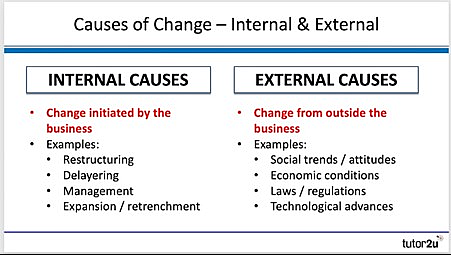
Internal and external drivers for change refer to the factors that originate either within an organization or from the external environment, respectively, and lead to the need for organizational change. Let’s explore both types of drivers:
Internal Drivers for Change:
1. Organizational Strategy: Changes in the organization’s strategic direction, goals, or objectives can trigger internal change. This may involve entering new markets, diversifying product offerings, or restructuring the organization to improve efficiency and competitiveness.
2. Organizational Culture: A shift in the organizational culture, values, or norms can drive internal change. For example, a company may strive to foster a culture of innovation, collaboration, or adaptability, which requires changes in processes, communication channels, or employee engagement practices.
3. Leadership and Management Initiatives: Changes initiated by leaders and managers within the organization can be internal drivers. This could involve implementing new management practices, adopting new technologies, or reorganizing departments to enhance effectiveness and drive innovation.
4. Employee Needs and Feedback: Employee feedback, suggestions, and changing needs can lead to internal change. For instance, if employees express the need for better work-life balance or professional development opportunities, the organization may introduce flexible work policies or implement training programs.
5. Performance and Efficiency Improvement: Identifying opportunities to improve performance, enhance efficiency, or reduce costs can drive internal change. This might involve process reengineering, automation, or the implementation of quality management systems to optimize operations.
External Drivers for Change:
1. Market Forces: Changes in the market, including shifts in customer preferences, emerging trends, or new competitors, can necessitate change. Organizations must adapt their products, services, and strategies to meet evolving market demands and maintain a competitive edge.
2. Technological Advancements: Rapid technological advancements and innovations can act as external drivers for change. Organizations must stay abreast of technological developments and embrace new technologies to remain relevant, improve processes, and deliver innovative solutions to customers.
3. Regulatory and Legal Requirements: Changes in regulations, laws, or industry standards can compel organizations to make changes. Compliance with new regulations, data protection laws, or environmental standards may require process modifications, infrastructure upgrades, or the adoption of new policies and procedures.
4. Economic Factors: Economic conditions, such as recessions, inflation, or changes in consumer spending patterns, can influence organizational change. Organizations may need to adjust their pricing strategies, market positioning, or cost structures to adapt to economic fluctuations.
5. Demographic and Societal Shifts: Changes in demographics, social values, or cultural norms can drive external change. For instance, organizations may modify their marketing approaches or product offerings to cater to a new generation of consumers or align with evolving societal expectations.
6. Competitive Pressures: Intense competition within the industry can act as an external driver for change. Organizations must continuously assess and respond to competitive pressures, such as price wars, disruptive business models, or new market entrants.
Both internal and external drivers for change are interconnected and often influence each other. Successful organizations proactively monitor these drivers, anticipate change, and adapt their strategies, processes, and structures to remain agile and responsive to the evolving business landscape.
The PESTLE Analysis
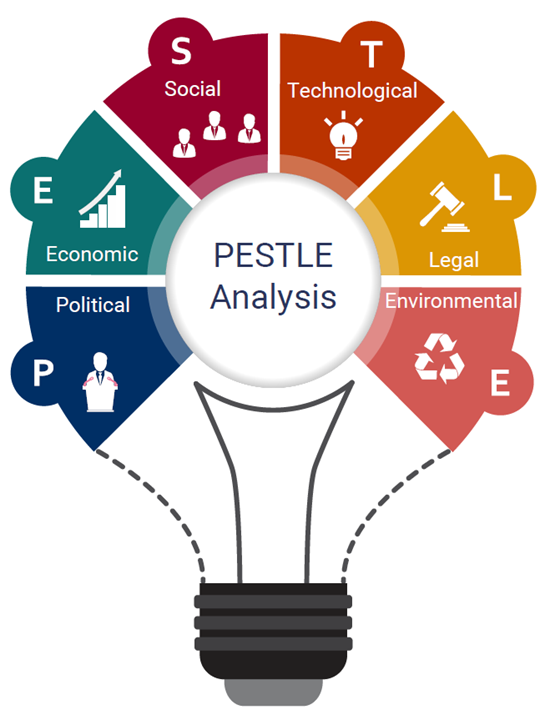
Source: IBISWorld
PESTLE analysis is a framework used to analyze the external macro-environmental factors that can impact an organization or industry. It stands for Political, Economic, Sociocultural, Technological, Legal, and Environmental factors. PESTLE analysis helps organizations gain insights into the external forces and trends that may influence their operations, strategies, and decision-making processes.

Source: Business-to-you.com
Here’s a practical example of a PESTLE analysis for a fictional retail company:
1. Political Factors: These factors examine the influence of political institutions and actions on the business environment. For example:
• Government stability and policies: Changes in government policies regarding taxation, trade regulations, or labor laws can impact the retail industry.
• Political stability and geopolitical factors: Political instability, international relations, or conflicts can affect supply chains and global operations.
2. Economic Factors: Economic factors focus on the overall economic conditions and trends that can affect the business. For example:
• Economic growth and recession: Economic downturns may lead to reduced consumer spending, affecting the company’s sales and profitability.
• Inflation rates and interest rates: High inflation or interest rates can impact consumer purchasing power and borrowing costs.
3. Sociocultural Factors: Sociocultural factors analyze the social and cultural aspects that influence business operations. For example:
• Demographic trends: Changes in population demographics, such as aging populations or shifts in consumer preferences, can impact product demand.
• Cultural norms and values: Changing consumer preferences related to sustainability, ethical sourcing, or social responsibility can influence the company’s branding and product offerings.
4. Technological Factors: Technological factors consider the advancements and innovations that can impact the industry. For example:
• Automation and digitalization: Technological advancements in automation, e-commerce, or artificial intelligence can disrupt traditional retail models and require companies to adapt.
• Data security and privacy: Increasing concerns about data breaches and privacy regulations may necessitate investments in cybersecurity measures and compliance.
5. Legal Factors: Legal factors involve the legal and regulatory environment that affects the industry. For example:
• Consumer protection laws: Compliance with consumer rights, product safety, or advertising regulations is essential for retail companies.
• Employment laws: Changes in labor laws or minimum wage regulations can impact workforce management and costs.
6. Environmental Factors: Environmental factors encompass the ecological and environmental considerations that organizations need to address. For example:
• Climate change and sustainability: Growing consumer awareness and regulations related to environmental sustainability may require companies to adopt eco-friendly practices or reduce carbon footprints.
• Resource availability and waste management: Considerations about resource scarcity, waste reduction, or recycling initiatives can influence supply chain management and packaging strategies.
By conducting a PESTLE analysis, the retail company can identify and assess these external factors, understand their potential impact, and develop strategies to mitigate risks or leverage opportunities. It helps organizations adapt to the external environment, make informed decisions, and stay competitive in an ever-changing business landscape.

Case Study: How Netlix adapted to change
One notable example of a company that successfully adapted to internal and external changes is Netflix.
Internal Changes: Netflix started as a DVD-by-mail rental service in 1997, but they recognized the need to adapt their business model as technology and consumer preferences evolved. They initiated a series of internal changes to position themselves as a leading streaming platform:
1. Recognizing the Shift to Streaming: Netflix observed the growing popularity of online streaming and realized the potential it held. They made the strategic decision to shift their focus from physical DVDs to a streaming model, investing in the necessary infrastructure and technology.
2. Content Creation: Netflix recognized the importance of original content and realized that relying solely on licensed content from other studios might become limiting. They began producing original shows and movies, such as “House of Cards” and “Stranger Things,” establishing themselves as a content creator in addition to a distribution platform.
External Changes: Netflix also demonstrated agility in responding to external changes and industry trends:
1. Embracing Streaming Technology: As high-speed internet became more prevalent, Netflix seized the opportunity to capitalize on the shift toward streaming. They leveraged advancements in streaming technology, improved their user interface, and optimized their content delivery systems to provide a seamless streaming experience.
2. Cord-Cutting Trend: The increasing trend of consumers “cutting the cord” and canceling traditional cable TV subscriptions presented a significant opportunity for Netflix. They positioned themselves as a cost-effective and convenient alternative to cable, offering a wide variety of content accessible anytime, anywhere.
3. International Expansion: Recognizing the potential for growth beyond their home market, Netflix expanded internationally. They adapted their offerings to cater to diverse markets, localizing content, and investing in region-specific productions. This move helped Netflix establish a global presence and tap into new subscriber bases.
By closely monitoring internal changes and external trends, Netflix transformed itself from a DVD rental service to a dominant player in the streaming industry. Their ability to adapt and embrace technology, recognize changing consumer preferences, invest in original content, and expand globally has allowed them to stay ahead of the curve and remain a leading streaming service worldwide.

Exercise 1.8: “Customer Challenge Brainstorm”
1. Divide the participants into small groups of 3-5 people.
2. Provide each group with a flipchart or whiteboard and markers.
3. Explain that the goal of the exercise is to brainstorm and identify the main challenges that your customers may be experiencing. These challenges can be related to your industry, product/service usage, or specific pain points they encounter.
4. Set a time limit of 15-20 minutes for the brainstorming session.
5. Instruct each group to discuss and write down as many customer challenges as they can think of. Encourage them to think from the perspective of the customers and avoid assuming prior knowledge. Remind them to focus on the challenges rather than proposing solutions at this stage.
6. After the brainstorming session, ask each group to present their list of customer challenges to the larger group. Record their ideas on a central whiteboard or flipchart.
7. Facilitate a discussion to identify common themes or patterns across the presented challenges. Encourage participants to ask questions, provide clarifications, or share additional insights related to the challenges.
8. As a group, analyze the identified challenges and prioritize them based on their significance and potential impact on customers.
9. Discuss possible strategies or solutions to address the identified challenges. Encourage participants to think creatively and consider how your organization can adapt its products, services, or processes to better meet customer needs.
10. Summarize the findings and insights from the exercise, emphasizing the importance of understanding and addressing customer challenges as a means to enhance customer satisfaction and drive business success.

Course Manual 9: Customer Requirement: The Response
As you will be aware, in today’s dynamic and rapidly evolving technology and professional services industry, understanding and effectively responding to customer requirements is crucial for success. Customers, more than ever before, expect tailored solutions that meet their specific needs and deliver tangible value. As technology continues to advance at an astonishing pace, the challenges associated with deciphering and addressing customer requirements have become increasingly complex. However, the importance of formulating an appropriate response to these challenges cannot be overstated.
In this course manual, ‘Customer Requirement – The Response,’ we will delve into the critical aspects of effectively addressing customer requirements in the context of the technology services industry. We will explore the multifaceted nature of these challenges, examine the evolving expectations of customers, and provide practical strategies and techniques to develop robust responses that drive customer satisfaction and foster long-term relationships.
Why is the response to customer requirements essential, you may wonder? The response forms the backbone of any successful business endeavor. It serves as the bridge that connects customer needs and desires to the products, services, and experiences provided by organizations. By understanding and responding effectively to customer requirements, businesses can achieve several significant benefits:
1. Enhanced Customer Satisfaction: Meeting customer requirements demonstrates a commitment to understanding and valuing their unique needs. By delivering solutions that align with these requirements, businesses can foster higher levels of customer satisfaction, leading to increased loyalty, positive word-of-mouth, and a competitive advantage in the market.
2. Improved Product/Service Development: The response to customer requirements fuels innovation and drives the development of superior products and services. By actively listening to customers, organizations can gather valuable insights, identify gaps, and fine-tune their offerings to deliver solutions that precisely address customer pain points.
3. Increased Business Agility: In a rapidly changing technology landscape, the ability to respond swiftly and effectively to evolving customer requirements is a key differentiator. Organizations that prioritize customer responsiveness can adapt their strategies, processes, and technologies to align with the ever-changing demands, thereby gaining a competitive edge and staying ahead of the curve.
4. Long-term Customer Relationships: Building strong and enduring relationships with customers is paramount to sustainable growth. By demonstrating a proactive approach to addressing their requirements, businesses can cultivate trust, loyalty, and advocacy, fostering lasting partnerships that extend beyond individual transactions.
Throughout this course manual, we will equip you with the knowledge, skills, and tools necessary to craft thoughtful and effective responses to customer requirements in the technology services industry. We will explore various methodologies, best practices, and real-world case studies to help you navigate the complexities of customer expectations and position your organization for success.
SWOT Analysis
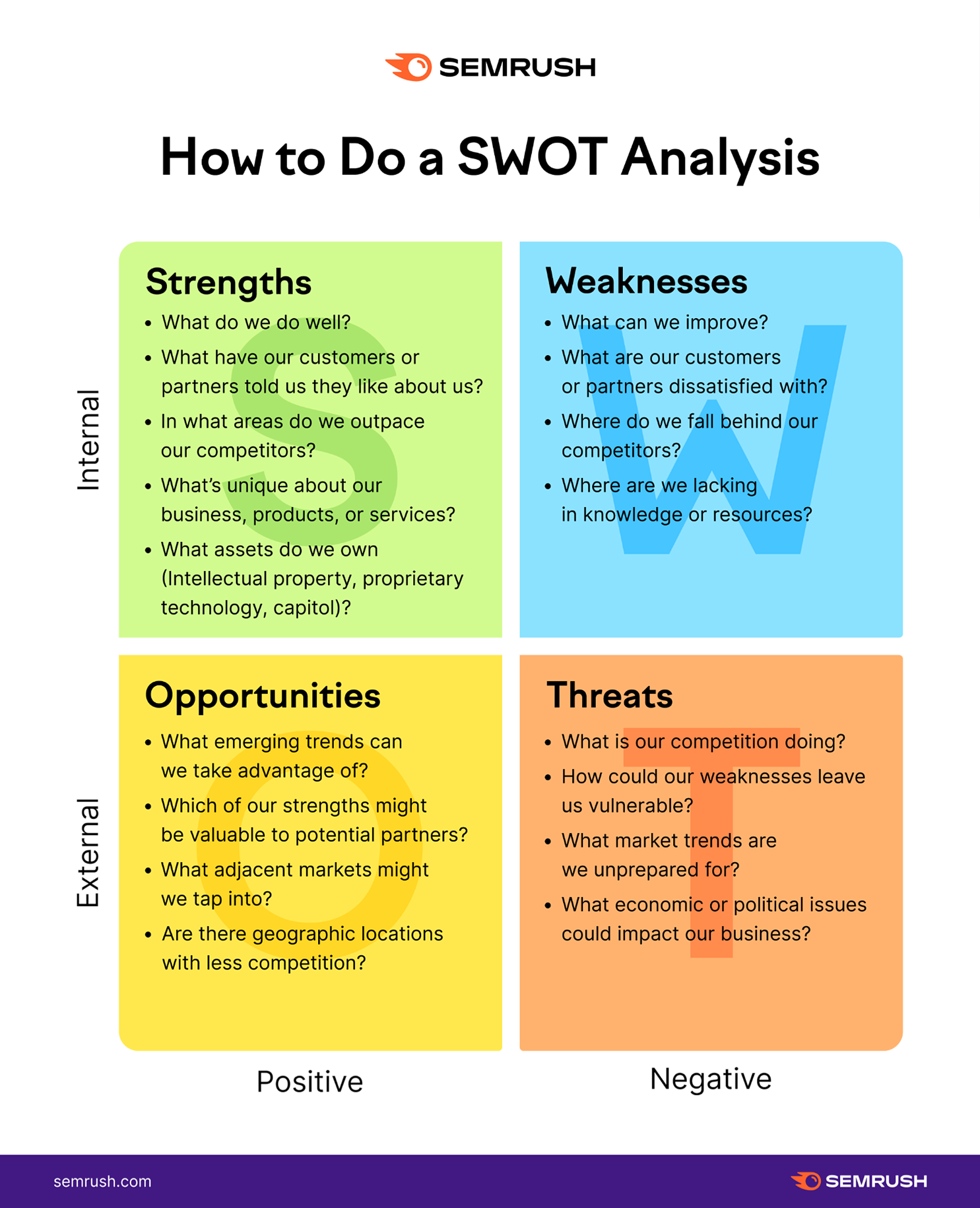
The SWOT analysis is a strategic planning tool that helps organizations evaluate their internal strengths and weaknesses, as well as external opportunities and threats. SWOT stands for Strengths, Weaknesses, Opportunities, and Threats. It provides a structured framework for assessing the current state of an organization and understanding its position in the market or industry.
Here’s a breakdown of each component of the SWOT analysis:
Strengths
These are the internal factors that give an organization a competitive advantage or differentiate it from others. Strengths can include unique expertise, strong brand reputation, efficient processes, talented workforce, intellectual property, or any other internal capabilities that contribute positively to the organization’s objectives.
Weaknesses
These are internal factors that put an organization at a disadvantage or hinder its performance. Weaknesses may include limited resources, outdated technology, lack of skilled personnel, poor infrastructure, inefficient processes, or any other internal limitations that need to be addressed to improve the organization’s effectiveness.
Opportunities
These are external factors or circumstances that could be advantageous to the organization if properly capitalized upon. Opportunities can arise from emerging markets, new technologies, changing customer needs, strategic partnerships, favorable industry trends, or any other external factors that could potentially benefit the organization.
Threats
These are external factors that could negatively impact the organization’s performance or pose risks to its success. Threats may include intense competition, economic downturns, changing regulations, disruptive technologies, shifting consumer preferences, supplier issues, or any other external challenges that the organization needs to be aware of and mitigate.
By conducting a SWOT analysis, organizations gain valuable insights into their current situation, allowing them to develop strategies that leverage strengths, address weaknesses, seize opportunities, and mitigate threats. The analysis helps organizations identify areas where they can build on their advantages, overcome limitations, adapt to market dynamics, and make informed decisions to achieve their goals and stay competitive.
It’s important to note that the SWOT analysis is just the starting point of the strategic planning process. It provides a foundation for further analysis, goal setting, and the formulation of action plans. The outcomes of a SWOT analysis can guide an organization’s overall strategy, marketing initiatives, resource allocation, and risk management efforts.
Internal Qualities (Strengths & Weaknesses)
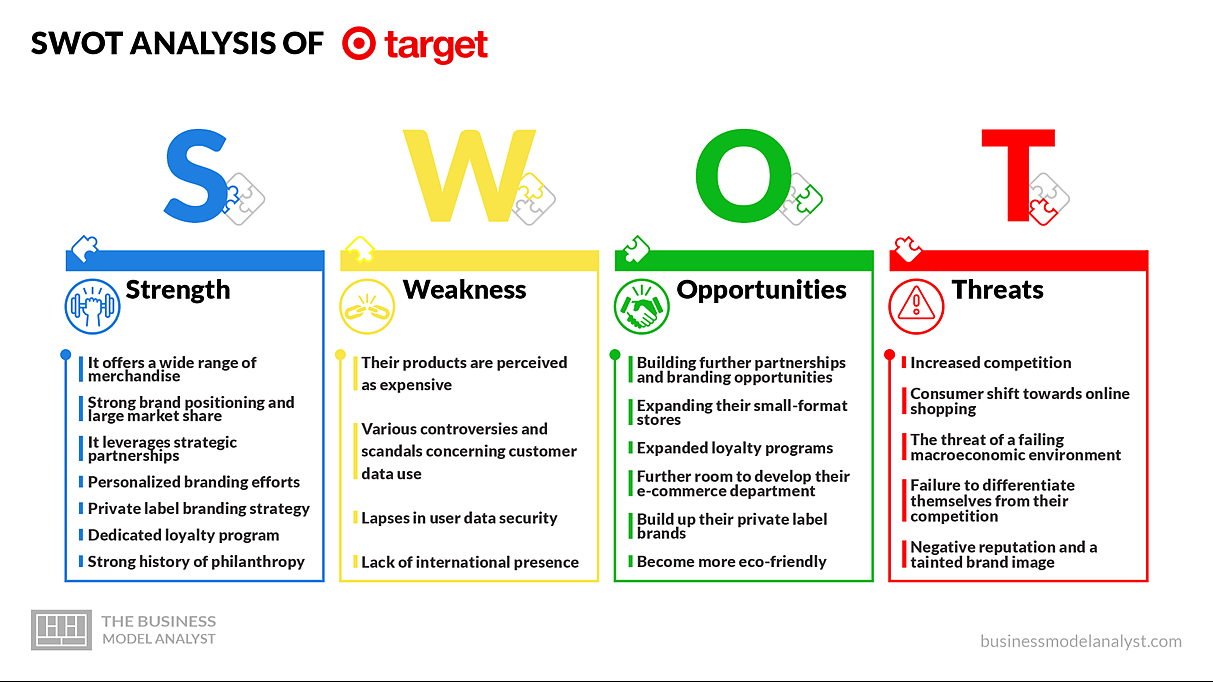
Internal qualities, encompassing strengths and weaknesses, play a crucial role in shaping the competitive landscape of the technology services industry and professional services industry. Here’s a closer look at how these internal factors relate to these industries:
Strengths (Internal Qualities):
1. Technological Expertise: Technology services companies excel in their technical knowledge and expertise. They possess skilled professionals who understand the intricacies of various technologies, platforms, programming languages, and frameworks. This expertise allows them to develop innovative solutions, provide efficient technical support, and deliver high-quality services to clients.
2. Specialized Knowledge: Many technology services firms have specialized knowledge in specific domains, industries, or niche areas. This expertise enables them to offer tailored solutions and better understand the unique challenges and requirements of their clients. It gives them a competitive advantage by positioning them as subject matter experts in their respective fields.
3. Infrastructure and Resources: Established technology services companies often have robust infrastructure, including hardware, software, and networks, to support their operations. They may possess advanced development tools, testing environments, and collaboration platforms, enabling them to deliver services efficiently and effectively.
4. Scalability and Flexibility: The technology services industry has the advantage of scalability, as they can easily adjust their resources and capabilities to meet client demands. Whether it’s increasing the workforce, expanding infrastructure, or adapting to new technologies, technology services companies can often scale their operations quickly to address market needs.
Weaknesses (Internal Qualities):
1. Skill Gaps: The rapidly evolving nature of technology presents a challenge in keeping up with the latest trends and skills. Technology services companies may face skill gaps in emerging technologies or specialized areas, making it essential to invest in continuous training and development of their workforce.
2. Resource Constraints: Limited resources, including financial constraints or inadequate staffing, can be a weakness for technology services firms. It may restrict their ability to pursue certain projects, invest in research and development, or compete effectively in the market.
3. Resistance to Change: The professional services industry, including technology services, may face resistance to change from employees or stakeholders who are comfortable with traditional approaches. Adapting to new technologies, methodologies, or business models requires overcoming resistance and fostering a culture of innovation.
4. Project Management Challenges: Managing complex technology projects involves coordination among multiple stakeholders, timely delivery, and risk management. Weaknesses in project management capabilities can lead to cost overruns, delays, and unsatisfied clients.
Understanding and leveraging internal qualities, both strengths and weaknesses, is vital for technology services and professional services firms. By capitalizing on their strengths, such as technological expertise and specialized knowledge, these companies can differentiate themselves from competitors, attract clients, and deliver superior services. They can focus on areas where they have a competitive advantage and build their reputation in specific domains.
Simultaneously, recognizing and addressing weaknesses is equally crucial. Technology services firms need to identify skill gaps, invest in training and development programs, and build a competent workforce. They must allocate resources efficiently, improve project management capabilities, and embrace a culture of continuous improvement and adaptability.
By conducting an internal analysis of strengths and weaknesses, technology services and professional services companies can identify areas for improvement, make informed decisions, and develop strategies to stay ahead in an increasingly competitive market.
External Objectives (Opportunities and Threats)
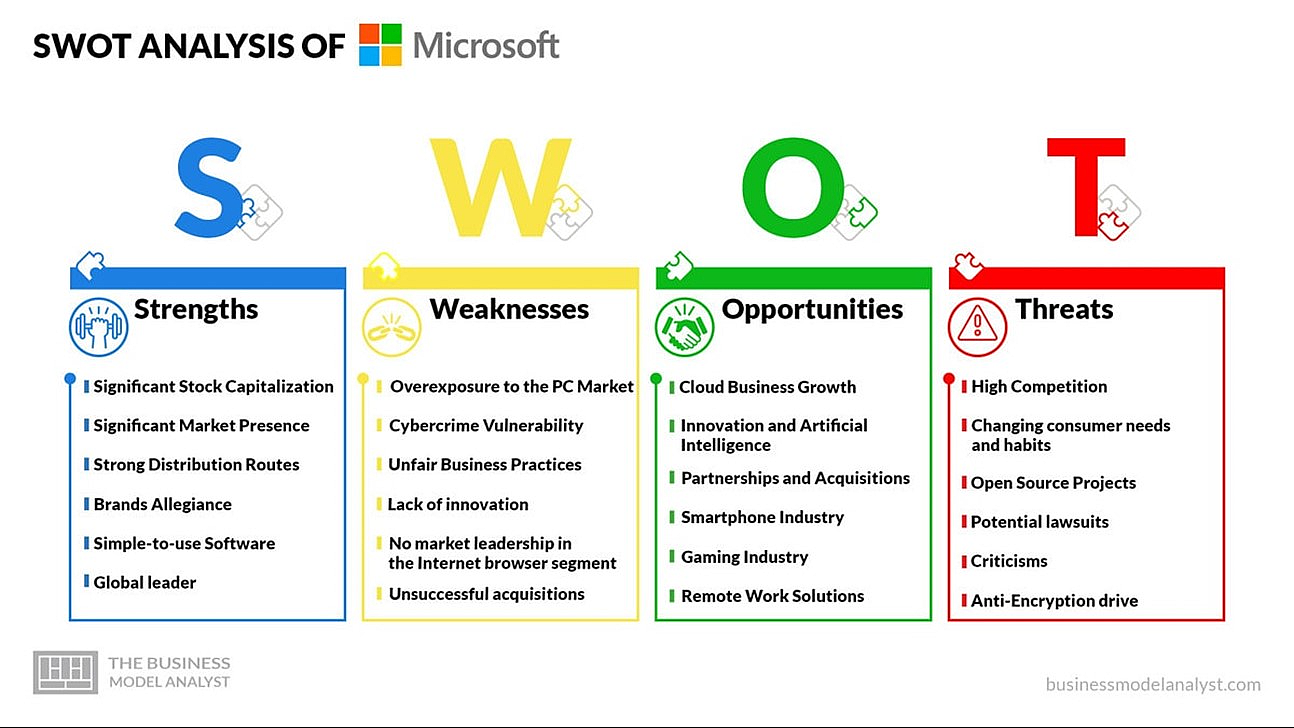
External objectives, comprising opportunities and threats, have a significant impact on the technology services industry and professional services industry. Understanding these external factors is crucial for organizations operating in these industries to adapt, seize opportunities, and mitigate potential risks. Here’s a closer look at how external objectives relate to these industries:
Opportunities (External Objectives):
1. Digital Transformation: The rapid pace of technological advancements presents a multitude of opportunities for technology services and professional services firms. The increasing demand for digital transformation initiatives provides avenues for offering services such as cloud computing, cybersecurity, data analytics, artificial intelligence (AI), Internet of Things (IoT), and other emerging technologies. Organizations can capitalize on these opportunities by providing consulting, implementation, and support services to clients aiming to digitally transform their operations.
2. Increased IT Spending: With businesses recognizing the importance of technology in driving their growth and competitiveness, there has been a consistent increase in IT spending across various industries. This trend opens up opportunities for technology services companies to offer their expertise and services to clients seeking to modernize their IT infrastructure, enhance cybersecurity measures, optimize business processes, or implement new software solutions.
3. Globalization and Outsourcing: The globalization of businesses and the rise of outsourcing have created opportunities for technology services and professional services firms. Organizations, particularly in developed countries, often outsource certain IT functions, software development, or customer support to reduce costs and gain access to specialized expertise. This trend allows service providers to offer their services to clients across different geographies, expand their customer base, and establish strategic partnerships with international companies.
4. Industry-Specific Solutions: Many industries, such as healthcare, finance, manufacturing, and retail, require technology services tailored to their specific needs and regulatory requirements. This presents an opportunity for service providers to develop industry-specific solutions, software applications, or consulting services that address the unique challenges faced by these sectors. By specializing in particular industries, firms can establish themselves as trusted partners with deep domain knowledge and experience.
Threats (External Objectives):
1. Intense Competition: The technology services and professional services industries are highly competitive, with numerous players vying for market share. Competitors can range from large multinational corporations to small startups, each offering a wide array of services. Intense competition can lead to price pressures, the need for differentiation, and the constant challenge of acquiring and retaining clients.
2. Rapid Technological Changes: Technology is evolving at an unprecedented rate, and organizations in the technology services industry must stay ahead of these changes. Failure to keep up with emerging technologies or adapt to market demands can quickly render a service provider obsolete or less relevant. Companies must continuously invest in research and development, foster a culture of innovation, and stay informed about the latest trends to mitigate the risk of being surpassed by competitors.
3. Security and Privacy Concerns: As technology becomes more integral to business operations, security and privacy threats loom large. The increasing frequency and sophistication of cyberattacks pose significant risks to both technology service providers and their clients. Service providers must prioritize robust cybersecurity measures, compliance with data protection regulations, and maintaining the trust of their clients to mitigate potential threats.
4. Regulatory Compliance: The technology services and professional services industries are subject to various regulatory frameworks that govern areas such as data protection, intellectual property rights, industry-specific regulations, and international trade. Changes in regulations or non-compliance can have legal and financial implications for organizations. Staying up to date with regulatory requirements and ensuring compliance is essential to avoid penalties and reputational damage.
By identifying and capitalizing on opportunities while effectively managing threats, technology services and professional services firms can position themselves for growth and success. This requires a keen understanding of the external environment, continuous monitoring of market trends, proactive adaptation to technological shifts, strategic partnerships, and a customer-centric approach to deliver services that meet evolving client needs.
Choose your battles wisely

Choosing your battles wisely is crucial when conducting a SWOT analysis and formulating strategies based on its findings. Here’s why it’s important:
Resource Allocation
Every organization has limited resources, including time, money, and personnel. Choosing your battles wisely means focusing your resources on the most critical areas that align with your strategic objectives. By prioritizing the battles that have the highest potential for impact, you can optimize the allocation of your resources and maximize your chances of success.
Risk Management
Engaging in every battle or attempting to address every weakness identified in a SWOT analysis can spread your resources too thin. It increases the risk of failure and can lead to ineffective outcomes. By carefully selecting your battles, you can mitigate risks and concentrate your efforts on areas where you have a higher probability of achieving positive results.
Competitive Advantage
Not all battles are worth fighting. It’s essential to identify the battles that align with your core competencies, strengths, and unique value proposition. By focusing on battles where you have a competitive advantage, you increase your chances of success and differentiate yourself from competitors. This strategic approach can lead to sustainable competitive advantages and long-term success.
Opportunity Cost
Choosing one battle often means forgoing or delaying another. It’s essential to consider the opportunity cost of engaging in a particular battle. By evaluating the potential benefits and drawbacks of each battle, you can make informed decisions about which ones to pursue and which ones to prioritize. This ensures that you make the most of your resources and avoid missed opportunities.
Impact and Relevance
Not all battles will have the same impact on your organization’s goals and objectives. It’s important to assess the relevance and potential impact of each battle in relation to your overall strategic direction. By focusing on battles that have the most significant potential for positive change, you can drive meaningful progress toward your desired outcomes.
Flexibility and Adaptability
Choosing your battles wisely allows you to be flexible and adaptable in the face of changing circumstances. As market conditions, customer preferences, and industry dynamics evolve, you can reassess your battles and adjust your strategies accordingly. This adaptability ensures that you remain agile and responsive to emerging opportunities and threats.
In summary, choosing your battles wisely in the context of a SWOT analysis is essential for effective resource allocation, risk management, gaining a competitive advantage, optimizing opportunity costs, focusing on high-impact areas, and maintaining flexibility. It helps you make informed decisions about where to invest your resources and efforts, increasing your chances of success and enabling you to navigate the complex business landscape strategically.

Case Study: How Microsoft chose it’s battles wisely
An example of a company choosing its battles wisely is the strategic shift made by Microsoft in the mobile phone market.
In the early 2000s, Microsoft recognized the growing importance of the mobile phone industry and aimed to establish a significant presence in that market. They developed a mobile operating system called Windows Mobile, competing against established players like Apple’s iOS and Google’s Android.
However, despite their efforts, Windows Mobile struggled to gain traction and faced significant challenges in capturing a substantial market share. Microsoft conducted a thorough evaluation of the situation and conducted a SWOT analysis to assess their position.
Based on their analysis, Microsoft realized that their mobile operating system was facing fierce competition from iOS and Android, which had already established strong footholds in the market. Additionally, they identified weaknesses in their approach, including limited app availability, fragmented user experience, and slower innovation compared to competitors.
Taking these factors into consideration, Microsoft made a strategic decision to shift their focus and choose their battles wisely. They decided to discontinue Windows Mobile and instead focus on developing software and services for iOS and Android devices.
Microsoft leveraged their strengths in productivity software, cloud services, and enterprise solutions to create a suite of apps and services that seamlessly integrated with iOS and Android platforms. They developed apps such as Microsoft Office, OneDrive, Outlook, and Teams, providing users with a consistent and productive experience across different devices.
By choosing to embrace the dominant mobile platforms and redirect their resources towards software development rather than competing directly in the operating system market, Microsoft was able to deliver value to a wider user base. They recognized that their strengths lay in software and services rather than hardware, and strategically aligned their efforts accordingly.
This strategic shift allowed Microsoft to maintain relevance and strengthen their position in the mobile market. By choosing their battles wisely and focusing on where they could deliver the most value, Microsoft successfully adapted to the changing dynamics of the industry and established a strong presence in the mobile ecosystem.

Exercise 1.9: SWOT Analysis
1. Conduct a SWOT analysis of TechSolutions:
2. Based on the SWOT analysis, develop a response plan:
3. Prepare a presentation to outline your SWOT analysis findings and response plan:
4. Engage in group discussion and collaboration:

Course Manual 10: Outcomes
Meeting customer needs yields significant outcomes for businesses. First and foremost, it leads to enhanced customer satisfaction and loyalty. When businesses successfully fulfill customer requirements, it results in higher levels of satisfaction. Satisfied customers are more likely to become repeat customers, generating ongoing revenue. Additionally, satisfied customers often act as brand advocates, spreading positive word-of-mouth and referring others to the business, further expanding its customer base.
The outcomes of meeting customer needs also translate into increased sales and revenue. When customers find that a business’s products or services align with their needs, they are more inclined to make a purchase. Satisfied customers tend to spend more, make repeat purchases, and may even upgrade to higher-priced offerings. Consequently, consistently meeting customer needs directly drives sales growth and positively impacts the bottom line.
Another crucial outcome is the competitive advantage gained by businesses that prioritize meeting customer needs. When customers perceive that a particular business understands and caters to their requirements better than competitors, they are more likely to choose its offerings. This competitive advantage enables businesses to attract new customers, retain existing ones, and outperform competitors in the market, ultimately solidifying their position in the industry.
Meeting customer needs also contributes to building a strong brand reputation and fostering trust. When businesses consistently meet customer needs and deliver positive experiences, it enhances customers’ perception of the brand. Positive word-of-mouth, online reviews, and testimonials from satisfied customers all play a part in establishing trust and credibility. This, in turn, attracts new customers and enhances the brand’s reputation, further strengthening its market position.
Furthermore, meeting customer needs allows for market differentiation. By actively understanding and addressing customer requirements, businesses can offer unique and tailored solutions that set them apart from competitors. This differentiation creates a distinct brand identity, making it easier for customers to choose a particular business over others that may not fully understand or address their needs.
Lastly, meeting customer needs opens up opportunities for innovation and business growth. By closely monitoring emerging trends and anticipating changing customer preferences, businesses can develop new products, services, or features that cater to those needs. Proactive innovation and staying ahead of customer demands not only drive business growth but also ensure its relevance in a dynamic market.
In conclusion, the outcomes of meeting customer needs encompass enhanced customer satisfaction and loyalty, increased sales and revenue, a competitive advantage, a positive brand reputation, market differentiation, and the ability to identify new growth opportunities. Prioritizing customer needs and aligning business strategies accordingly establishes a strong foundation for long-term success.
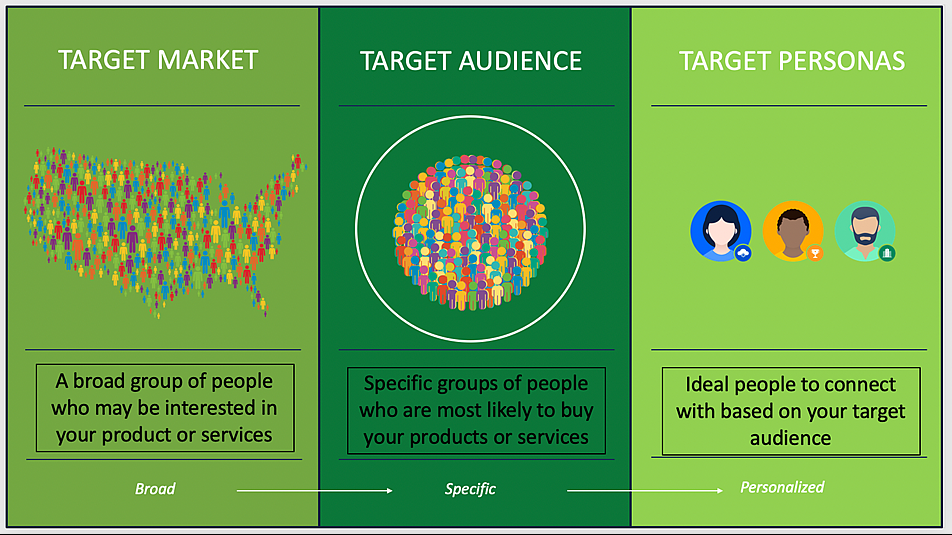
Source: Search Engine Journal
The Critical Importance of Knowing Your Target
Customer Satisfaction
Knowing your target audience allows you to identify their specific needs, preferences, and pain points. This knowledge helps you tailor your products, services, and marketing strategies to meet their expectations, ultimately leading to higher customer satisfaction. By understanding their needs, you can provide personalized solutions, improve customer experience, and build long-term relationships.
Product Development
Understanding your target audience helps you develop products or services that align with their requirements. By identifying their pain points, you can design offerings that address those issues directly. This customer-centric approach increases the likelihood of creating products that resonate with your target audience, leading to higher adoption rates and customer loyalty.
Effective Communication
Knowing your target audience enables you to communicate your value proposition effectively. You can craft marketing messages, advertisements, and content that speak directly to their needs, aspirations, and motivations. This targeted communication resonates with customers, grabs their attention, and increases the chances of conversion. Effective communication also helps build brand trust and credibility.
Competitive Advantage
Understanding your target audience gives you a competitive edge. By studying their preferences, behaviors, and buying patterns, you can identify gaps in the market and differentiate your offerings from competitors. Tailoring your products and services to meet customer needs more precisely can position your business as the go-to solution provider in your niche, attracting more customers and outperforming your competitors.
Resource Optimization
Knowing your target audience helps optimize your business resources. By understanding their specific needs, you can allocate your time, budget, and manpower more efficiently. Instead of adopting a one-size-fits-all approach, you can focus your efforts on areas that matter most to your target audience. This targeted resource allocation helps maximize the return on investment and improves overall business performance.
Innovation and Growth
A deep understanding of your target audience allows you to identify emerging trends, anticipate market shifts, and stay ahead of the curve. By proactively meeting evolving customer needs, you can drive innovation within your organization, develop new products or services, and expand your market reach. This customer-centric approach fosters continuous growth and positions your business as a market leader.
In conclusion, knowing your target audience and understanding customer needs is crucial for business success. It enables you to deliver products and services that align with their expectations, communicate effectively, gain a competitive advantage, optimize resources, and foster innovation and growth. By making customer-centricity a priority, you can build strong, loyal customer relationships and drive long-term success for your business.

Case Study: How Segway failed to identify their target
One example of a company that failed to find their target customers is the Segway Personal Transporter. The Segway was introduced in 2001 with much hype and anticipation. It was a two-wheeled, self-balancing transportation device that promised to revolutionize personal mobility.
However, despite its innovative technology and initial media attention, the Segway failed to gain widespread consumer adoption and fell short of its sales projections. One of the main reasons for this failure was the company’s struggle to identify and effectively target their customer base.
The Segway was positioned as a solution for urban commuting, offering an alternative to walking or driving short distances. However, the company failed to accurately assess the market demand and understand the specific needs and preferences of their potential customers. The Segway’s high price point, limited battery life, and lack of versatility in different terrains and weather conditions posed significant challenges in appealing to a broad consumer base.
Additionally, the company faced regulatory hurdles and restrictions in many cities, limiting its usage and potential market reach. These factors further hindered the company’s ability to find and engage with their target customers effectively.
Moreover, the Segway’s marketing and messaging focused heavily on its technological capabilities rather than emphasizing the benefits and value it could offer to consumers. This limited the Segway’s appeal to a niche audience of early adopters and tech enthusiasts, rather than reaching a wider market of everyday commuters.
Ultimately, the failure of the Segway to find its target customers resulted in poor sales and limited market penetration. The company’s inability to accurately identify and understand the needs, preferences, and expectations of their target customers led to a mismatch between the product offering and the market demand, ultimately contributing to its lackluster performance.
This example highlights the importance of thorough market research, customer understanding, and effective targeting strategies to ensure a product or service resonates with the intended customer base. Businesses must invest time and resources in identifying their target customers, understanding their needs, and aligning their offerings accordingly to increase the chances of success in the market.
The Three Essential Aspects of an Outcome – Quality, Quantity & Deadline
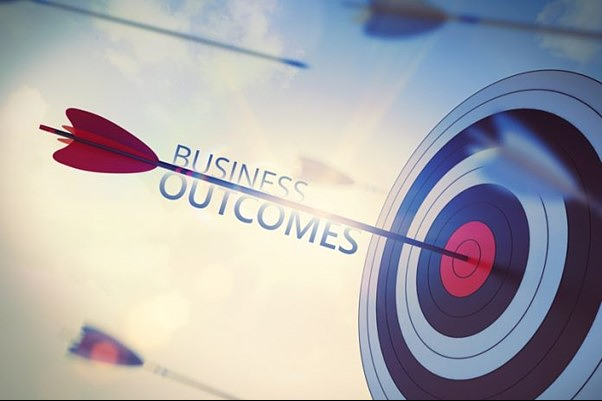
Source: ServiceMuse
When considering outcomes, three essential aspects to consider are quality, quantity, and deadline. These aspects play a crucial role in defining and measuring the success of a particular outcome. Let’s explore each aspect in more detail:
1. Quality: Quality refers to the degree of excellence or superiority of an outcome. It encompasses meeting or exceeding the expectations, requirements, and standards set for a specific deliverable. A high-quality outcome is one that fulfills its intended purpose effectively, is free from defects or errors, and meets the desired level of performance, durability, and functionality. Quality is often measured by factors such as customer satisfaction, adherence to specifications, and overall craftsmanship. Maintaining high quality ensures that the outcome delivers value and meets the needs of stakeholders.
2. Quantity: Quantity relates to the amount, volume, or scale of an outcome. It represents the extent or scope to which a particular deliverable or output is produced. The quantity can be measured in terms of numbers, units, size, volume, or any other relevant metric. Depending on the context, the desired quantity may vary. For instance, it could refer to the number of units manufactured, the volume of sales generated, the amount of content produced, or the level of engagement achieved. The quantity aspect ensures that the outcome meets the required volume or scale necessary to achieve the desired objectives.
3. Deadline: The deadline aspect refers to the specific time frame or timeframe within which the outcome needs to be delivered or achieved. It represents the allotted time or the agreed-upon deadline for completing the task, project, or objective. Meeting deadlines is crucial as it ensures timely delivery, coordination with other tasks or projects, and alignment with overall business goals and objectives. Adhering to deadlines demonstrates reliability, professionalism, and effective project management. It also helps manage expectations and maintain a smooth workflow within the organization or among stakeholders.
These three aspects of an outcome – quality, quantity, and deadline – are interconnected and should be carefully balanced to achieve success. Striking the right balance ensures that the outcome not only meets the required level of quality but also delivers the desired quantity within the specified timeframe. Focusing on these aspects helps in effectively managing projects, meeting stakeholder expectations, and ultimately achieving positive outcomes.
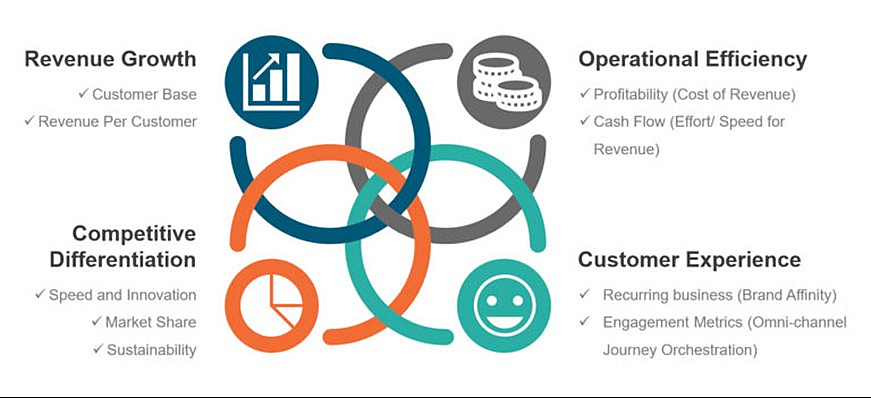
Source: Altimetrik
Identifying the Key Stakeholders in outcome decision making
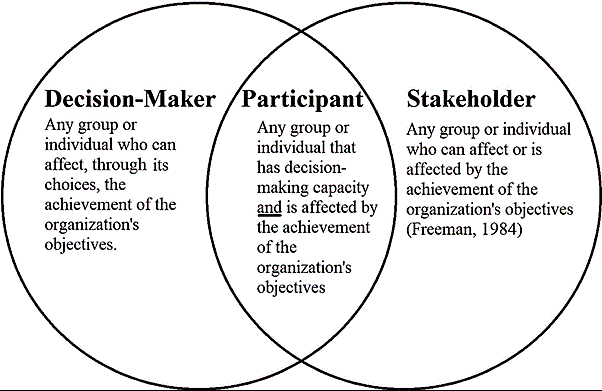
Source: www.researchgate.net
Identifying key stakeholders in outcome decision making is crucial for several reasons:
• Informed Decision Making: Identifying key stakeholders ensures that decision-making processes are inclusive and consider a diverse range of perspectives. Stakeholders possess unique insights, knowledge, and expertise related to the outcome in question. By involving them, decision-makers gain access to valuable information, alternative viewpoints, and a more comprehensive understanding of the potential impact of decisions. This leads to better-informed and more effective decision-making processes.
• Stakeholder Alignment: Key stakeholders often have vested interests, expectations, and concerns related to the outcome. Identifying and involving them early on allows for effective communication, collaboration, and alignment of goals and objectives. Engaging stakeholders in decision making helps to build consensus, mitigate conflicts, and ensure that decisions are well-aligned with the needs and priorities of those who will be impacted by the outcome. This alignment enhances stakeholder buy-in and support, increasing the likelihood of successful outcomes.
• Enhanced Acceptance and Ownership: Involving key stakeholders in decision making fosters a sense of ownership and accountability. When stakeholders have a voice in the decision-making process, they are more likely to feel valued and invested in the outcome. This increases their commitment and willingness to actively participate in implementing and supporting the chosen course of action. By engaging stakeholders, decision-makers can secure greater acceptance of decisions and facilitate smoother implementation.
• Risk Mitigation: Key stakeholders often possess valuable insights into potential risks and challenges associated with the outcome. Their involvement can help identify and mitigate risks early on in the decision-making process. By considering different perspectives, concerns, and potential obstacles, decision-makers can develop proactive strategies to address risks and minimize their impact. This risk mitigation approach enhances the likelihood of successful outcomes and reduces the chances of unforeseen complications.
• Building Relationships and Trust: Engaging key stakeholders in decision making builds strong relationships and trust. By actively involving stakeholders, decision-makers demonstrate respect for their expertise, opinions, and interests. This collaborative approach fosters positive working relationships and establishes a foundation of trust among stakeholders. Building relationships and trust is essential for ongoing engagement, cooperation, and future decision-making processes.
• Social Responsibility and Ethical Considerations: Identifying key stakeholders helps decision-makers consider the broader social, environmental, and ethical implications of their choices. Stakeholders may represent communities, interest groups, or organizations affected by the outcome. Involving them ensures that decision-making processes take into account social responsibility, ethical considerations, and the potential impact on diverse stakeholders. This approach promotes transparency, fairness, and accountability in decision making.
In conclusion, identifying key stakeholders in outcome decision making is vital for informed decision making, stakeholder alignment, enhanced acceptance and ownership, risk mitigation, relationship building, and considering social responsibility. By involving stakeholders, decision-makers can tap into valuable insights, build consensus, and make decisions that are well-aligned with the needs and priorities of those affected by the outcome.
How Often Do Customers Know Their Own Objectives?
The extent to which customers know their own objectives can vary. While some customers have a clear understanding of their objectives and requirements, others may have a more general idea or may need assistance in defining their objectives.
In certain situations, customers may have well-defined objectives because they have prior experience with similar products or services. For example, a business purchasing software to streamline its operations may have a clear objective of improving efficiency and reducing costs. Similarly, an individual looking for a laptop may have specific objectives such as performance, portability, or a particular budget range based on their needs.
However, there are instances where customers may not have a complete understanding of their objectives or may need guidance to articulate them. This is particularly true when dealing with complex or innovative solutions that customers may not be familiar with. In such cases, it becomes essential for businesses to engage in customer discovery and actively collaborate with customers to help them identify and define their objectives. This can be achieved through techniques such as interviews, surveys, focus groups, or direct interactions to gain insights into their needs and goals.
It’s worth noting that even when customers have a general idea of their objectives, they may not always be aware of all the possibilities or the full range of solutions available to them. Businesses that take the time to understand their customers’ objectives and offer expert advice can provide valuable insights, help refine objectives, and suggest alternative solutions that customers may not have considered.
Ultimately, the level of customer awareness and clarity of objectives can vary. It is the responsibility of businesses to actively engage with customers, facilitate dialogue, and provide guidance to ensure that customer objectives are identified and aligned with the solutions and offerings they provide.

Exercise 1.10: Defining Customer Outcomes
1. Group formation: Divide participants into small groups of 3-5 people.
2. Example customer profile: Provide each group with an example customer profile for a hypothetical technology services customer. Here’s an example customer profile:
• Industry: Healthcare
• Company Size: Large hospital network
• Type of Technology Services: Electronic medical record (EMR) system implementation, IT infrastructure management, cybersecurity solutions
• The hospital network is transitioning from paper-based records to an EMR system and needs a smooth implementation process to ensure minimal disruption to patient care.
• The IT infrastructure of the hospital network is outdated, resulting in system slowdowns and inefficiencies that impact healthcare professionals’ productivity.
• Data security is of utmost importance to protect patient privacy and comply with regulatory requirements.
• The hospital network aims to improve interdepartmental communication and collaboration through efficient IT systems and processes.
3. Define customer outcomes: In their groups, participants should discuss and define the desired outcomes that the example customer wants to achieve through the technology services. Participants should consider the customer’s needs, challenges, and goals to come up with specific, measurable, achievable, relevant, and time-bound (SMART) outcomes.
4. Presentation and discussion: After defining the outcomes, each group should present their findings to the larger group. Encourage group discussions to compare and contrast the outcomes identified by different groups, highlighting similarities and differences.
5. Reflection and debrief: Conclude the exercise with a group discussion on the importance of defining customer outcomes in the technology services industry. Reflect on the exercise and share key learnings or insights gained from the process.

Course Manual 11: Objectives
Breaking down outcomes into objectives is an essential process in the technology services and professional services industry to effectively address customer needs. By doing so, organizations can align their strategies, resources, and efforts to achieve desired outcomes in a systematic and measurable manner. Here’s how breaking down outcomes into objectives works:
1. Identify the Desired Outcome: Start by understanding the customer’s overarching goal or desired outcome. This could be improving operational efficiency, enhancing customer satisfaction, increasing revenue, or any other specific objective.
2. Define Measurable Objectives: Once the desired outcome is clear, break it down into specific, measurable objectives that contribute to achieving that outcome. Objectives should be specific, measurable, attainable, relevant, and time-bound (SMART). For example, if the desired outcome is improving operational efficiency, objectives could include reducing system downtime by 20% or decreasing response time for customer support inquiries by 30%.
3. Determine Key Results: For each objective, identify key results that will indicate progress or success. Key results are specific metrics or milestones that demonstrate the achievement of an objective. They help track progress and provide a clear understanding of whether the objectives are being met. For instance, key results for the objective of reducing system downtime could be achieving an average uptime of 99.9% or reducing the mean time to repair (MTTR) by 50%.
4. Break Down Further if Needed: If the objectives are complex or require multiple steps, they can be further broken down into sub-objectives or tasks. This decomposition allows for a more granular approach to implementation and facilitates better tracking and resource allocation. For example, under the objective of reducing system downtime, sub-objectives could include improving hardware redundancy, implementing proactive monitoring tools, and enhancing the incident response process.
5. Assign Responsibilities and Resources: Determine who will be responsible for each objective or sub-objective and allocate the necessary resources, such as personnel, budget, and technology, to support their achievement. Clearly define roles and accountabilities to ensure a coordinated effort.
6. Track Progress and Adjust: Regularly monitor and track progress toward the objectives and key results. Use data and feedback to assess whether the desired outcomes are being achieved and make adjustments as needed. If objectives are not being met, identify the root causes and take corrective actions to realign efforts and resources.
Breaking down outcomes into objectives provides clarity and structure to customer needs in the technology services and professional services industry. It enables organizations to define specific actions, allocate resources effectively, and measure progress toward the desired outcomes, ultimately enhancing customer satisfaction and success.
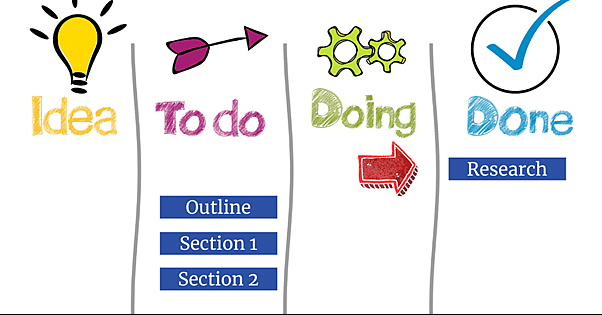
Source: The Disciplined Rebel
What could happen if you don’t break down your outcome into objectives?
If you fail to effectively break down your business outcomes into objectives, several potential consequences can arise:
Lack of Clarity and Focus
Without clearly defined objectives, there is a lack of clarity and focus on what needs to be achieved. This can lead to ambiguity in decision-making, conflicting priorities, and wasted efforts on activities that do not contribute to the desired outcomes.
Misalignment of Efforts
When objectives are not well-defined, different teams or individuals within the organization may have different interpretations of what needs to be accomplished. This can result in misalignment of efforts, duplication of work, and inefficiencies.
Unclear Accountability
Breaking down outcomes into objectives helps establish clear accountability for different tasks and responsibilities. Without this breakdown, it becomes difficult to assign ownership and track progress. This can lead to a lack of accountability, finger-pointing, and a decline in overall performance.
Inefficient Resource Allocation
Objectives serve as a guide for resource allocation. Without clear objectives, resources may be misallocated, resulting in wasted time, effort, and budget. Resources may be spread too thin or not allocated strategically to achieve the desired outcomes.
Inability to Measure Progress
Breaking down outcomes into objectives allows for measurable targets and key results. Without this breakdown, it becomes challenging to track progress and measure success. The lack of measurable objectives makes it difficult to assess the effectiveness of strategies and make informed decisions based on data.
Missed Opportunities for Improvement
Objectives provide a framework for continuous improvement. When outcomes are not effectively broken down into objectives, the organization may miss opportunities to identify and address areas of weakness, hindering growth and innovation.
Overall, the failure to effectively break down business outcomes into objectives can result in a lack of direction, misalignment, inefficiencies, and an inability to measure progress. It hampers the organization’s ability to achieve its desired outcomes and adapt to changing circumstances effectively.
SMART Objectives
SMART objectives are an effective framework for breaking down outcomes into specific, measurable, attainable, relevant, and time-bound objectives. SMART is an acronym that stands for:

Specific
Objectives should be clear, specific, and well-defined. They should answer the questions of who, what, where, when, why, and how. By being specific, objectives provide a clear direction and focus, leaving no room for ambiguity. For example, instead of setting a vague objective like “improve customer satisfaction,” a specific objective would be “increase customer satisfaction ratings by 15% in the next quarter.”
Measurable
Objectives should be quantifiable so that progress can be tracked and measured. Including specific metrics or targets helps determine whether the objective has been achieved. Measurable objectives allow for monitoring progress, identifying gaps, and making data-driven decisions. For instance, a measurable objective could be “reduce average response time to customer inquiries from 24 hours to 12 hours.”
Attainable
Objectives should be realistic and attainable within the given resources and constraints. They should stretch the organization but still be within reach. Setting unattainable objectives can lead to demotivation and decreased performance. It’s important to consider factors such as available resources, expertise, and feasibility when setting objectives.
Relevant
Objectives should be aligned with the desired outcome and directly contribute to its achievement. They should be relevant to the organization’s overall strategy and priorities. Setting objectives that are directly linked to the desired outcome ensures that efforts are focused and resources are utilized effectively. Each objective should have a clear rationale and connection to the desired outcome.
Time-Bound
Objectives should have a specific timeframe or deadline for completion. Setting time-bound objectives creates a sense of urgency, accountability, and helps prioritize efforts. Including a timeframe also allows for tracking progress and evaluating performance. For example, a time-bound objective could be “implement the new system upgrade within six months.”
By applying the SMART framework, organizations can ensure that objectives are well-defined, measurable, attainable, relevant, and time-bound. This approach provides clarity, focus, and a systematic way to break down outcomes into actionable objectives that can be effectively pursued and measured.
Example:
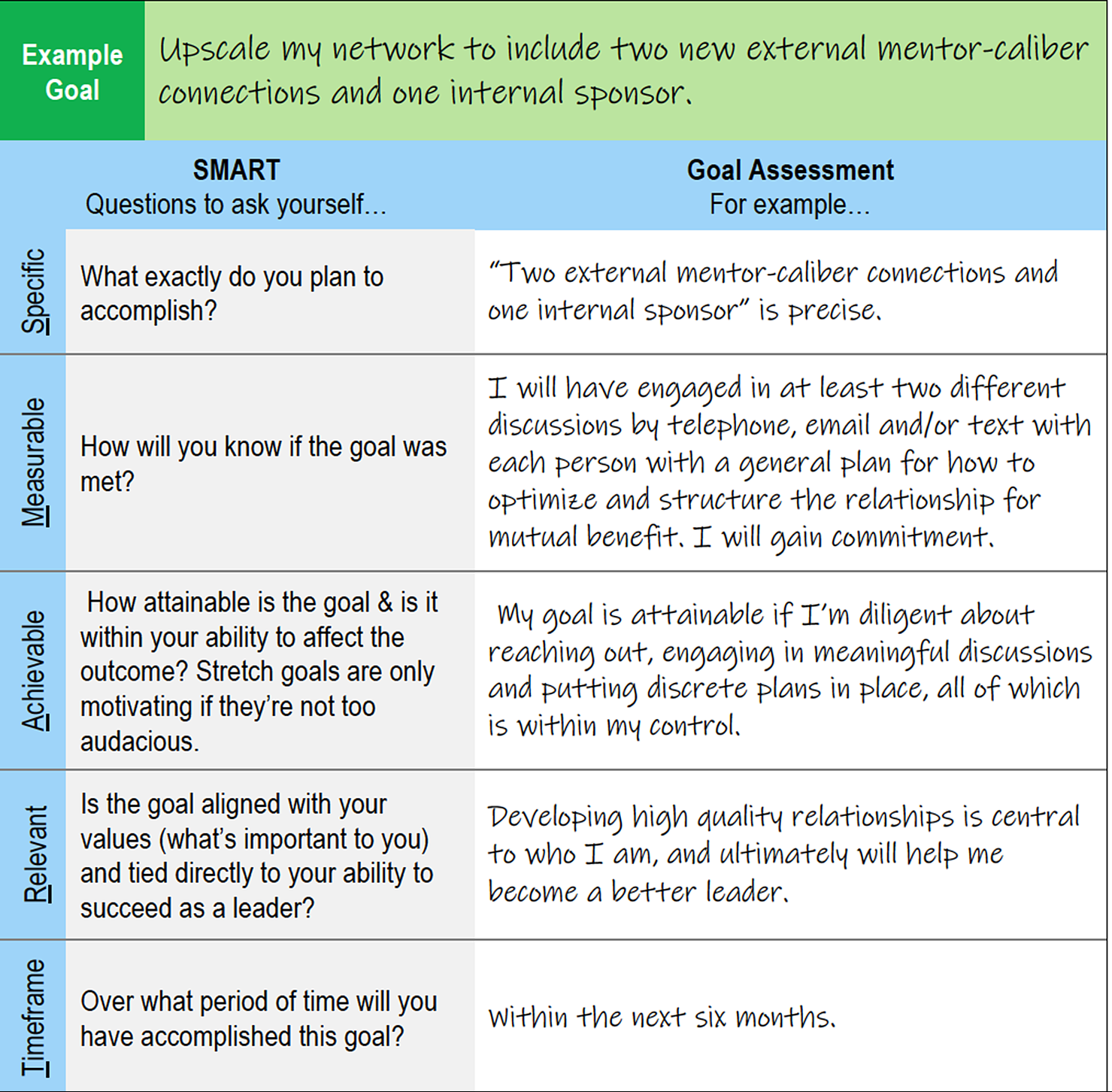
Source: Coach2Growth
Practical Example
Let’s consider a practical example of SMART objectives in the technology industry, specifically in the context of a software development company that aims to improve customer satisfaction:
1. Specific: Increase customer satisfaction ratings by improving the user interface and reducing software bugs in the next quarter.
2. Measurable: Achieve a minimum of 80% customer satisfaction rating in post-release surveys and decrease the average number of reported software bugs by 30% within three months.
3. Attainable: Allocate additional resources for quality assurance and user experience testing to address software bugs and improve the user interface. Ensure that the necessary expertise and tools are available to address these issues effectively.
4. Relevant: Enhancing the user interface and reducing software bugs directly contribute to improved customer satisfaction. These objectives align with the company’s focus on delivering high-quality software and meeting customer needs.
5. Time-Bound: Implement the user interface improvements and bug fixes within the next three months, providing ample time for testing, deployment, and gathering customer feedback.
By setting these SMART objectives, the software development company establishes clear and actionable targets for addressing customer needs and improving satisfaction. The objectives are specific to user interface improvements and bug reduction, measurable through customer satisfaction ratings and bug metrics, attainable with allocated resources, relevant to customer satisfaction, and time-bound with a three-month timeframe. This approach provides a framework for the company to focus its efforts, track progress, and evaluate the effectiveness of its initiatives in meeting customer needs in the technology industry.

How Google uses the SMART Framework
Google applies the SMART framework to various aspects of its operations and strategic planning. Here’s an example:
Objective: Improve the user experience of Google Search.
1. Specific: Enhance the relevance and speed of search results, improve search features and functionality, and optimize the user interface for easier navigation.
2. Measurable: Track user engagement metrics, such as click-through rates, time spent on search result pages, and user satisfaction ratings. Monitor changes in key performance indicators to measure the impact of improvements.
3. Attainable: Allocate resources for research and development, user experience testing, and engineering efforts to implement changes and enhancements. Leverage Google’s vast technological expertise and data analytics capabilities to drive improvements.
4. Relevant: Improving the user experience aligns with Google’s mission to organize the world’s information and make it universally accessible and useful. It supports their goal of providing users with the most relevant and valuable search results.
5. Time-Bound: Continuously work on improvements and updates to enhance the user experience on an ongoing basis, incorporating user feedback and evolving industry trends.
Google’s focus on SMART objectives allows them to systematically identify areas for improvement in their search engine and set specific goals to enhance the user experience. By leveraging measurable metrics, they can track progress and evaluate the effectiveness of their initiatives. Google’s commitment to continuous improvement and innovation in search reflects their use of SMART objectives as a guiding framework.
Please note that while it is well known that Google utilizes goal-setting and objective-driven approaches, specific details about their internal practices may not be publicly available.

Exercise 1.11: Define SMART Objectives
1. Specific: Enhance the e-commerce platform’s speed, responsiveness, and user interface to provide a seamless shopping experience. Implement strategies to optimize the checkout process and reduce cart abandonment.
2. Measurable: Increase the online sales conversion rate by 20% within the next six months. Track metrics such as conversion rate, average order value, and cart abandonment rate to measure progress.
3. Attainable: Allocate resources for website development, user experience optimization, and performance testing. Collaborate with the IT team to identify and implement necessary technical improvements to enhance the platform’s performance.
4. Relevant: Improving the e-commerce platform and increasing online sales conversion rate directly align with ABC Manufacturing Company’s goal of boosting their online revenue and providing a superior customer experience.
5. Time-Bound: Implement all planned improvements and measure the increased online sales conversion rate within a six-month timeframe.

Course Manual 12: Managing Risk
In business, risk management refers to the process of identifying, assessing, and prioritizing potential risks or uncertainties that could affect an organization’s objectives. It involves analyzing the likelihood and potential impact of these risks and developing strategies to mitigate, avoid, transfer, or accept them. The primary goal of risk management is to minimize the negative consequences of risks while maximizing opportunities for growth and success.
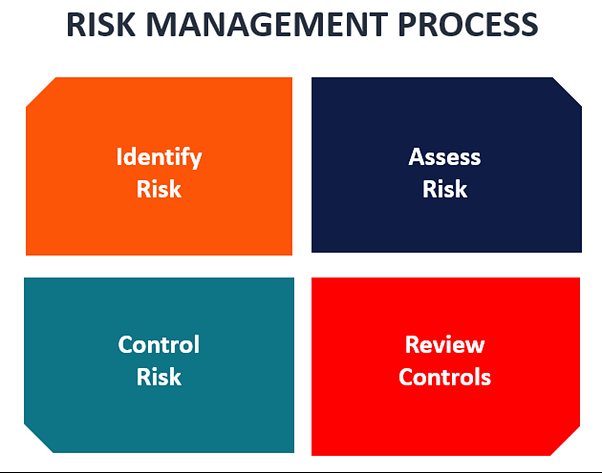
Source: Corporate Finance Institute
Risk management is important for several reasons:
1. Minimizing Losses: By identifying and assessing risks, organizations can take proactive measures to minimize potential losses. This can include implementing safeguards, developing contingency plans, or diversifying business operations.
2. Decision Making: Effective risk management provides decision-makers with a clearer understanding of potential risks associated with different courses of action. It enables informed decision-making and helps prioritize resources and investments.
3. Business Continuity: Risk management helps organizations prepare for and respond to potential disruptions, such as natural disasters, technological failures, or supply chain disruptions. By having contingency plans in place, businesses can minimize downtime and maintain operations during adverse events.
4. Compliance and Legal Requirements: Many industries have specific legal and regulatory requirements related to risk management. Organizations must comply with these obligations to avoid penalties, legal issues, or reputational damage.
5. Protecting Reputation: Managing risks effectively helps protect a company’s reputation. By being proactive and transparent in addressing risks, organizations demonstrate their commitment to stakeholder interests, including customers, employees, investors, and the general public.
6. Capital Allocation: Risk management enables organizations to allocate capital efficiently by identifying areas with higher risks and potential returns. It helps prioritize investments and allocate resources where they are most needed.
7. Stakeholder Confidence: By implementing robust risk management practices, organizations instill confidence in stakeholders. This includes customers, investors, lenders, and employees who are more likely to trust and support a company that demonstrates a strong risk management culture.
Overall, risk management is crucial for businesses to navigate uncertainty, protect assets, make informed decisions, and enhance their ability to achieve strategic objectives while effectively responding to potential threats and opportunities.
How does this relate to customer needs?
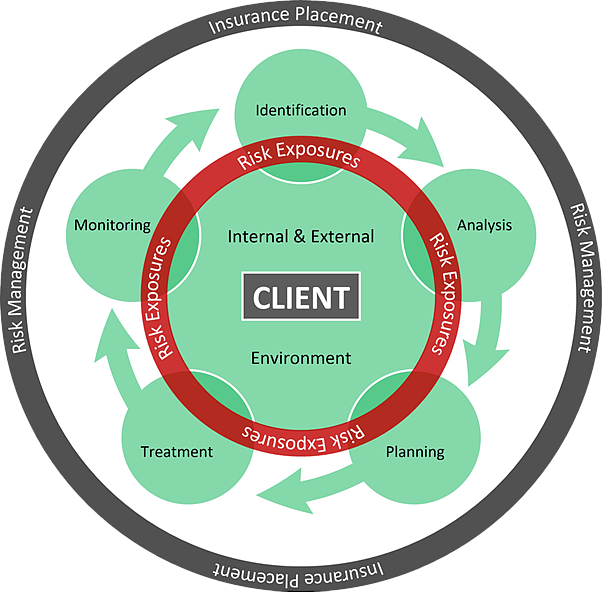
In the technology service and professional service industries, risk management in relation to customer needs focuses on identifying, assessing, and mitigating risks that may impact the delivery of services, customer satisfaction, and achieving desired outcomes. It involves understanding and managing the specific risks associated with technology services or professional consulting engagements.
Here are some key aspects of risk management in the technology service and professional service industries:
1. Project Delivery Risks: Risk management involves identifying and addressing risks associated with project delivery. This includes assessing factors such as project scope, timelines, resource allocation, and potential obstacles that could impact the successful completion of the project. By proactively managing these risks, service providers can minimize disruptions, meet customer expectations, and deliver projects on time and within budget.
2. Service Interruptions: Technology service providers must manage risks related to service interruptions. This includes assessing vulnerabilities in systems, networks, or infrastructure that could lead to downtime or service outages. By implementing robust backup, disaster recovery, and business continuity plans, providers can minimize the impact of service interruptions on customers and ensure timely resolution of issues.
3. Data Security and Privacy: Risk management includes addressing risks associated with data security and privacy in the technology service industry. This involves implementing appropriate security measures, encryption protocols, access controls, and data protection policies to safeguard customer data. By managing these risks effectively, service providers instill confidence in their customers and protect sensitive information from unauthorized access or breaches.
4. Compliance and Legal Risks: Service providers need to ensure compliance with industry-specific regulations and legal requirements. Risk management involves identifying and mitigating risks associated with non-compliance, such as penalties, legal disputes, or reputational damage. By adhering to relevant regulations and maintaining compliance, providers demonstrate their commitment to customer needs and build trust.
5. Service Level Agreement (SLA) Risks: Risk management includes assessing and managing risks associated with SLAs in the technology service industry. Providers must ensure that agreed-upon service levels are met, and potential risks that may impact SLA fulfillment are identified and addressed. By proactively managing these risks, providers can maintain customer satisfaction and meet performance expectations.
6. Professional Liability: In professional service industries such as consulting, risk management involves addressing potential risks associated with professional liability. This includes identifying and mitigating risks related to errors, omissions, or inadequate advice that could result in financial losses or legal disputes for clients. By managing these risks, service providers protect their clients’ interests and maintain their own professional reputation.
7. Vendor and Supplier Risks: Technology service providers may rely on external vendors or suppliers for certain components or services. Risk management involves assessing and managing risks associated with these third-party relationships, such as supplier reliability, quality control, or dependency risks. By mitigating vendor-related risks, providers can ensure seamless service delivery to customers.
Effective risk management in the technology service and professional service industries helps service providers anticipate and address potential risks that may impact customer needs, satisfaction, and successful service delivery. By proactively managing risks, these providers can enhance customer trust, deliver quality services, and differentiate themselves in highly competitive markets.
Identifying Potential Risks
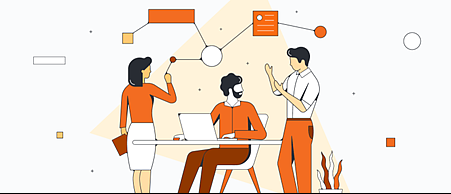
Source: Lucidchart
Identifying potential risks in the context of technology service and professional service industries involves a systematic process of recognizing and understanding the factors that may pose threats or uncertainties to the successful delivery of services and meeting customer needs. Here are some steps and considerations for identifying potential risks:
Project/Service Analysis
Begin by thoroughly analyzing the project or service being offered. Understand its scope, objectives, deliverables, and the underlying technologies or methodologies involved. This analysis will help identify specific areas where risks may arise.
Engage Stakeholders
Involve relevant stakeholders, including project managers, service delivery teams, subject matter experts, and customers, in the risk identification process. Their insights and perspectives can provide valuable input on potential risks specific to the project/service.
Brainstorming Sessions
Conduct brainstorming sessions or workshops to encourage participants to generate ideas and identify potential risks. Encourage open and free-flowing discussions to capture a wide range of viewpoints.
Historical Data and Lessons Learned
Review historical data from previous projects or services to identify recurring patterns or risks that have arisen in similar contexts. Consider lessons learned from past experiences and apply them to the current project/service.
Documentation Review
Analyze relevant documentation, such as project/service plans, requirements documents, contracts, SLAs, and legal/regulatory frameworks. These documents may highlight potential risks or provide insights into areas that require special attention.
External Factors
Consider external factors that may influence the project/service. This includes market trends, economic conditions, industry-specific changes, technological advancements, or geopolitical factors that could introduce risks or uncertainties.
Risk Categories
Use predefined risk categories as a framework for identifying potential risks. Common categories may include technical risks, operational risks, financial risks, legal and compliance risks, cybersecurity risks, and human resource risks. This helps ensure a comprehensive approach to risk identification.
Analytical Techniques
Employ various analytical techniques such as SWOT analysis (Strengths, Weaknesses, Opportunities, Threats), Failure Mode and Effects Analysis (FMEA), or scenario analysis to systematically identify risks. These techniques enable structured thinking and help uncover risks that may otherwise be overlooked.
Risk Checklists
Utilize risk checklists or templates specific to technology service and professional service industries. These checklists provide a structured list of common risks associated with these industries, acting as prompts for identifying potential risks.
Expert Input
Seek input from domain experts who possess industry-specific knowledge and experience. They can offer valuable insights into risks that are specific to the technology or professional service being provided.
Remember that the risk identification process should be an ongoing activity throughout the project or service lifecycle. Regular reviews and updates to the risk identification process ensure that new risks are identified as the project/service progresses and changes occur.
By systematically identifying potential risks, service providers can develop appropriate risk management strategies to mitigate, avoid, or address these risks effectively, ultimately enhancing service delivery and meeting customer needs more effectively.
Calculating risk levels using the Risk Matrix
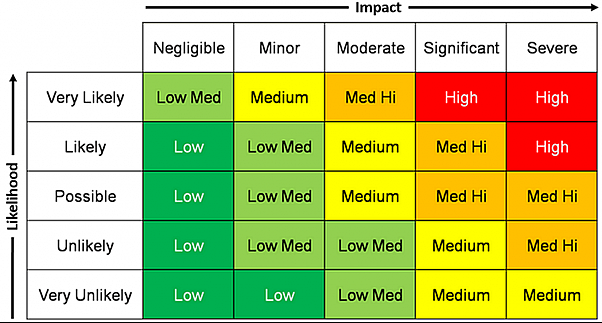
Source: ARMS Reliability
The Risk Matrix is a widely used tool for calculating risk levels in various industries and domains. It helps in assessing and prioritizing risks based on their likelihood and potential impact. The matrix is created by plotting the likelihood of an event occurring on one axis and the consequence or impact of that event on the other axis. The resulting matrix is divided into different risk levels or zones, each indicating the severity of the risk.
Here’s a step-by-step guide on how to calculate risk levels using the Risk Matrix:
1. Identify and define the risks: Begin by identifying and listing the potential risks associated with a particular project, activity, or situation. This could include events that may cause harm, financial loss, delays, or other negative impacts.
2. Determine likelihood: Assess the likelihood or probability of each identified risk occurring. This could be based on historical data, expert judgment, statistical analysis, or any other relevant information. It is common to assign a numerical value or a qualitative rating to represent the likelihood, such as low, medium, or high.
3. Determine consequence: Evaluate the potential consequences or impacts of each risk event. Consider both the immediate and long-term effects on various aspects, such as safety, financials, reputation, operations, and stakeholders. Similar to likelihood, consequences can be assigned numerical values or qualitative ratings, such as minor, moderate, or severe.
4. Create the Risk Matrix: Draw a matrix with the likelihood scale on one axis (e.g., low to high) and the consequence scale on the other axis (e.g., minor to severe). The matrix can be divided into different zones or risk levels based on the specific needs of the organization or project. The number of zones can vary, but a common approach is to have four levels: low risk, medium risk, high risk, and extreme risk.
5. Plot the risks: Plot each identified risk on the matrix based on its assigned likelihood and consequence ratings. This will help visualize the risk landscape and provide a clear understanding of each risk’s relative position within the matrix.
6. Determine risk levels: Once all the risks are plotted, analyze their positions in the matrix to determine their risk levels. The risk level is determined by the zone in which a risk is located. For example, if a risk falls in the “high risk” zone of the matrix, it is classified as a high-level risk. Similarly, a risk falling in the “low risk” zone would be considered a low-level risk.
7. Prioritize and respond: Based on the risk levels, prioritize your response strategies. Higher-level risks usually require more attention, mitigation efforts, and contingency planning. Lower-level risks may be monitored or addressed with less urgency.
8. Review and update: Regularly review and update the risk matrix as new information becomes available or as the project or situation evolves. Reassess the likelihood and consequence of risks to ensure the accuracy of their positions on the matrix.
Remember that the Risk Matrix is just one of several tools available for risk management. It provides a visual representation of risks but should be used in conjunction with other risk assessment techniques and frameworks to ensure a comprehensive understanding of the risks involved.
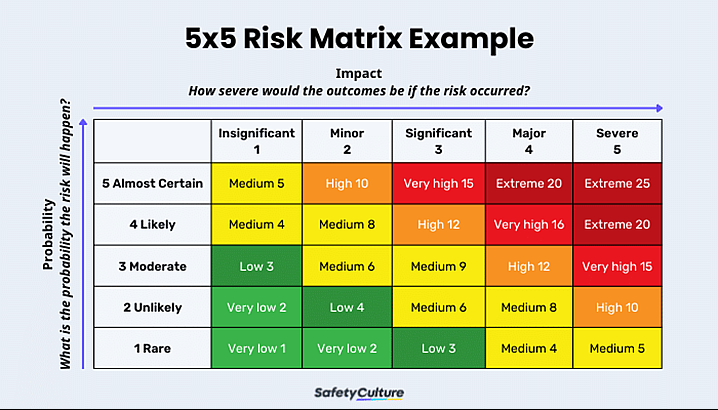
Which companies use the Risk Matrix?
The Risk Matrix is widely used by many well-known companies across various industries. It is a popular tool in risk management and helps organizations assess, prioritize, and communicate risks effectively. Here are a few examples of well-known companies that utilize the Risk Matrix:
• General Electric (GE): GE, a multinational conglomerate, employs the Risk Matrix as part of its risk management processes. The company uses the matrix to evaluate and prioritize risks across its diverse business segments, including aviation, healthcare, power, and renewable energy.
• Boeing: The aerospace giant Boeing utilizes the Risk Matrix to assess and manage risks associated with its aircraft manufacturing operations. It helps them evaluate potential risks to product quality, supply chain disruptions, regulatory compliance, and safety considerations.
• ExxonMobil: As one of the world’s largest oil and gas companies, ExxonMobil incorporates the Risk Matrix in its risk assessment and management practices. The matrix assists in evaluating and prioritizing risks related to operational safety, environmental impact, project execution, and market volatility.
• Procter & Gamble (P&G): P&G, a multinational consumer goods corporation, incorporates the Risk Matrix in its risk management framework. The matrix helps the company analyze risks across its various product categories, supply chain, market competition, and regulatory compliance.
• Toyota: The automotive manufacturer Toyota employs the Risk Matrix to assess and manage risks associated with its manufacturing processes, quality control, supply chain, and product safety. It enables the company to prioritize risks and allocate resources accordingly.
These are just a few examples, but the Risk Matrix is utilized by numerous other organizations, including those in the construction, pharmaceutical, financial services, and technology sectors. Its simplicity and effectiveness in visualizing risk levels make it a valuable tool for companies of all sizes and industries.
Recommended Remedies
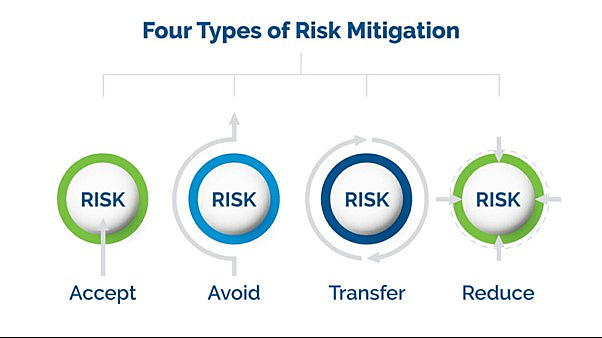
Source: MHA Consulting
Based on the use of the Risk Matrix for calculating risk levels, here are some recommended remedies and actions that organizations can take:
Risk Mitigation
For risks identified in higher-risk levels (such as high and extreme risk zones), organizations should focus on implementing risk mitigation strategies. These strategies aim to reduce the likelihood and/or impact of the identified risks. This may involve implementing safety protocols, improving security measures, conducting thorough quality control checks, or developing backup plans.
Risk Transfer
In some cases, it may be beneficial for organizations to transfer or share the risk with third parties. This can be done through insurance policies, contracts, or partnerships that allocate some of the risk to other parties who are better equipped to manage it. Transferring risk can help reduce the financial impact and provide a sense of security.
Risk Acceptance
For risks falling in lower-risk levels (such as low and medium risk zones), organizations may choose to accept the risks without additional mitigation measures. This decision should be made after a careful evaluation of the potential consequences and the organization’s risk appetite. Regular monitoring and reassessment are still necessary to ensure that risks do not escalate or change over time.
Risk Monitoring and Review
Regardless of the risk level, organizations should establish a system for continuous monitoring and review of risks. This includes keeping track of any changes in the likelihood or consequence of identified risks, as well as staying updated on emerging risks. Regular review and analysis of the Risk Matrix can help identify new risks, reassess existing risks, and adapt risk management strategies accordingly.
Contingency Planning
Organizations should develop contingency plans to address high-level and extreme risks. Contingency plans outline specific actions to be taken in the event of a risk materializing. These plans can include steps to minimize the impact, alternative approaches or resources, and clear communication protocols to inform stakeholders about the situation.
Employee Training and Awareness
Organizations should prioritize employee training and awareness programs to ensure that employees understand the risks and their roles in managing them. By fostering a risk-aware culture and providing the necessary knowledge and skills, organizations can empower employees to identify and respond to risks effectively.
It is important to note that the recommended remedies may vary depending on the nature of the risks, industry-specific regulations, and organizational requirements. Organizations should tailor their risk management strategies to their specific circumstances and seek professional advice when necessary.

Case Study: Failure to Manage Risk
One notable example of a company that faced significant challenges in risk management is the Deepwater Horizon oil spill, which occurred in 2010. The incident involved the drilling rig Deepwater Horizon, owned by Transocean and leased to British Petroleum (BP), operating in the Gulf of Mexico.
In this case, multiple failures in risk management contributed to the disaster. Here are some key aspects of the incident:
1. Lack of Safety Measures: The incident revealed shortcomings in safety measures and practices. Several warning signs and alarms on the rig were reportedly ignored or misunderstood, indicating potential issues with the drilling operation. These signs included abnormal pressure readings and gas emissions, which were indicators of an impending blowout.
2. Inadequate Contingency Plans: The companies involved did not have adequate contingency plans in place to handle a blowout of such magnitude. When the blowout occurred, the subsequent failure of the blowout preventer—a device designed to shut off the well—compounded the situation and led to the uncontrolled release of oil into the ocean.
3. Insufficient Risk Assessments: Prior risk assessments and evaluations failed to adequately identify and address the potential risks associated with the drilling operation. The risks of a blowout and the potential environmental impact were underestimated, leading to inadequate preventive measures and response plans.
4. Regulatory Compliance Issues: There were also concerns about regulatory compliance and oversight. It was discovered that some safety inspections and maintenance procedures were not conducted or documented correctly, indicating lapses in regulatory compliance and oversight by both the companies involved and regulatory bodies.
5. Reputational and Financial Consequences: The Deepwater Horizon oil spill had severe consequences for BP, Transocean, and other parties involved. The environmental impact was extensive, with millions of barrels of oil being released into the Gulf of Mexico, causing significant damage to marine ecosystems and coastal areas. The incident resulted in massive financial liabilities, legal settlements, damage to BP’s reputation, and a decline in share prices.
This case serves as a stark reminder of the importance of robust risk management practices and the need for effective preventive measures, contingency plans, and regulatory compliance. It also highlights the potential far-reaching consequences when risk management failures occur, including environmental damage, financial losses, legal repercussions, and reputational harm.

Exercise 1.12: Identifying and Managing Risk in Your Company
1. Divide participants into 2 groups.
2. Provide each group with flip charts or paper and markers for note-taking.
3. Ask participants to discuss the following questions within their groups and write down their key points:
a. How does your company currently identify and assess risks? Are there specific methodologies, tools, or processes in place?
b. What are the main sources or channels for capturing and gathering information about potential risks within your organization? Examples may include risk registers, incident reports, customer feedback, internal audits, etc.
c. How are risks categorized or prioritized within your company? Are there specific risk levels or criteria used to determine the severity or importance of risks?
d. What steps does your company take to mitigate or manage identified risks? Are there specific risk mitigation strategies, controls, or action plans implemented?
e. How does your organization monitor and review risks over time? Are there regular risk assessments, performance indicators, or reporting mechanisms in place?
f. Are there any notable examples of successful risk management within your company? What factors contributed to their success?
g. Are there any challenges or areas for improvement in your company’s risk identification and management practices? How are these addressed or mitigated?
4. Allocate around 20-30 minutes for group discussions.
5. Once the time is up, reconvene the larger group and invite representatives from each group to share their key findings and insights. Encourage open discussion and exchange of ideas.
6. Facilitate a group dialogue to explore common themes, differences, and potential best practices in risk identification and management across various companies.
7. Summarize the key takeaways and lessons learned from the discussion.
8. Conclude the exercise by highlighting the importance of effective risk management and the potential benefits of sharing knowledge and experiences in this area.
Project Studies
Project Study (Part 1) – Customer Service
The Head of this Department is to provide a detailed report relating to the Customer Needs process that has been implemented within their department, together with all key stakeholders, as a result of conducting this workshop, incorporating process: planning; development; implementation; management; and review. Your process should feature the following 12 parts:
01. Traditional Business Consumption of Technology
02. Modern Business and Technology Consumption – The Need for Agility
03. Modern Business and Technology Consumption – The New Sales Cycle
04. Innovation
05. An Architectural Approach to Technology
06. Vision and Mission
07. The Business Model Canvas
08. Customer Requirement – The Challenge
09. Customer Requirement – The Response
10. Outcomes
11. Objectives
12. Managing Risk
Please include the results of the initial evaluation and assessment.
Project Study (Part 2) – E-Business
The Head of this Department is to provide a detailed report relating to the Customer Needs process that has been implemented within their department, together with all key stakeholders, as a result of conducting this workshop, incorporating process: planning; development; implementation; management; and review. Your process should feature the following 12 parts:
01. Traditional Business Consumption of Technology
02. Modern Business and Technology Consumption – The Need for Agility
03. Modern Business and Technology Consumption – The New Sales Cycle
04. Innovation
05. An Architectural Approach to Technology
06. Vision and Mission
07. The Business Model Canvas
08. Customer Requirement – The Challenge
09. Customer Requirement – The Response
10. Outcomes
11. Objectives
12. Managing Risk
Please include the results of the initial evaluation and assessment.
Project Study (Part 3) – Finance
The Head of this Department is to provide a detailed report relating to the Customer Needs process that has been implemented within their department, together with all key stakeholders, as a result of conducting this workshop, incorporating process: planning; development; implementation; management; and review. Your process should feature the following 12 parts:
01. Traditional Business Consumption of Technology
02. Modern Business and Technology Consumption – The Need for Agility
03. Modern Business and Technology Consumption – The New Sales Cycle
04. Innovation
05. An Architectural Approach to Technology
06. Vision and Mission
07. The Business Model Canvas
08. Customer Requirement – The Challenge
09. Customer Requirement – The Response
10. Outcomes
11. Objectives
12. Managing Risk
Please include the results of the initial evaluation and assessment.
Project Study (Part 4) – Globalization
The Head of this Department is to provide a detailed report relating to the Customer Needs process that has been implemented within their department, together with all key stakeholders, as a result of conducting this workshop, incorporating process: planning; development; implementation; management; and review. Your process should feature the following 12 parts:
01. Traditional Business Consumption of Technology
02. Modern Business and Technology Consumption – The Need for Agility
03. Modern Business and Technology Consumption – The New Sales Cycle
04. Innovation
05. An Architectural Approach to Technology
06. Vision and Mission
07. The Business Model Canvas
08. Customer Requirement – The Challenge
09. Customer Requirement – The Response
10. Outcomes
11. Objectives
12. Managing Risk
Please include the results of the initial evaluation and assessment.
Project Study (Part 5) – Human Resources
The Head of this Department is to provide a detailed report relating to the Customer Needs process that has been implemented within their department, together with all key stakeholders, as a result of conducting this workshop, incorporating process: planning; development; implementation; management; and review. Your process should feature the following 12 parts:
01. Traditional Business Consumption of Technology
02. Modern Business and Technology Consumption – The Need for Agility
03. Modern Business and Technology Consumption – The New Sales Cycle
04. Innovation
05. An Architectural Approach to Technology
06. Vision and Mission
07. The Business Model Canvas
08. Customer Requirement – The Challenge
09. Customer Requirement – The Response
10. Outcomes
11. Objectives
12. Managing Risk
Please include the results of the initial evaluation and assessment.
Project Study (Part 6) – Information Technology
The Head of this Department is to provide a detailed report relating to the Customer Needs process that has been implemented within their department, together with all key stakeholders, as a result of conducting this workshop, incorporating process: planning; development; implementation; management; and review. Your process should feature the following 12 parts:
01. Traditional Business Consumption of Technology
02. Modern Business and Technology Consumption – The Need for Agility
03. Modern Business and Technology Consumption – The New Sales Cycle
04. Innovation
05. An Architectural Approach to Technology
06. Vision and Mission
07. The Business Model Canvas
08. Customer Requirement – The Challenge
09. Customer Requirement – The Response
10. Outcomes
11. Objectives
12. Managing Risk
Please include the results of the initial evaluation and assessment.
Project Study (Part 7) – Legal
The Head of this Department is to provide a detailed report relating to the Customer Needs process that has been implemented within their department, together with all key stakeholders, as a result of conducting this workshop, incorporating process: planning; development; implementation; management; and review. Your process should feature the following 12 parts:
01. Traditional Business Consumption of Technology
02. Modern Business and Technology Consumption – The Need for Agility
03. Modern Business and Technology Consumption – The New Sales Cycle
04. Innovation
05. An Architectural Approach to Technology
06. Vision and Mission
07. The Business Model Canvas
08. Customer Requirement – The Challenge
09. Customer Requirement – The Response
10. Outcomes
11. Objectives
12. Managing Risk
Please include the results of the initial evaluation and assessment.
Project Study (Part 8) – Management
The Head of this Department is to provide a detailed report relating to the Customer Needs process that has been implemented within their department, together with all key stakeholders, as a result of conducting this workshop, incorporating process: planning; development; implementation; management; and review. Your process should feature the following 12 parts:
01. Traditional Business Consumption of Technology
02. Modern Business and Technology Consumption – The Need for Agility
03. Modern Business and Technology Consumption – The New Sales Cycle
04. Innovation
05. An Architectural Approach to Technology
06. Vision and Mission
07. The Business Model Canvas
08. Customer Requirement – The Challenge
09. Customer Requirement – The Response
10. Outcomes
11. Objectives
12. Managing Risk
Please include the results of the initial evaluation and assessment.

Project Study (Part 9) – Marketing
The Head of this Department is to provide a detailed report relating to the Customer Needs process that has been implemented within their department, together with all key stakeholders, as a result of conducting this workshop, incorporating process: planning; development; implementation; management; and review. Your process should feature the following 12 parts:
01. Traditional Business Consumption of Technology
02. Modern Business and Technology Consumption – The Need for Agility
03. Modern Business and Technology Consumption – The New Sales Cycle
04. Innovation
05. An Architectural Approach to Technology
06. Vision and Mission
07. The Business Model Canvas
08. Customer Requirement – The Challenge
09. Customer Requirement – The Response
10. Outcomes
11. Objectives
12. Managing Risk
Please include the results of the initial evaluation and assessment.

Project Study (Part 10) – Production
The Head of this Department is to provide a detailed report relating to the Customer Needs process that has been implemented within their department, together with all key stakeholders, as a result of conducting this workshop, incorporating process: planning; development; implementation; management; and review. Your process should feature the following 12 parts:
01. Traditional Business Consumption of Technology
02. Modern Business and Technology Consumption – The Need for Agility
03. Modern Business and Technology Consumption – The New Sales Cycle
04. Innovation
05. An Architectural Approach to Technology
06. Vision and Mission
07. The Business Model Canvas
08. Customer Requirement – The Challenge
09. Customer Requirement – The Response
10. Outcomes
11. Objectives
12. Managing Risk
Please include the results of the initial evaluation and assessment.

Project Study (Part 11) – Logistics
The Head of this Department is to provide a detailed report relating to the Customer Needs process that has been implemented within their department, together with all key stakeholders, as a result of conducting this workshop, incorporating process: planning; development; implementation; management; and review. Your process should feature the following 12 parts:
01. Traditional Business Consumption of Technology
02. Modern Business and Technology Consumption – The Need for Agility
03. Modern Business and Technology Consumption – The New Sales Cycle
04. Innovation
05. An Architectural Approach to Technology
06. Vision and Mission
07. The Business Model Canvas
08. Customer Requirement – The Challenge
09. Customer Requirement – The Response
10. Outcomes
11. Objectives
12. Managing Risk
Please include the results of the initial evaluation and assessment.

Project Study (Part 12) – Education
The Head of this Department is to provide a detailed report relating to the Customer Needs process that has been implemented within their department, together with all key stakeholders, as a result of conducting this workshop, incorporating process: planning; development; implementation; management; and review. Your process should feature the following 12 parts:
01. Traditional Business Consumption of Technology
02. Modern Business and Technology Consumption – The Need for Agility
03. Modern Business and Technology Consumption – The New Sales Cycle
04. Innovation
05. An Architectural Approach to Technology
06. Vision and Mission
07. The Business Model Canvas
08. Customer Requirement – The Challenge
09. Customer Requirement – The Response
10. Outcomes
11. Objectives
12. Managing Risk
Please include the results of the initial evaluation and assessment.
Program Benefits
Marketing
- Testimonials/case studies
- Referral programs
- User-generated content
- Segmentation insights
- Messaging/positioning
- Upselling/cross-selling
- Feedback for strategy
- Renewal/retention
- Content insights
- Customer acquisition
Operations
- Customer feedback
- Process optimization
- Support enhancement
- Data-driven decisions
- Product improvement
- Efficient onboarding
- Proactive resolution
- Cross-functional collaboration
- Scalability/growth
- Feedback loop
Finance
- Increased revenue
- Predictable cash flow
- Upsell opportunities
- Improved CLV
- Lower acquisition cost
- Higher margins
- Enhanced cash flow
- Pricing optimization
- Risk mitigation
- Improved metrics
Client Telephone Conference (CTC)
If you have any questions or if you would like to arrange a Client Telephone Conference (CTC) to discuss this particular Unique Consulting Service Proposition (UCSP) in more detail, please CLICK HERE.




















